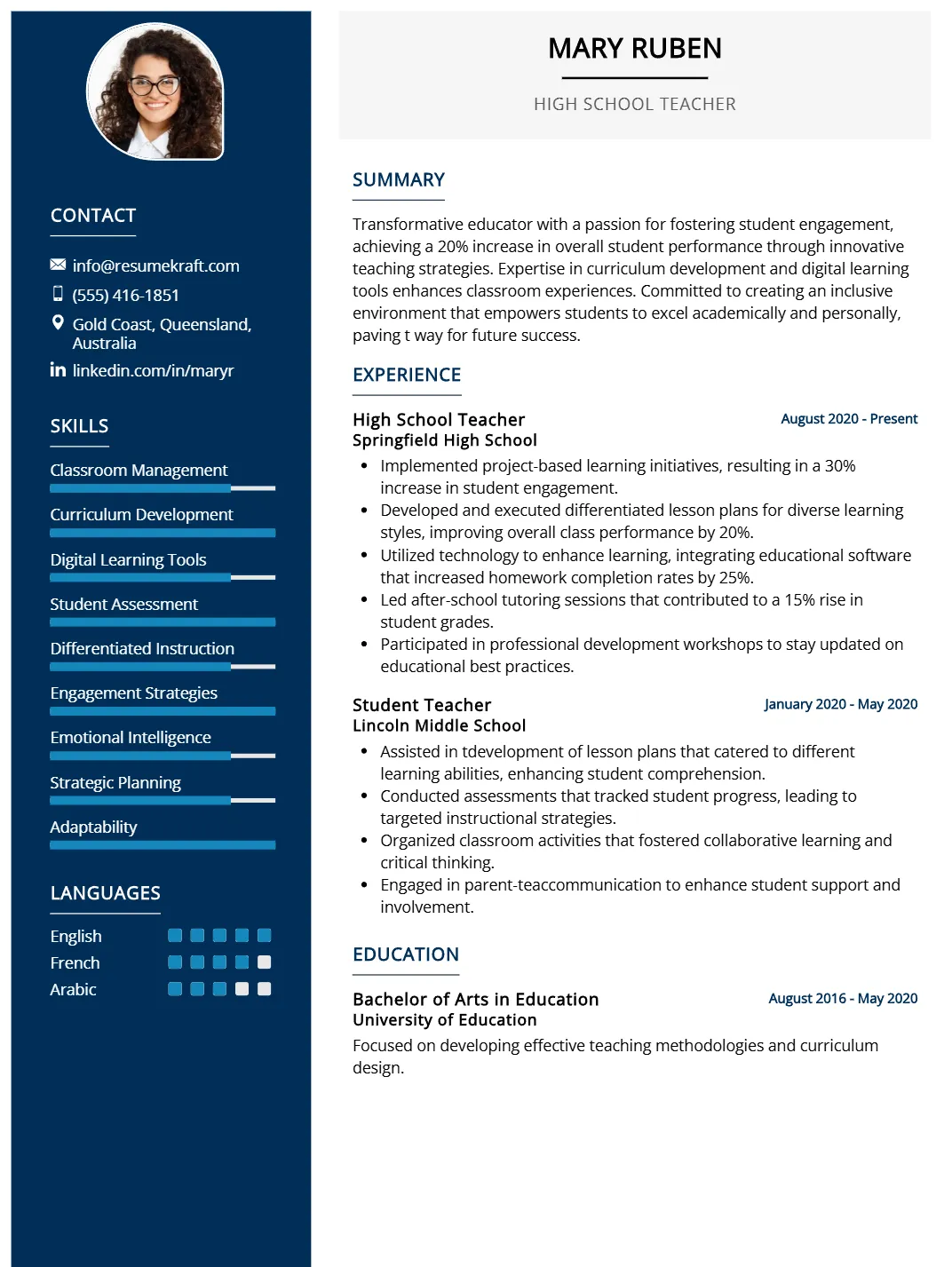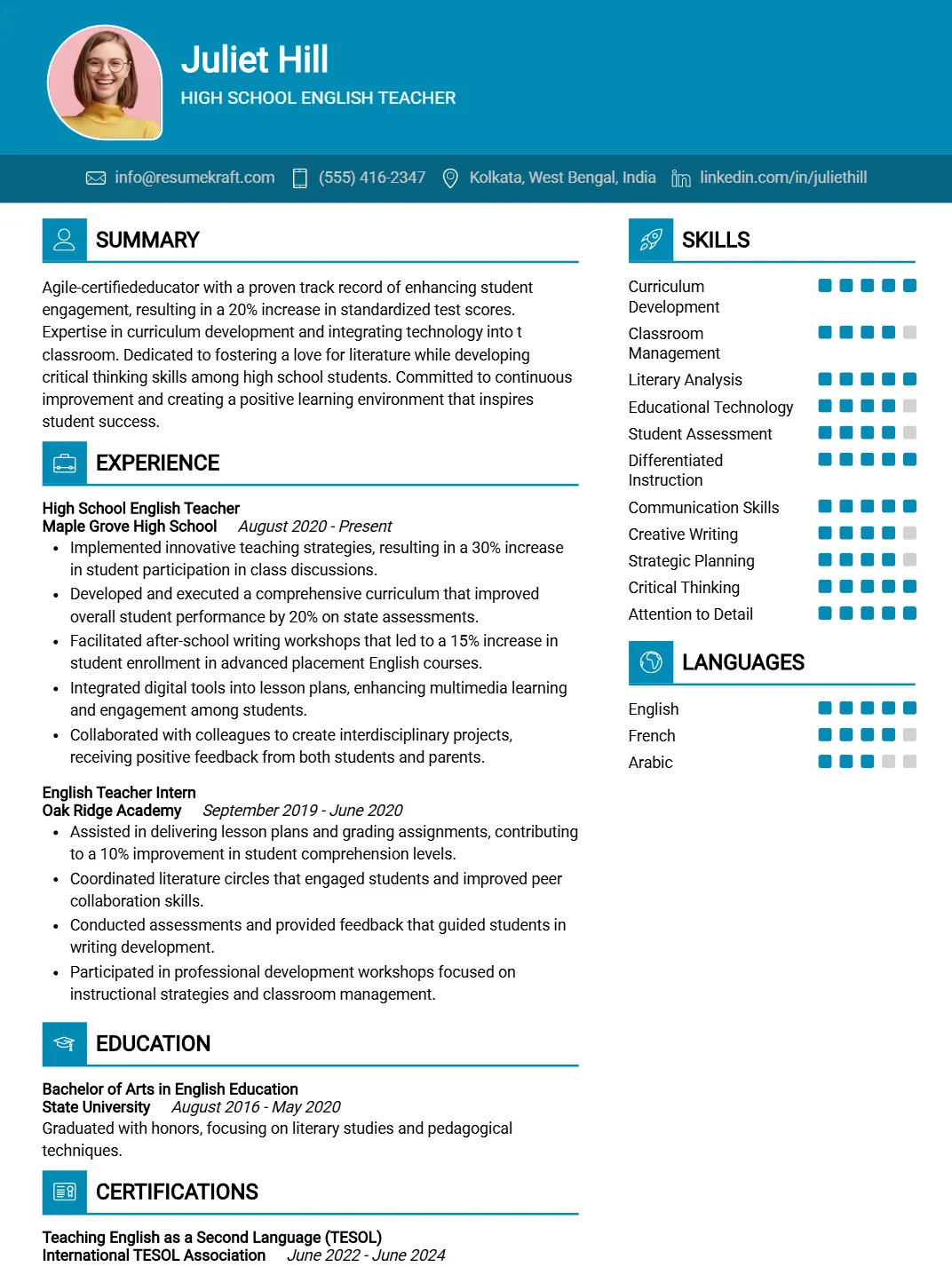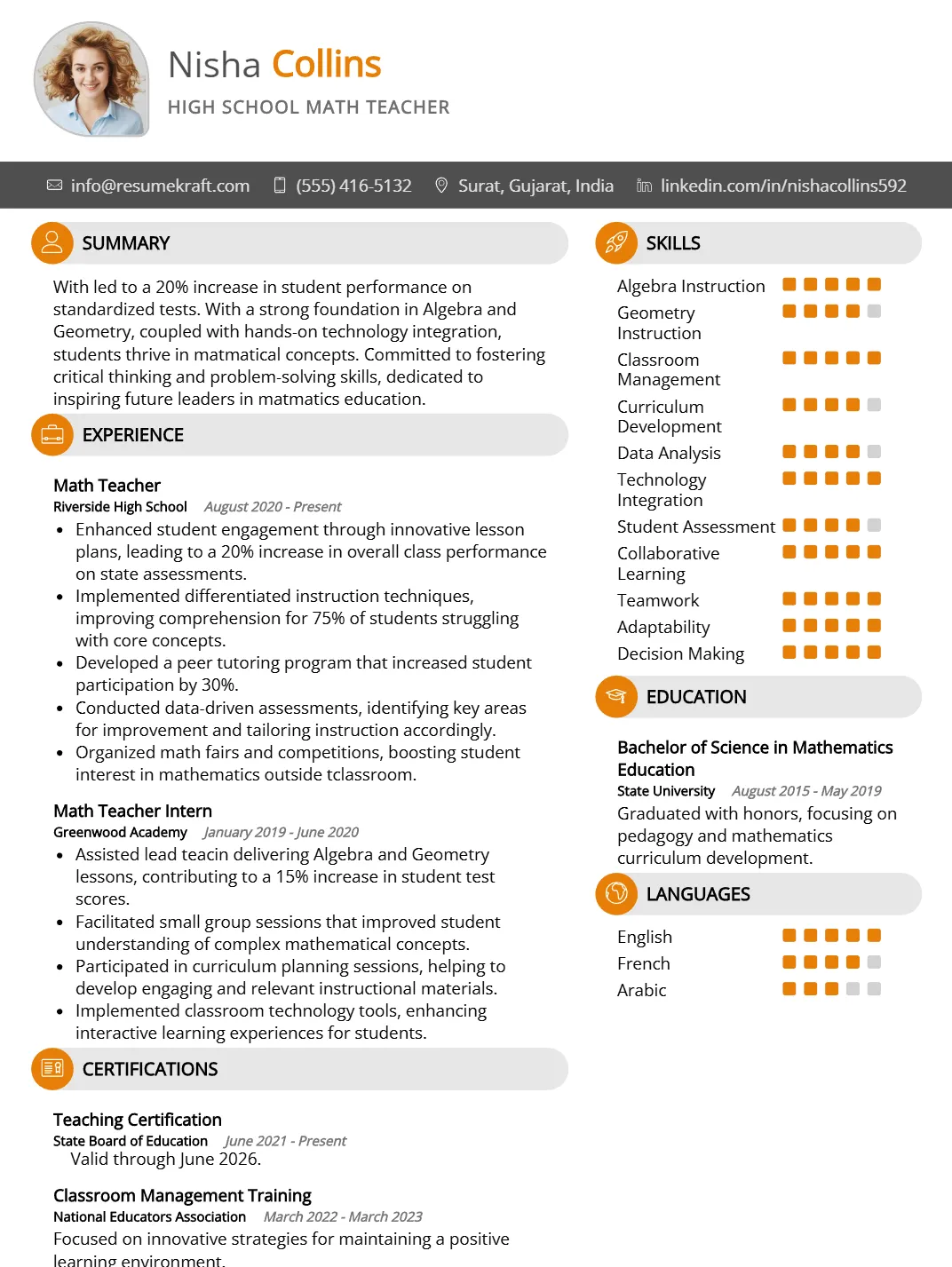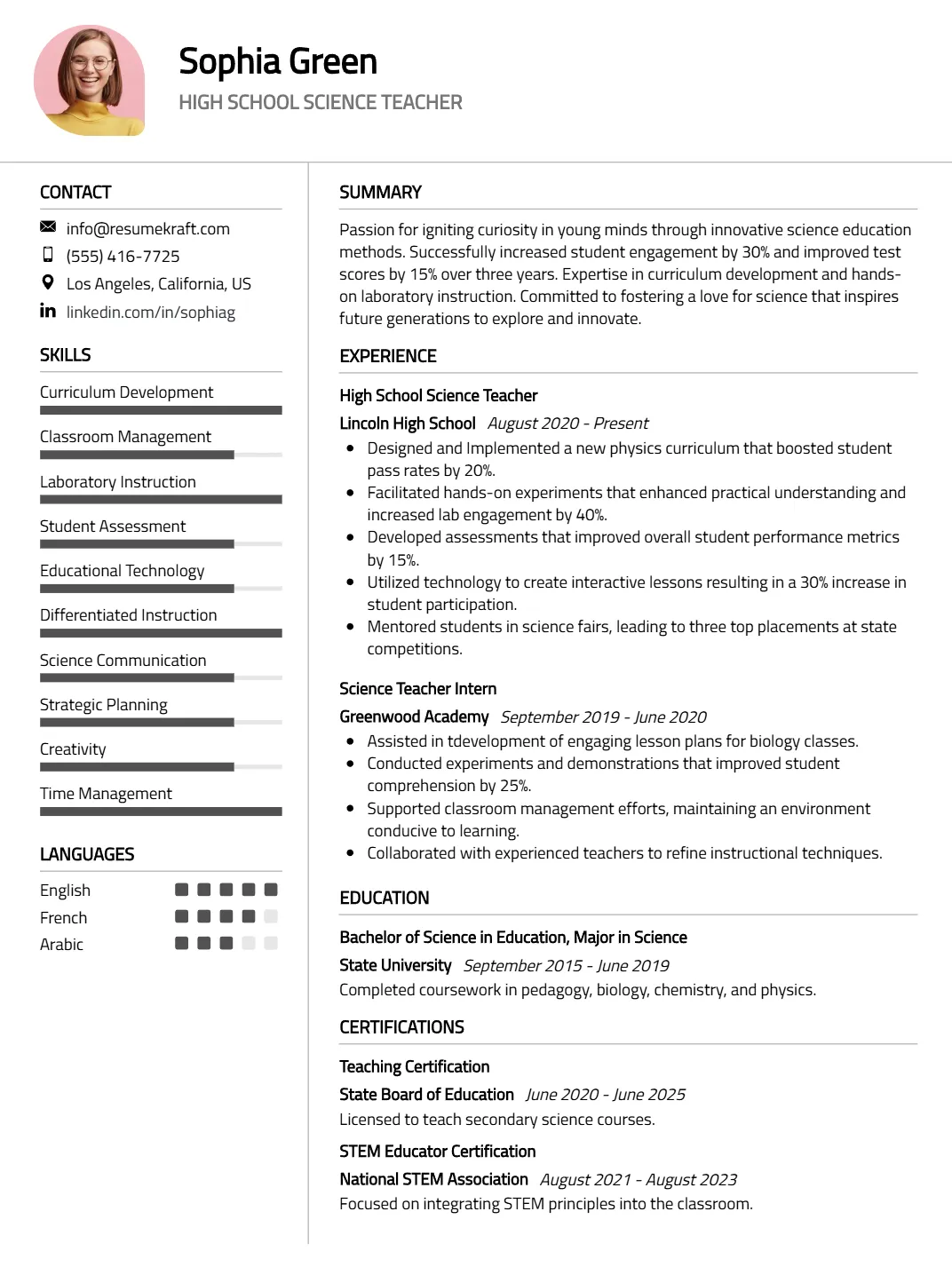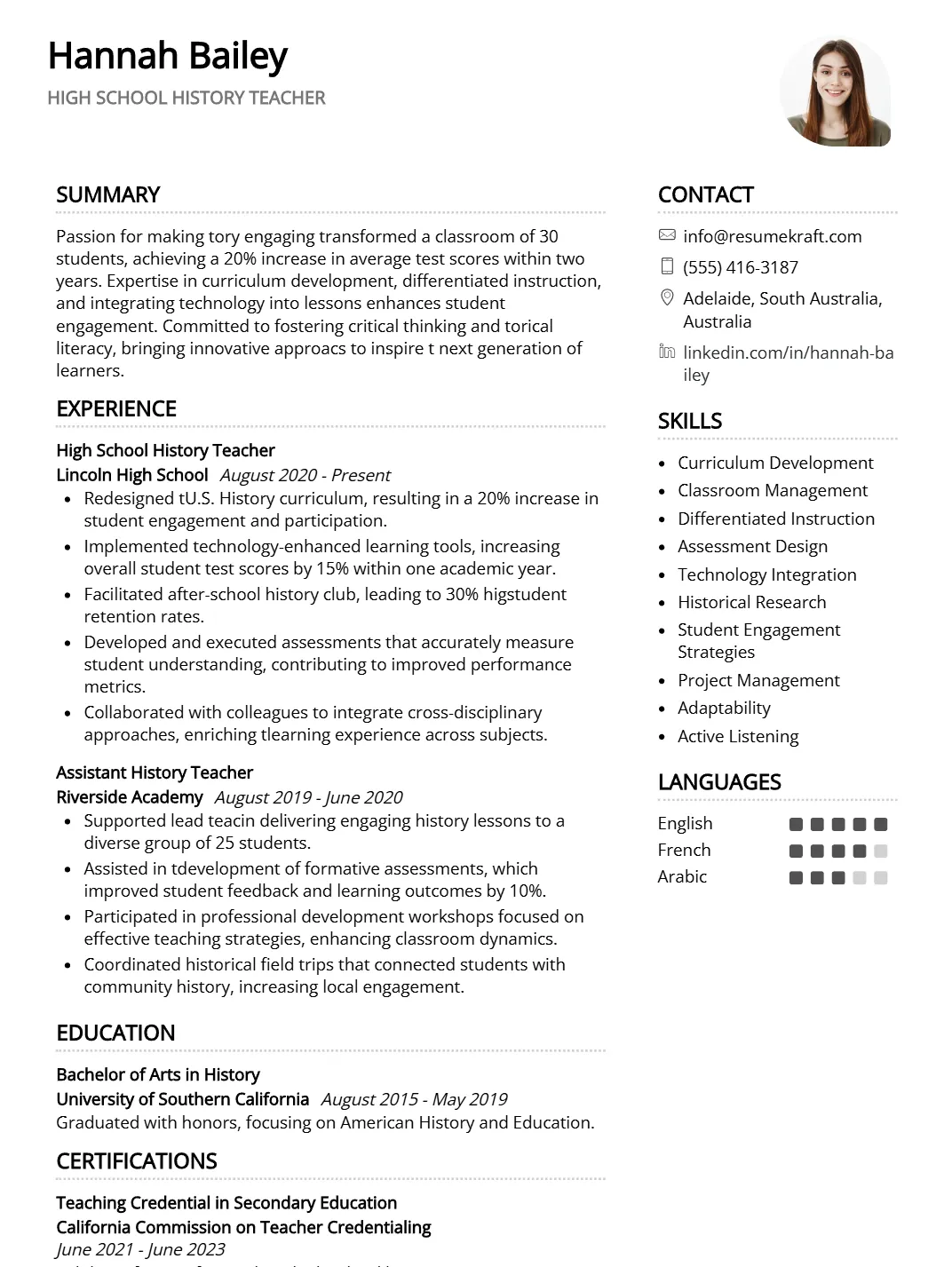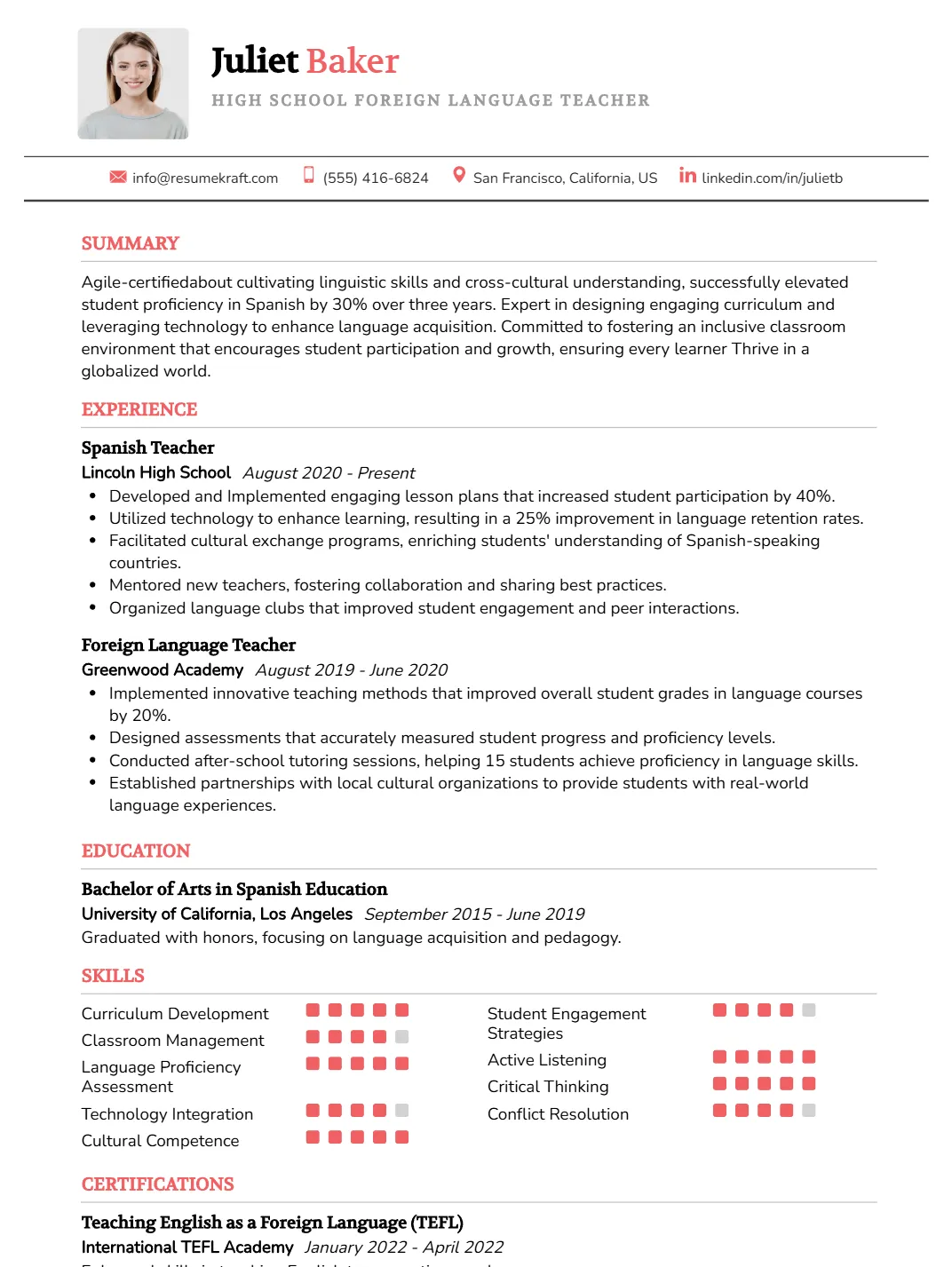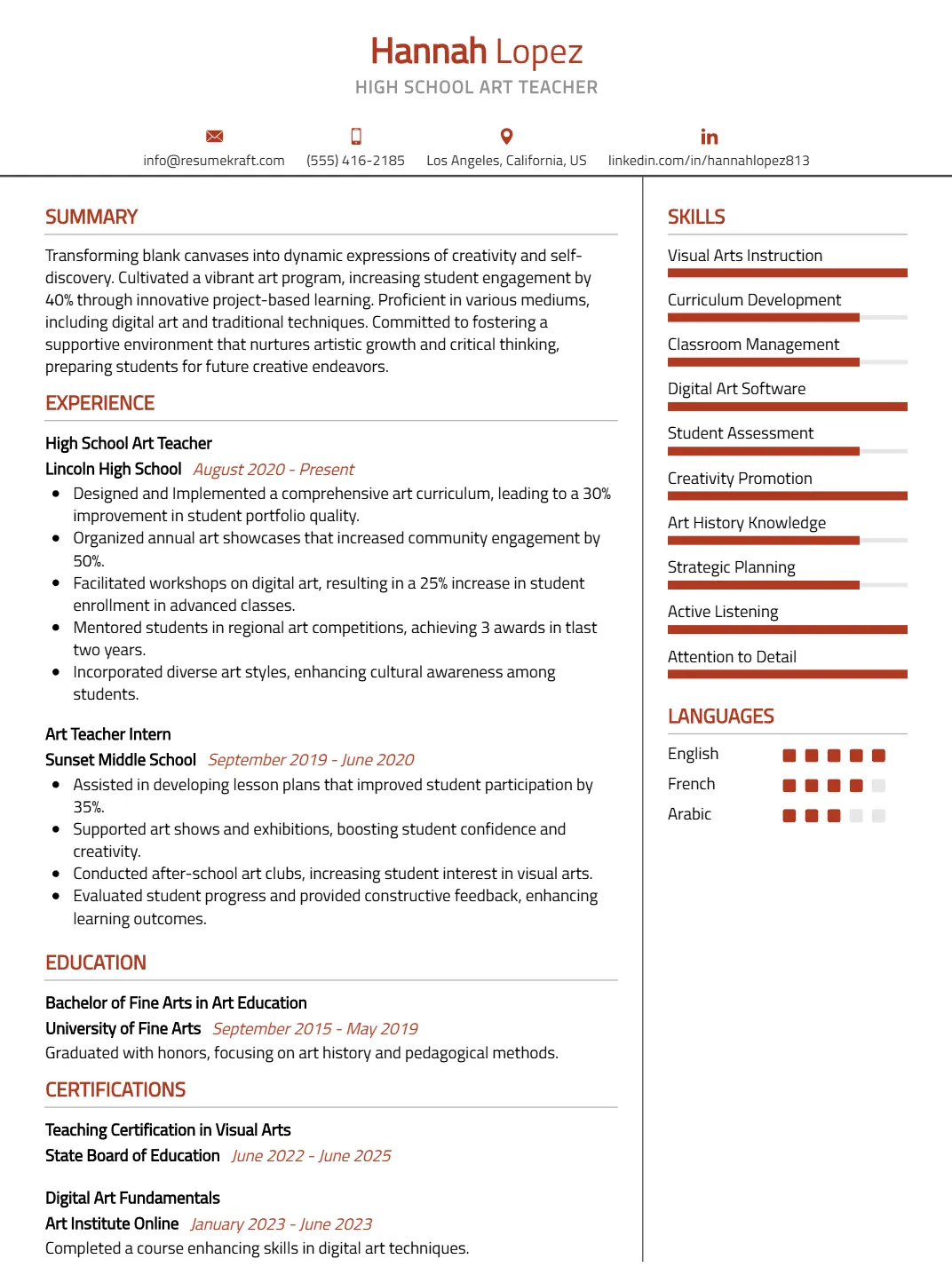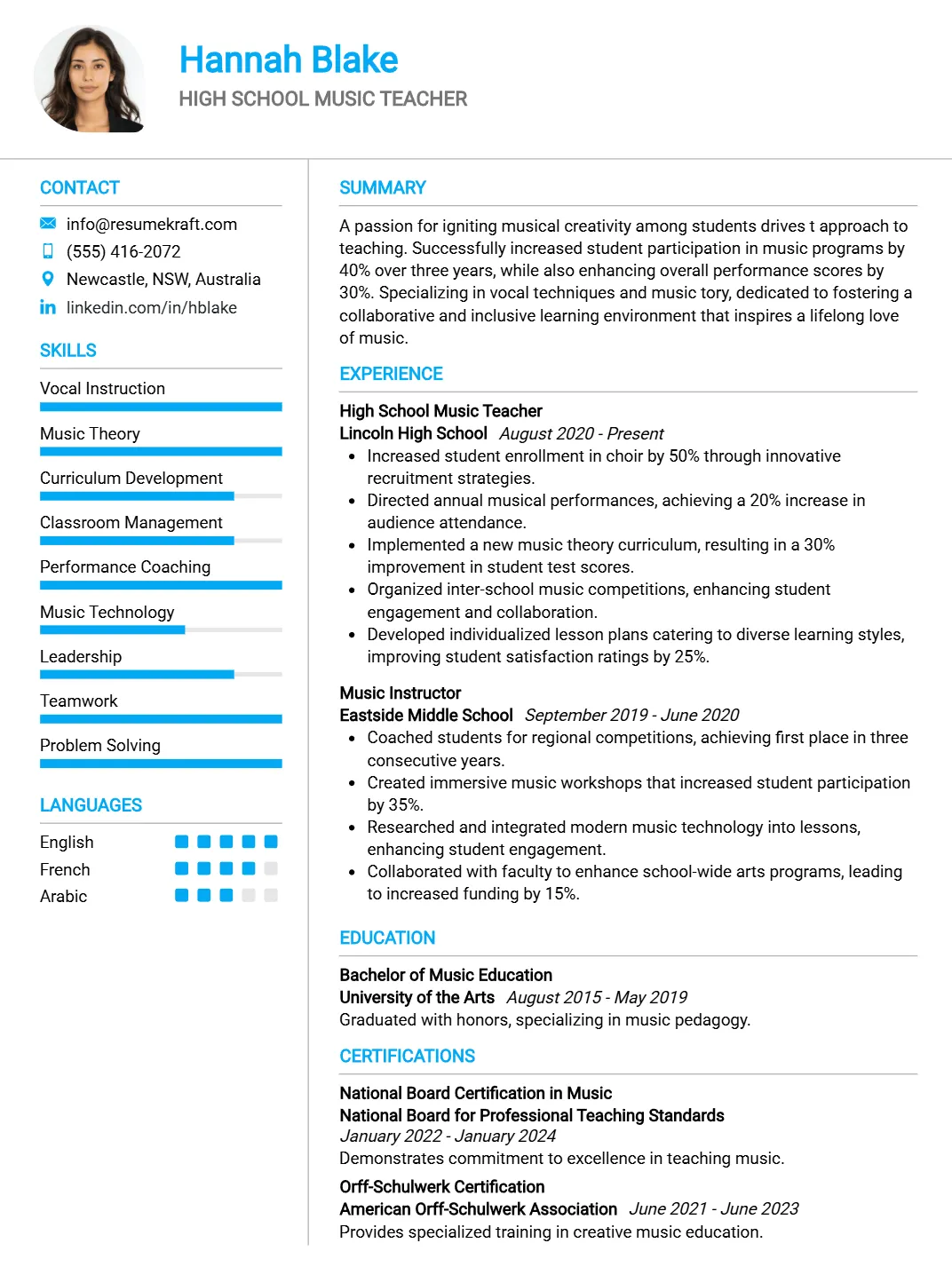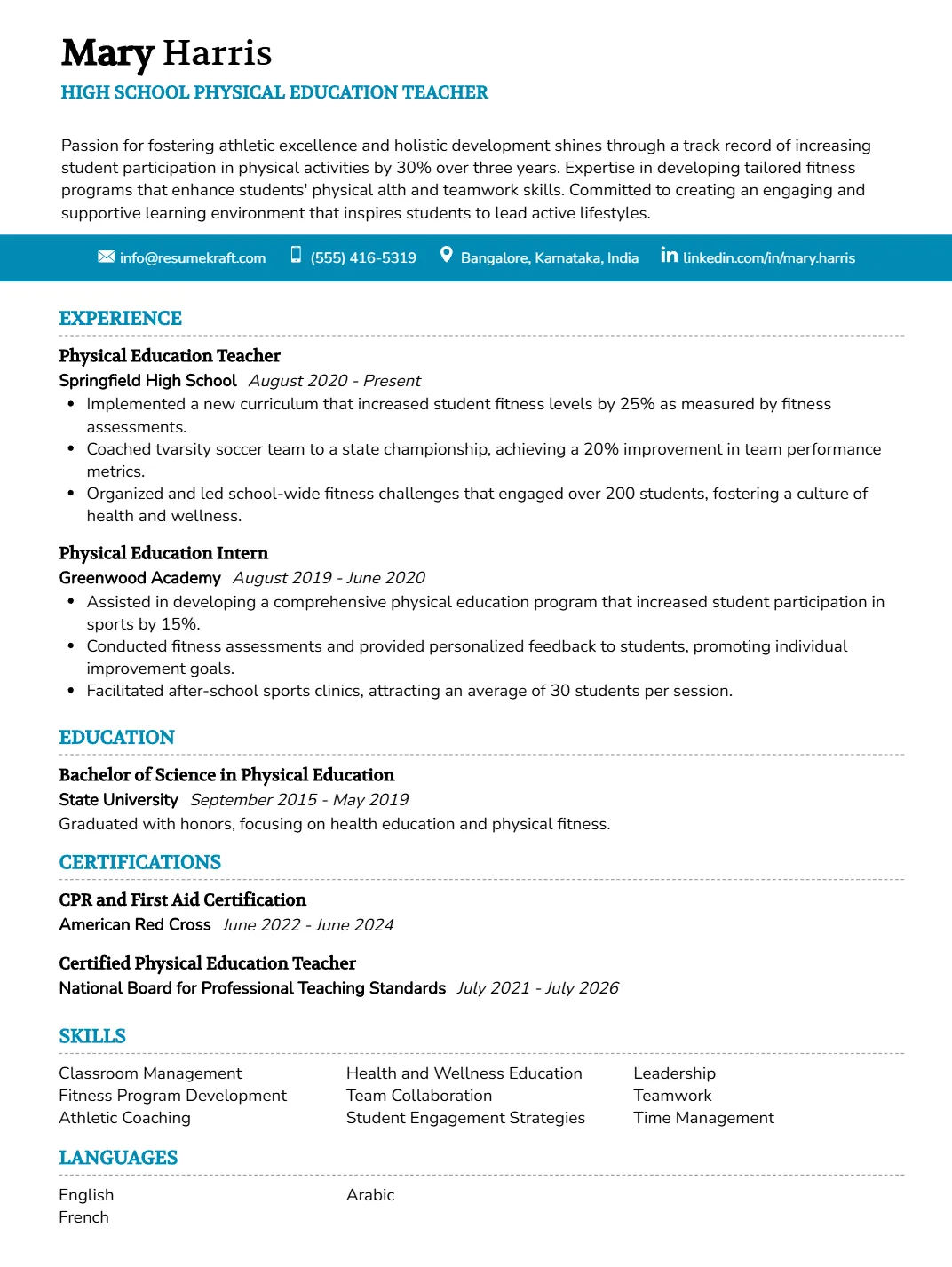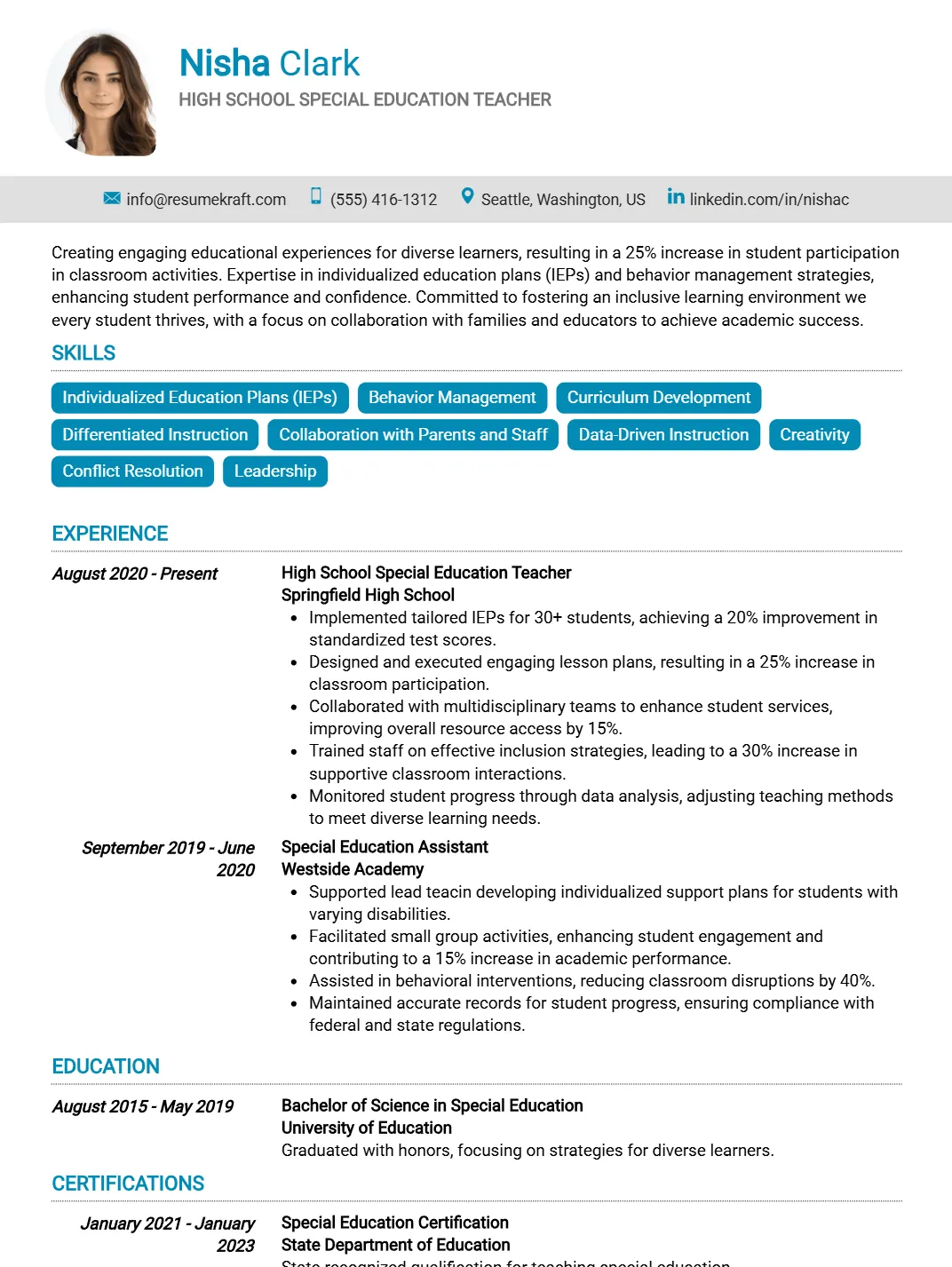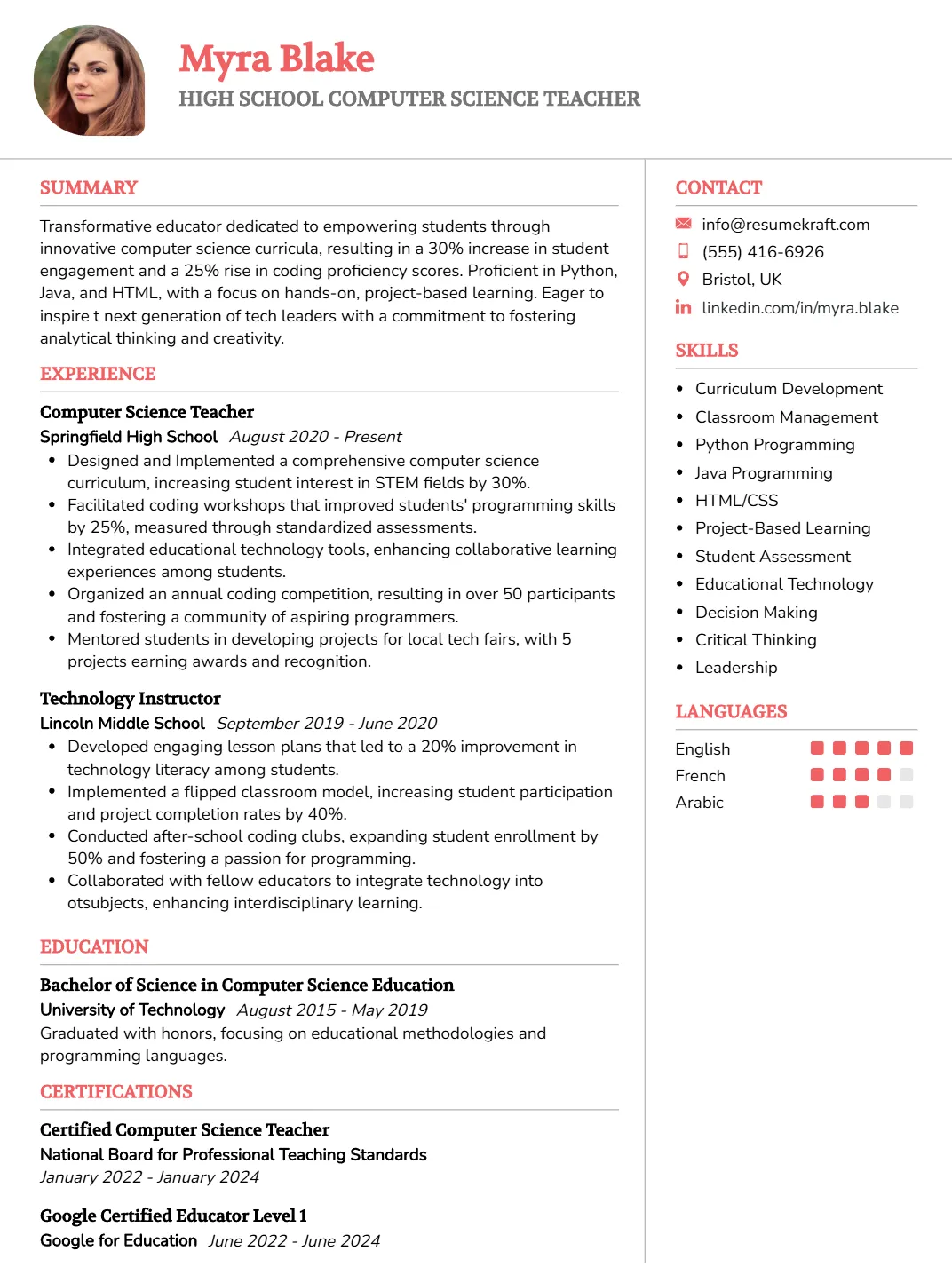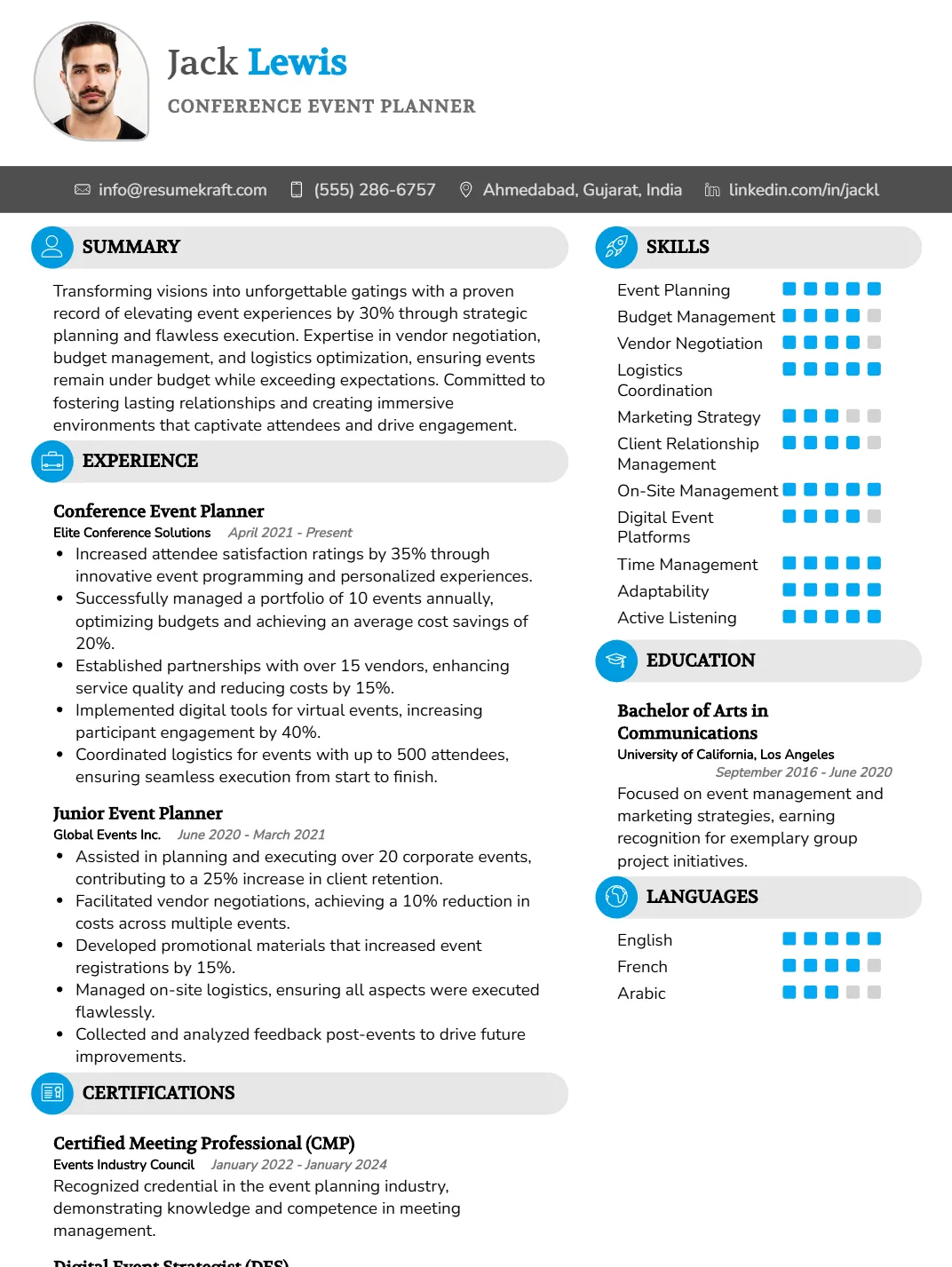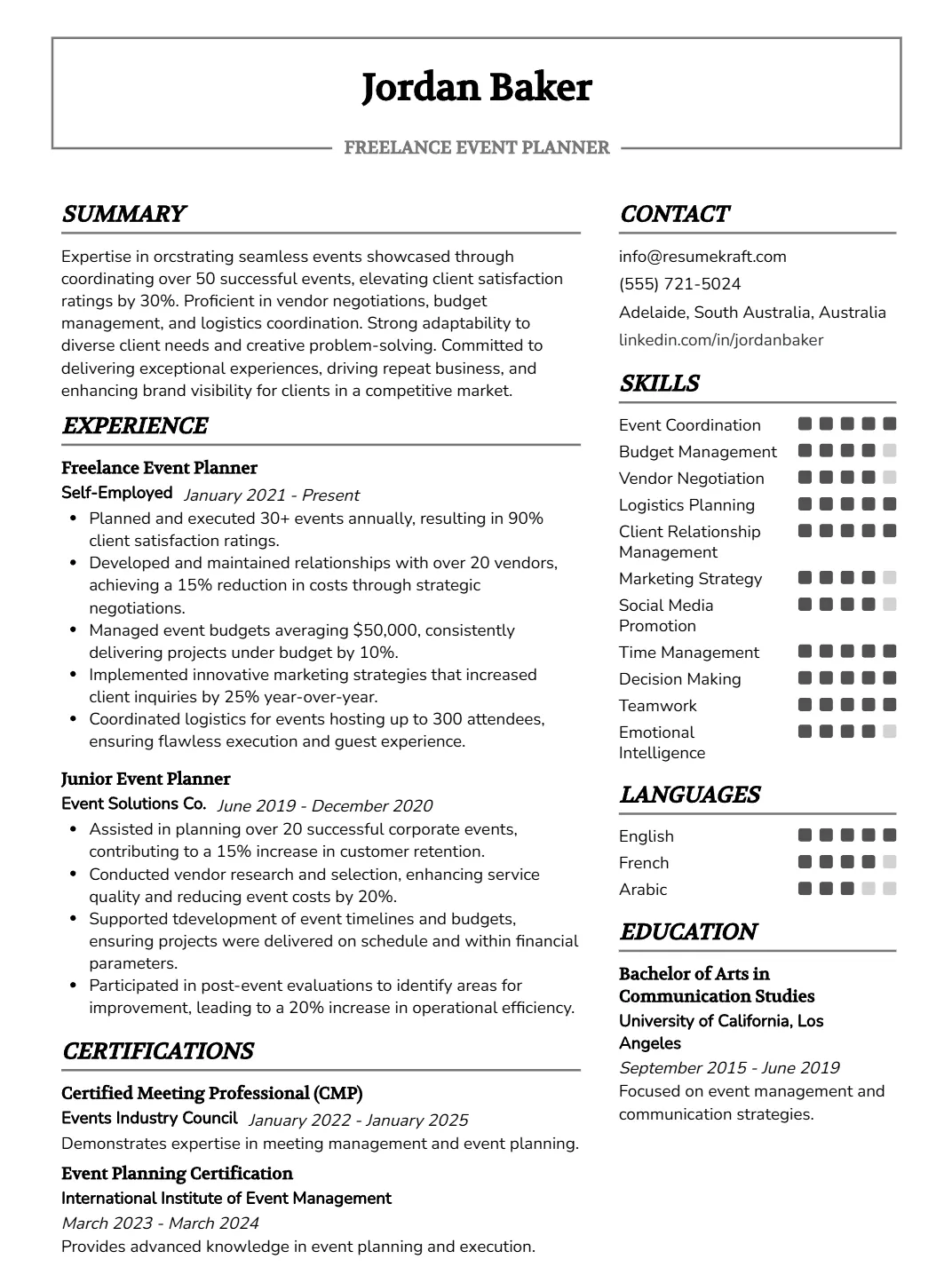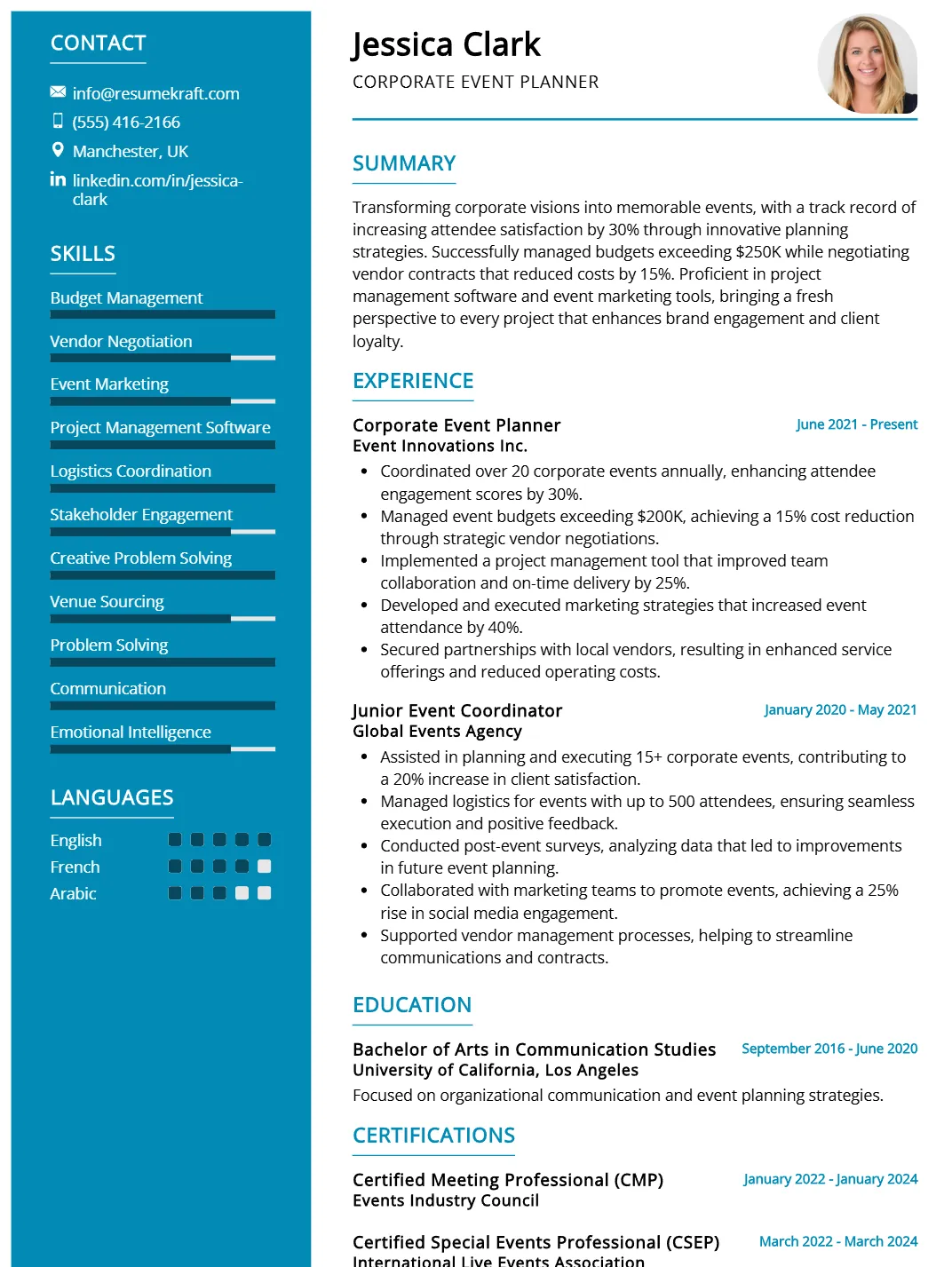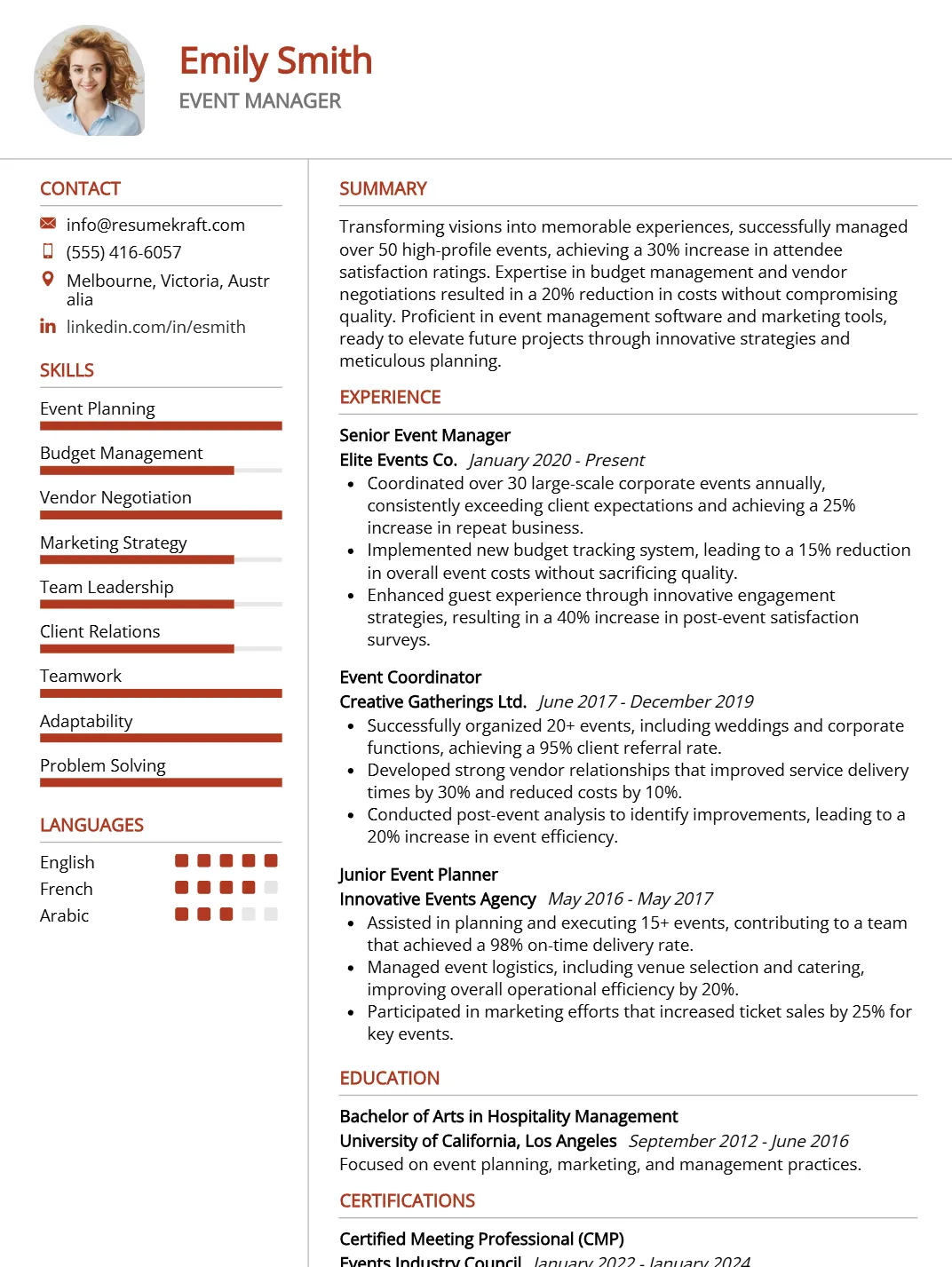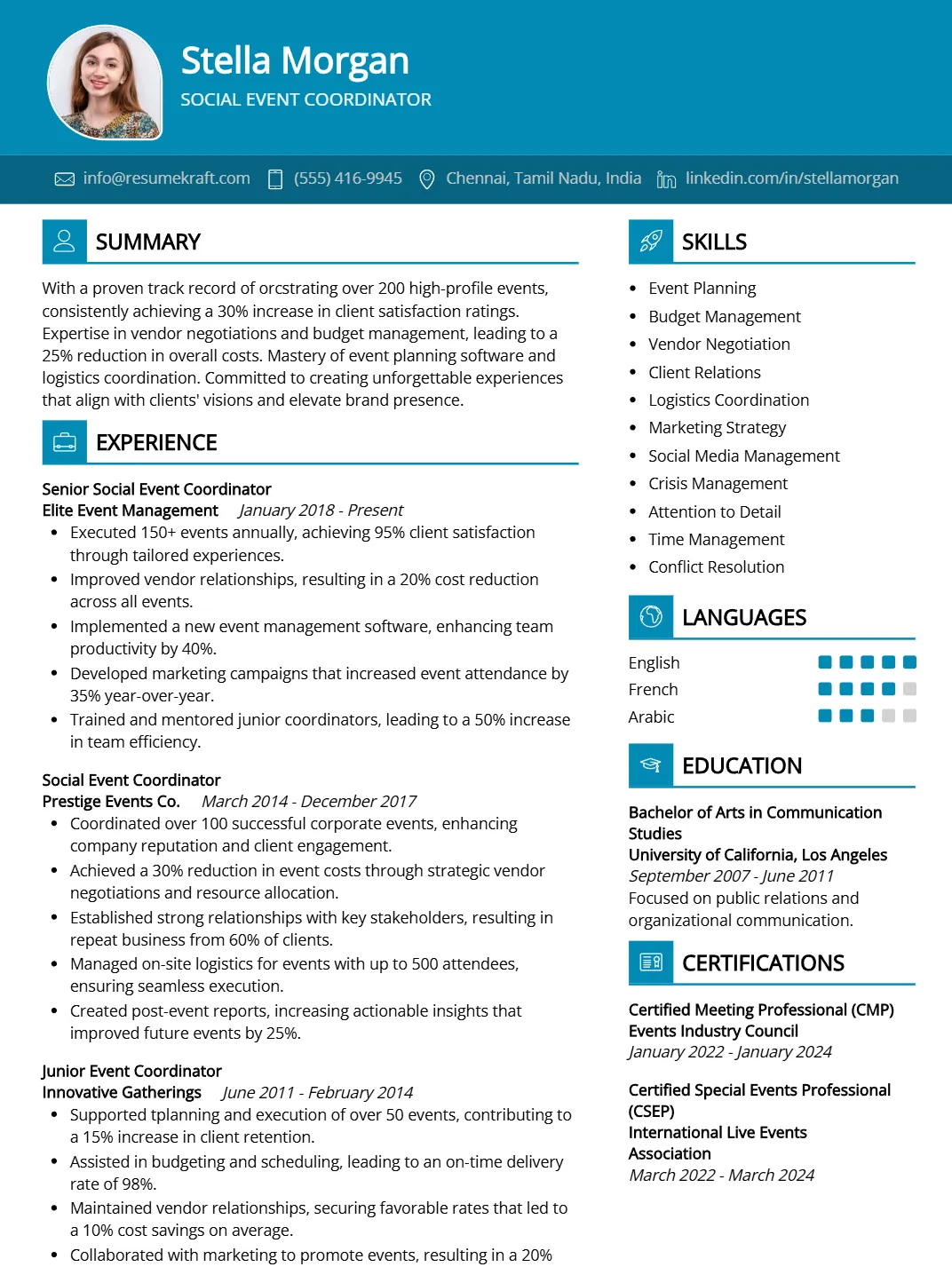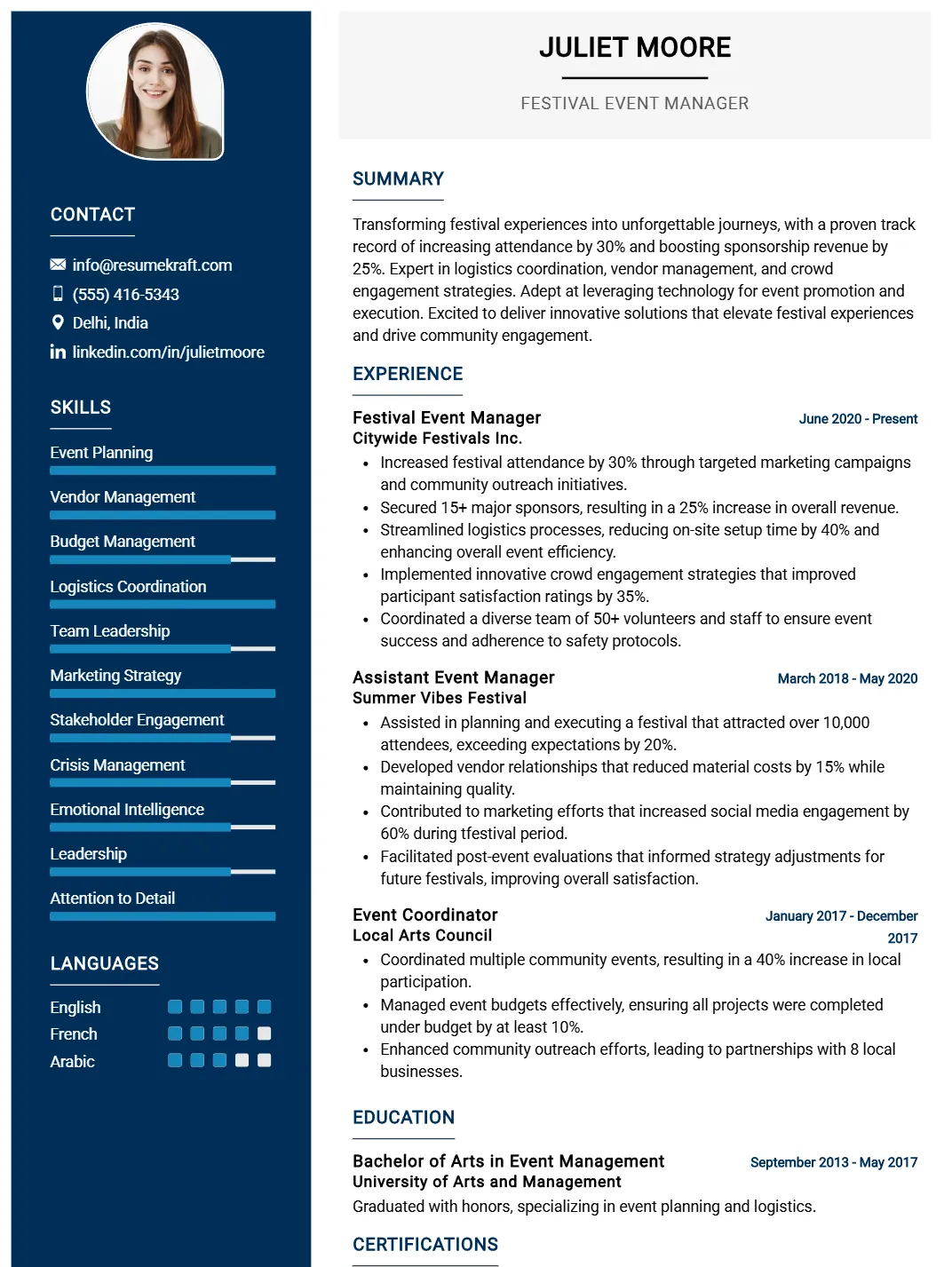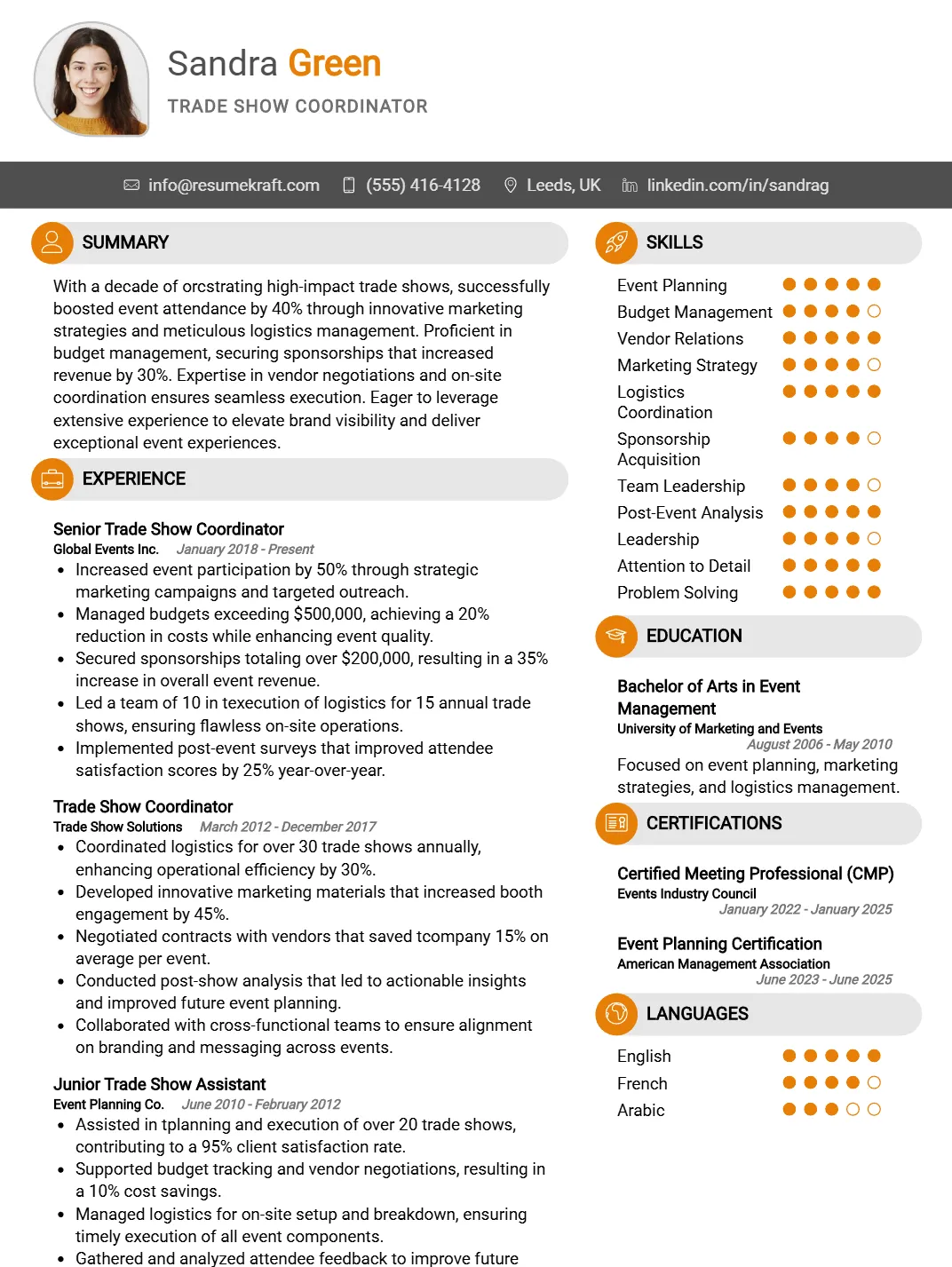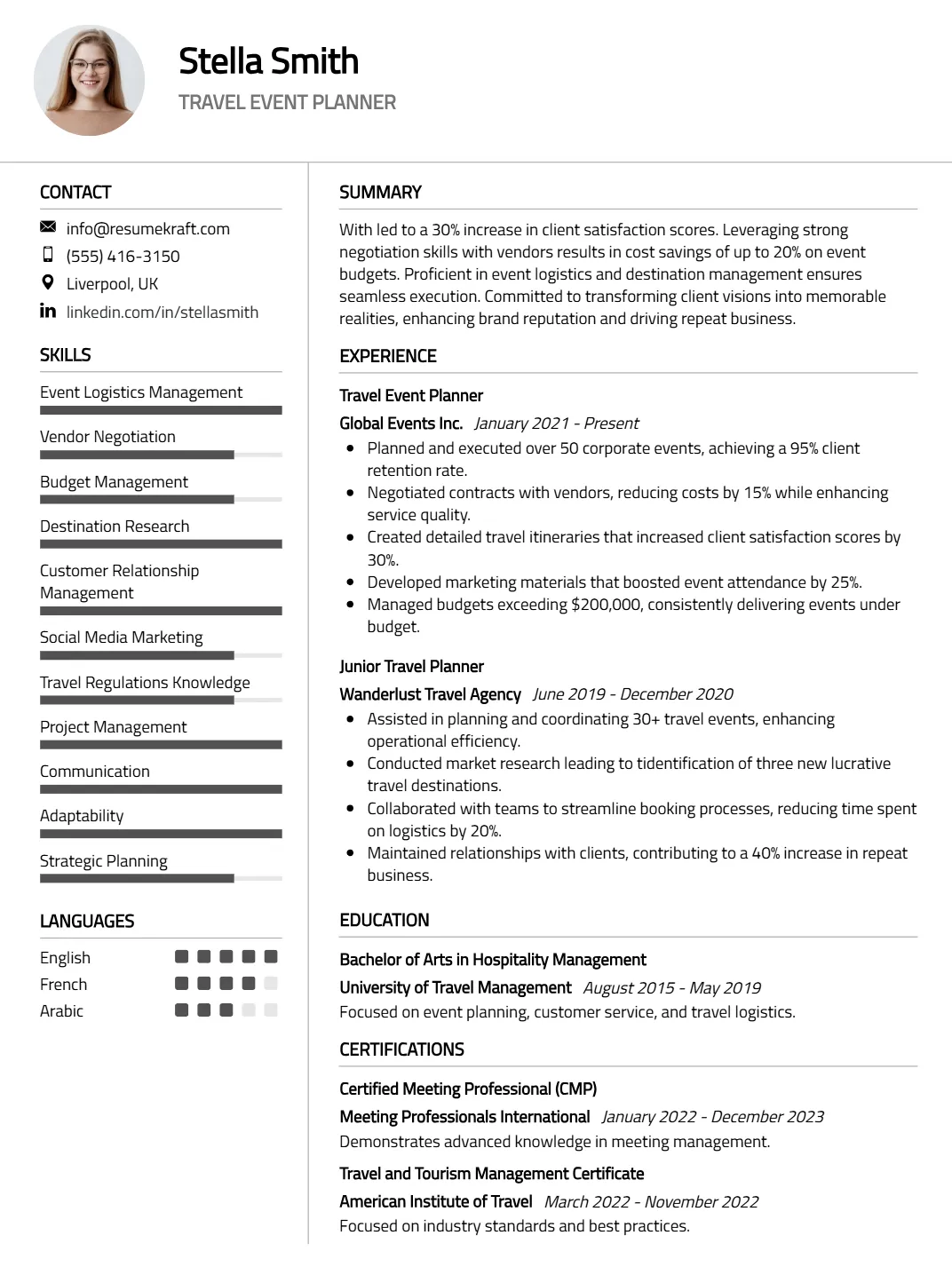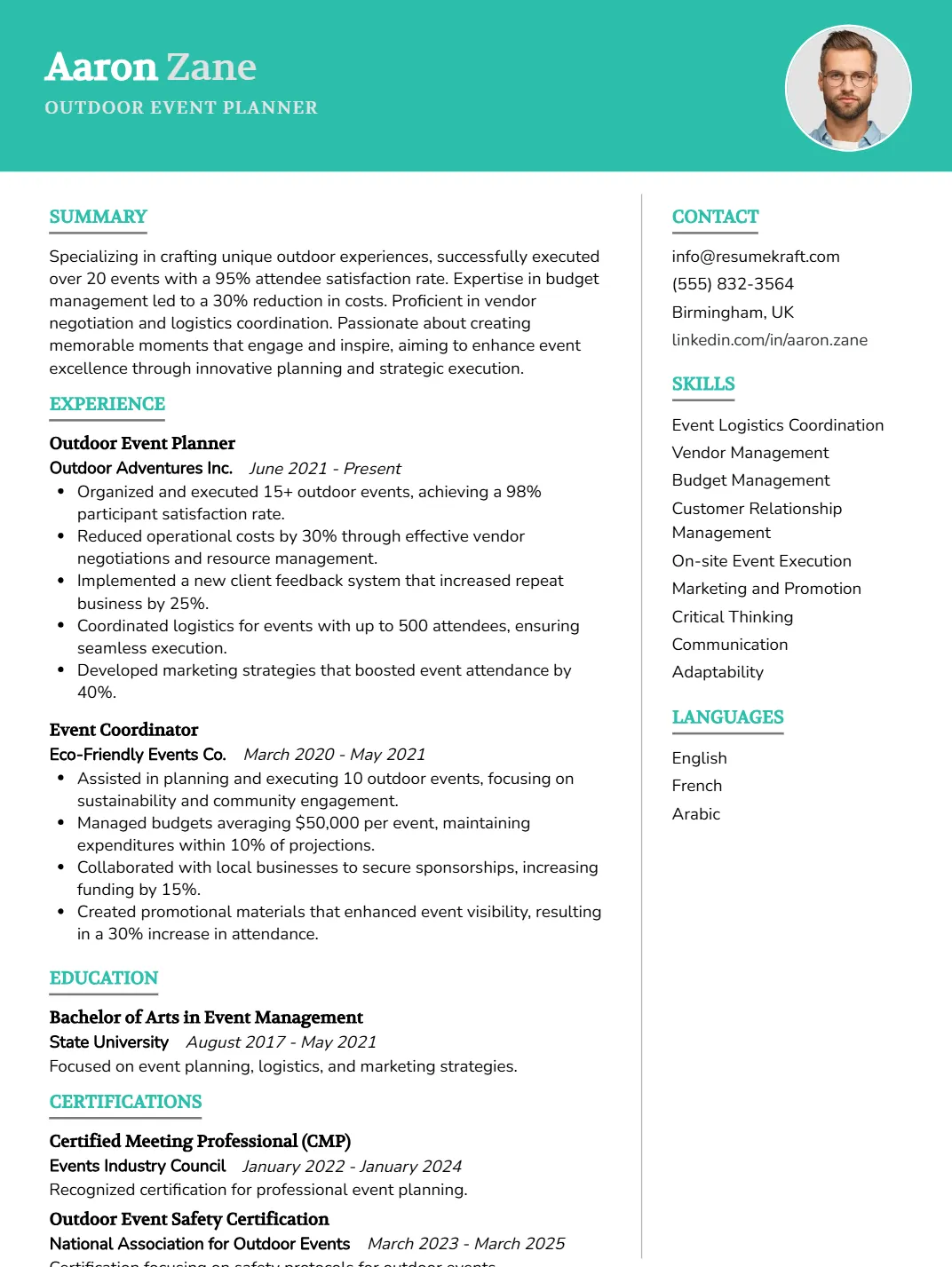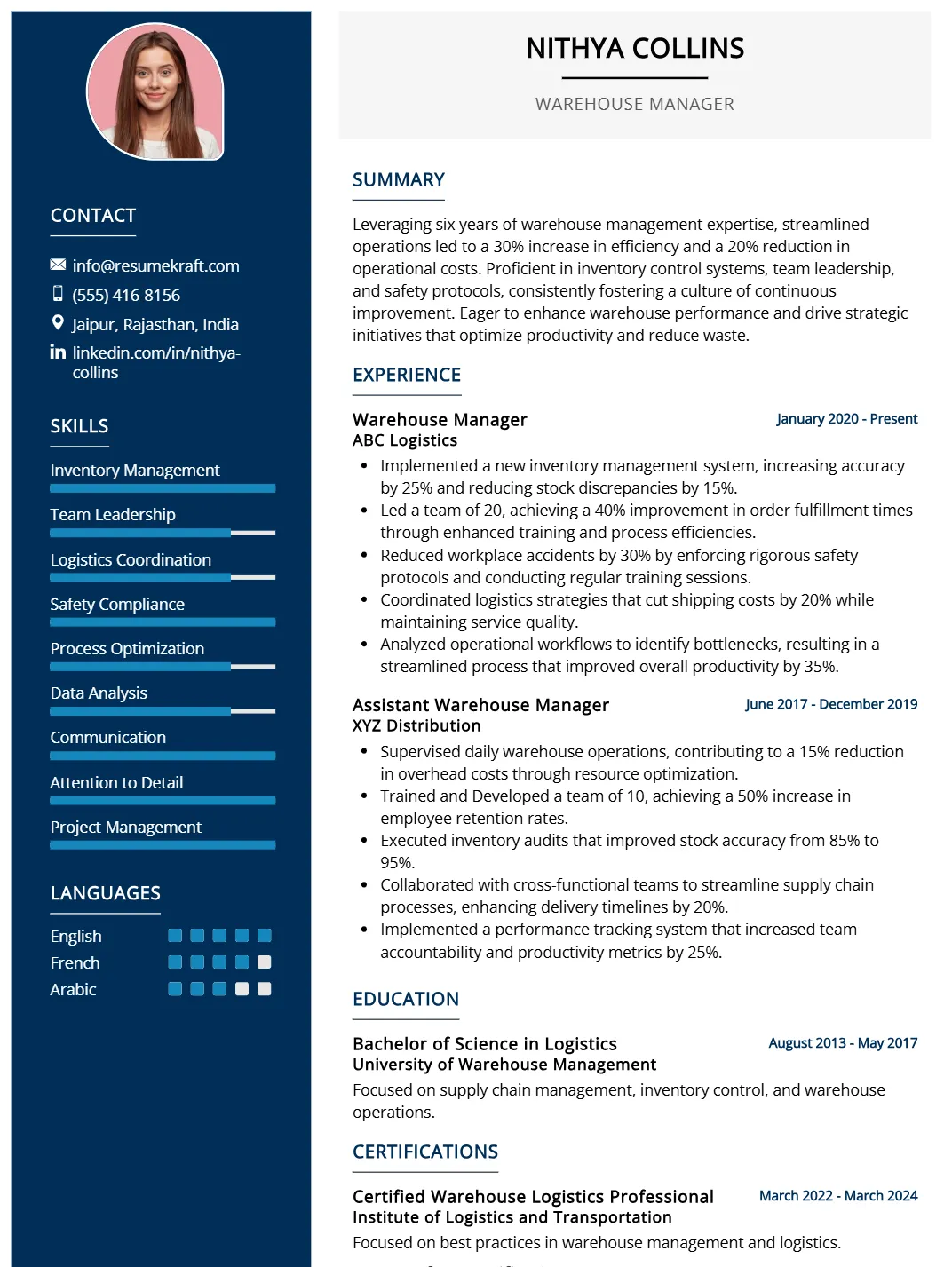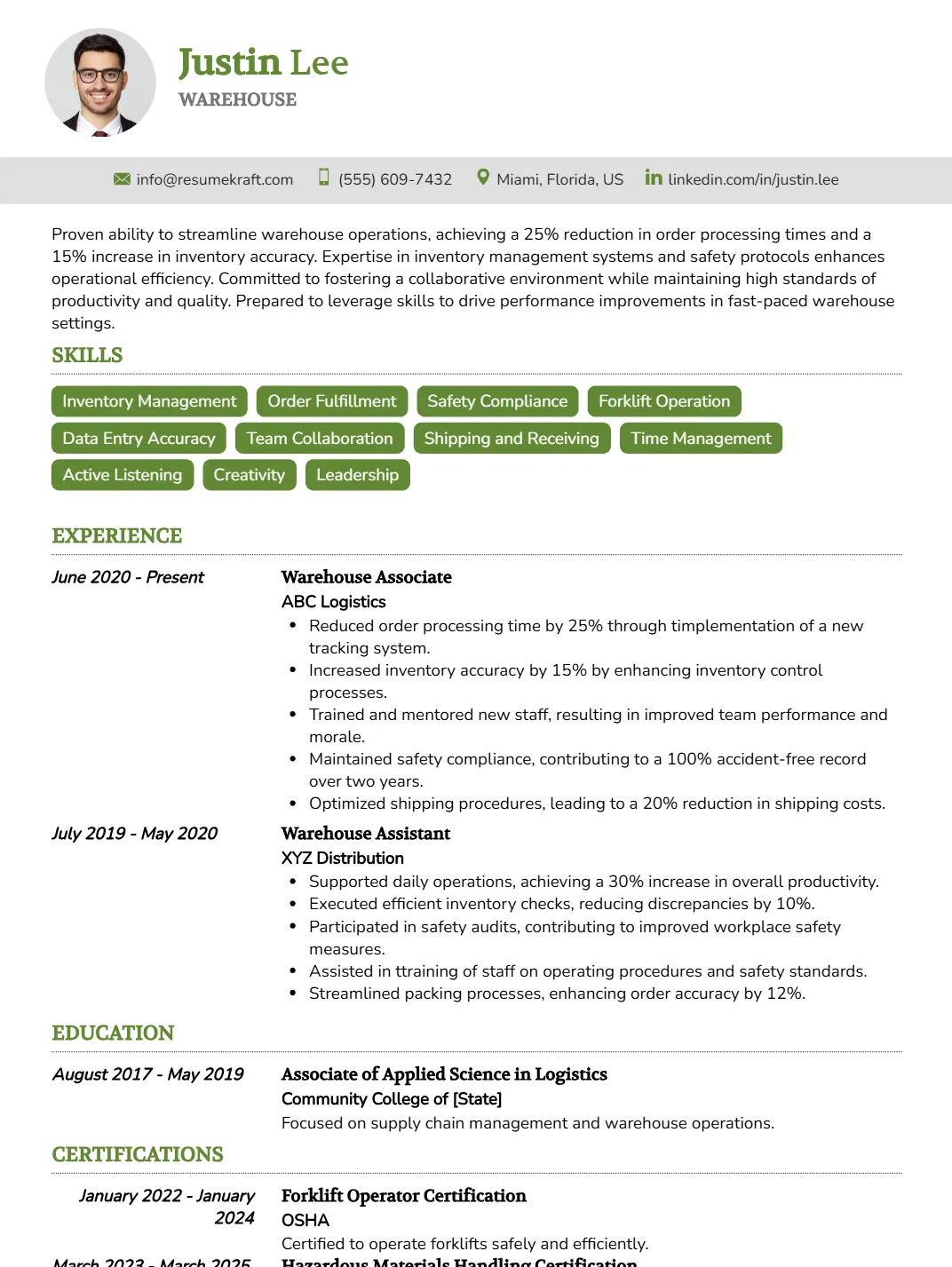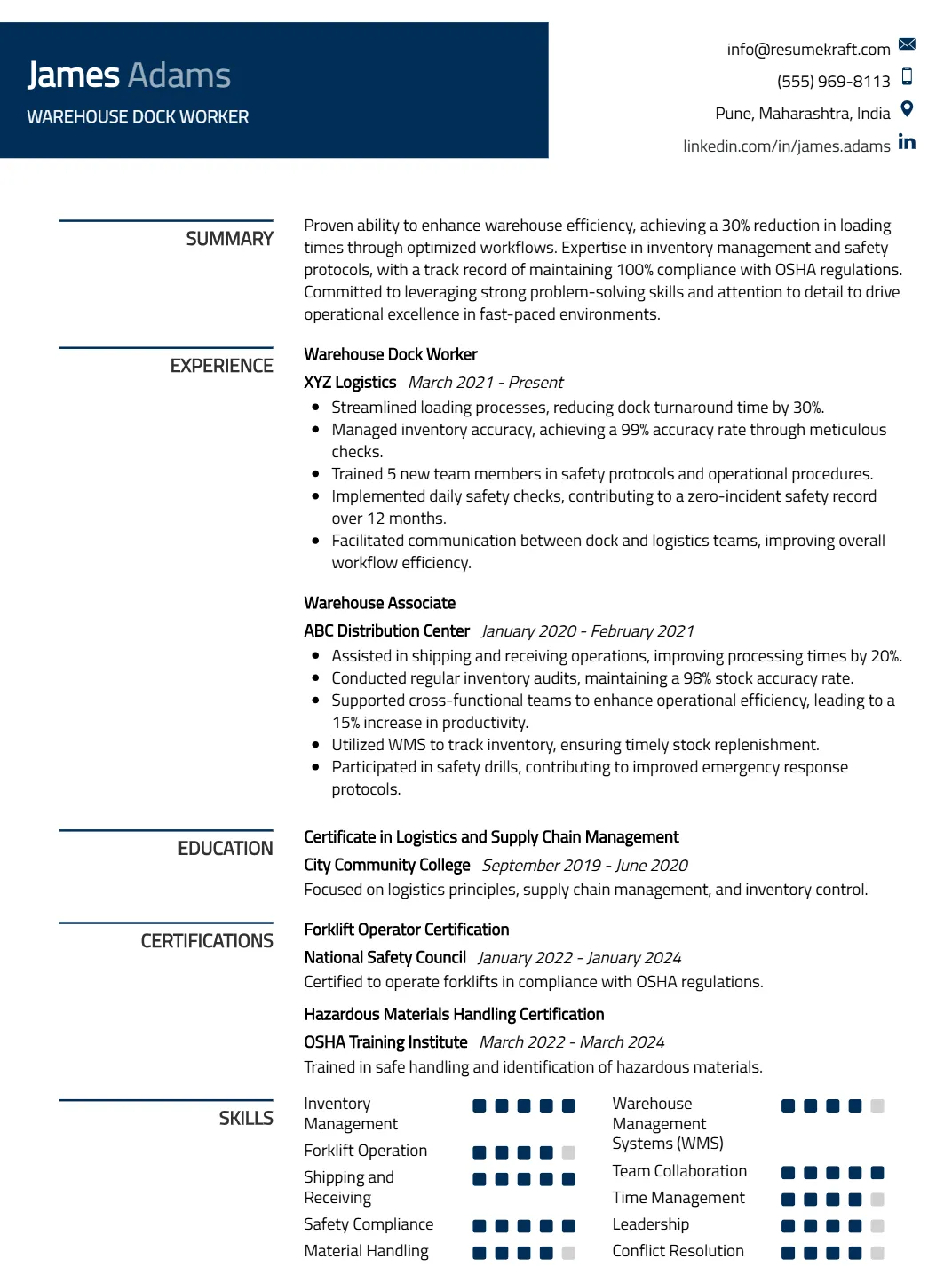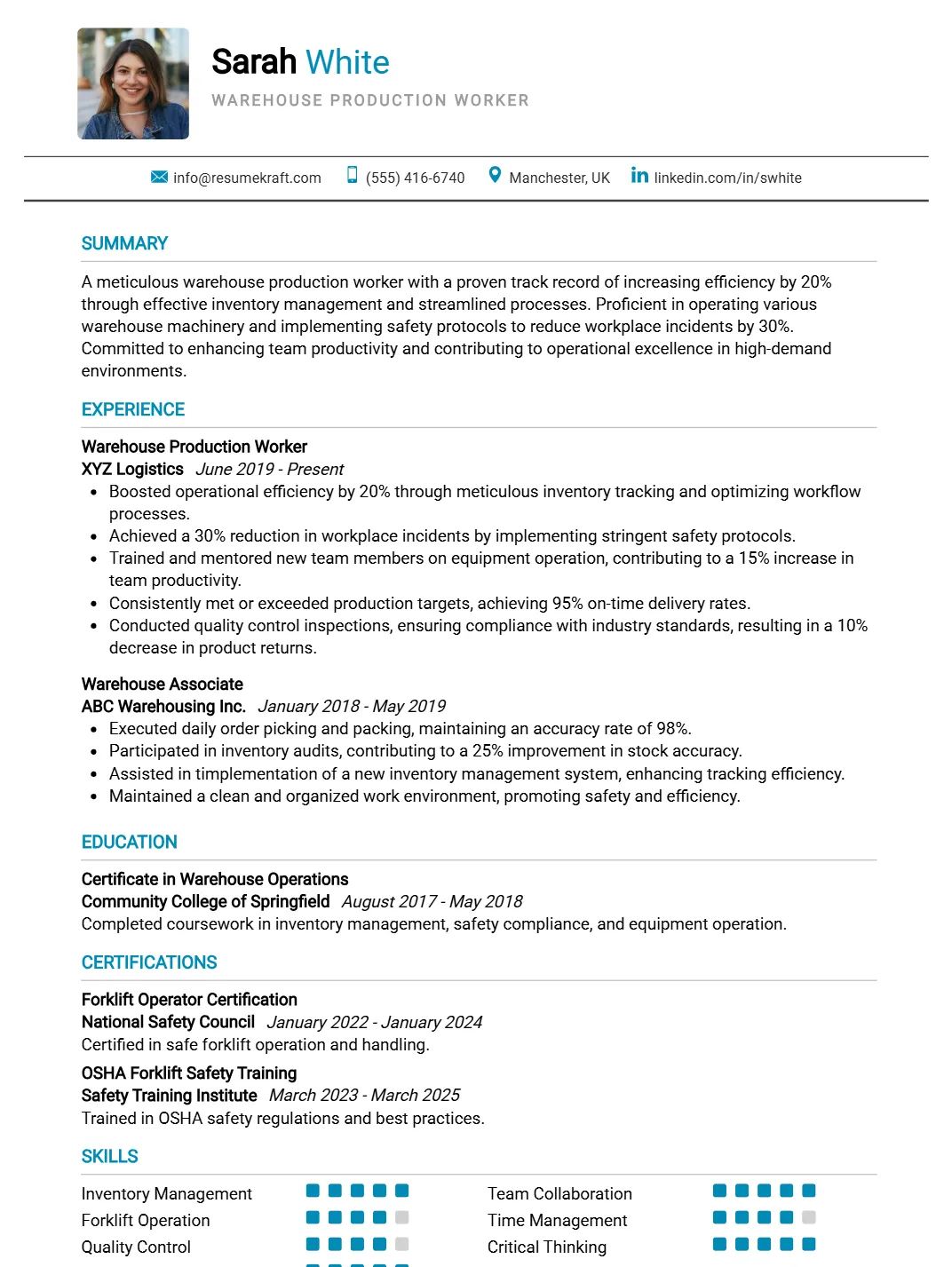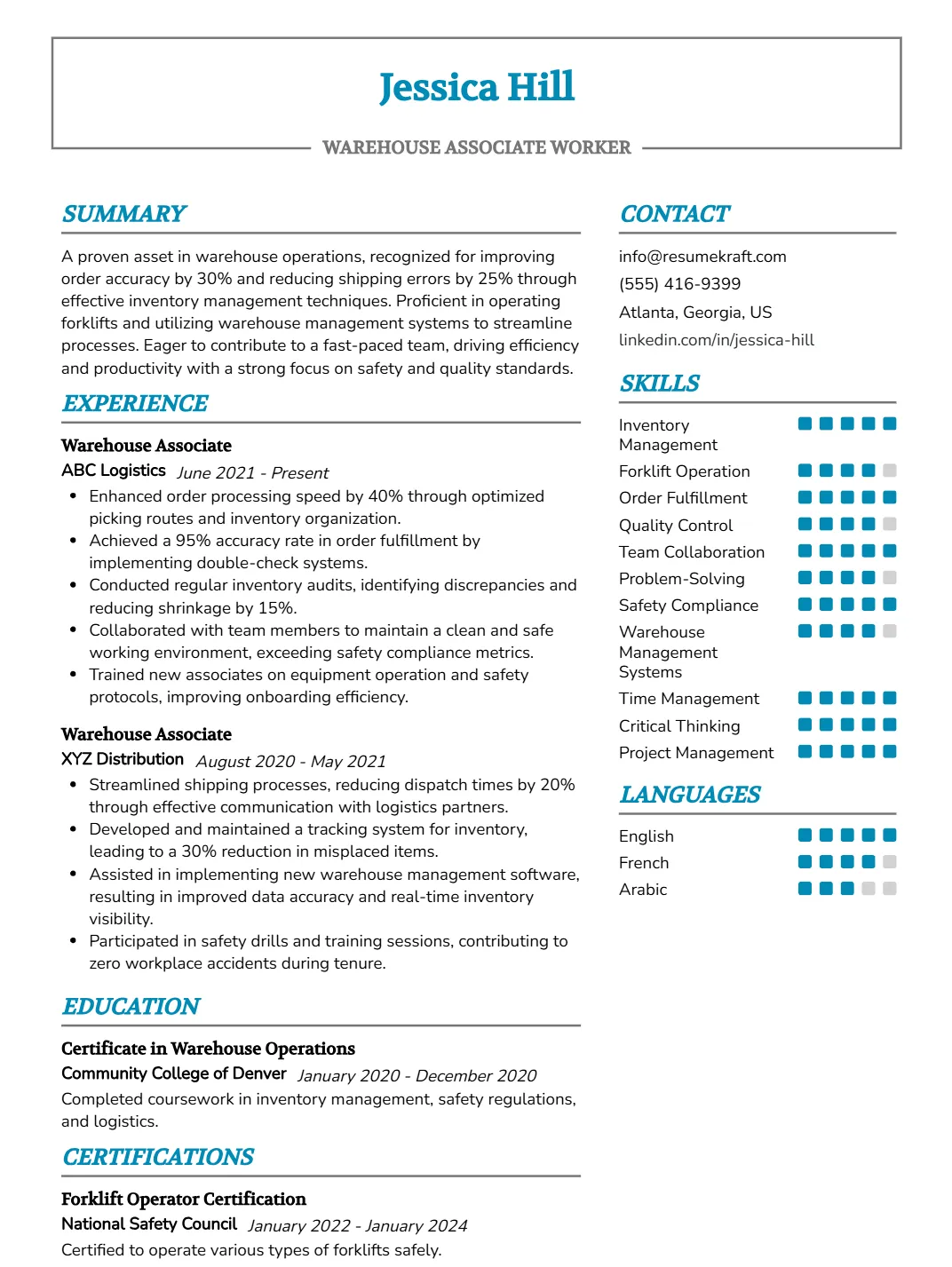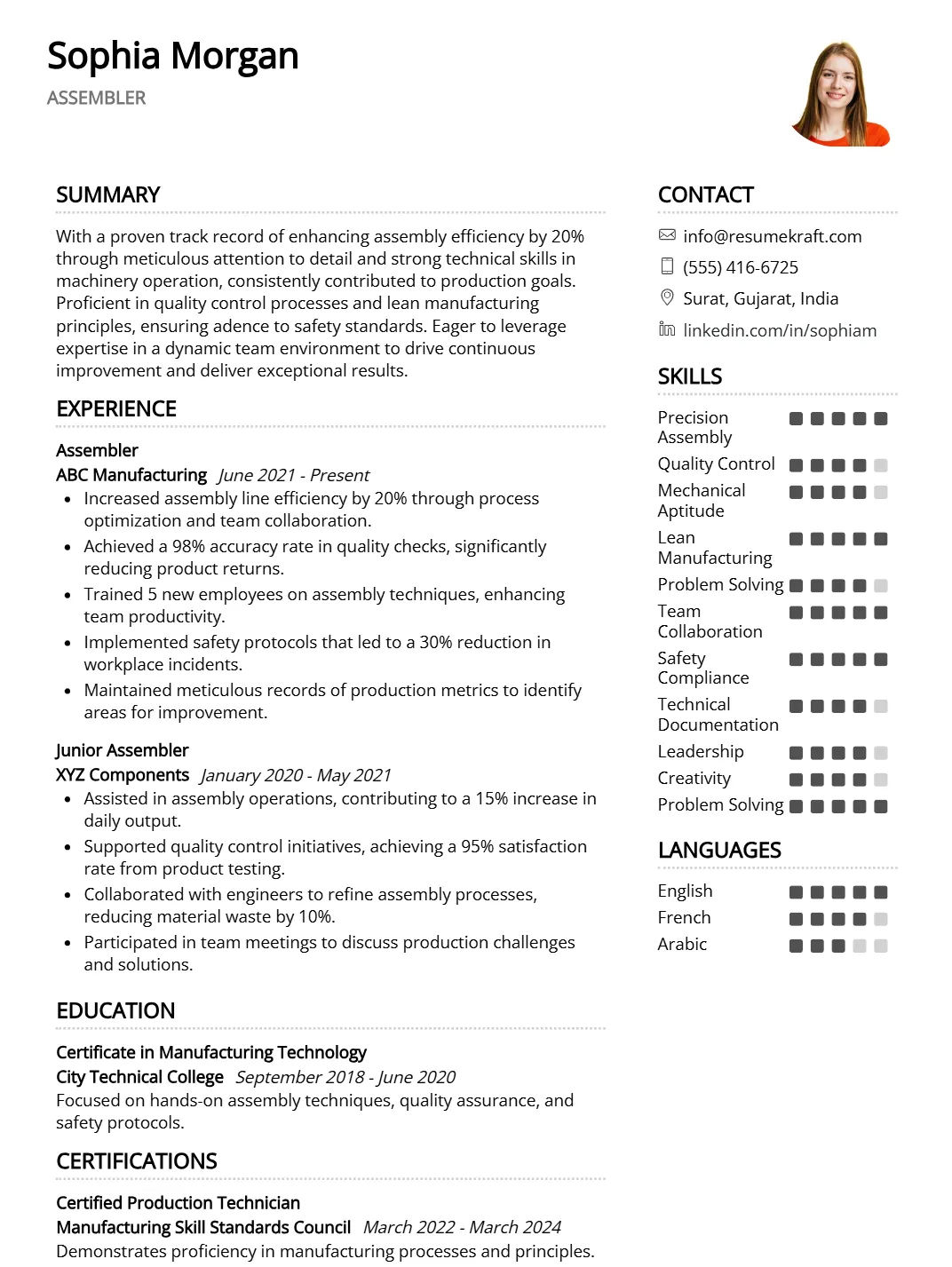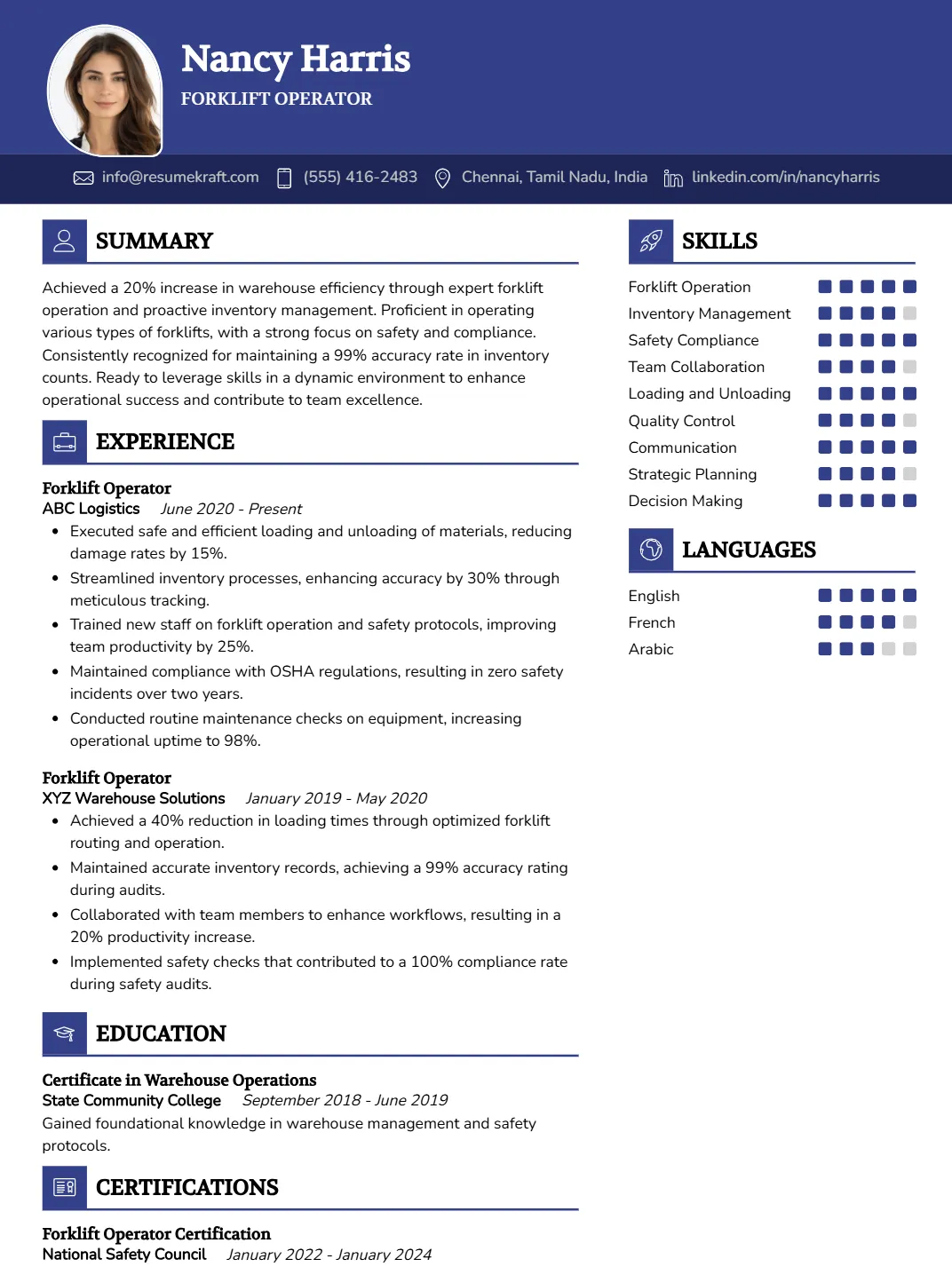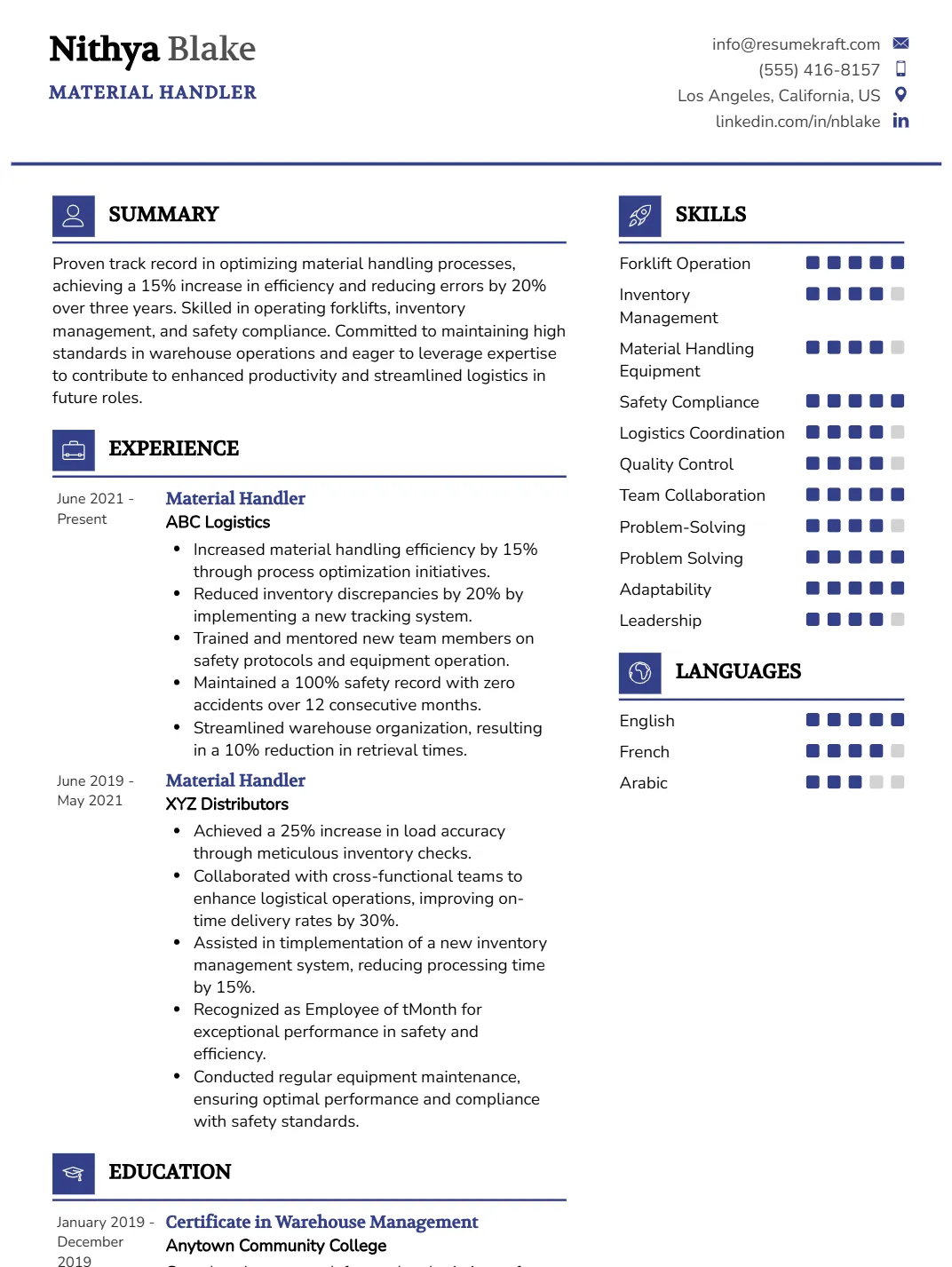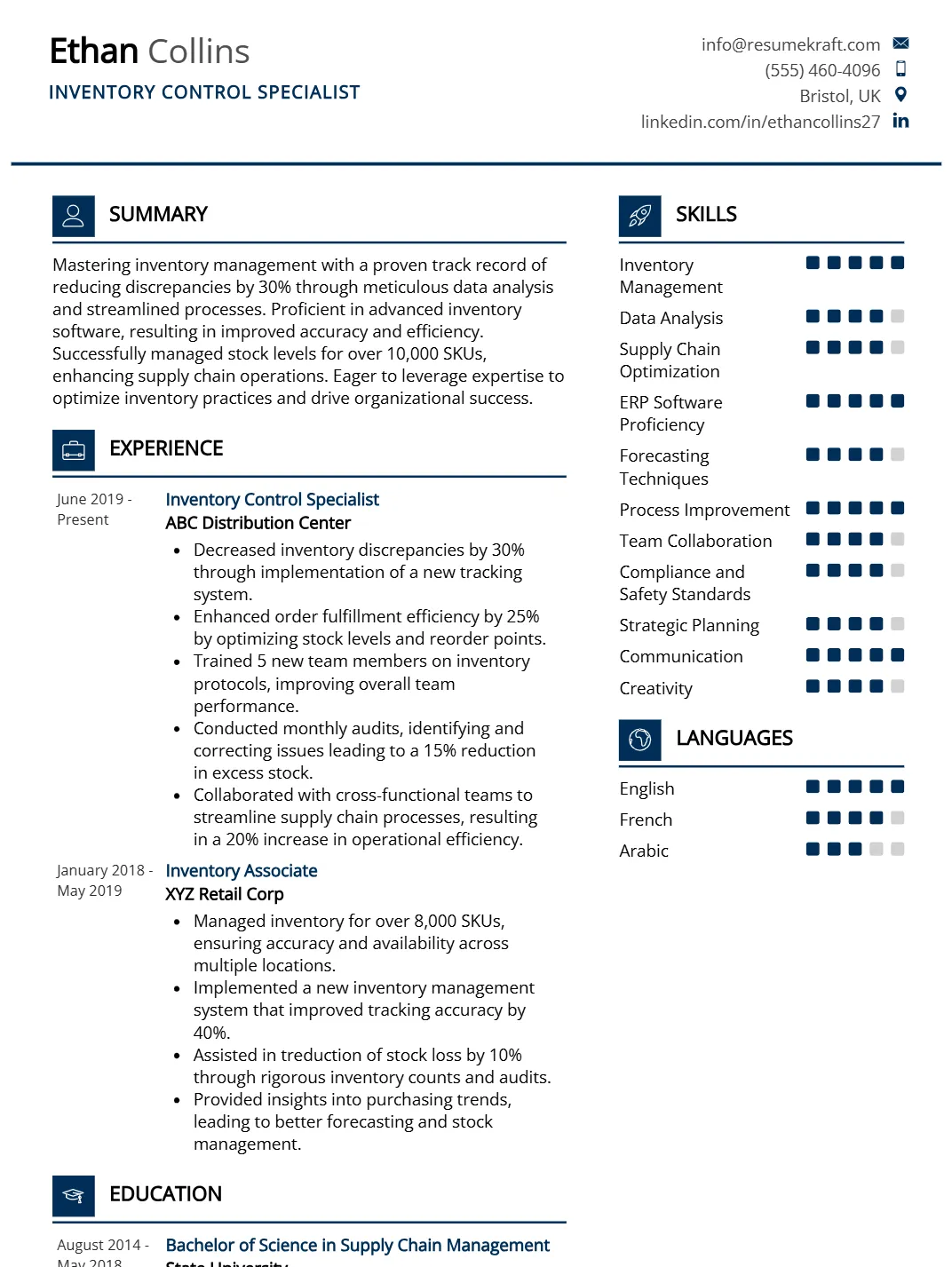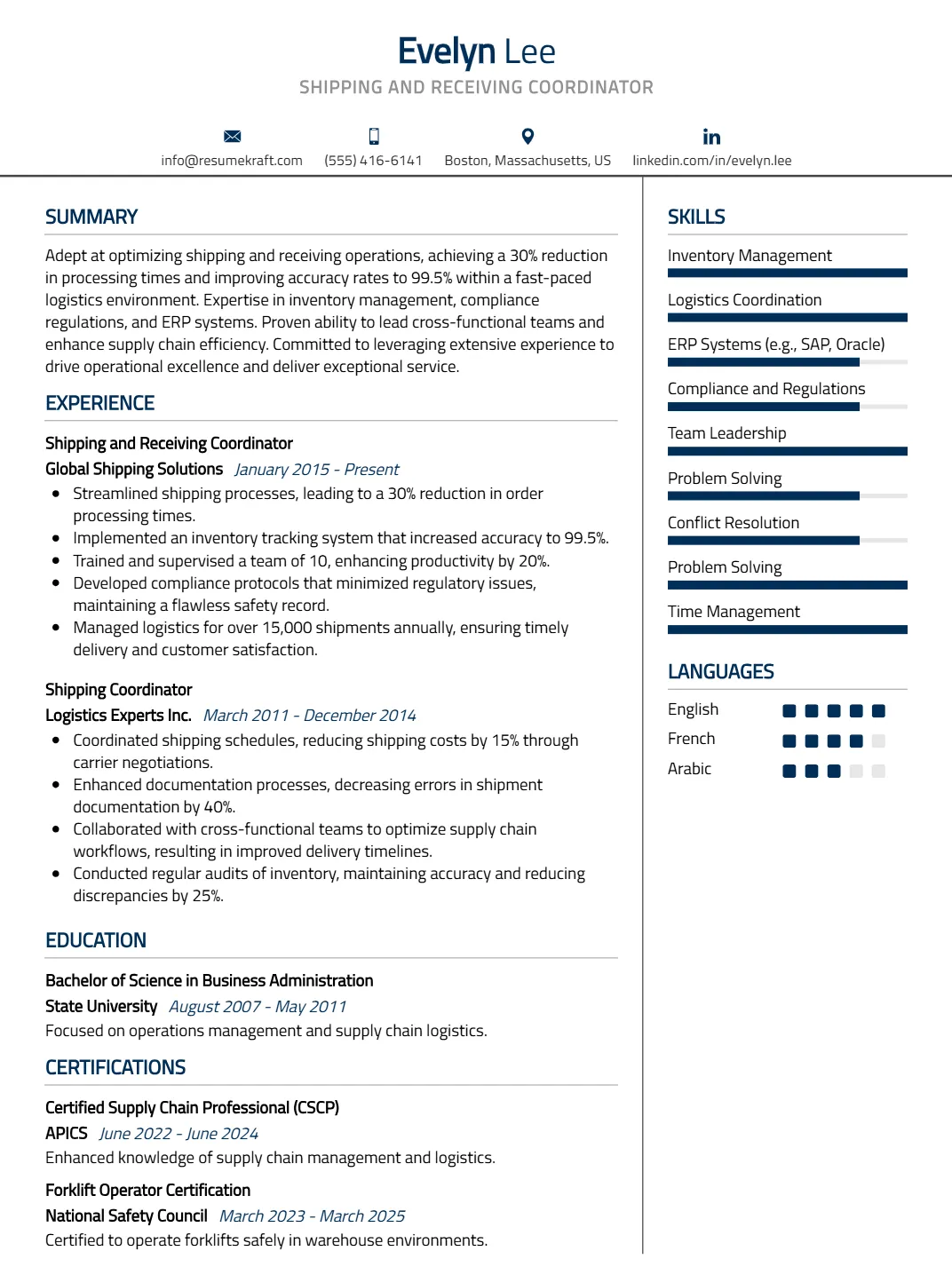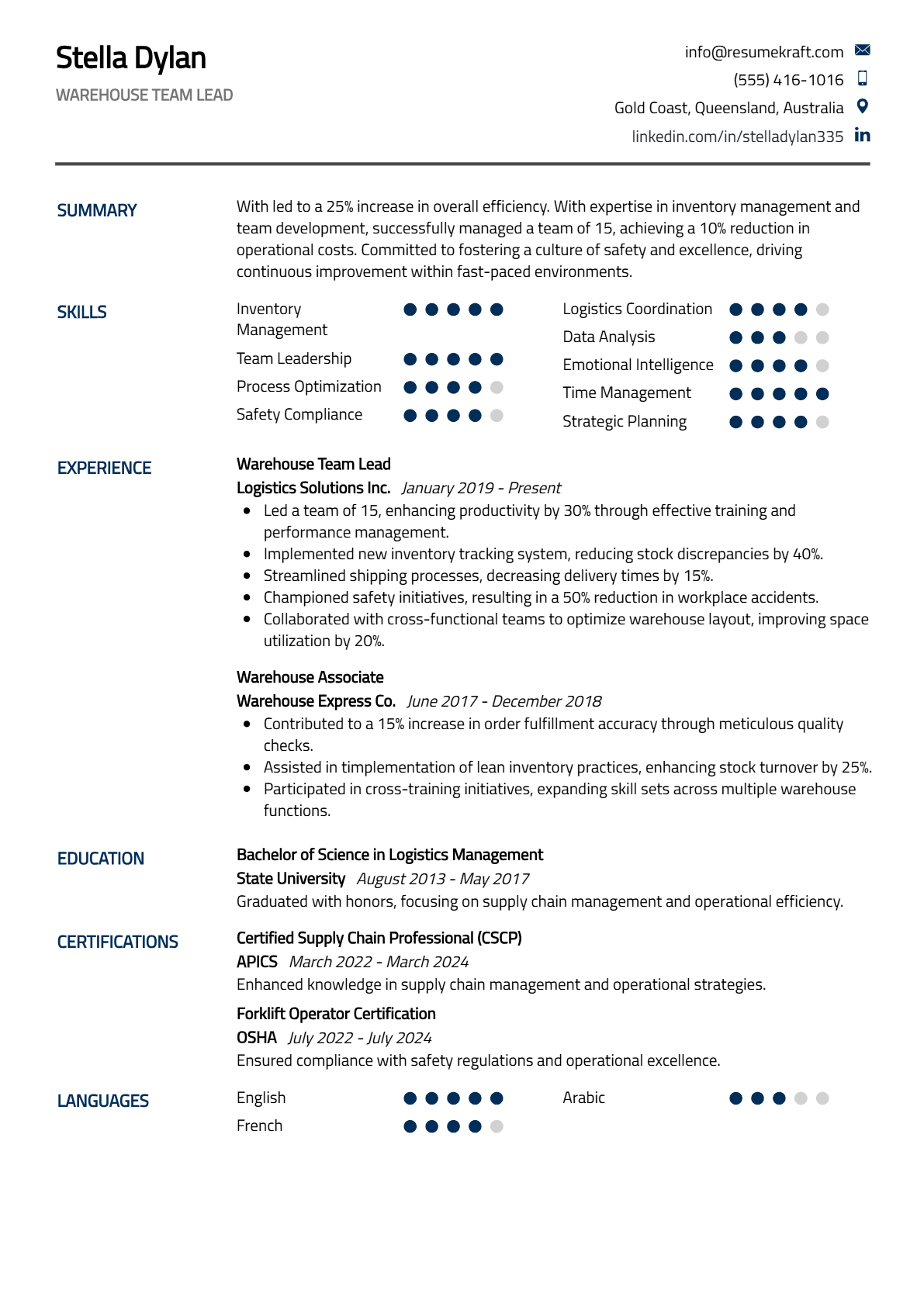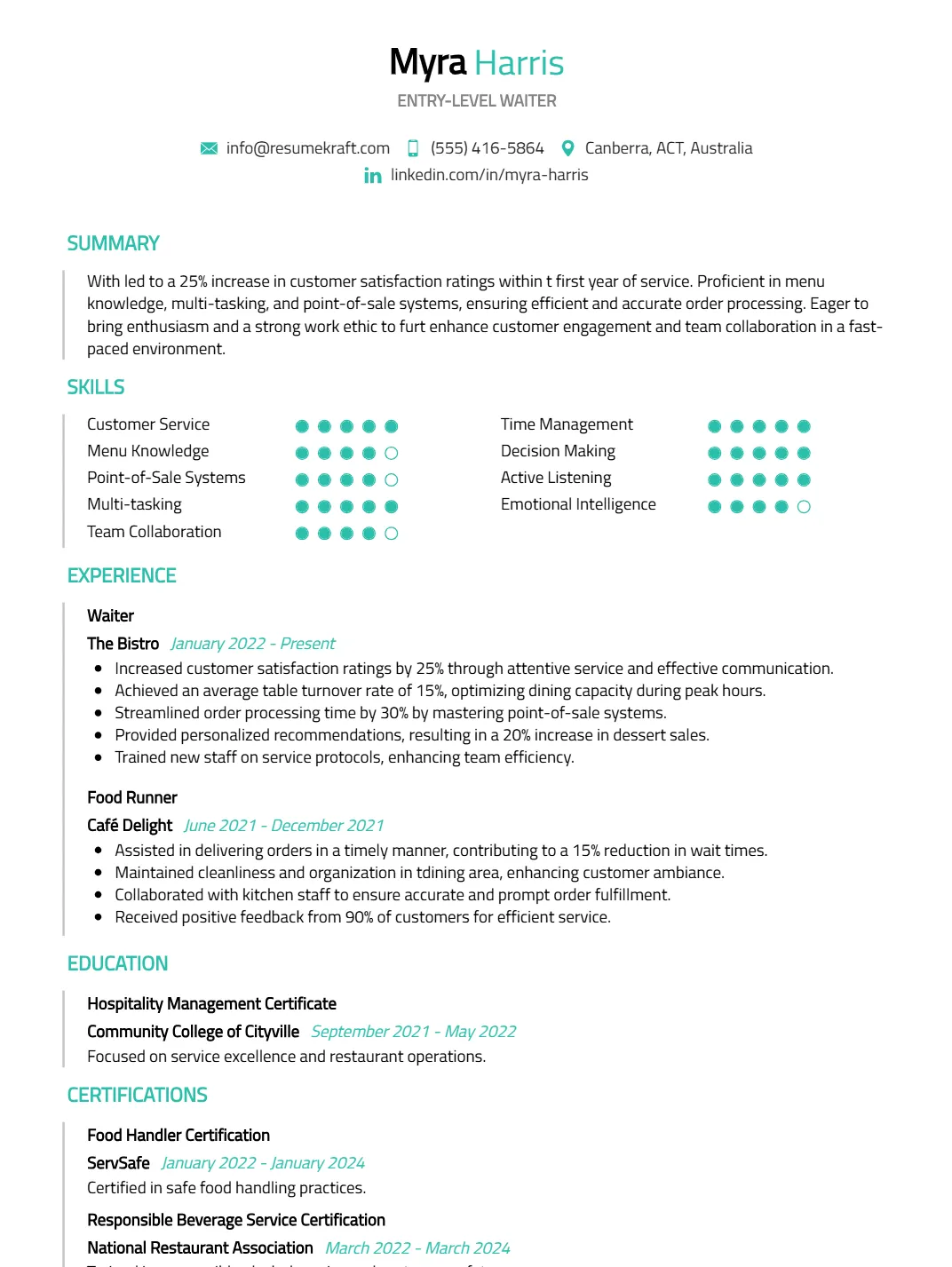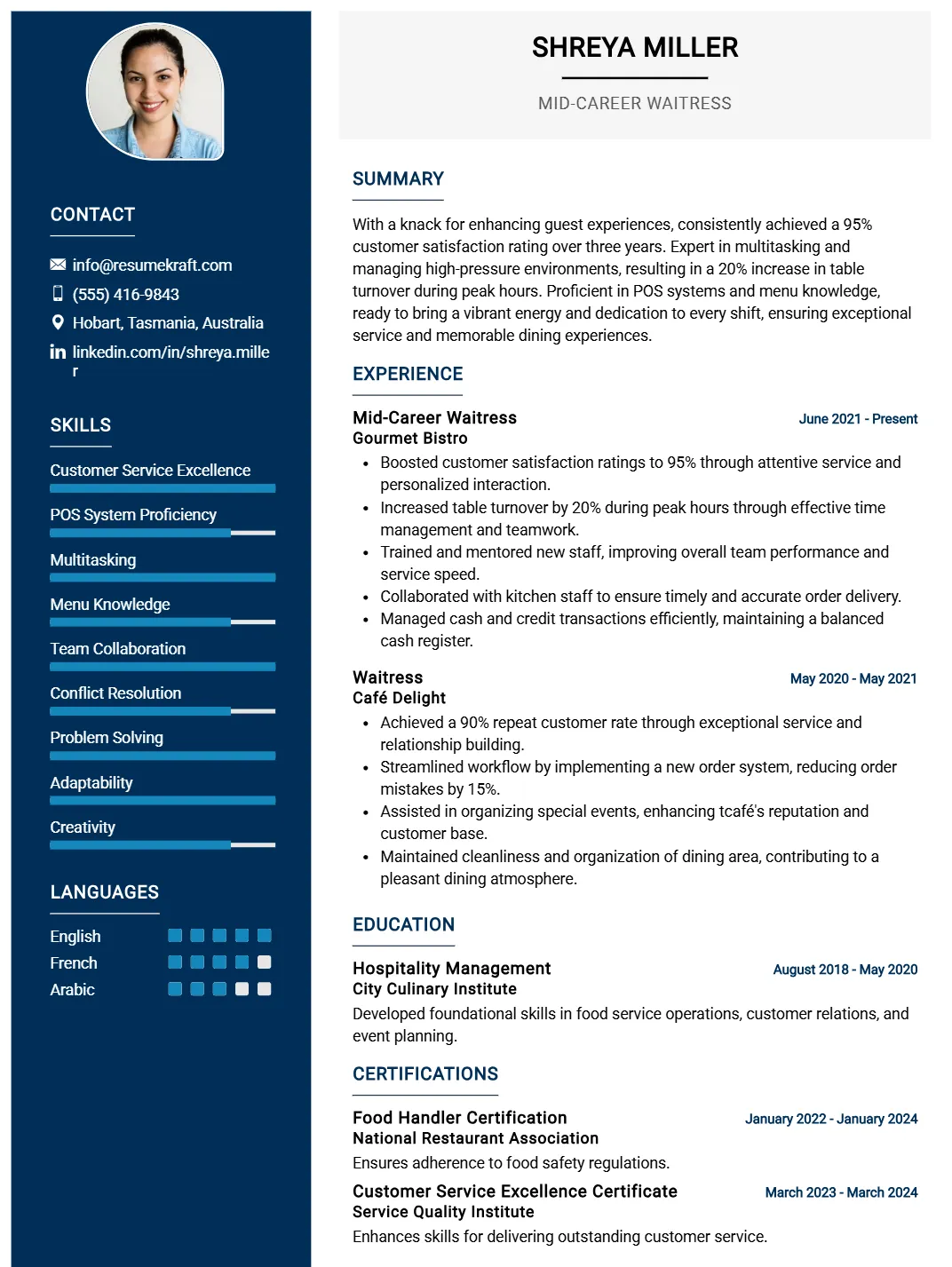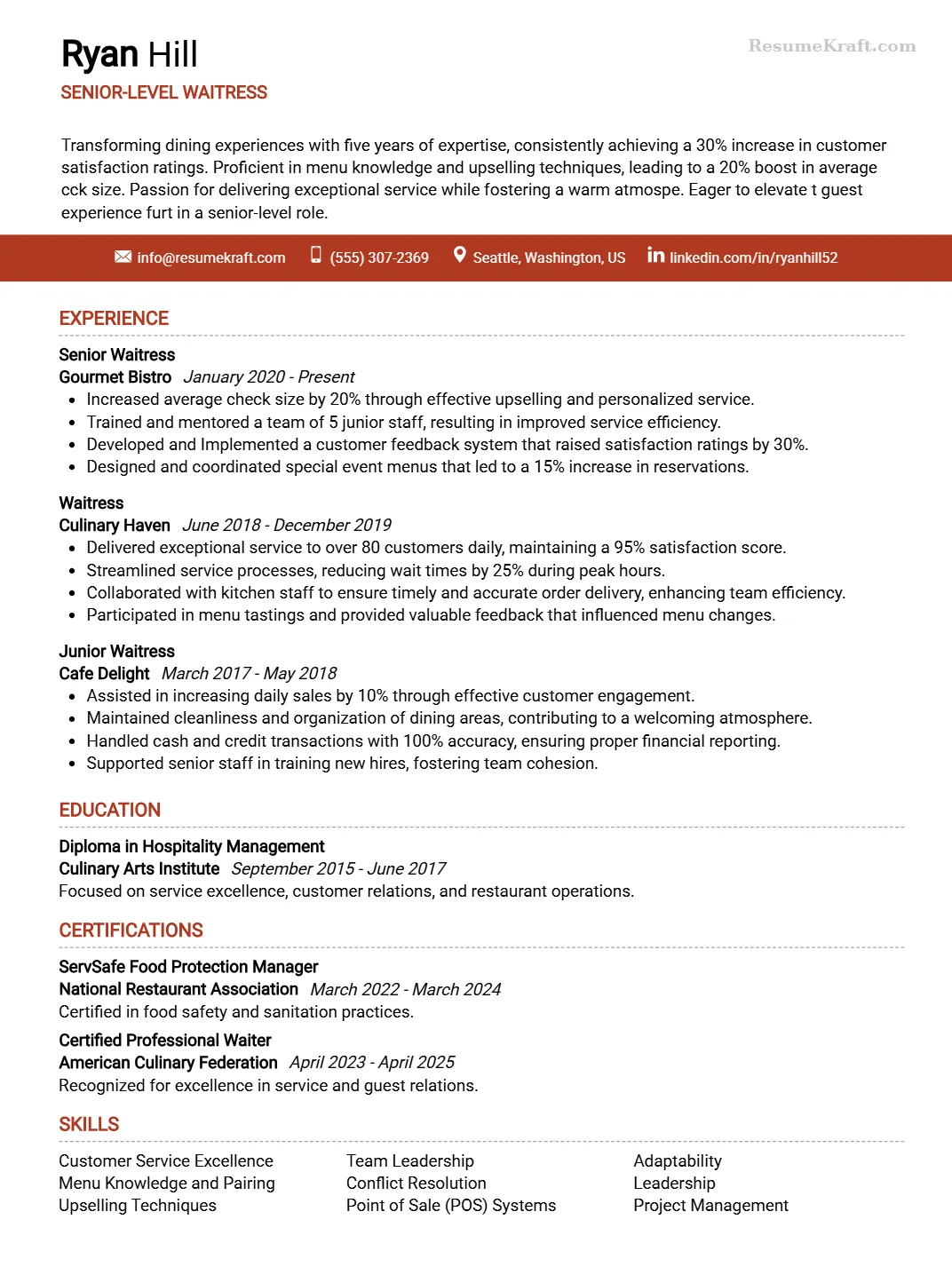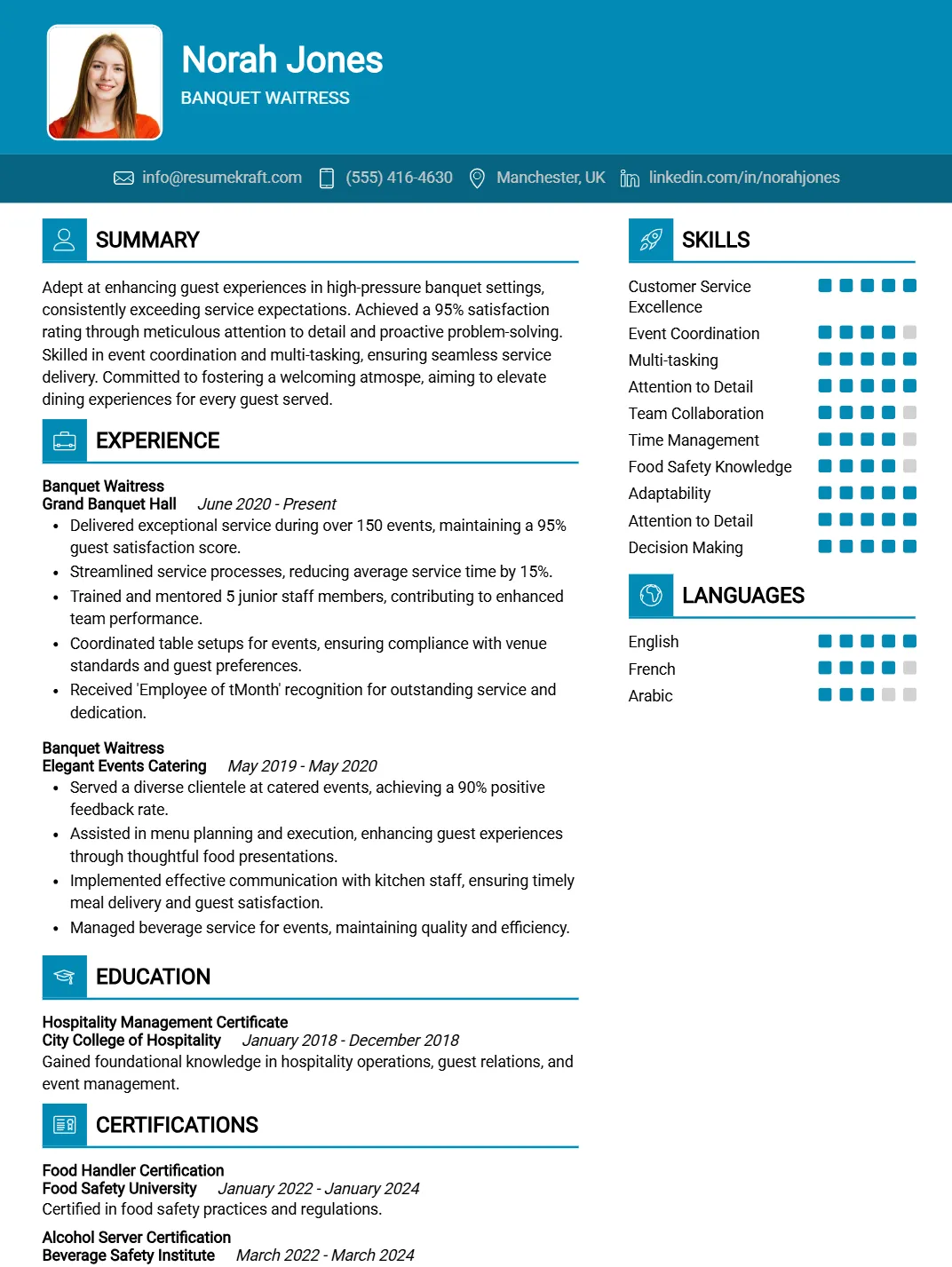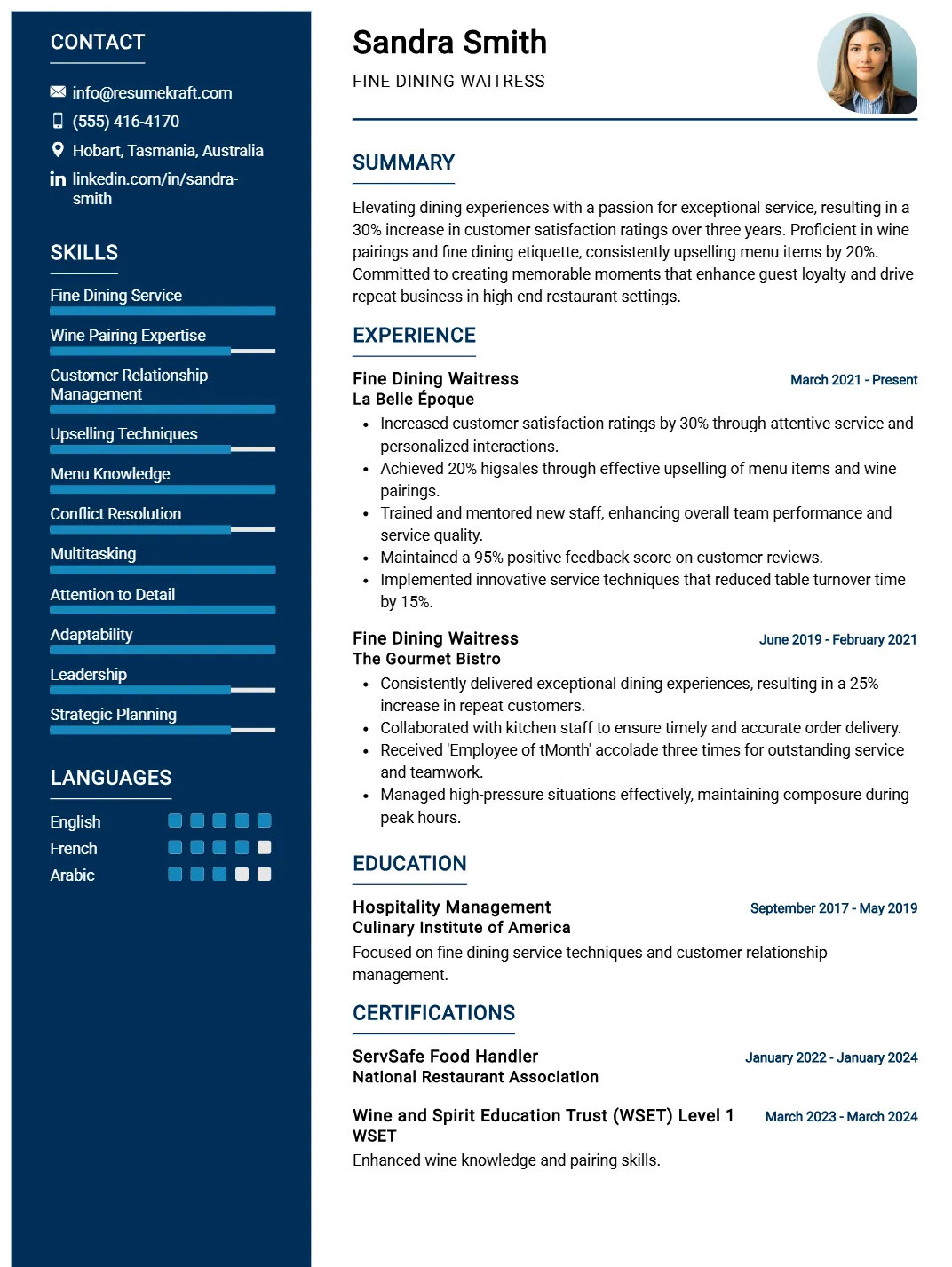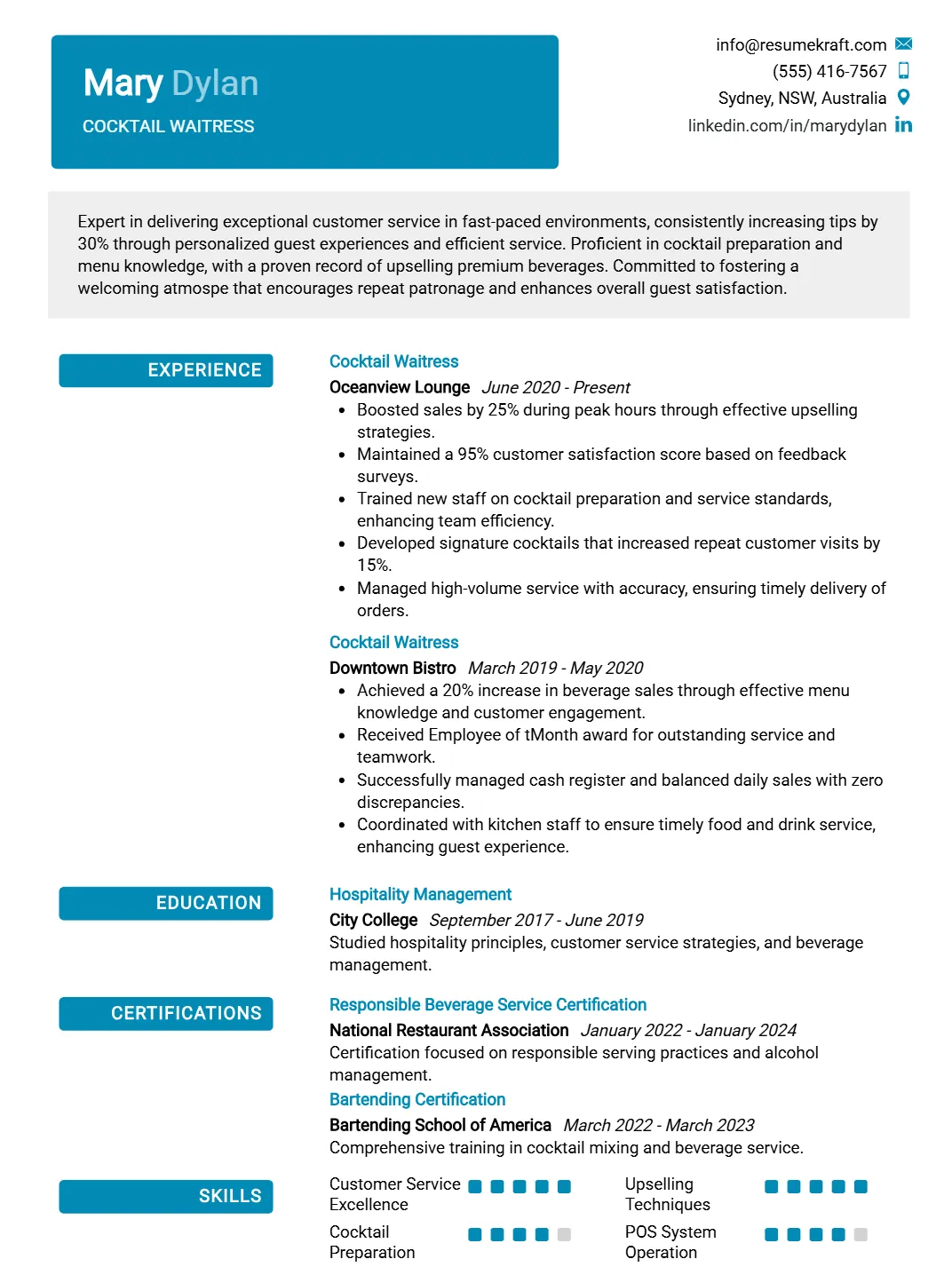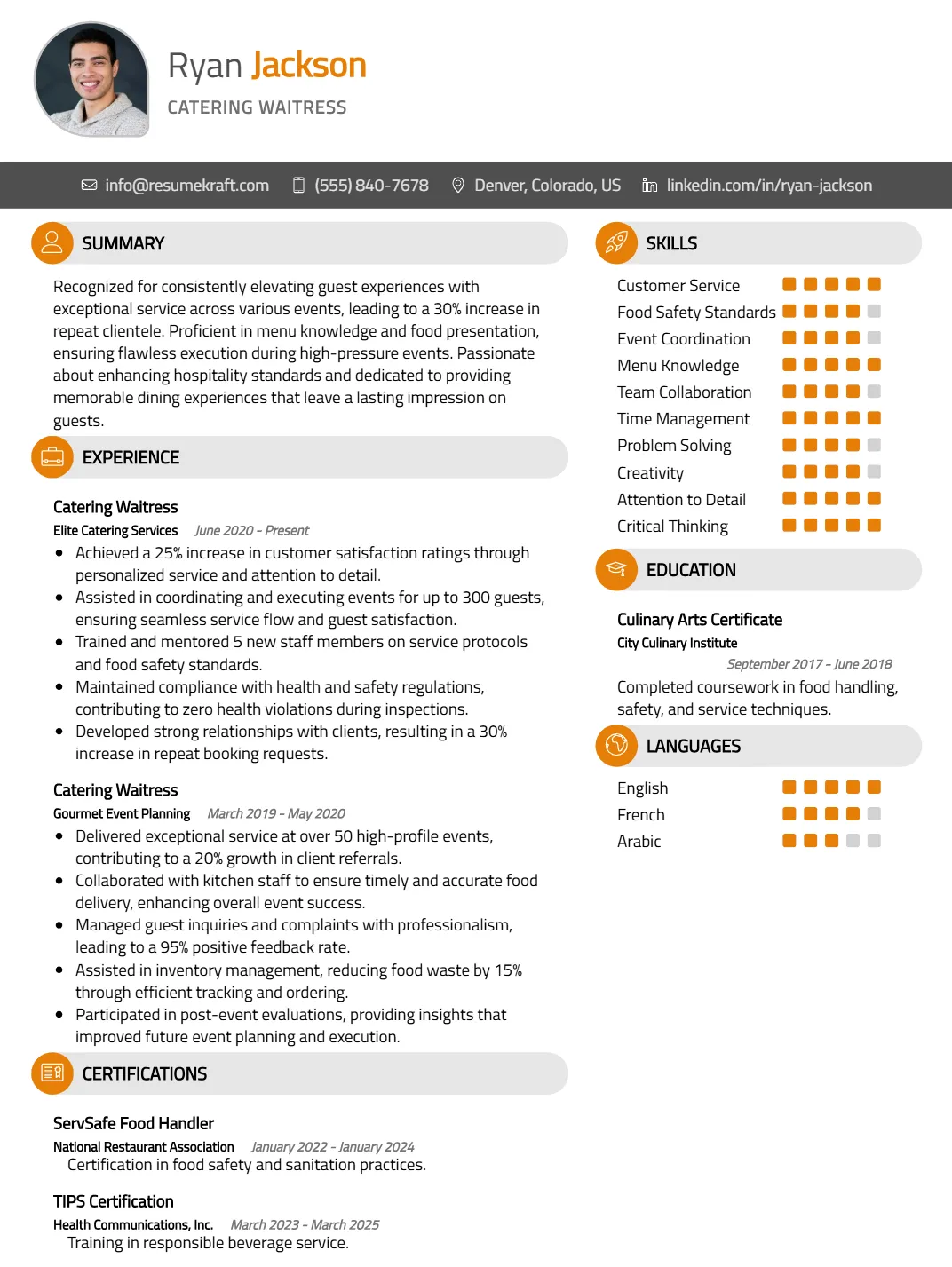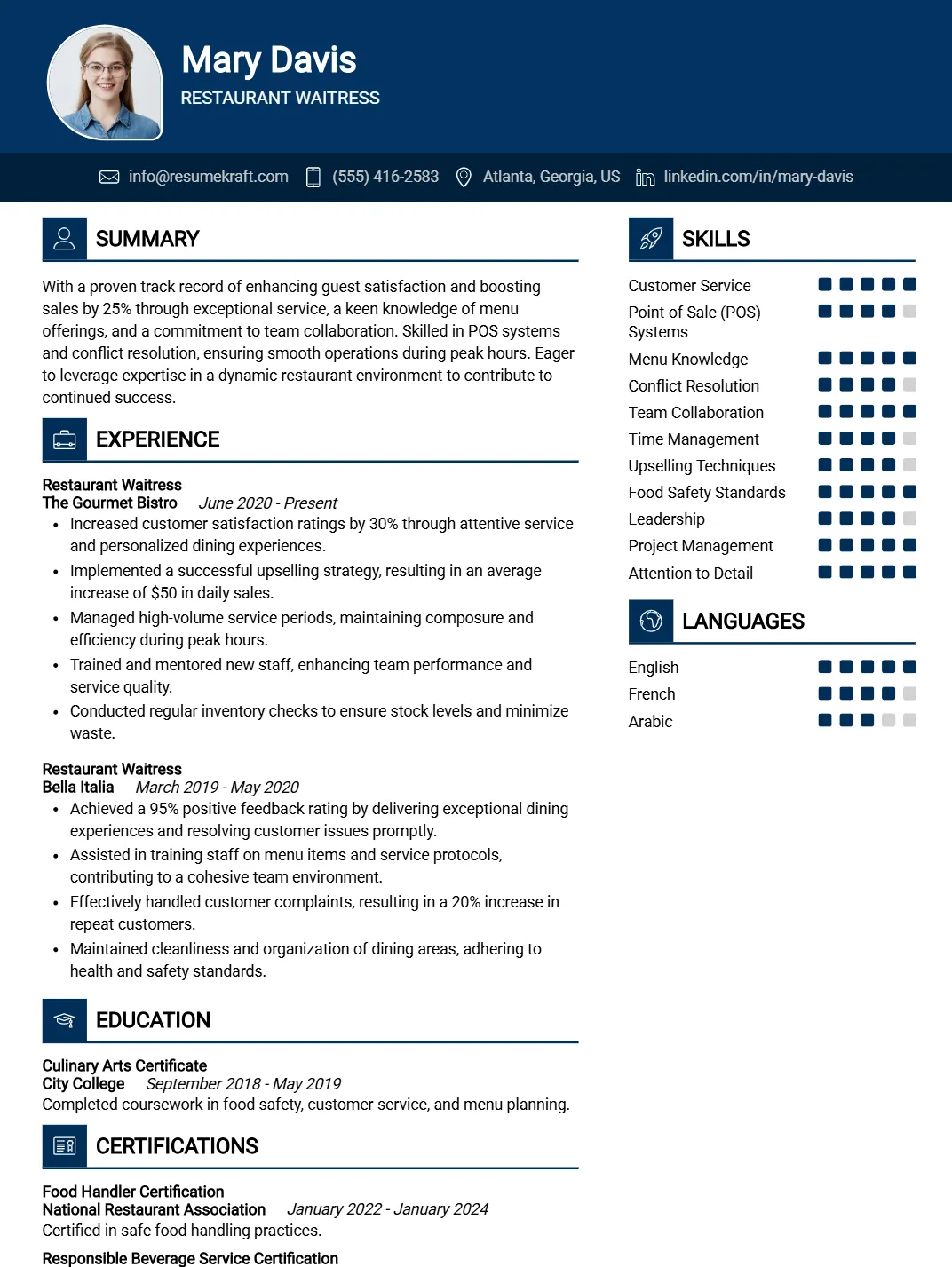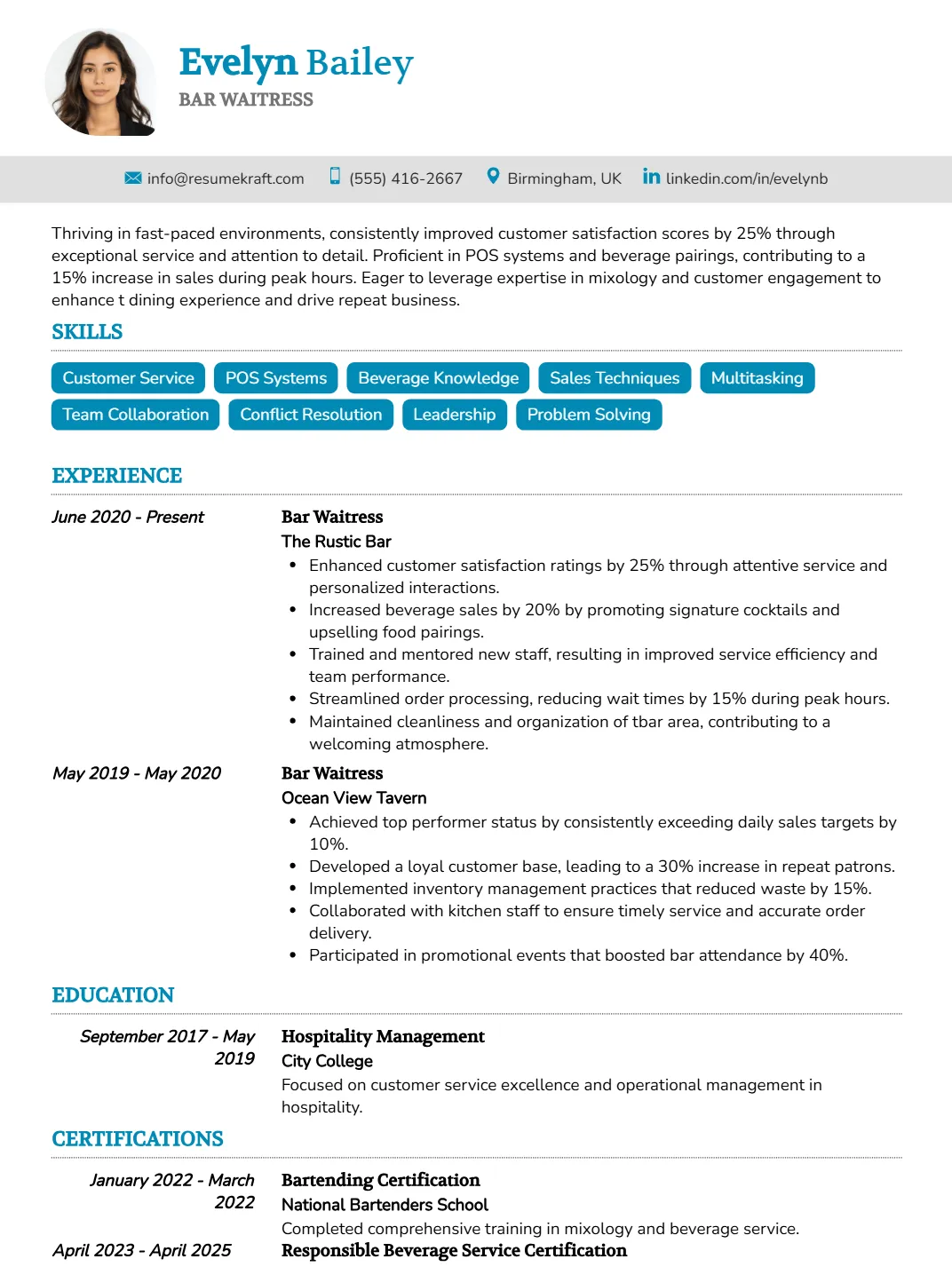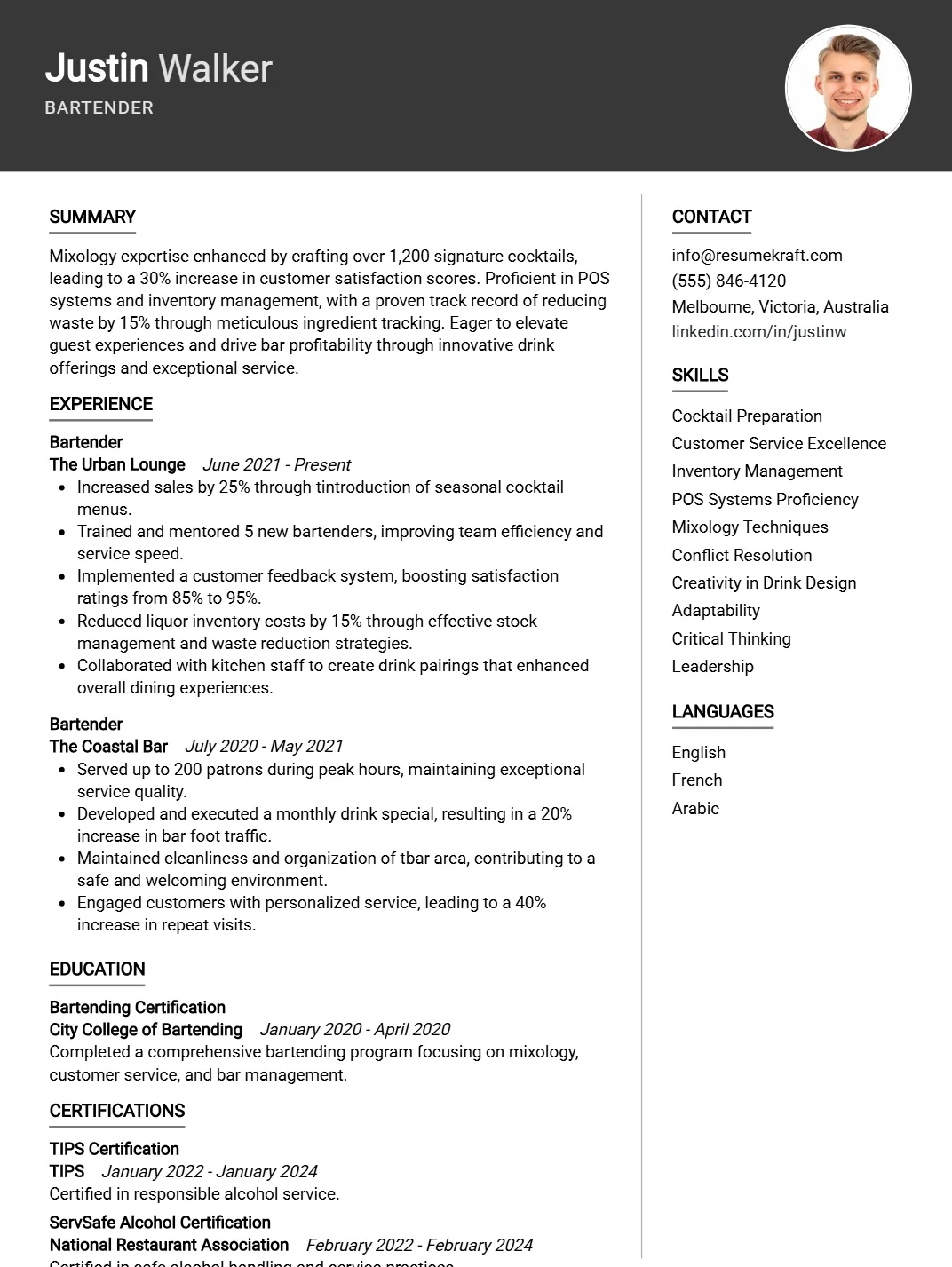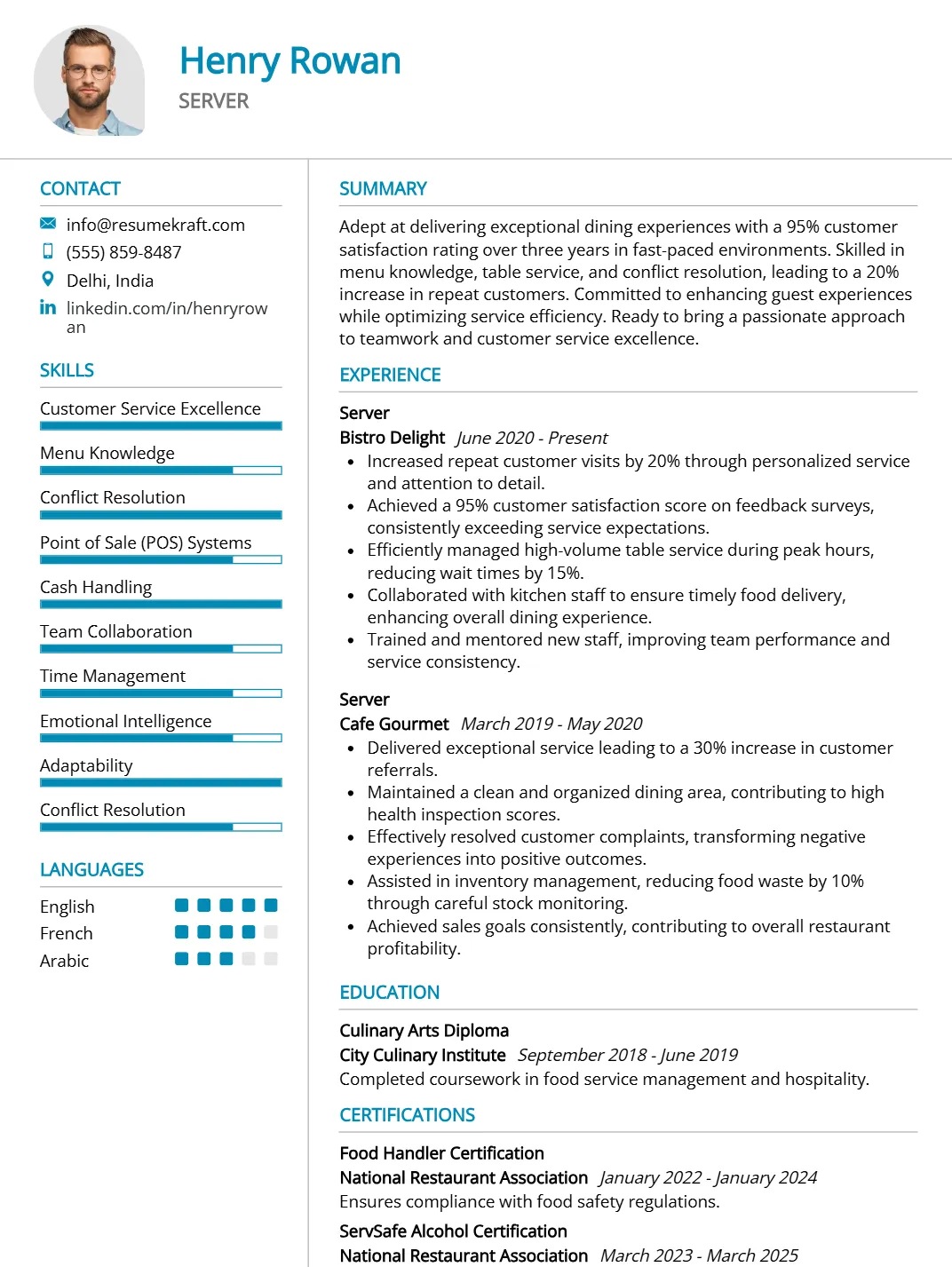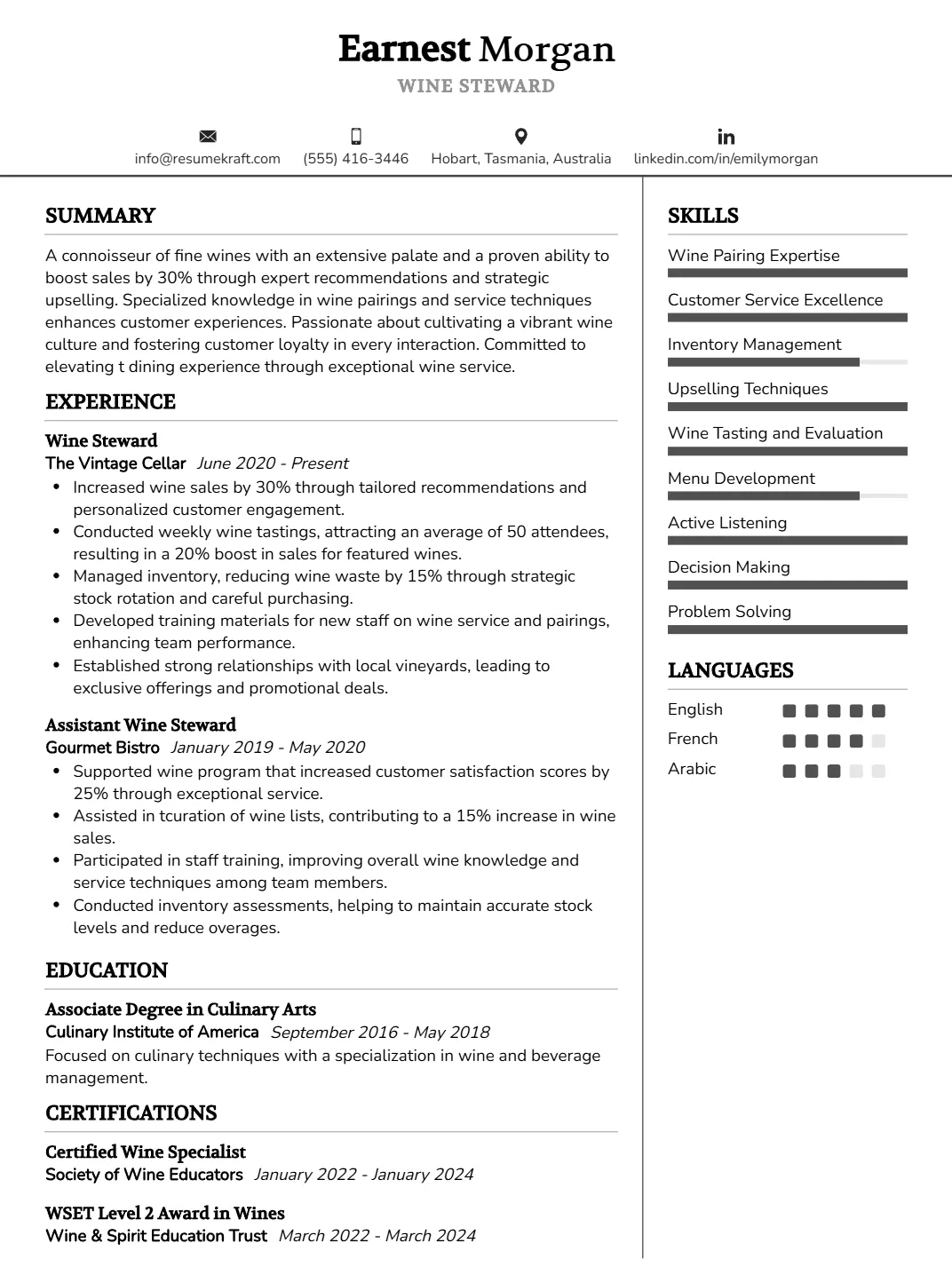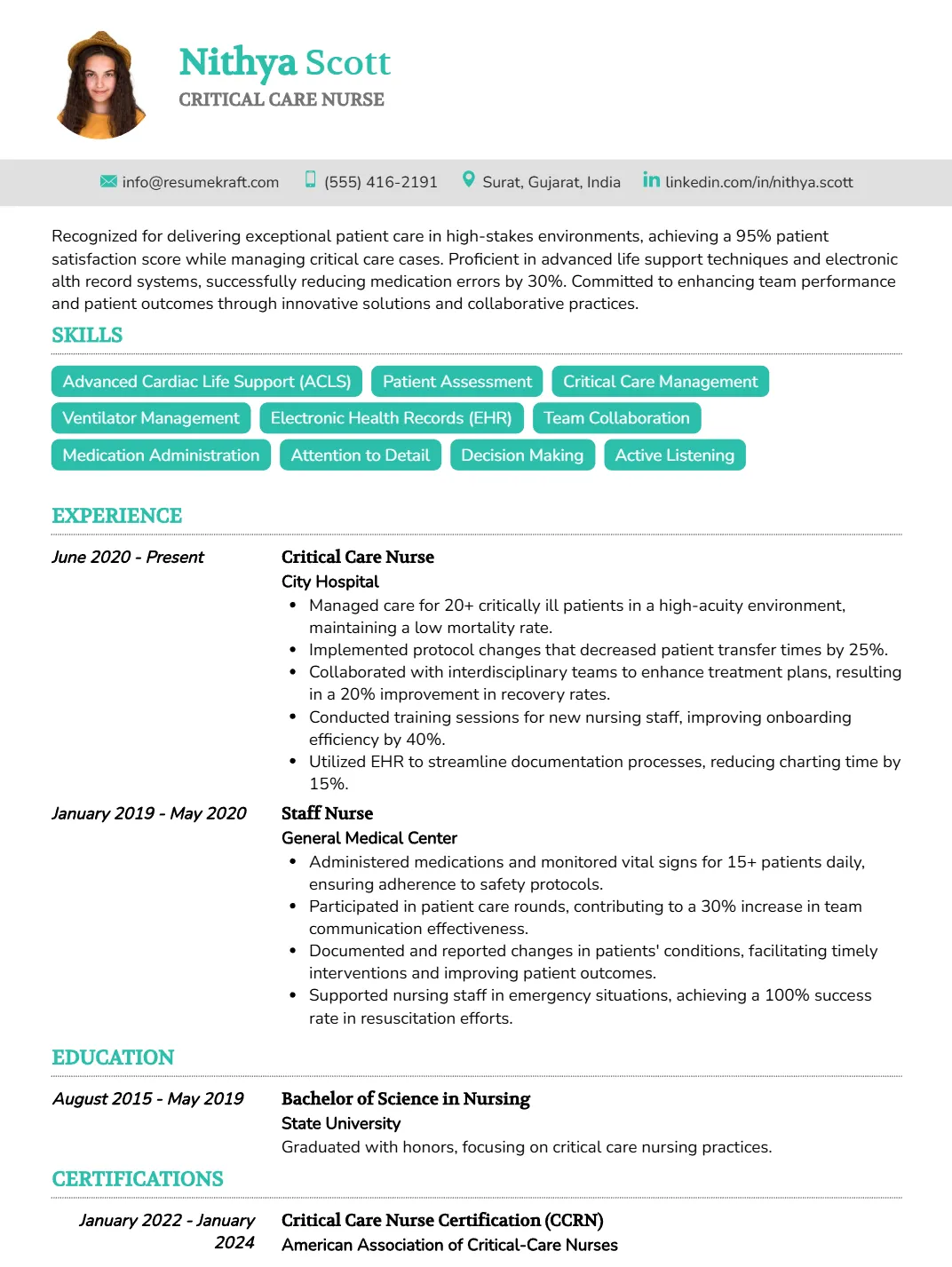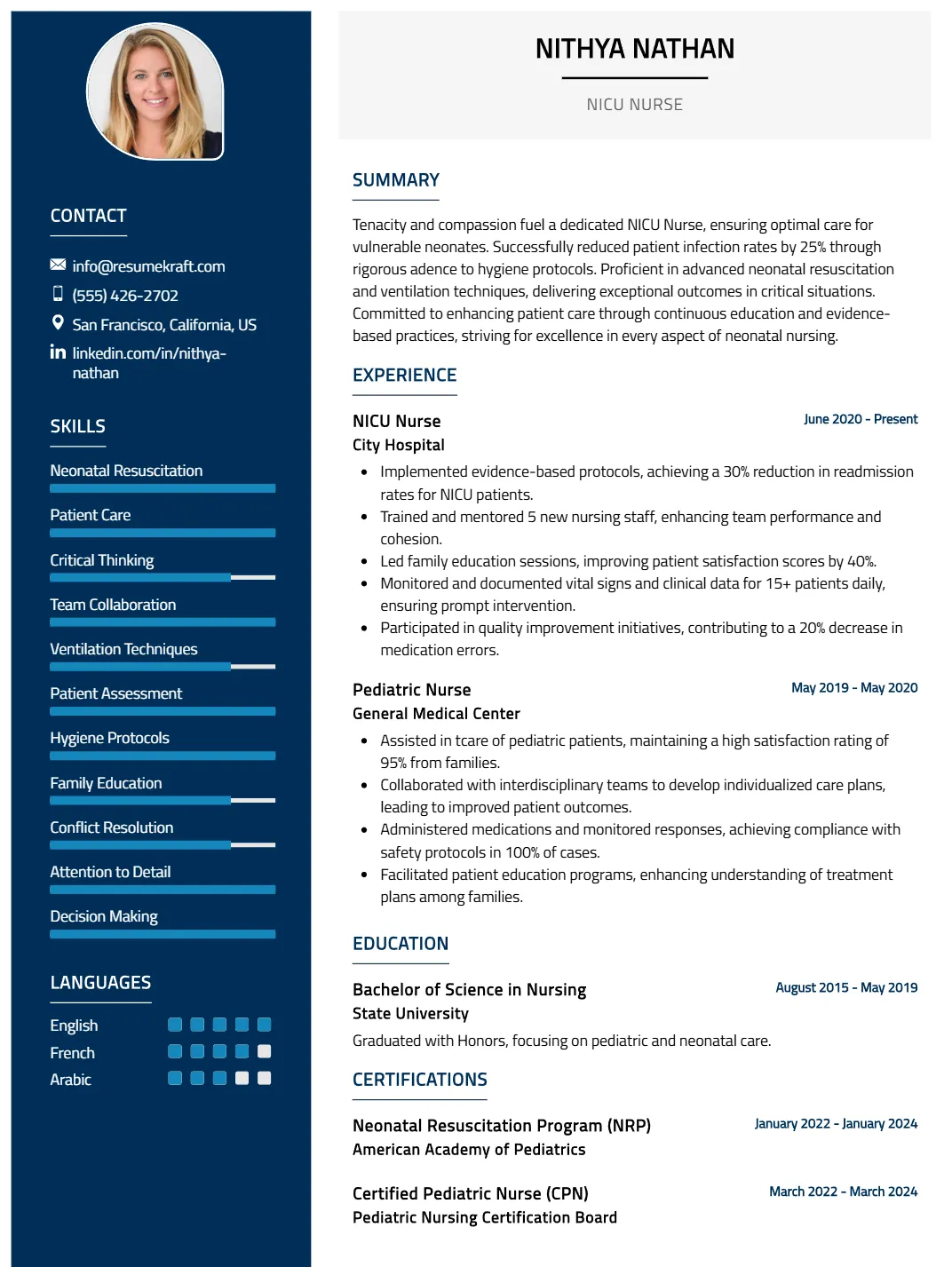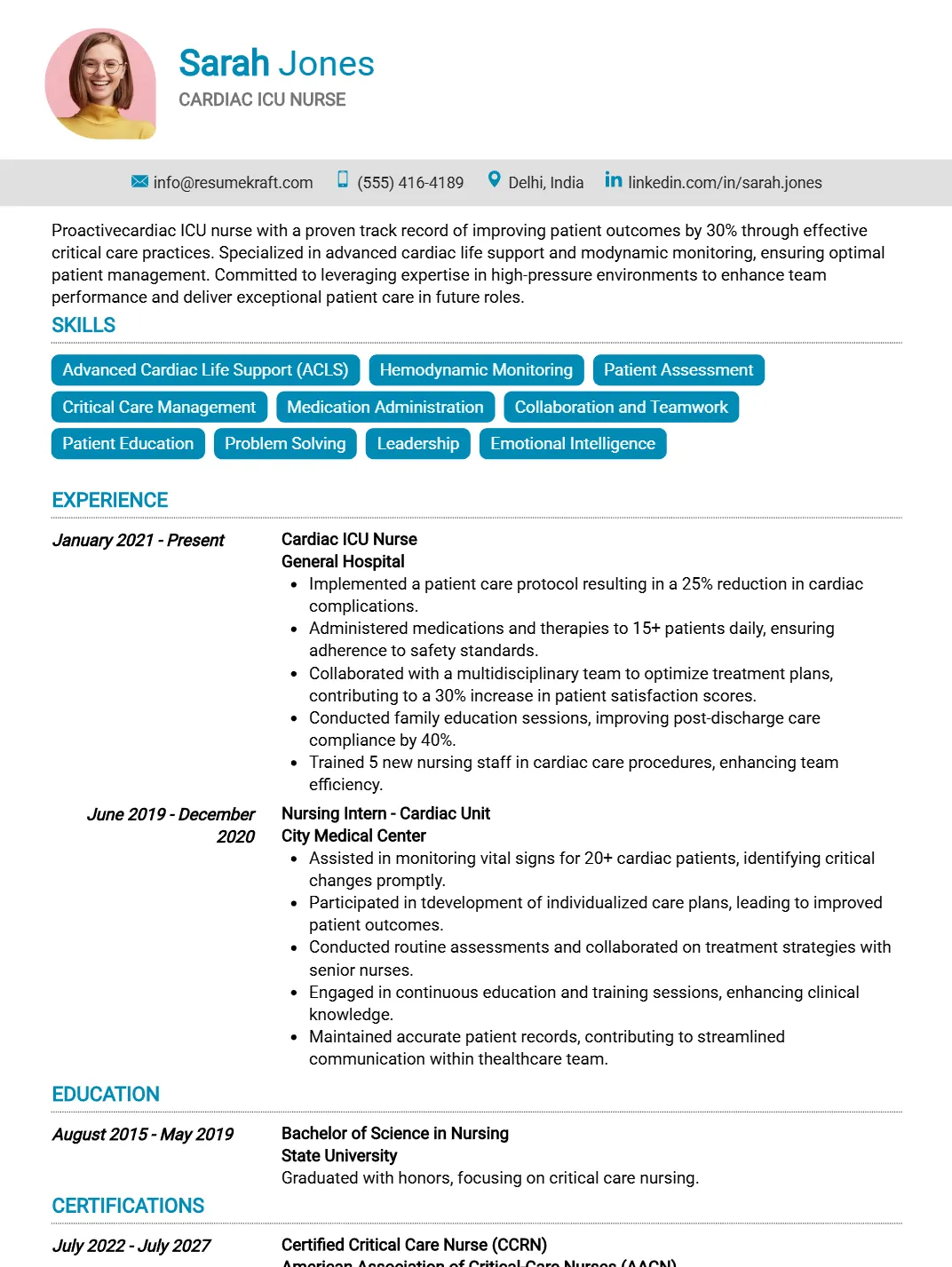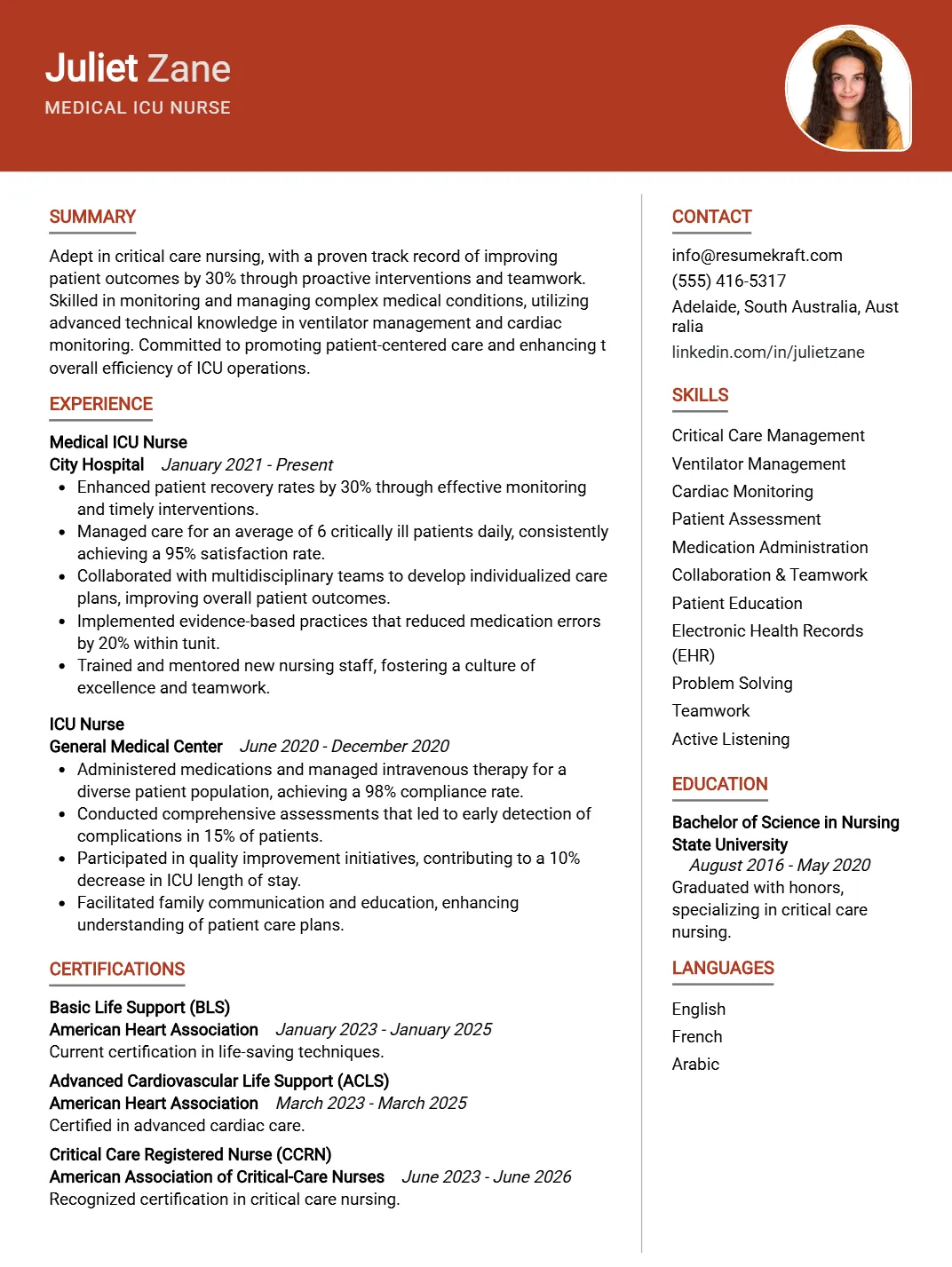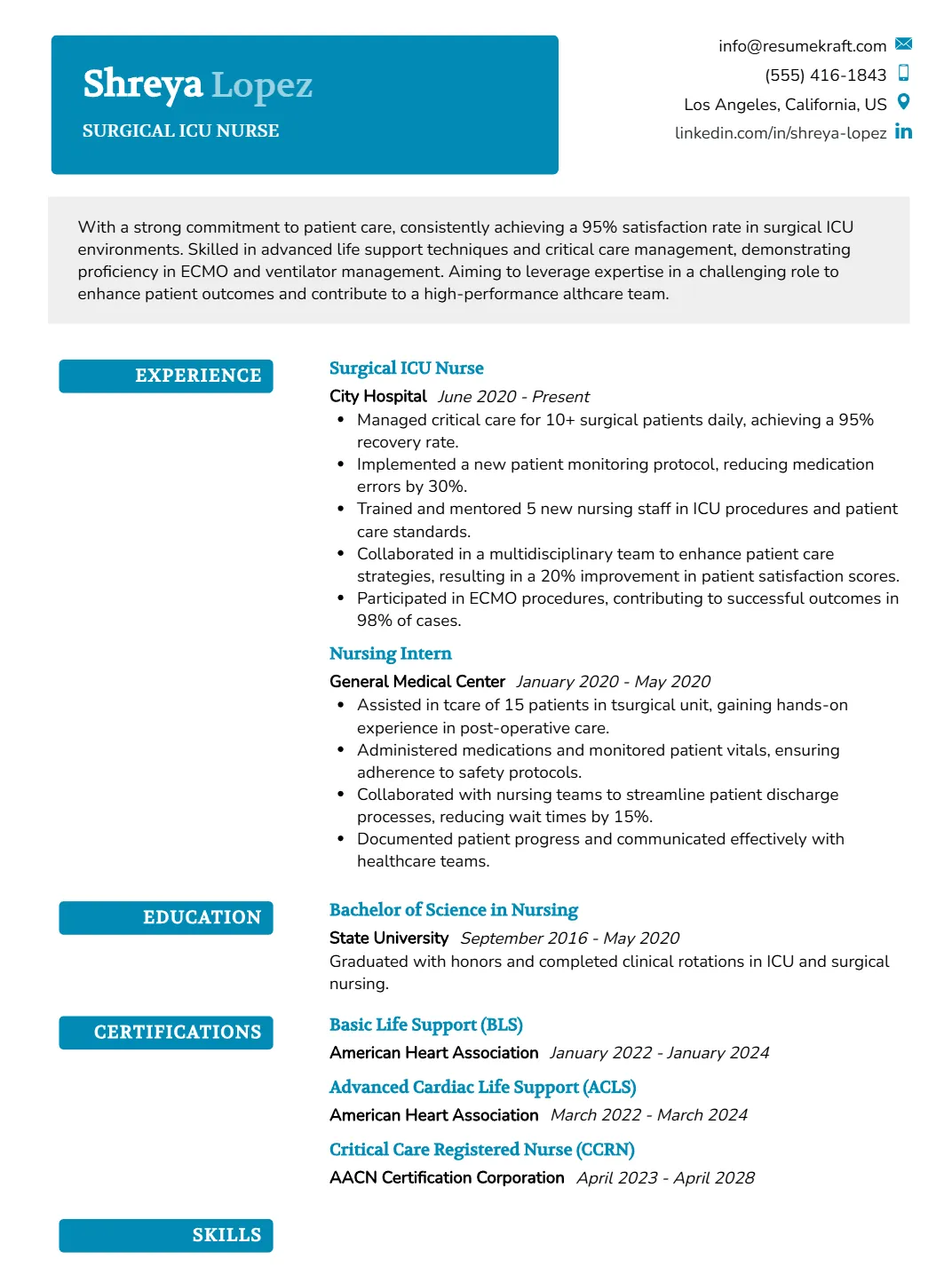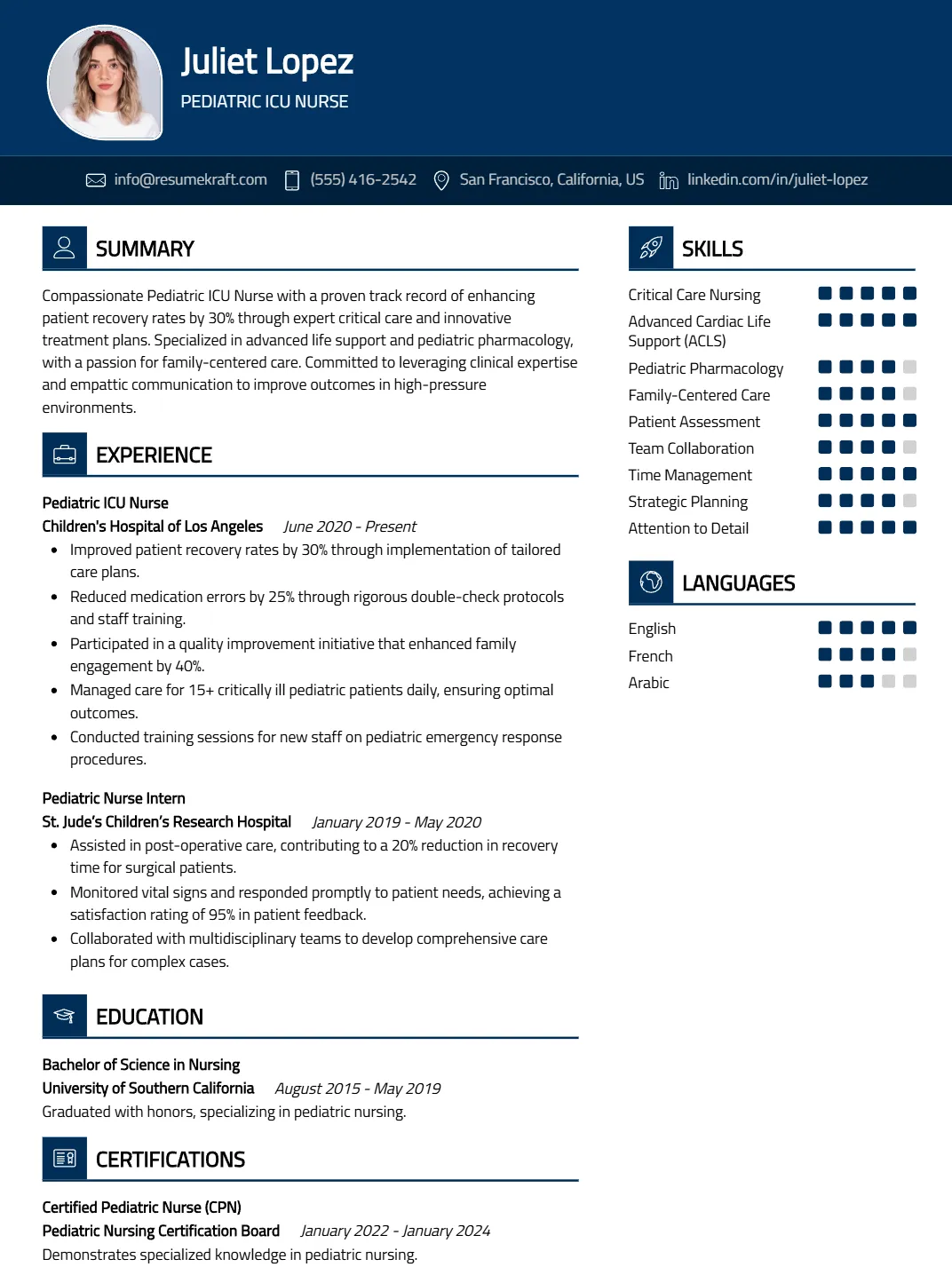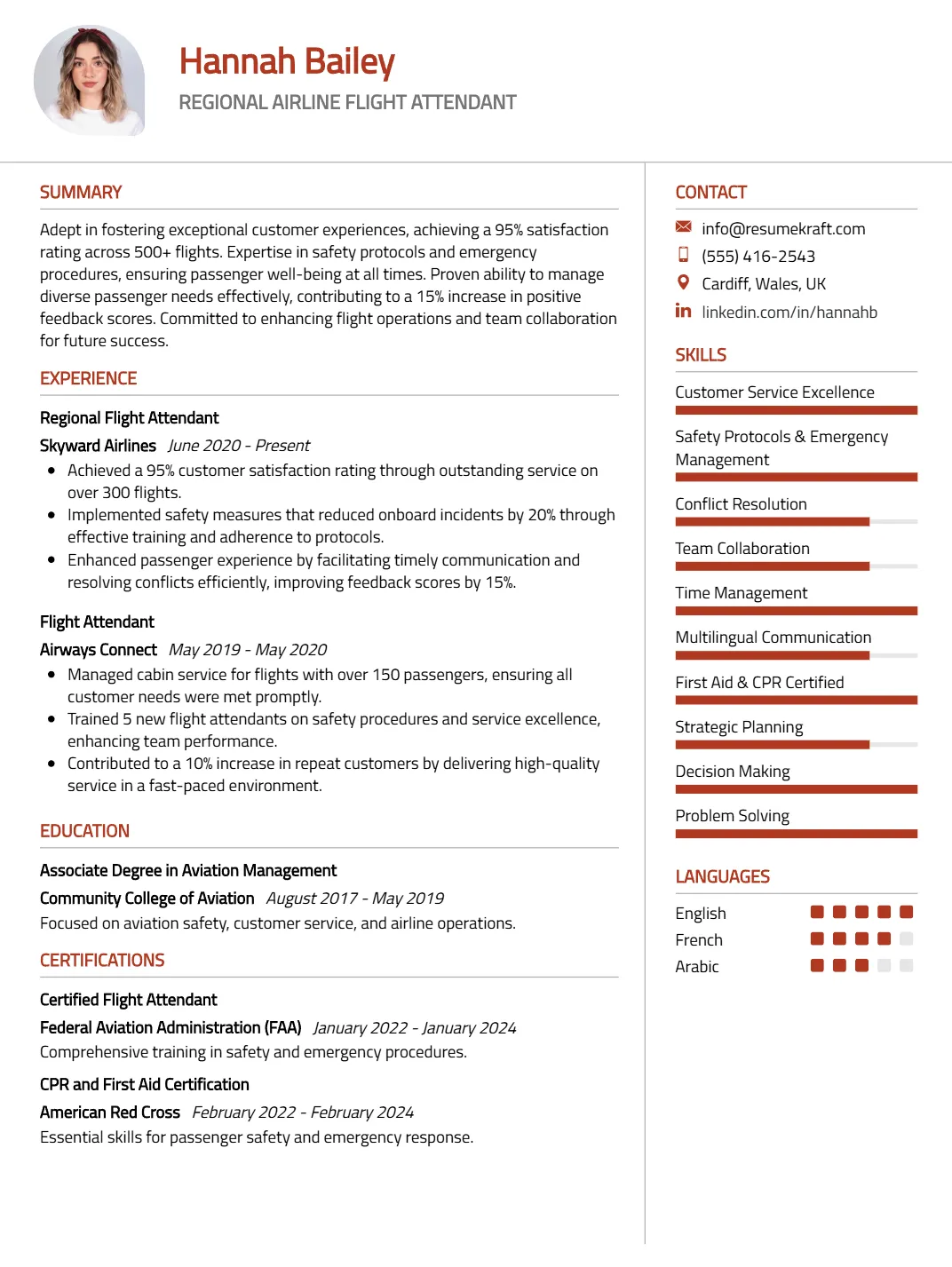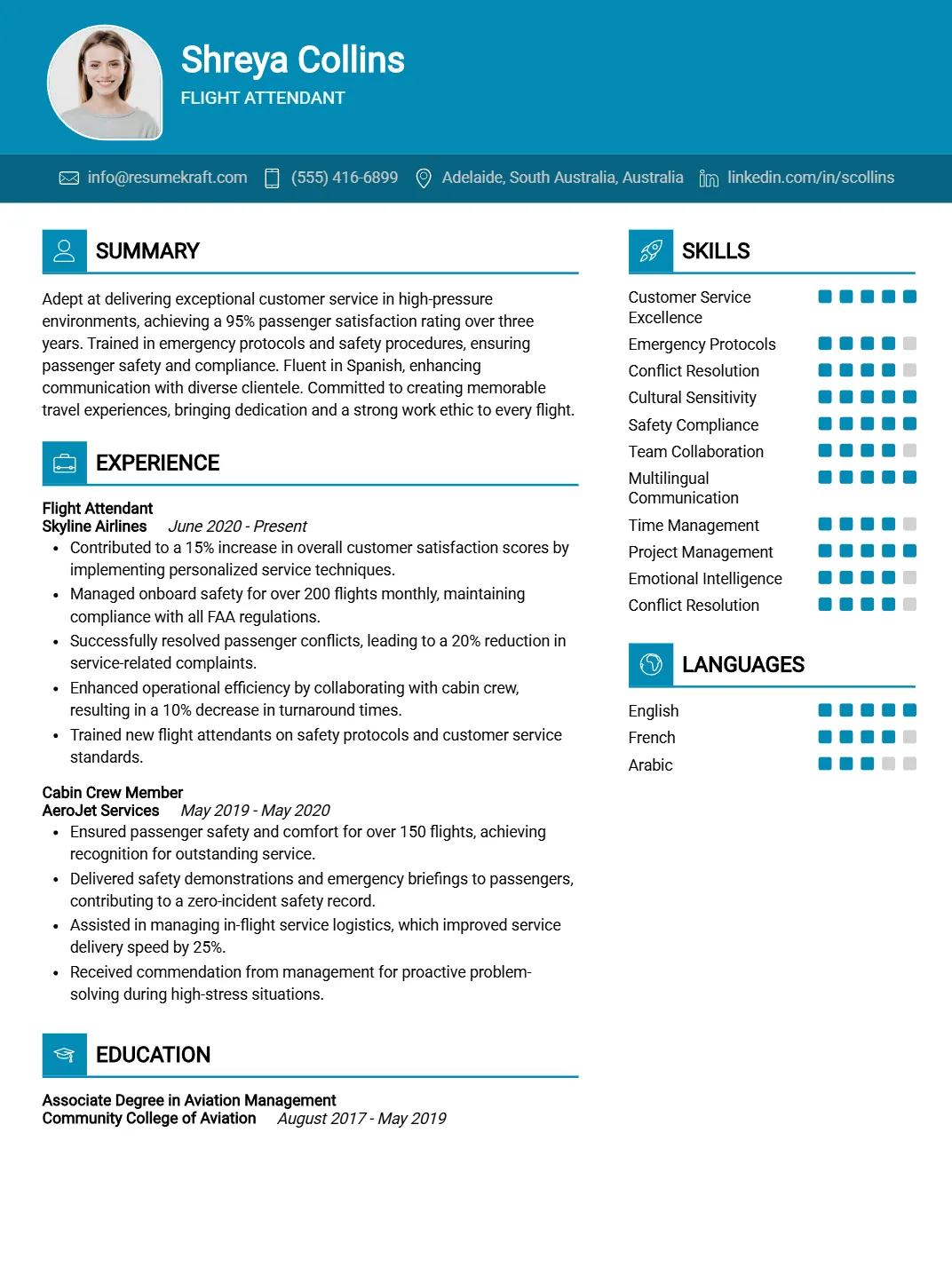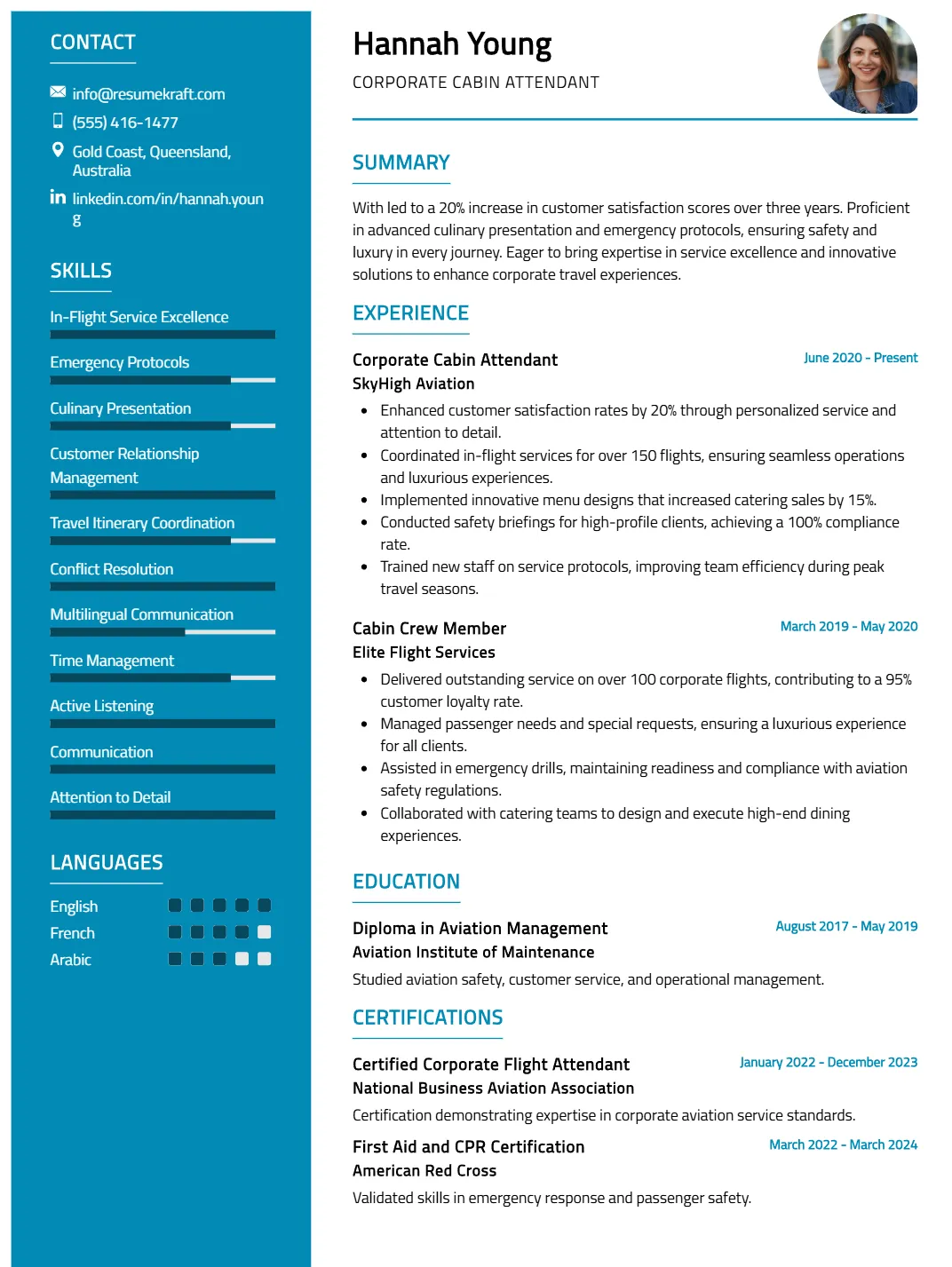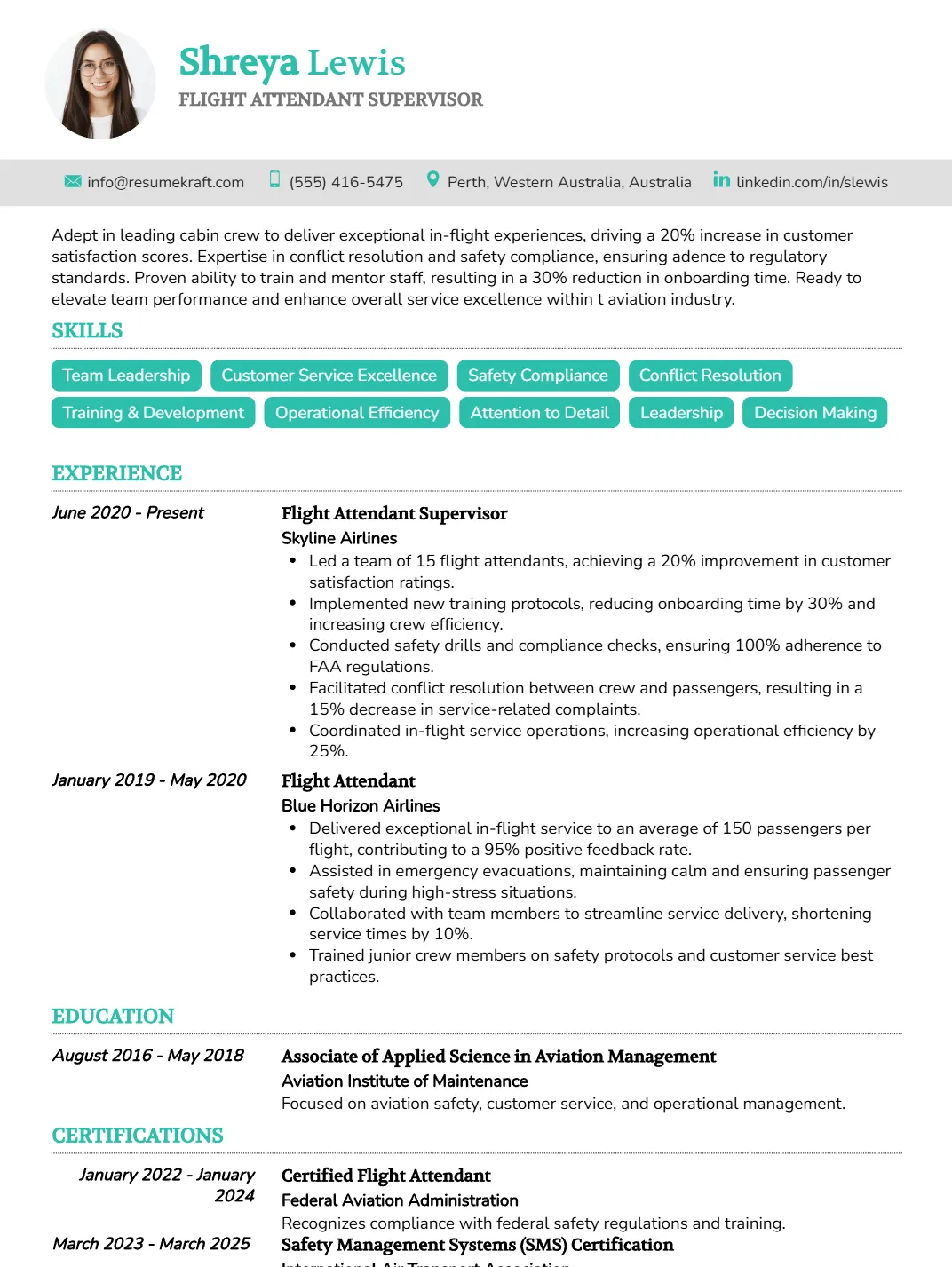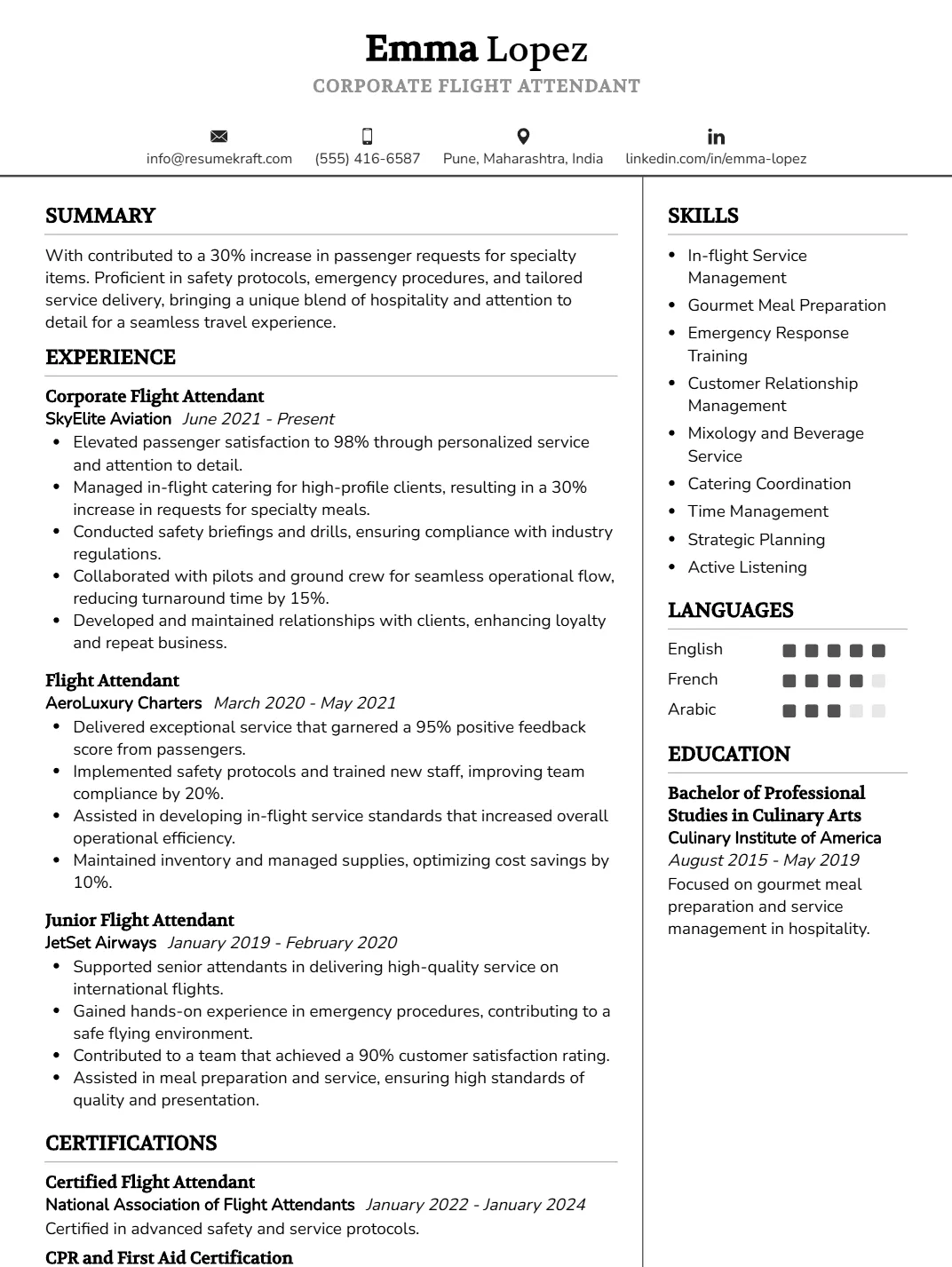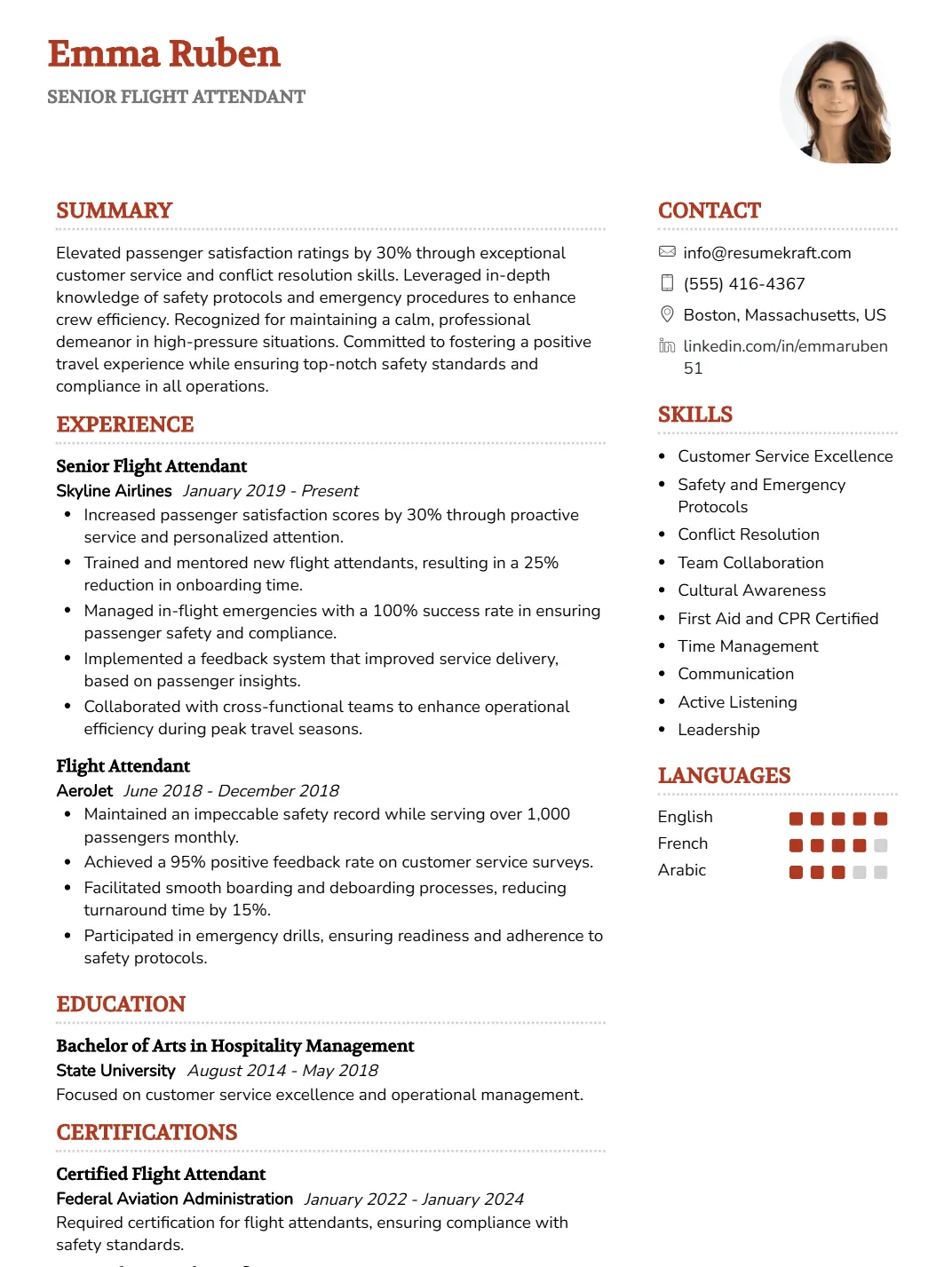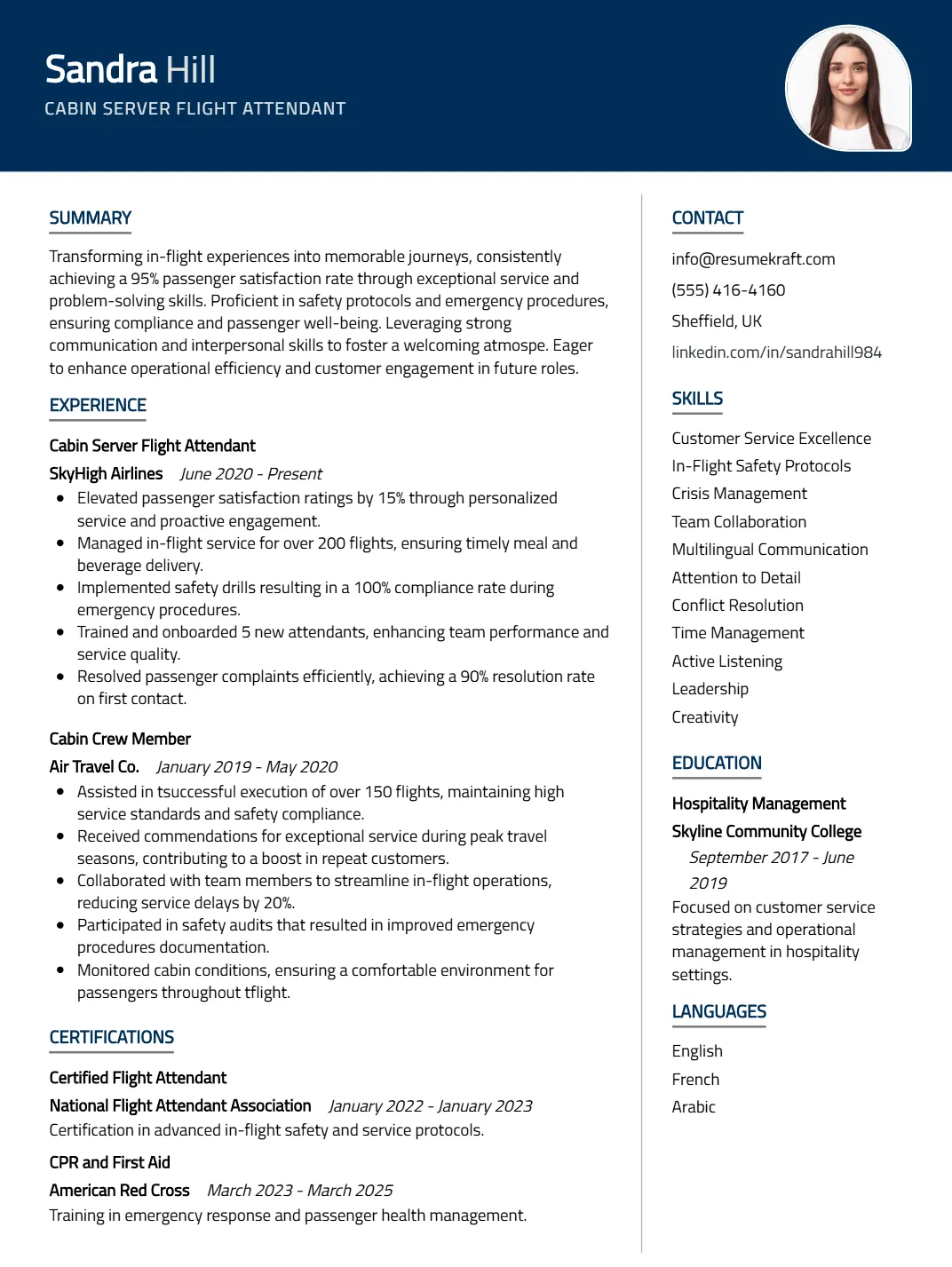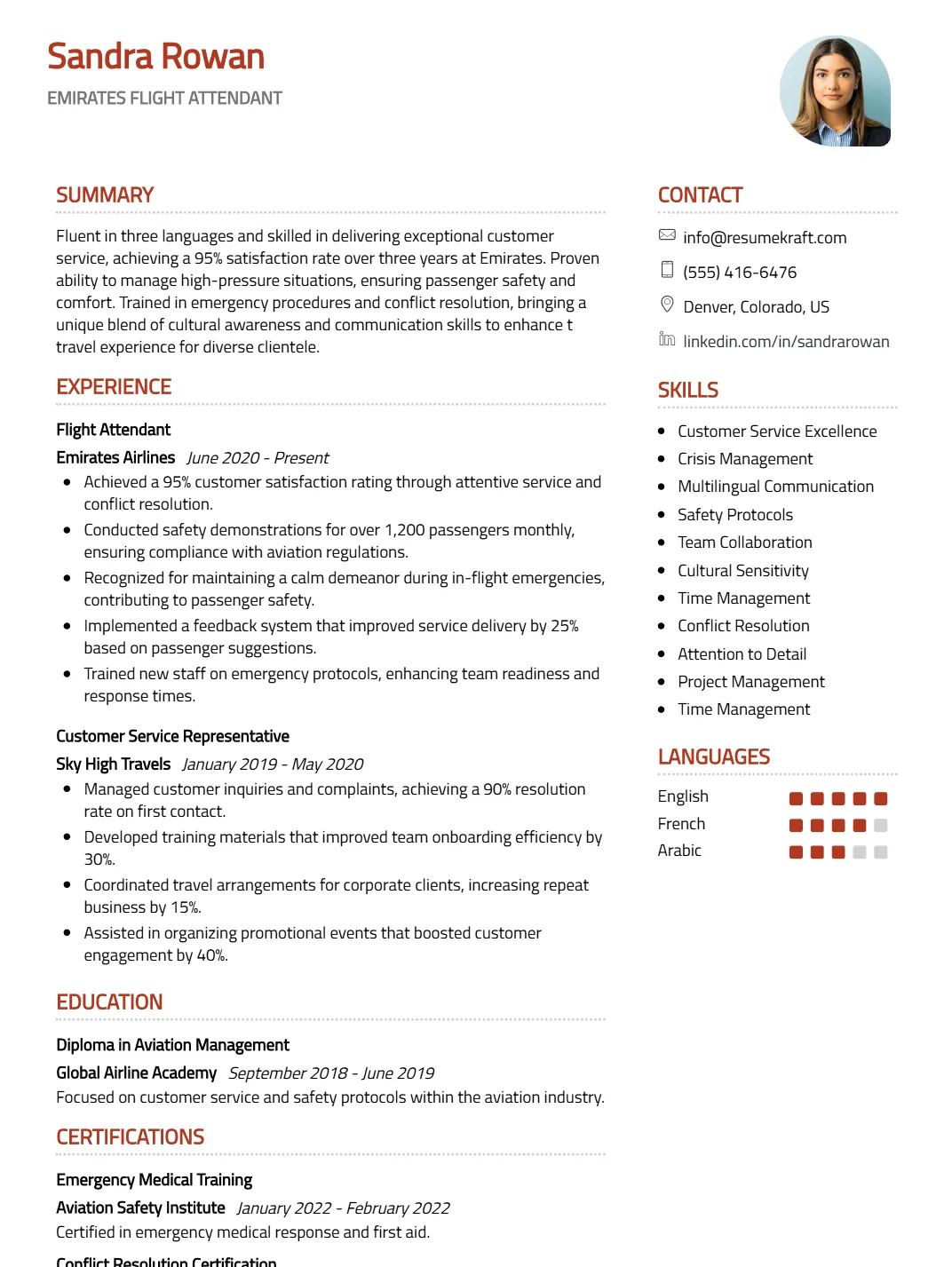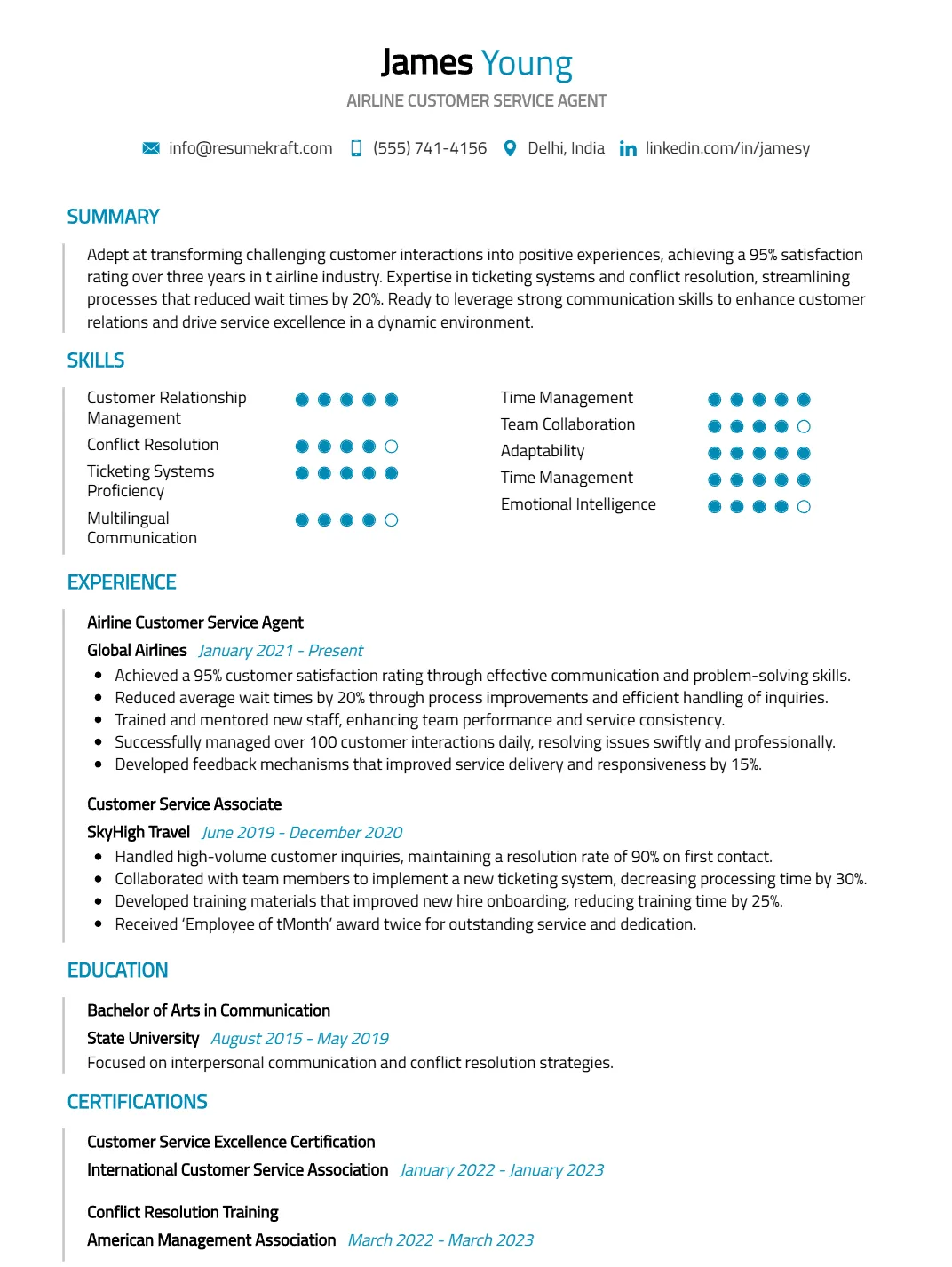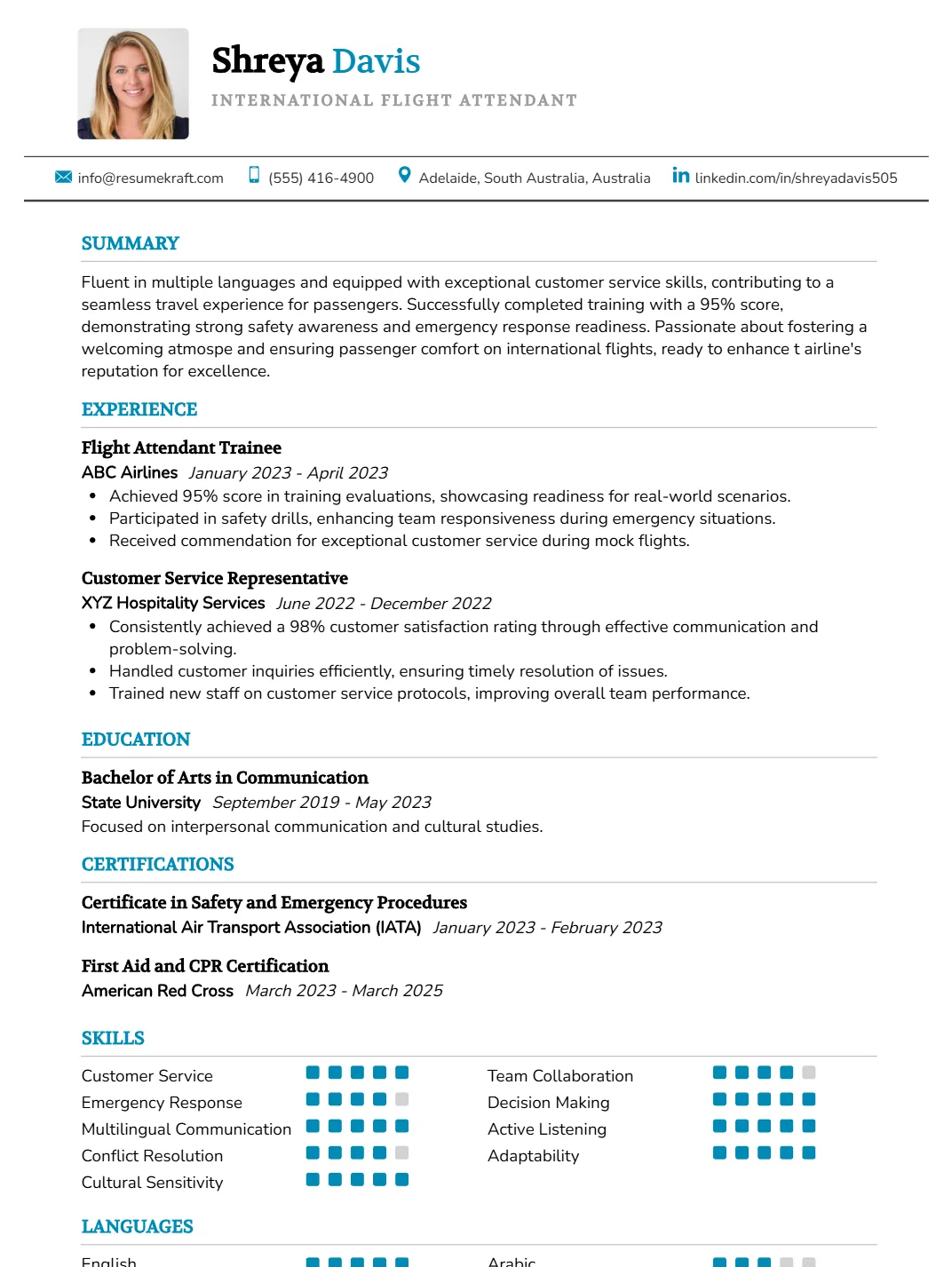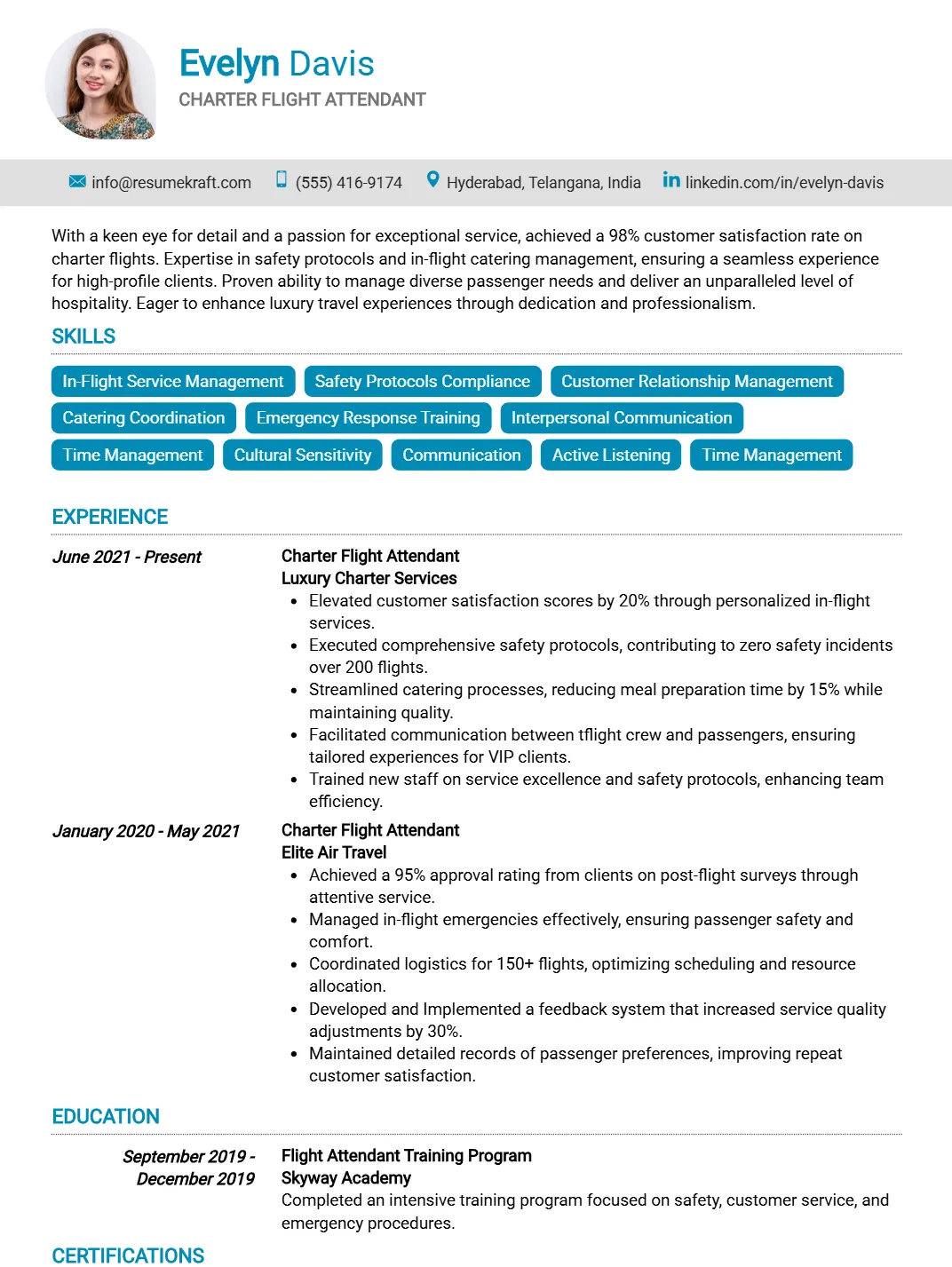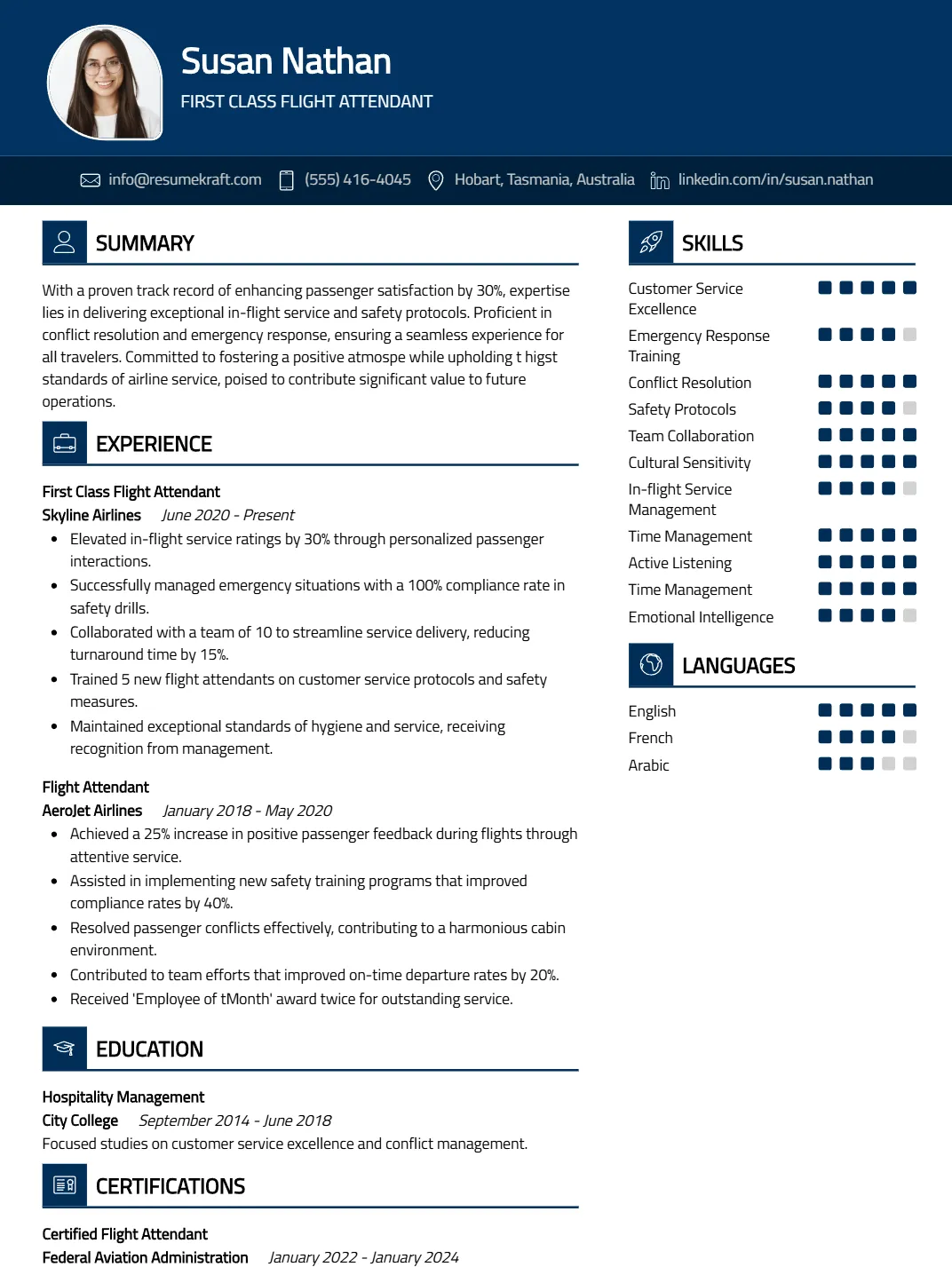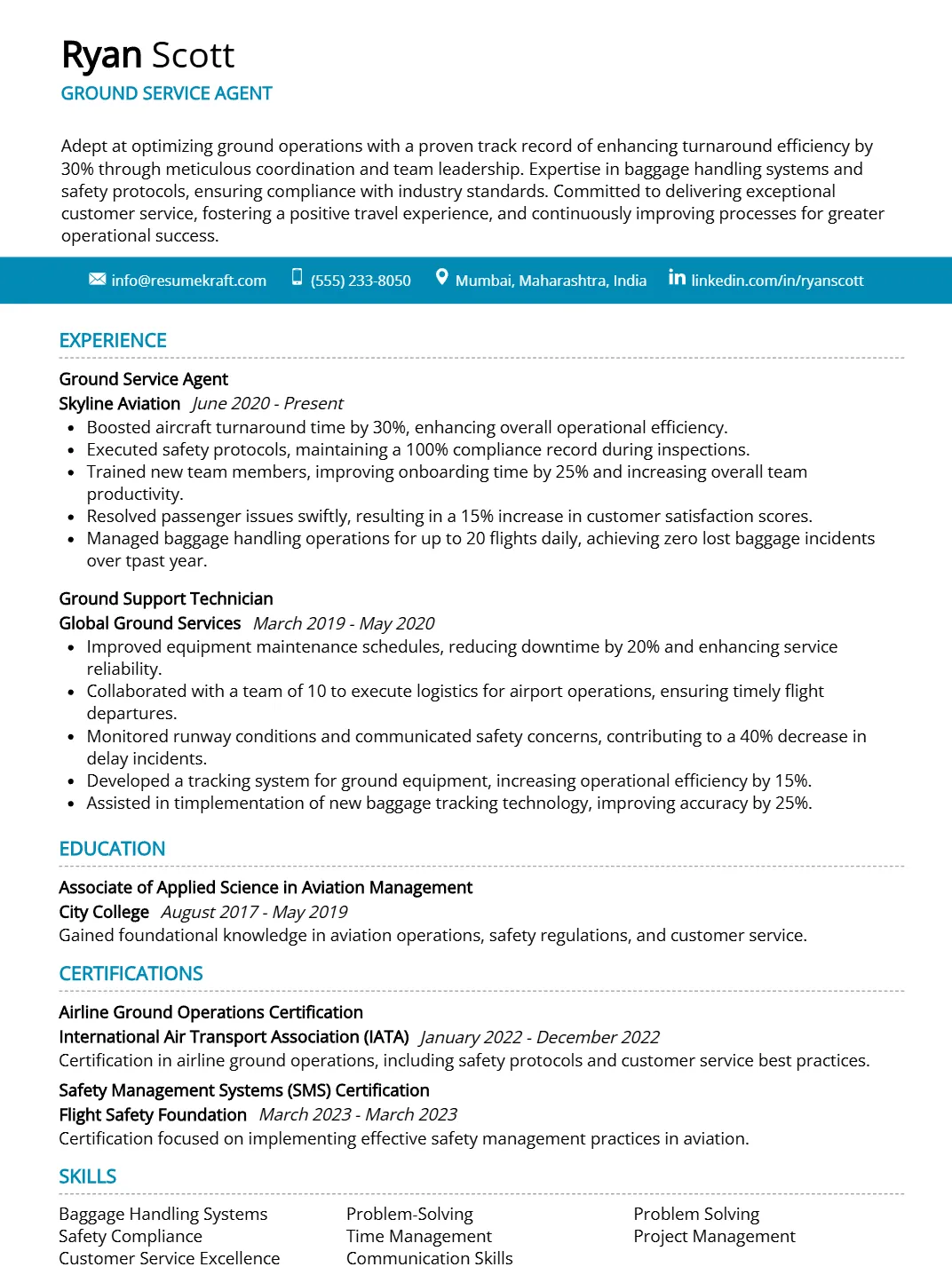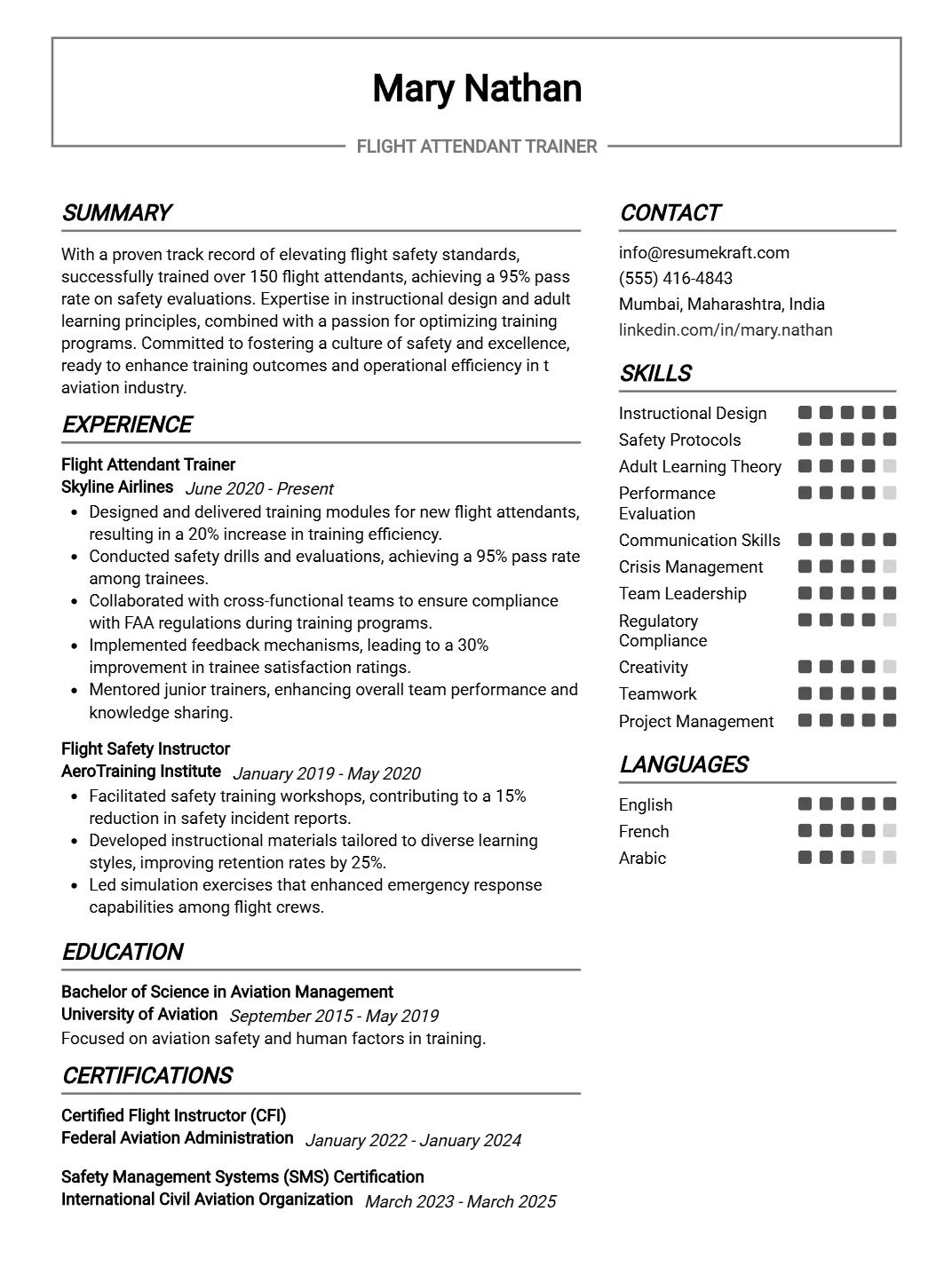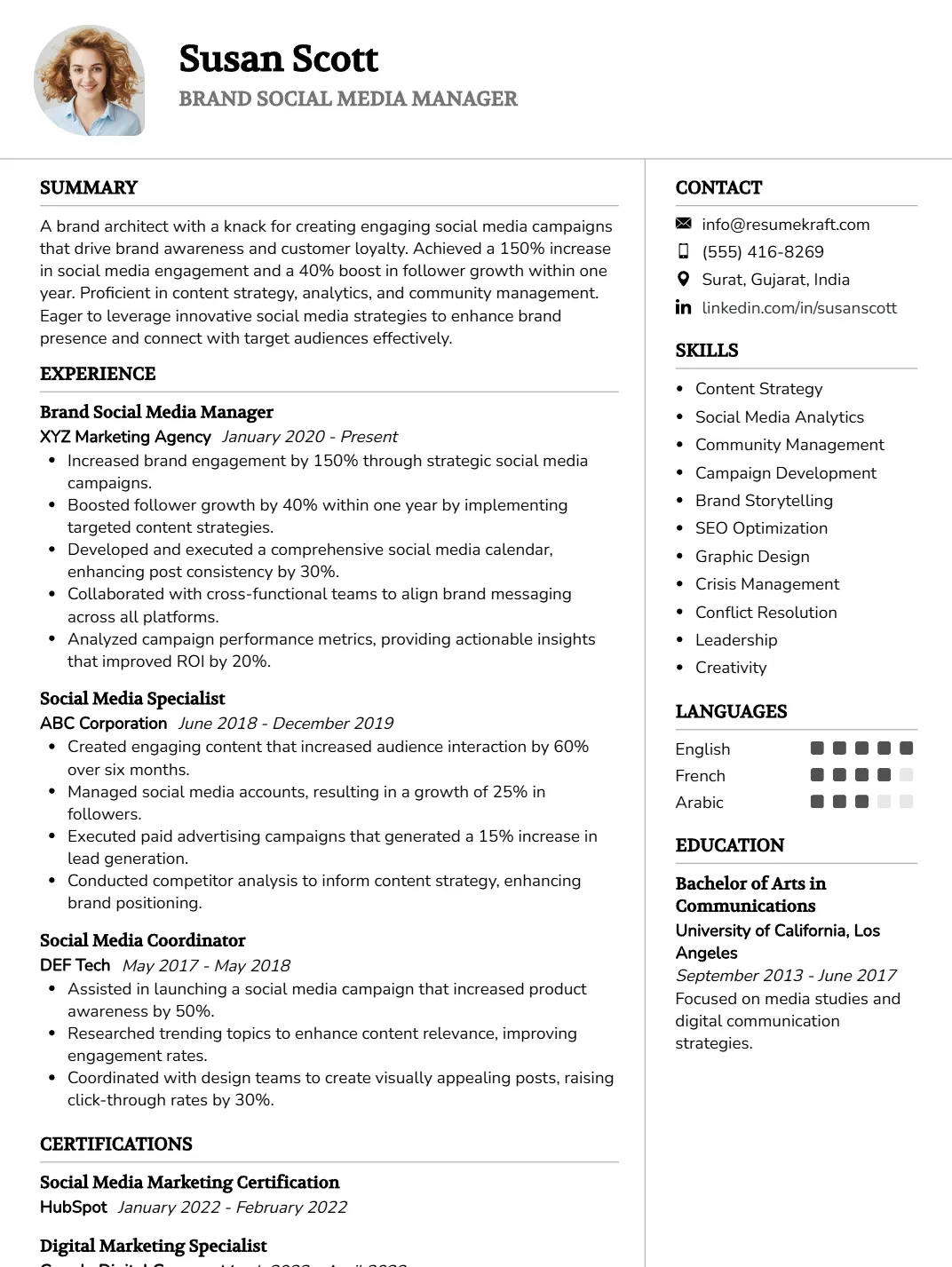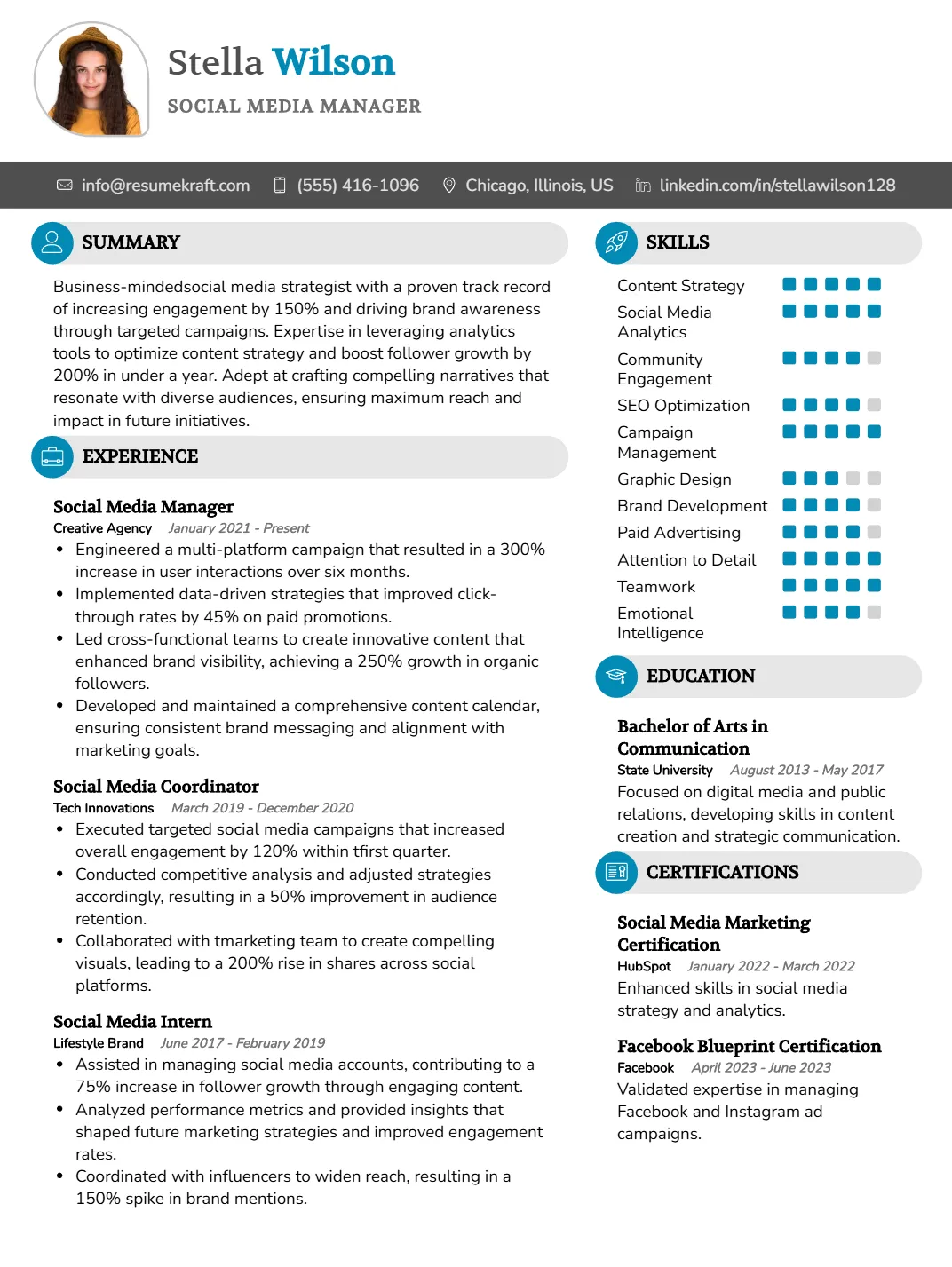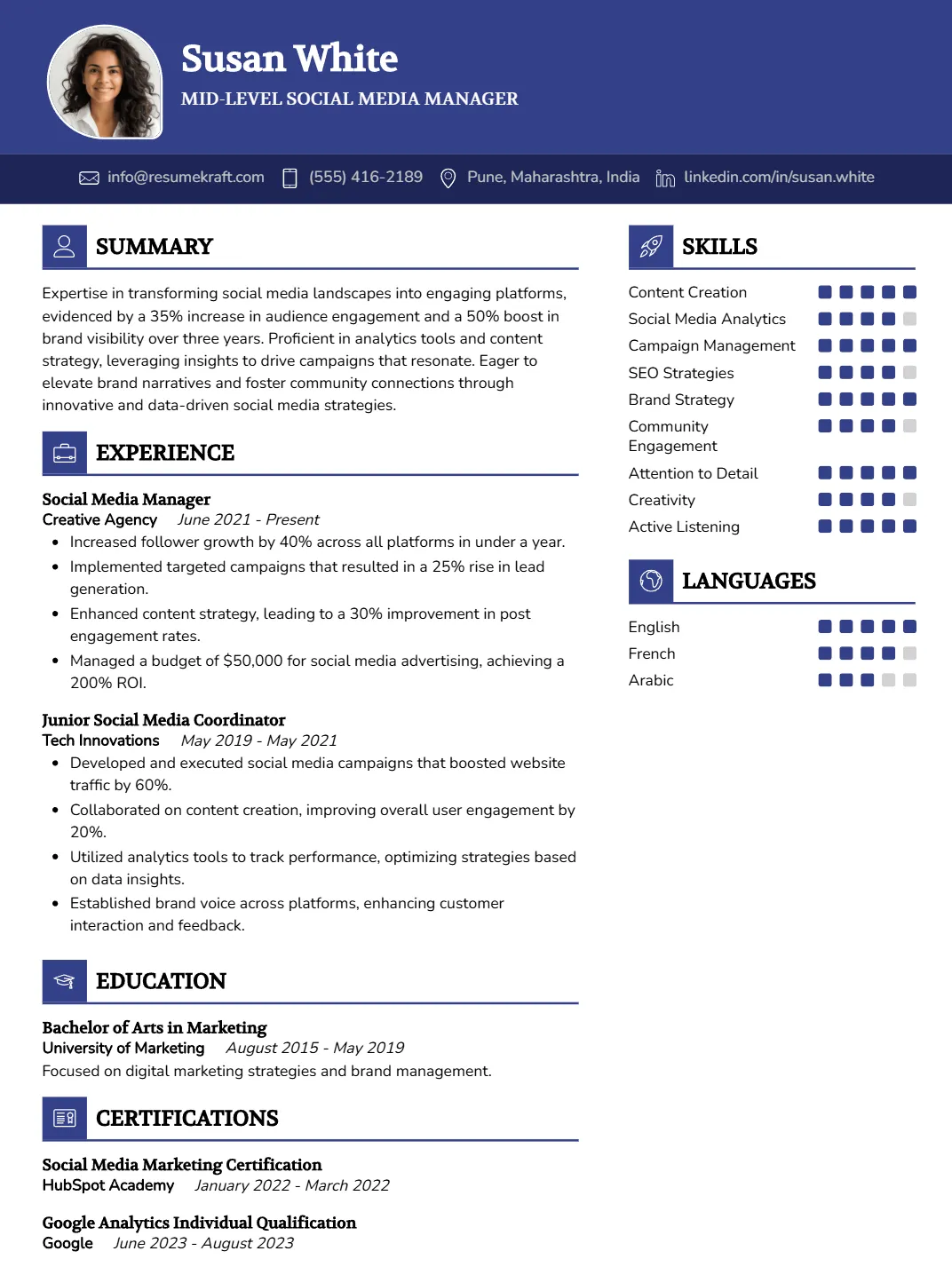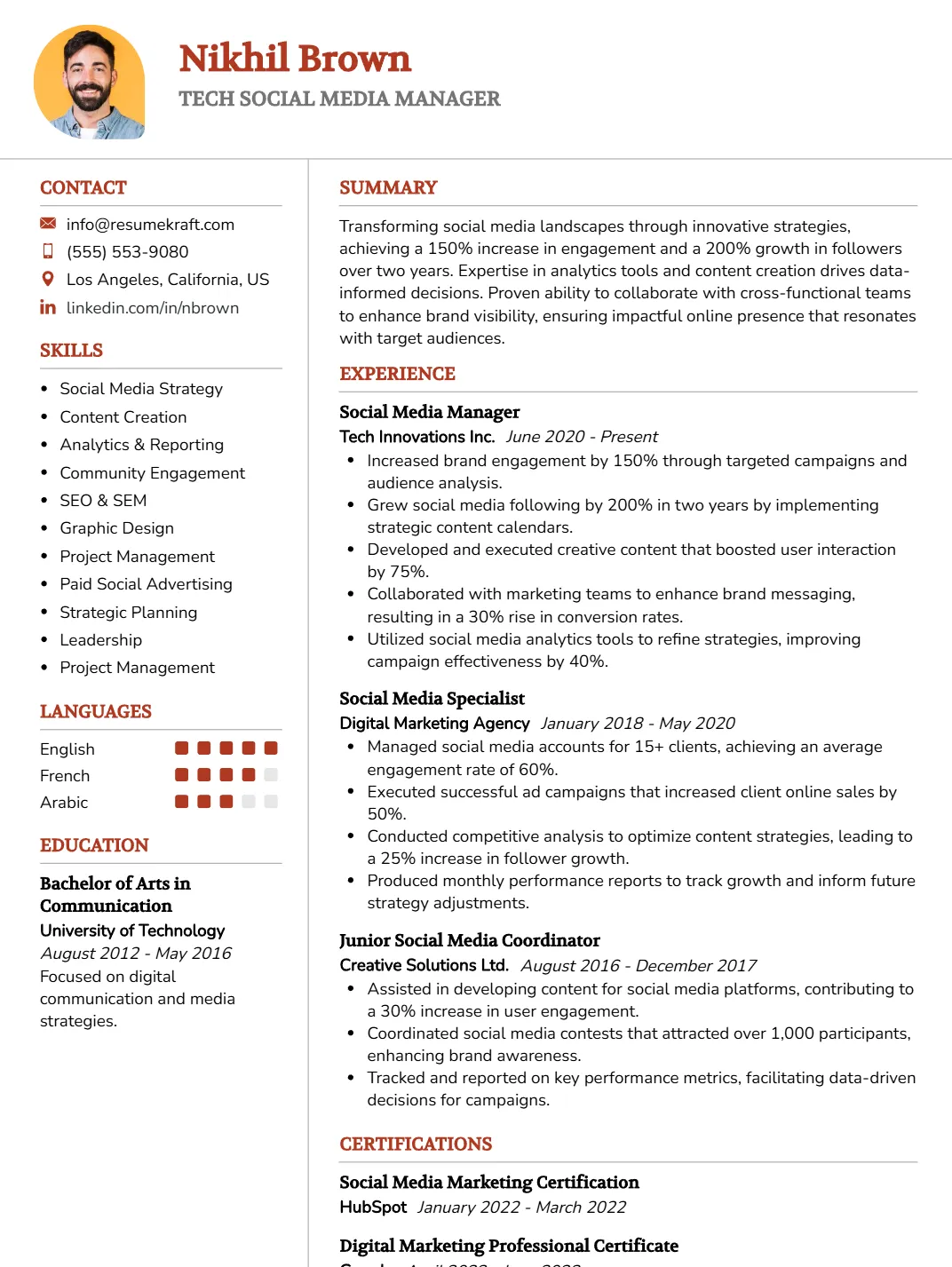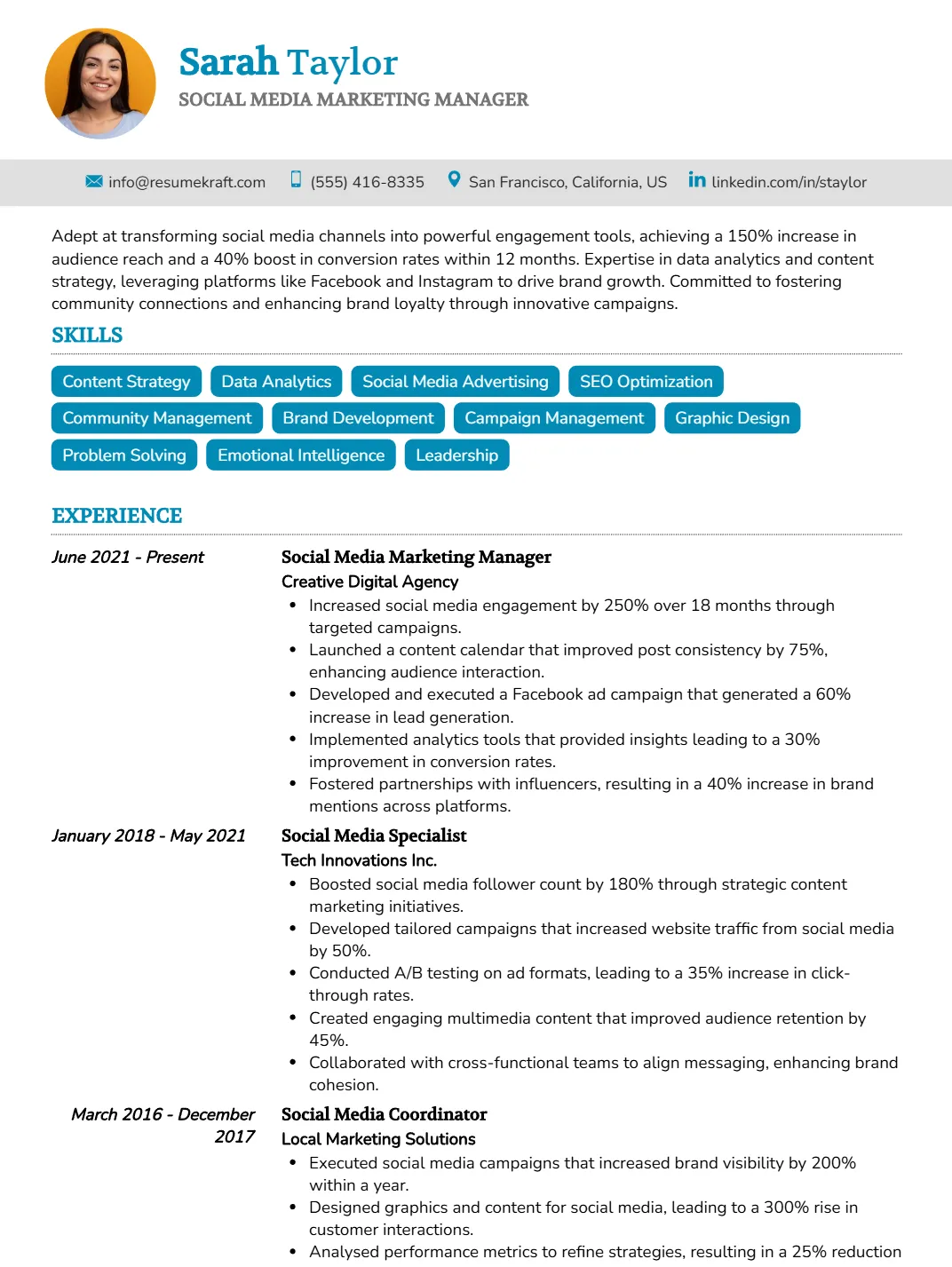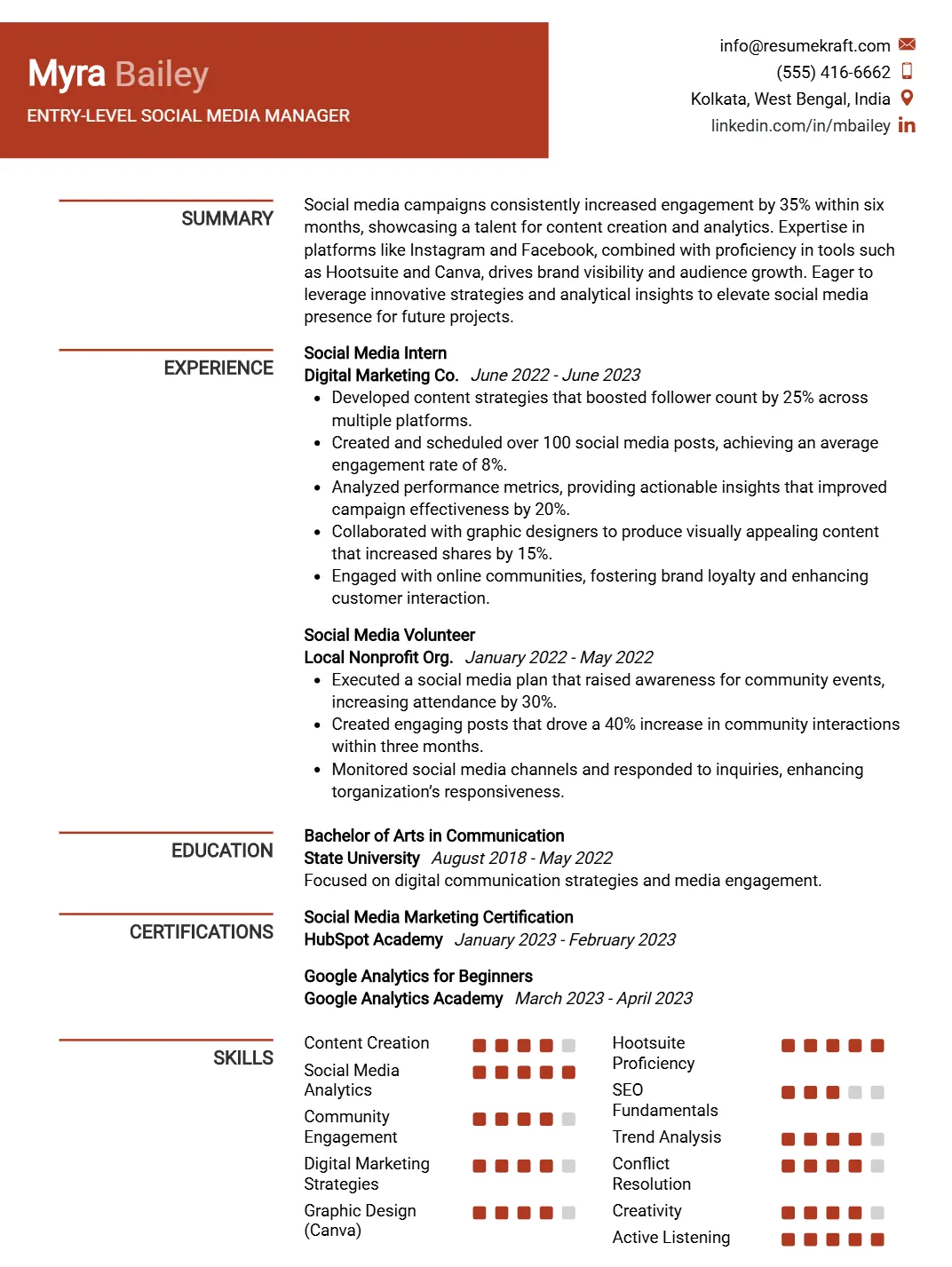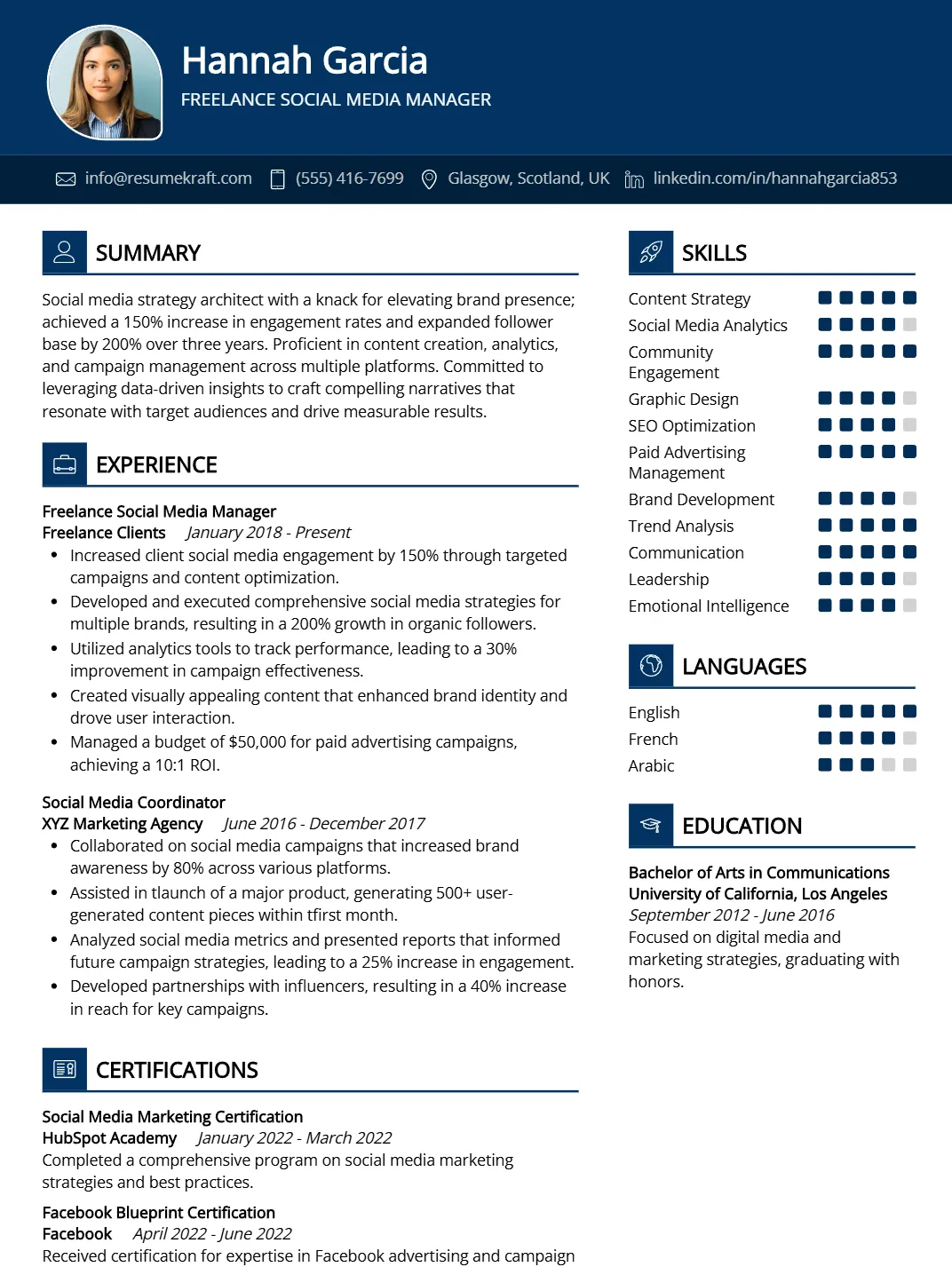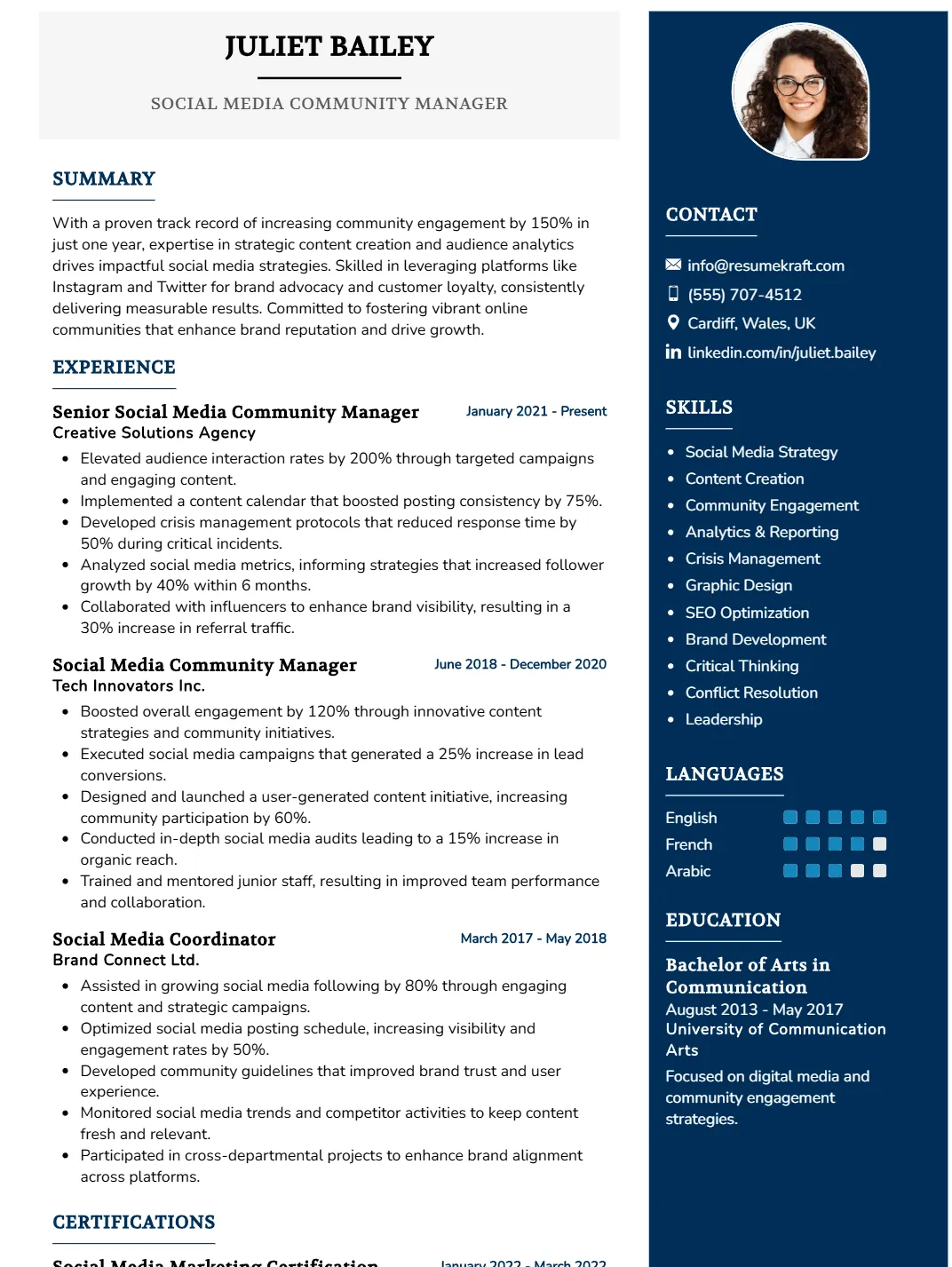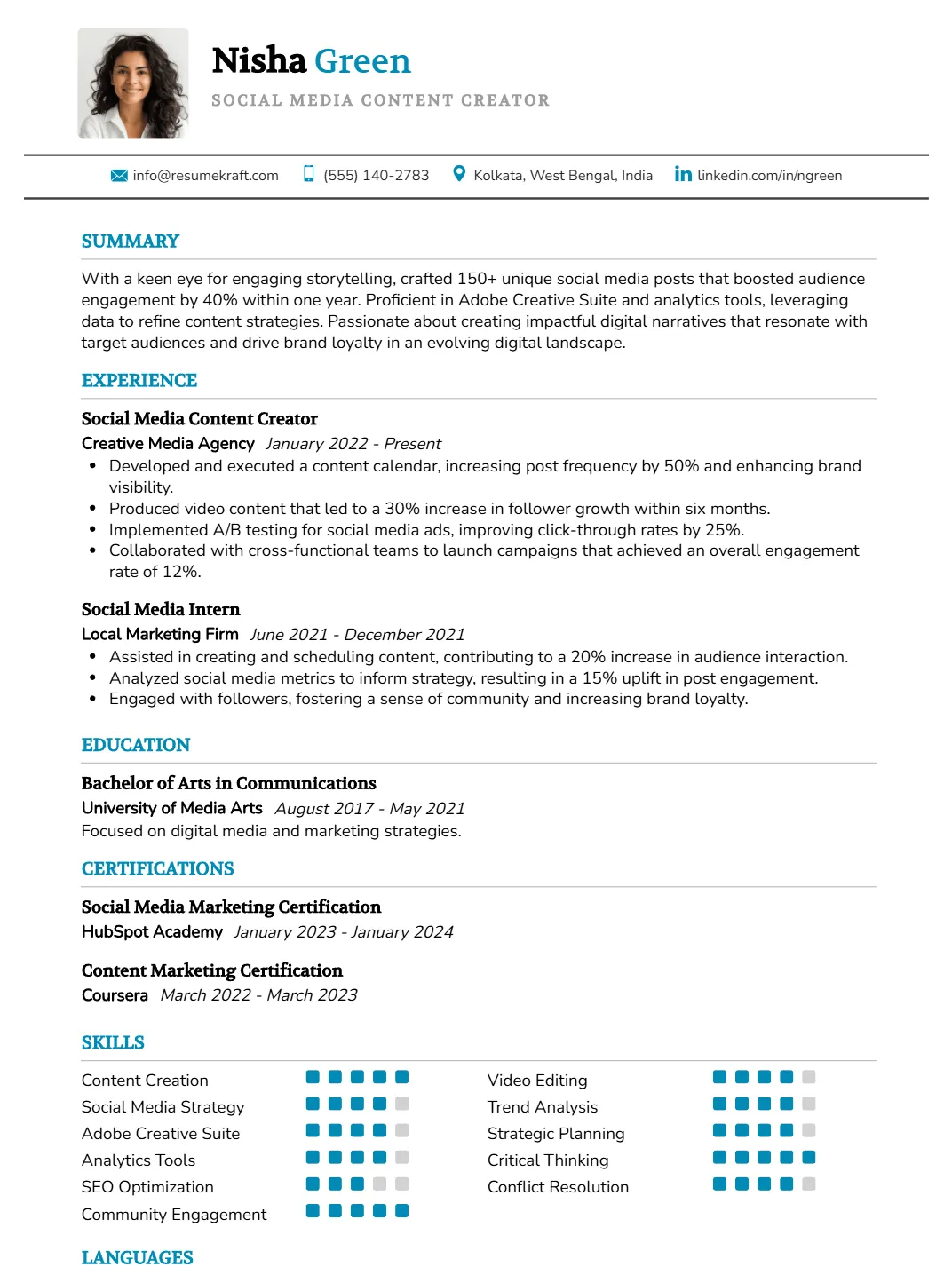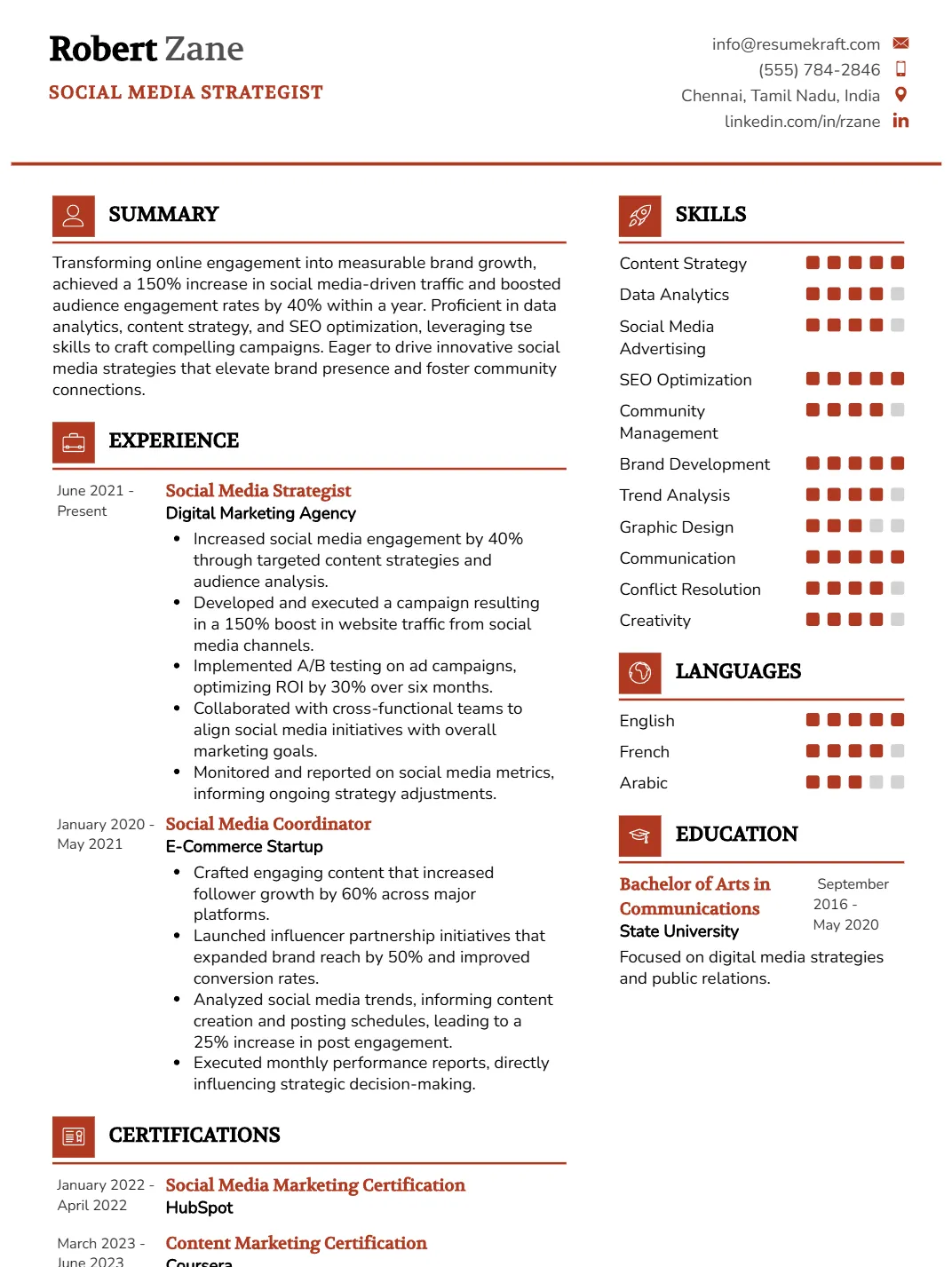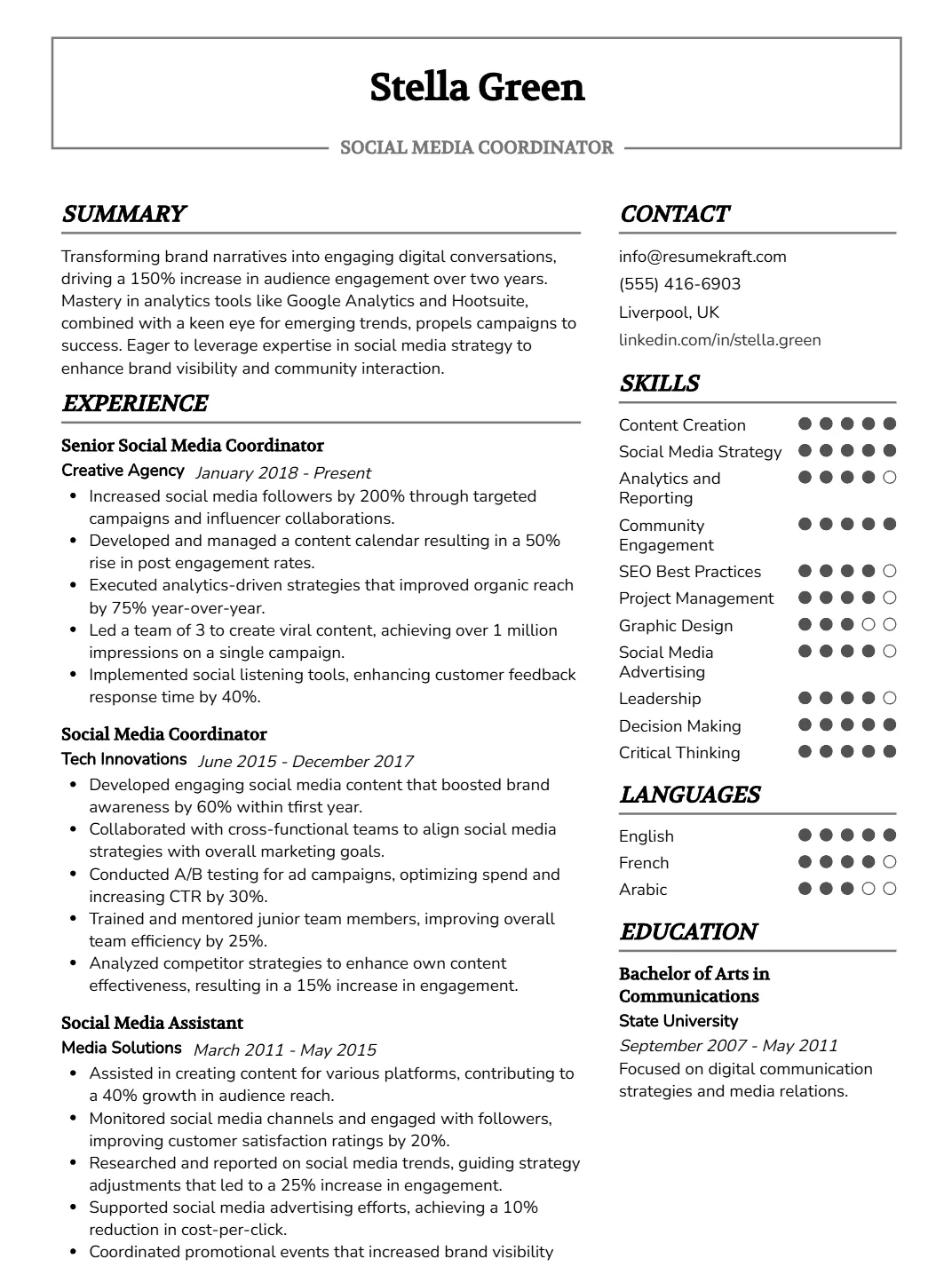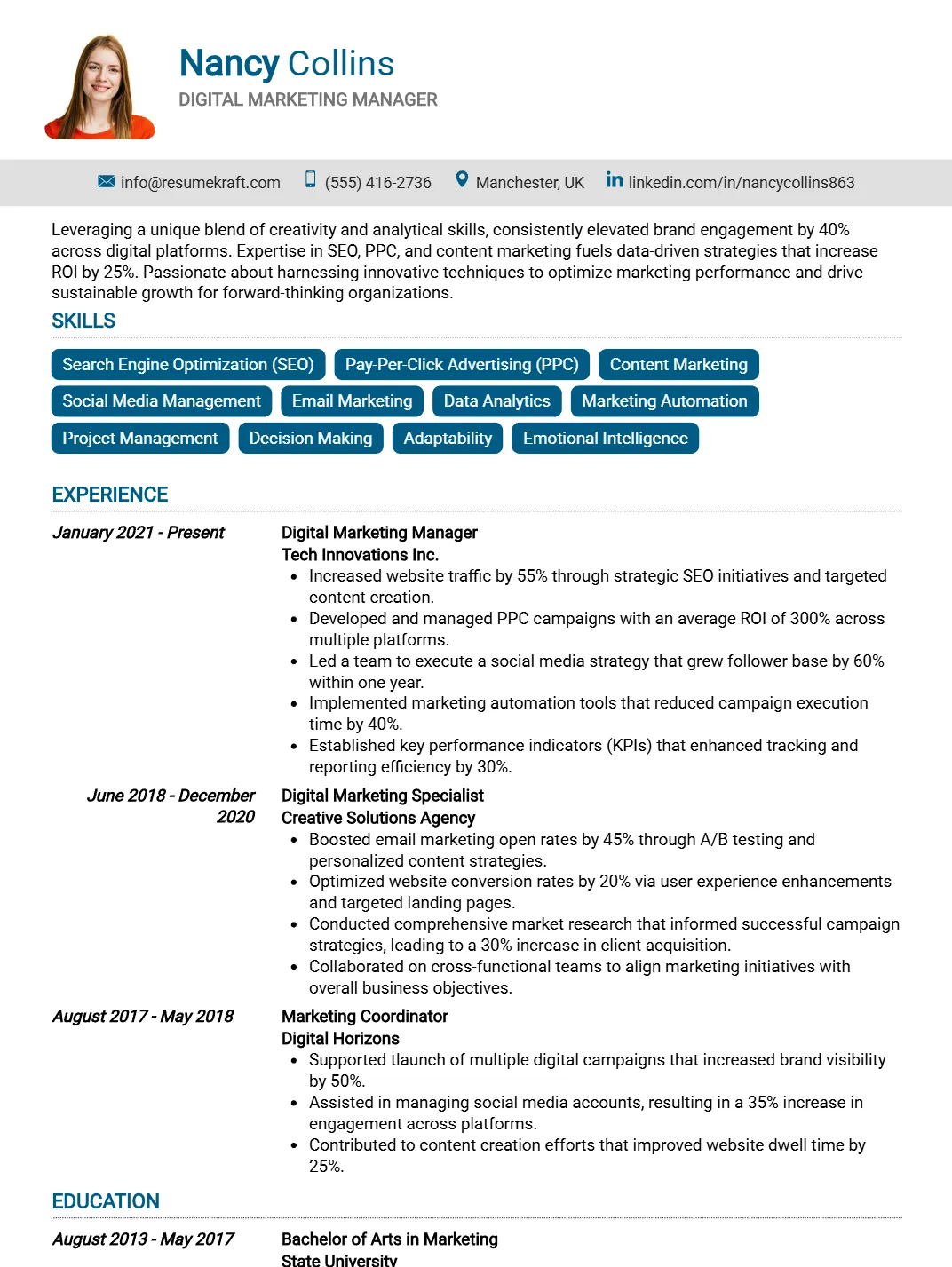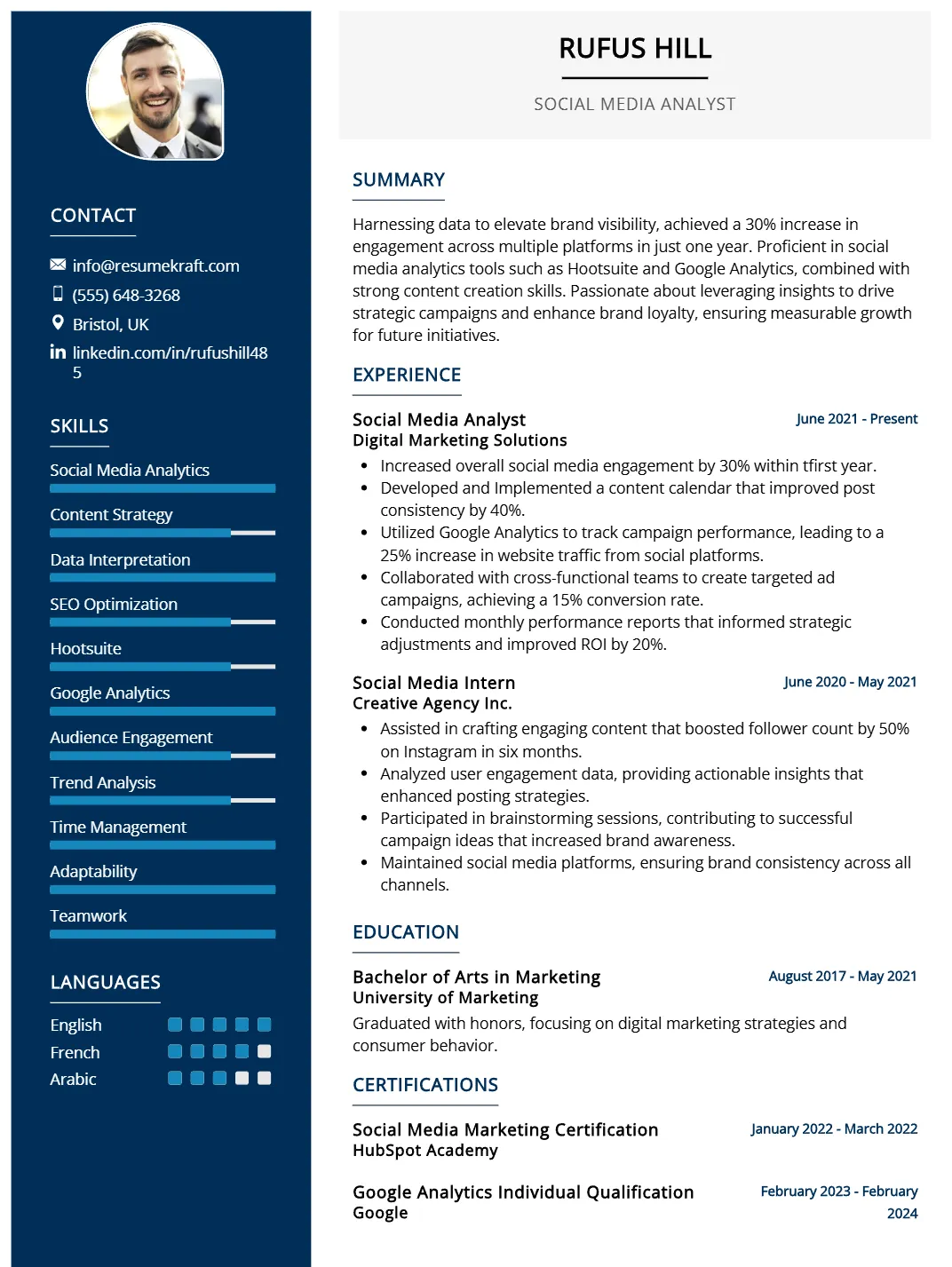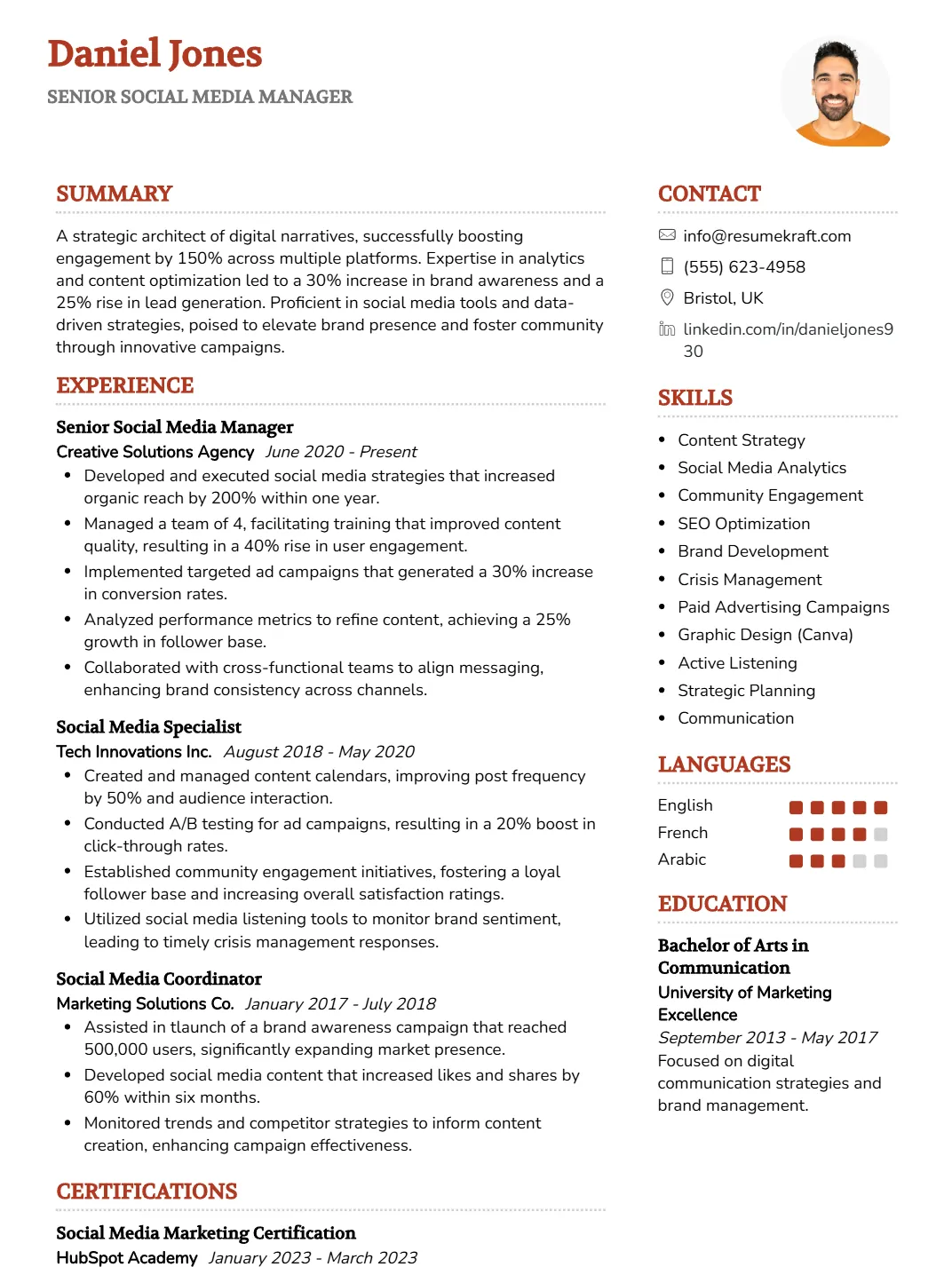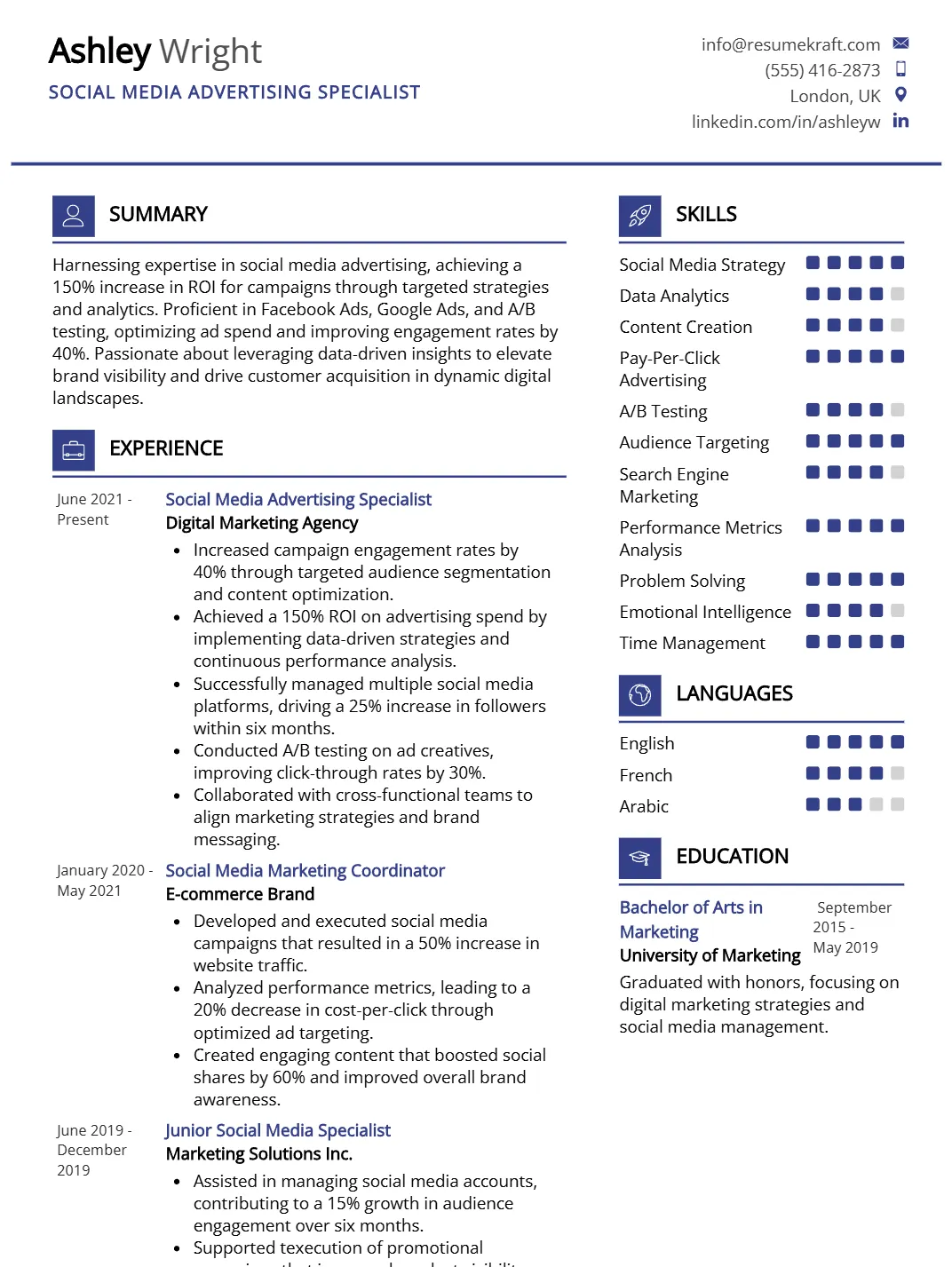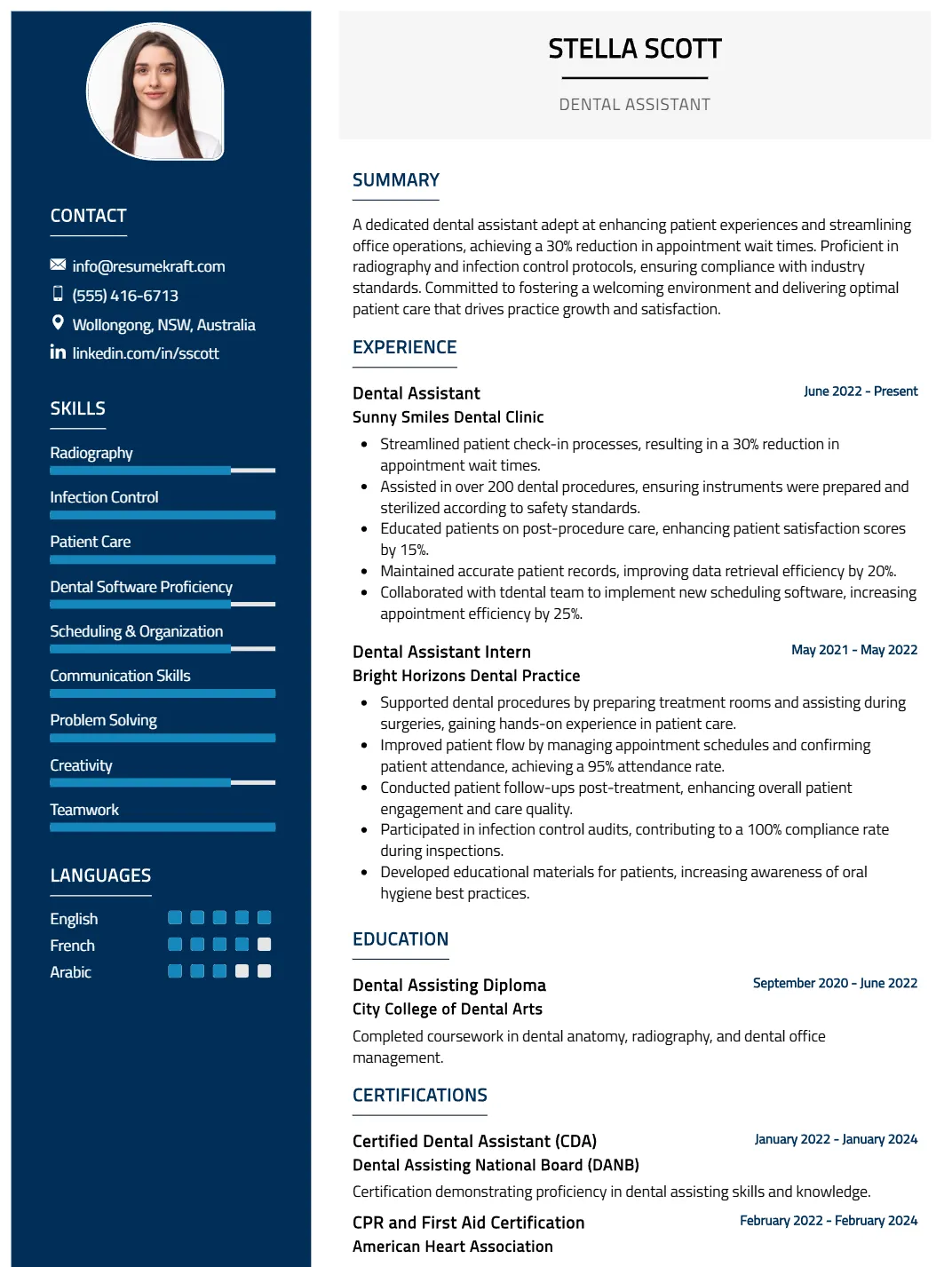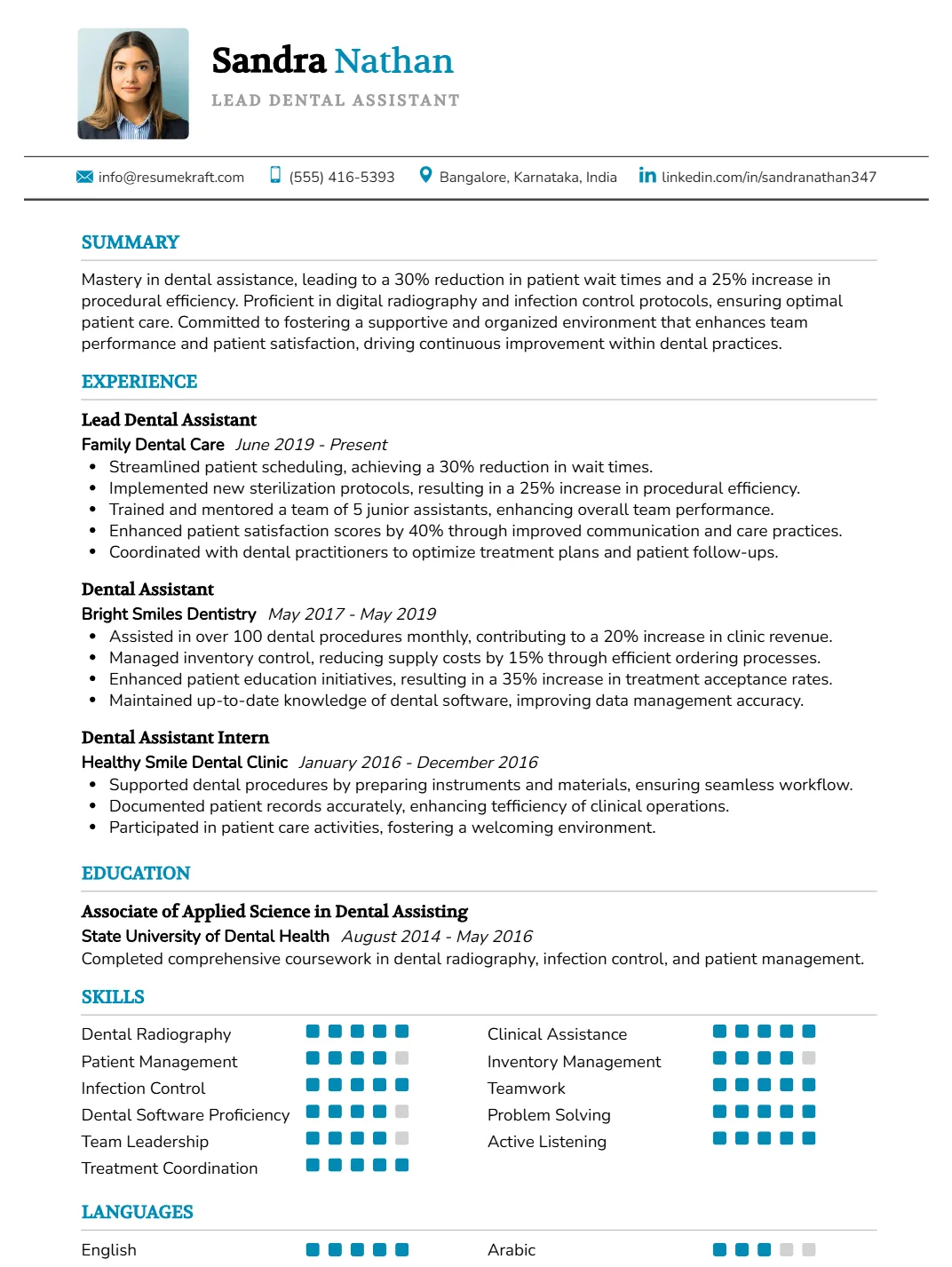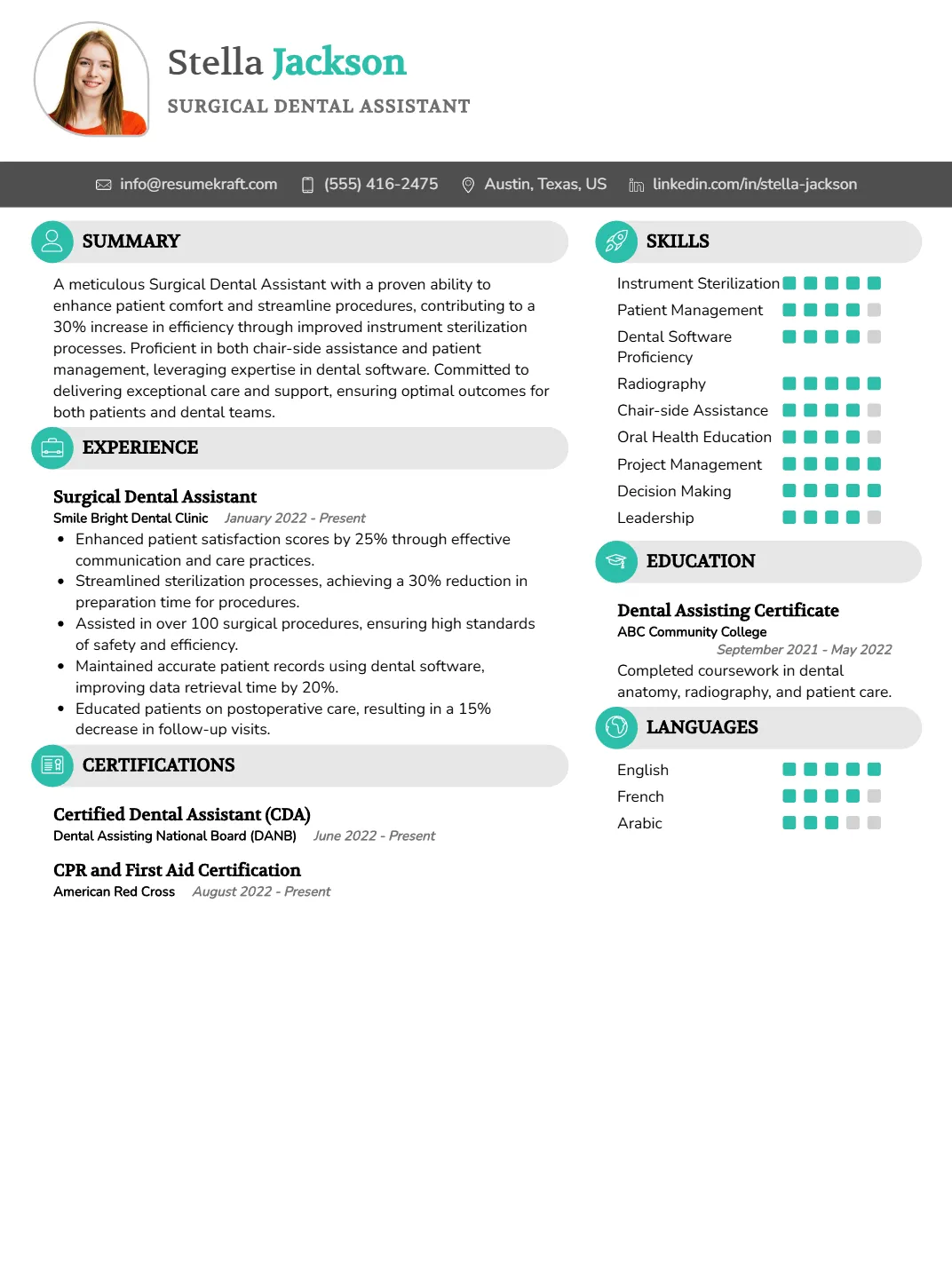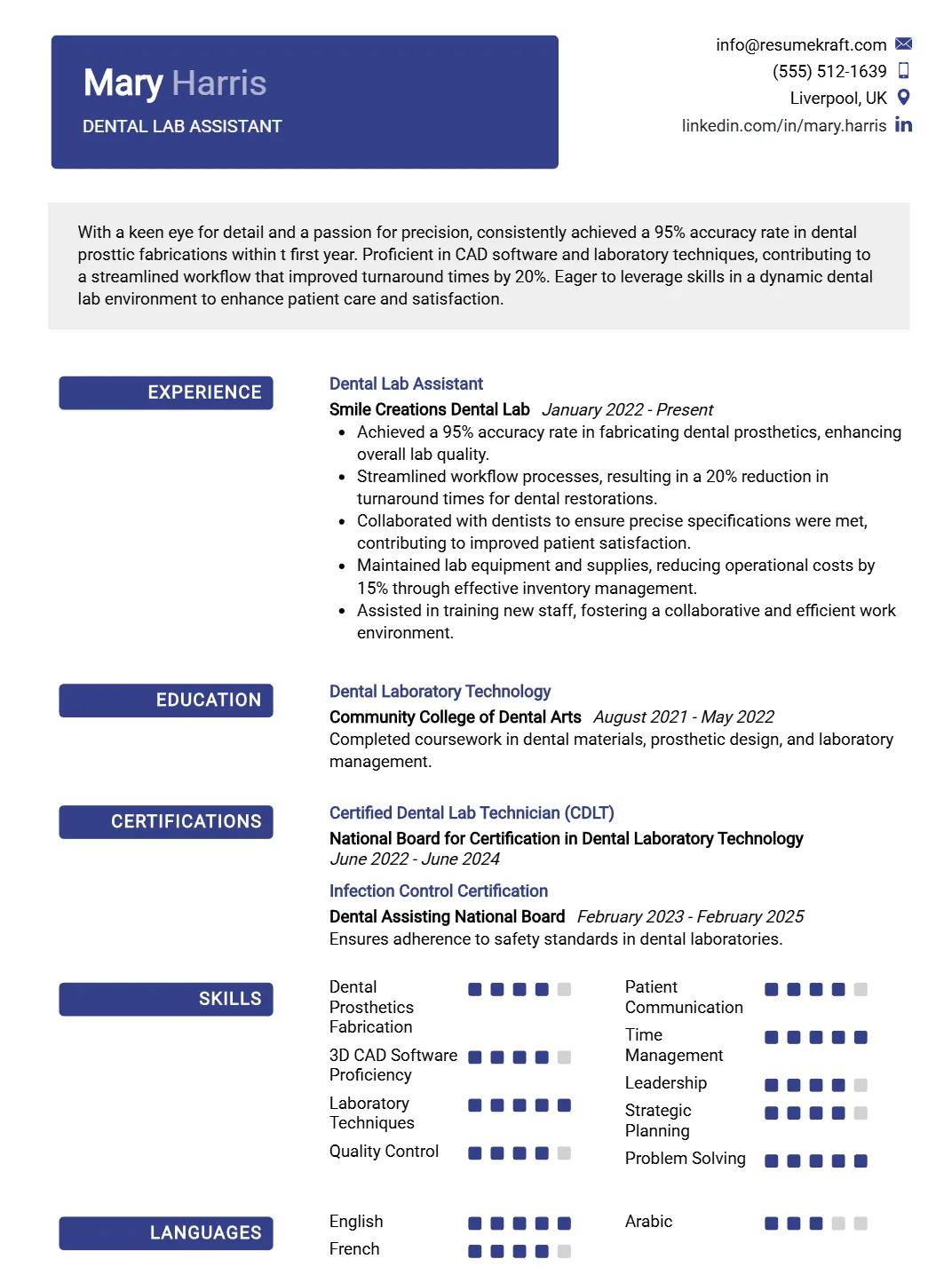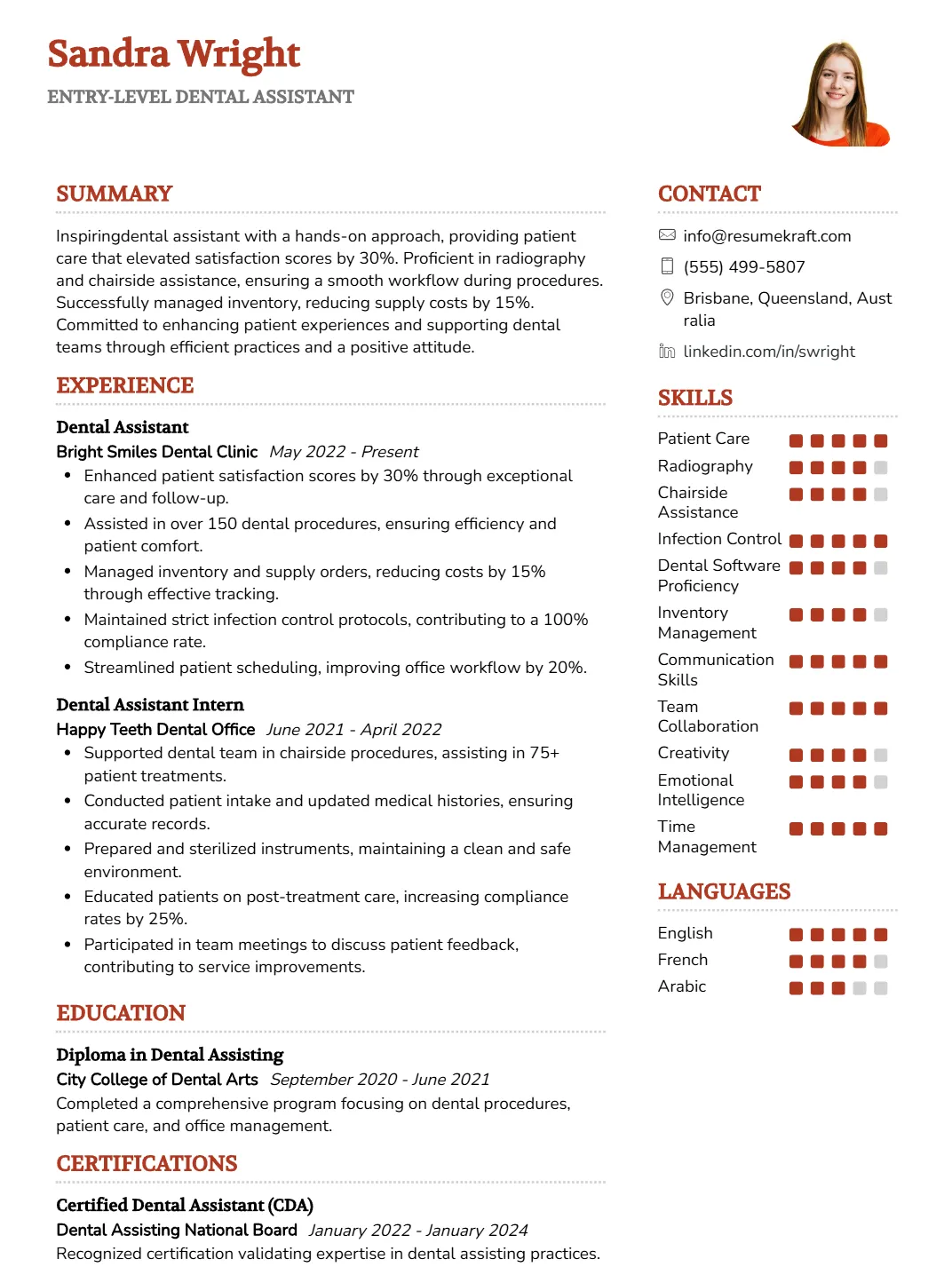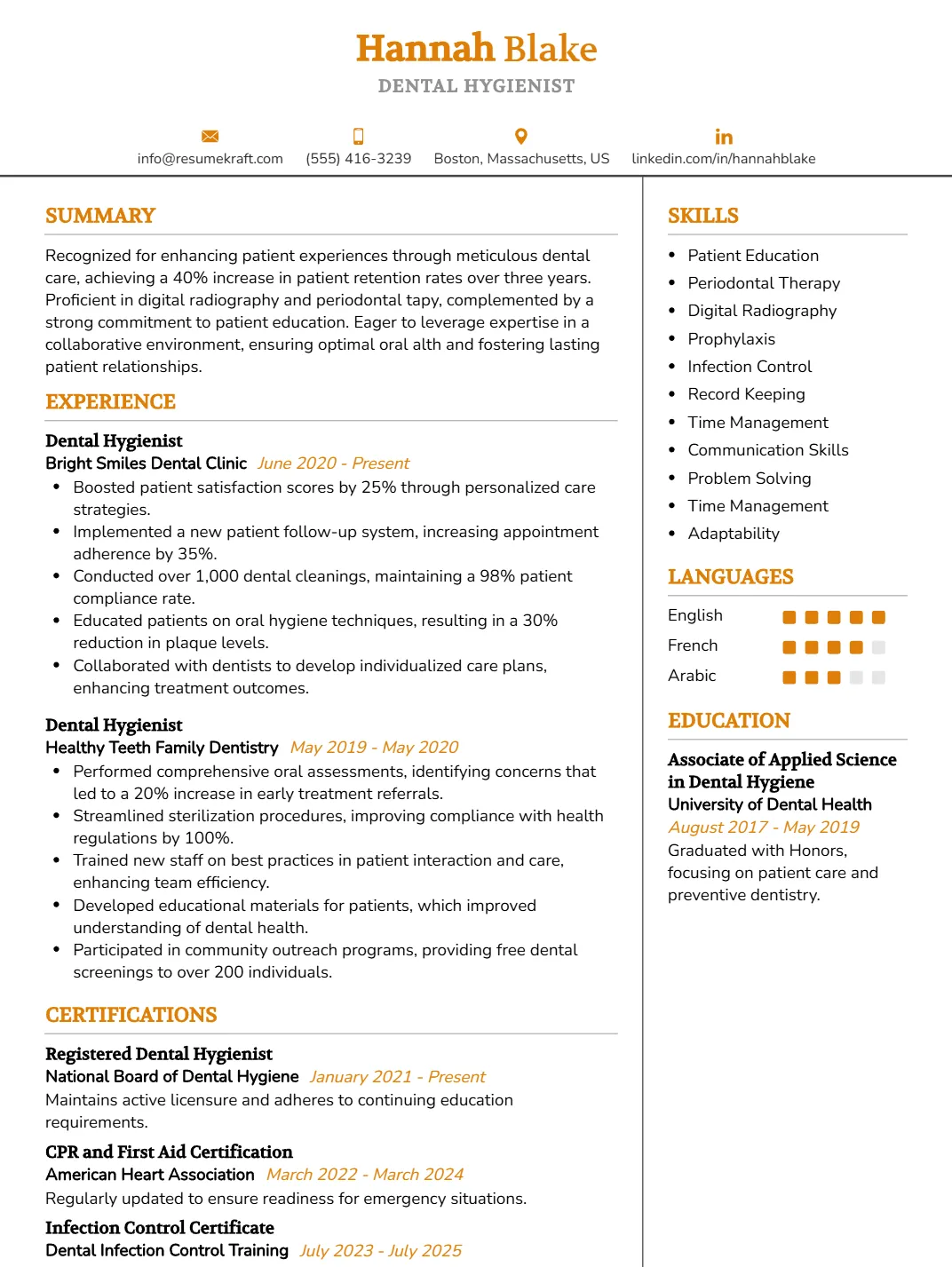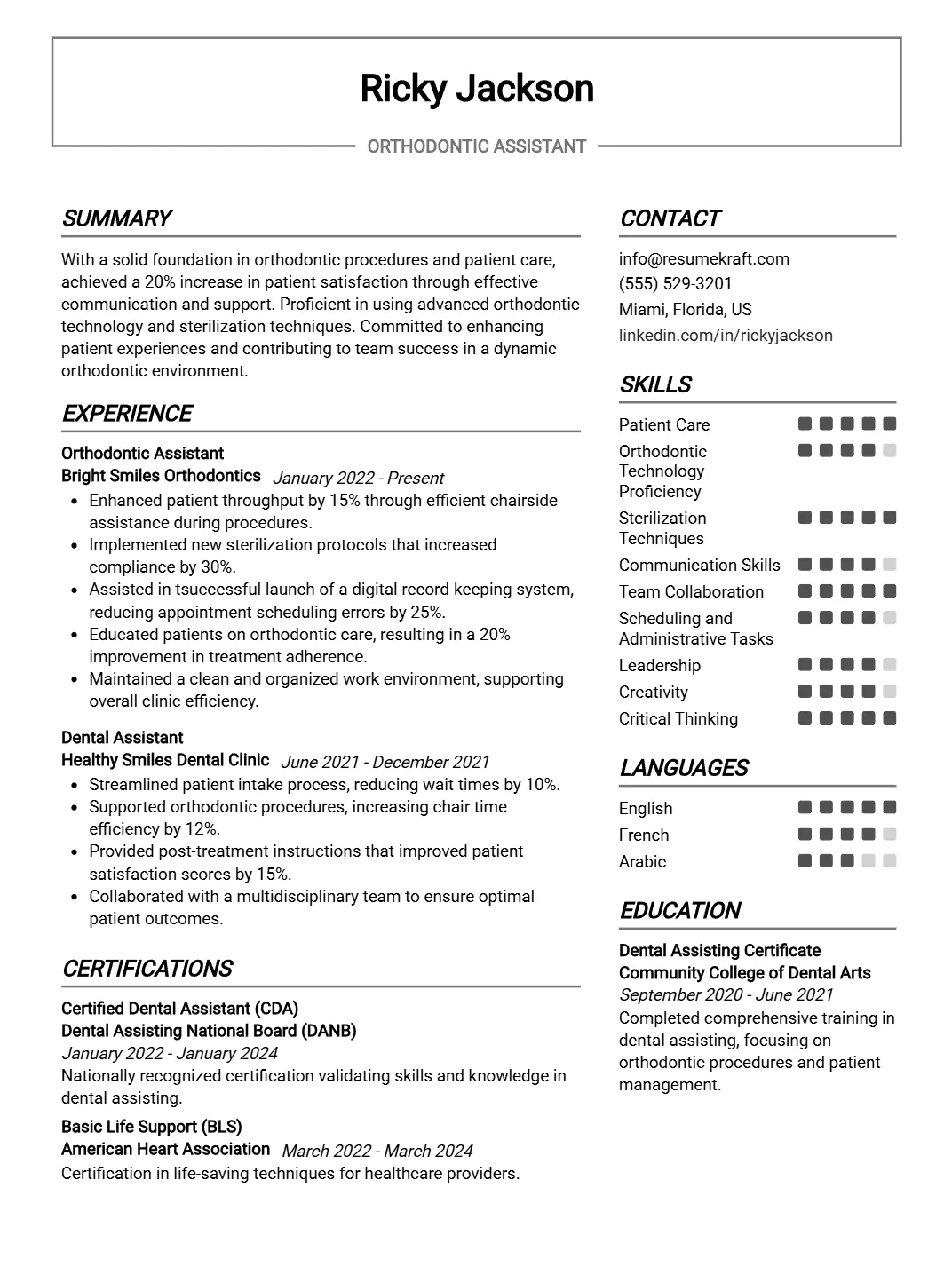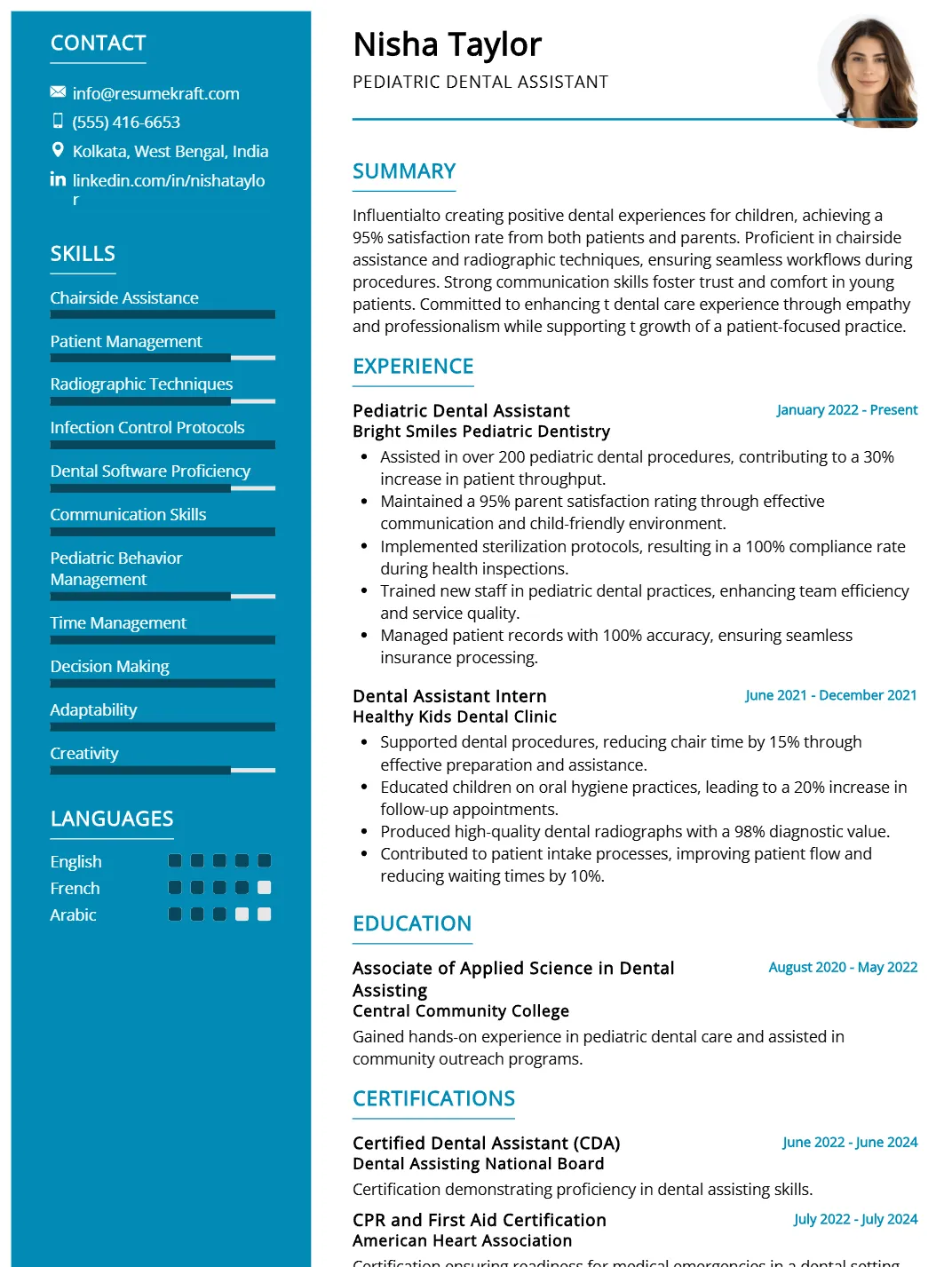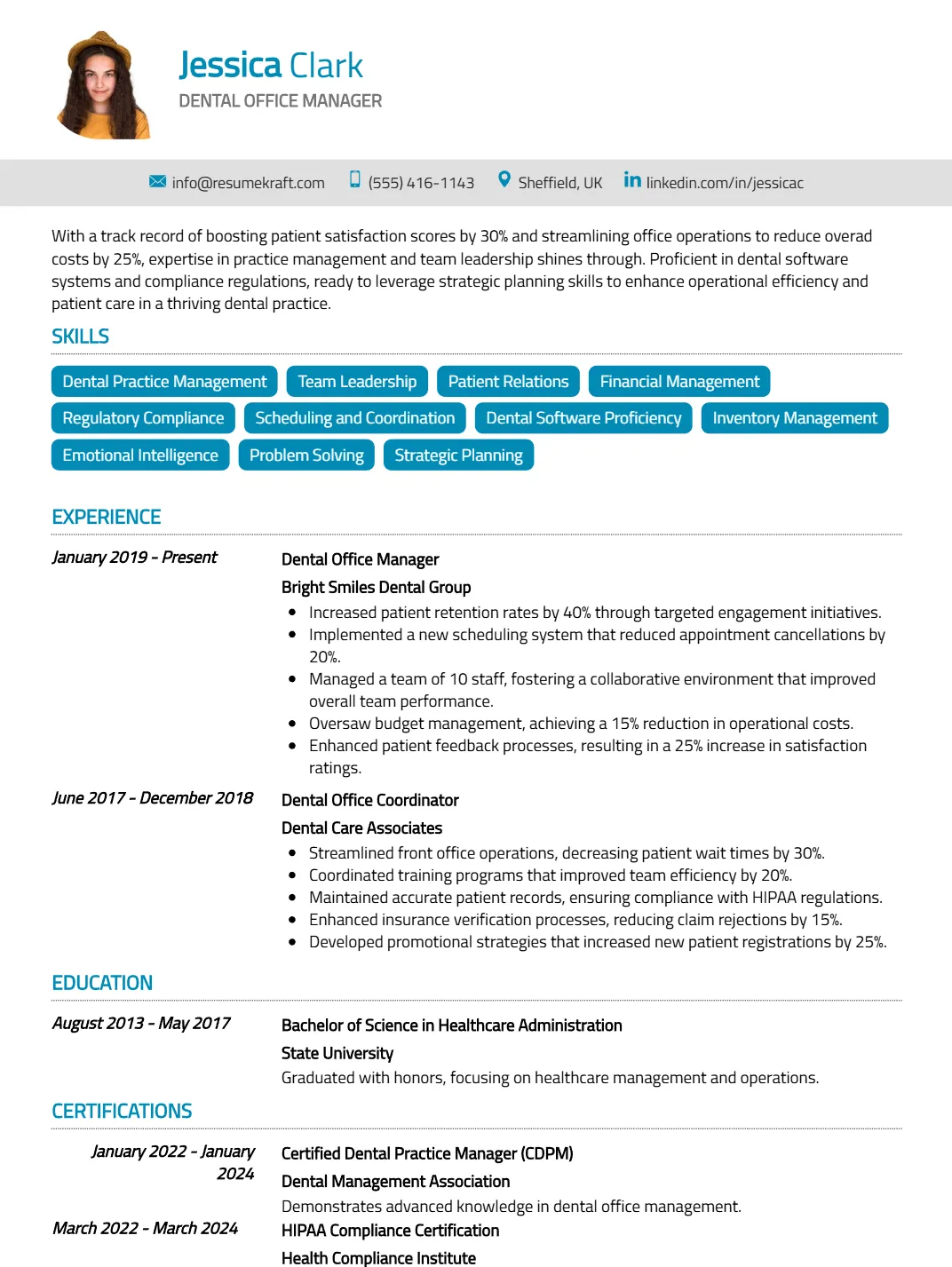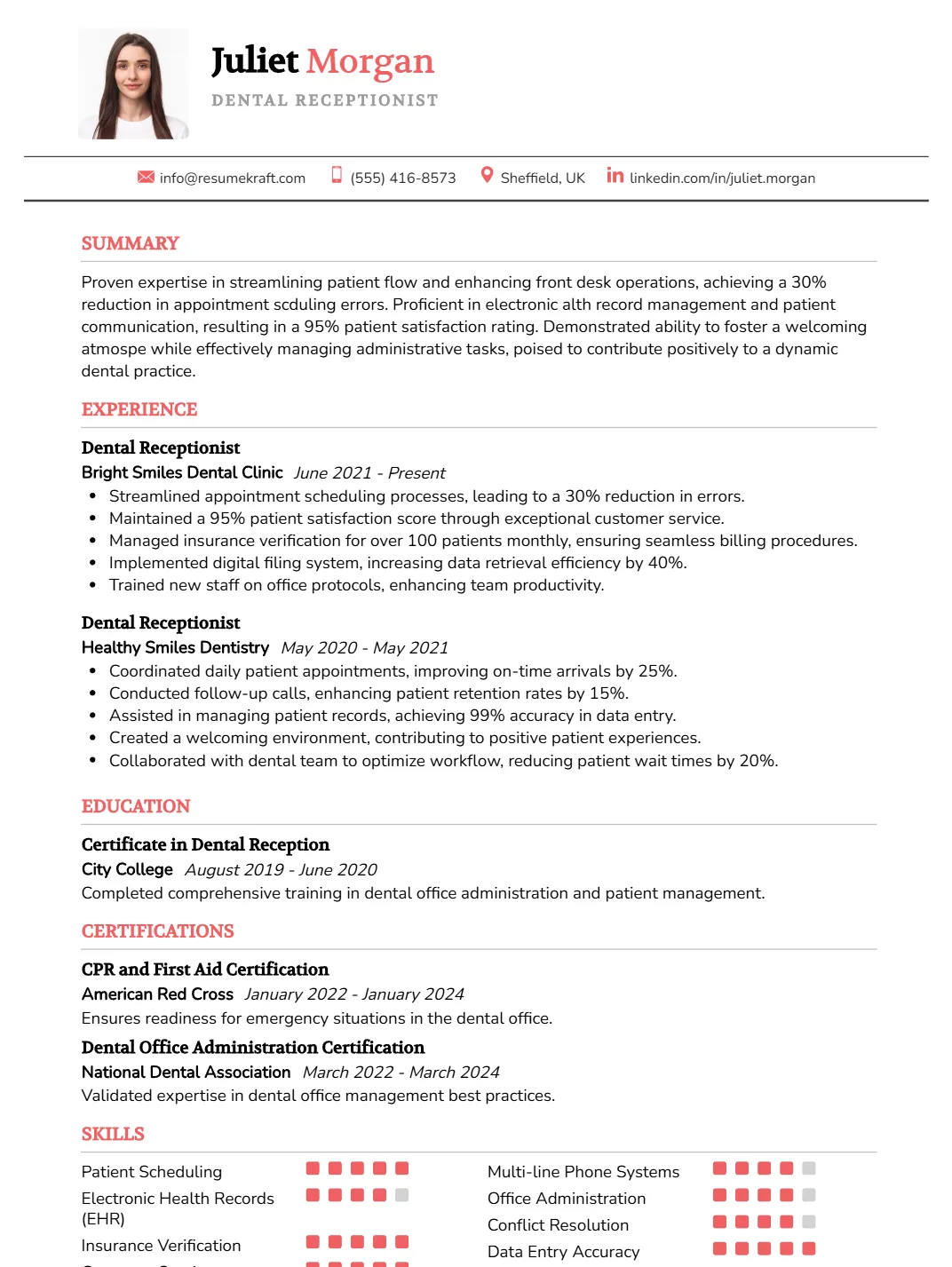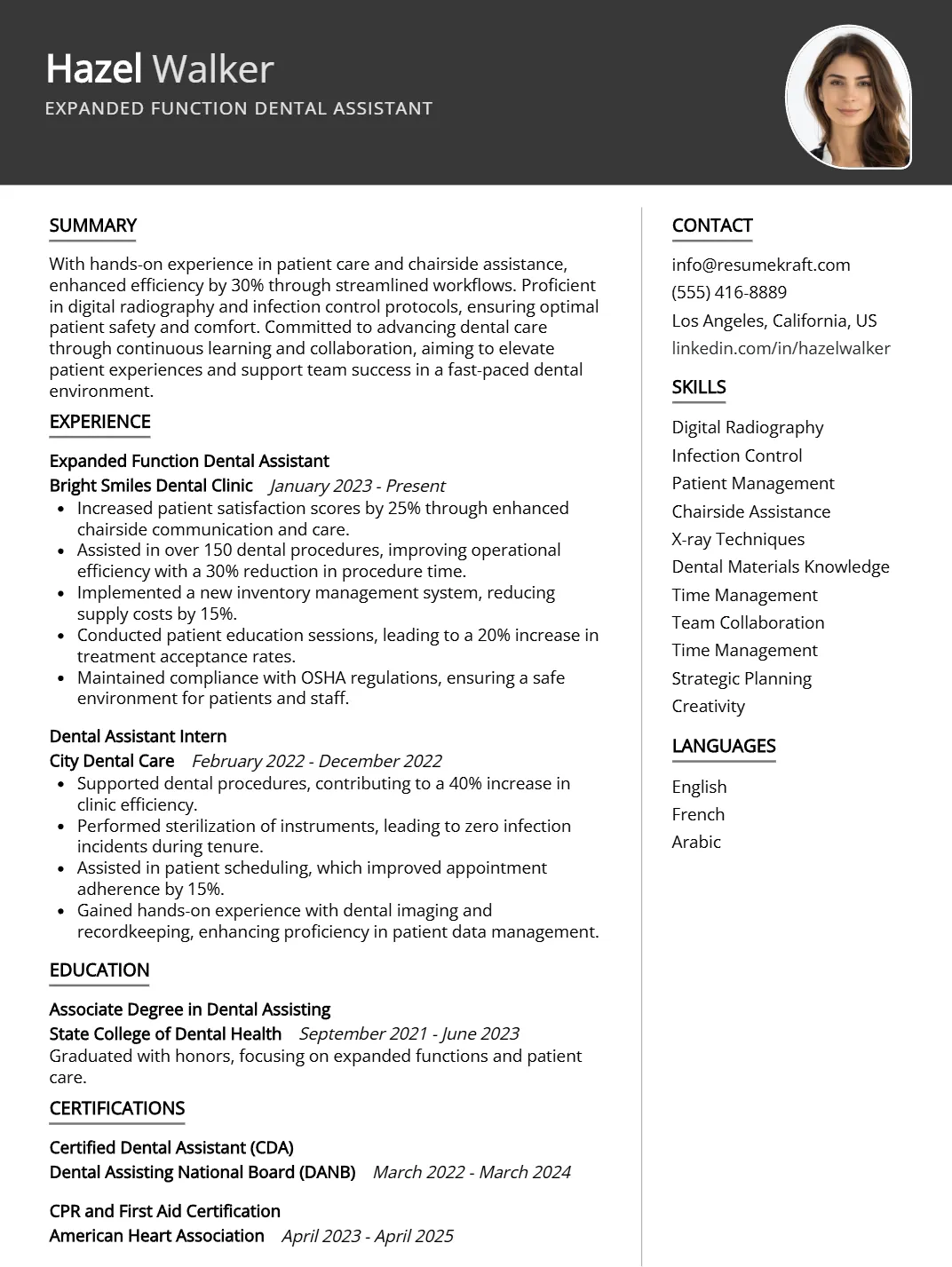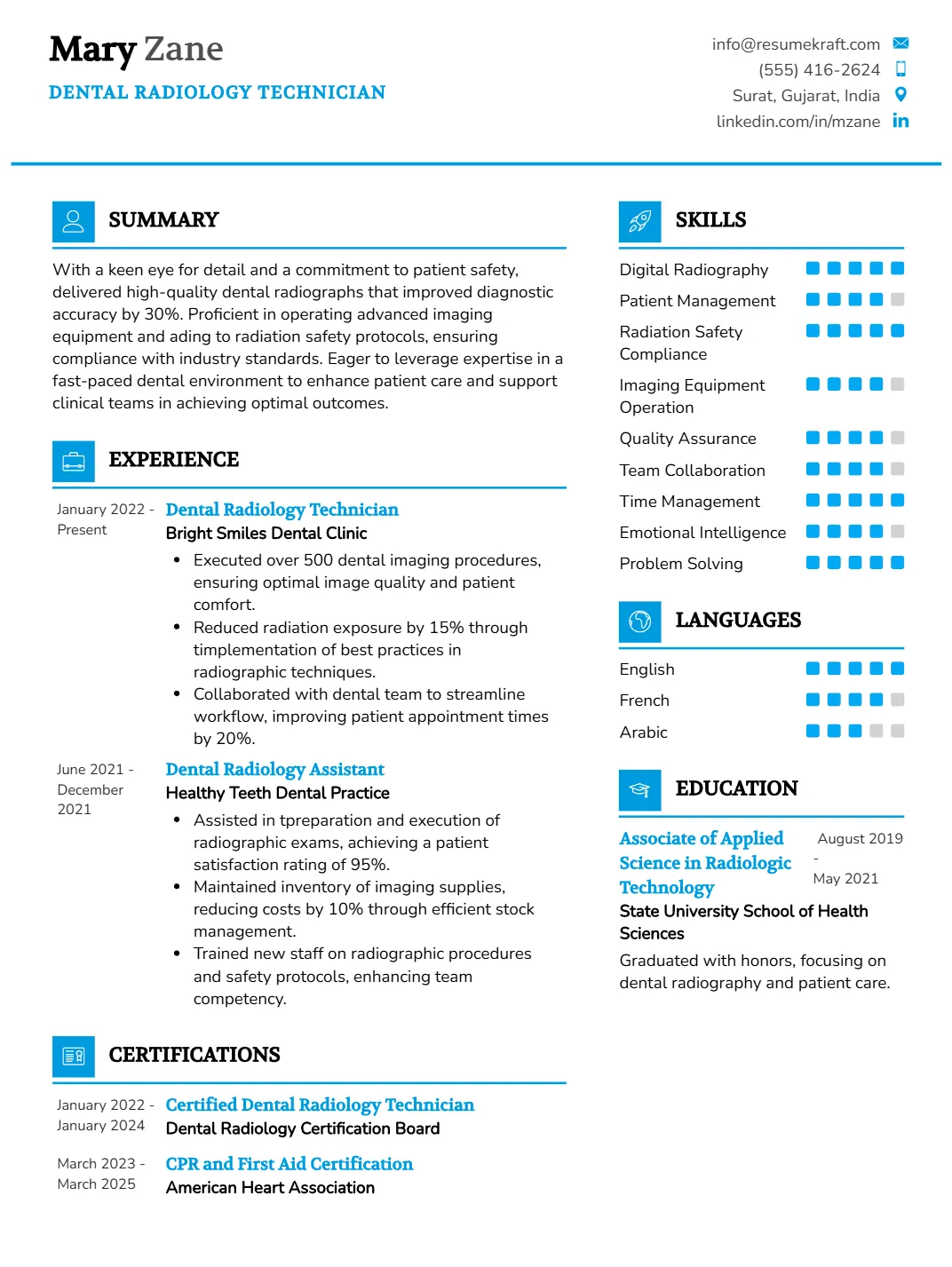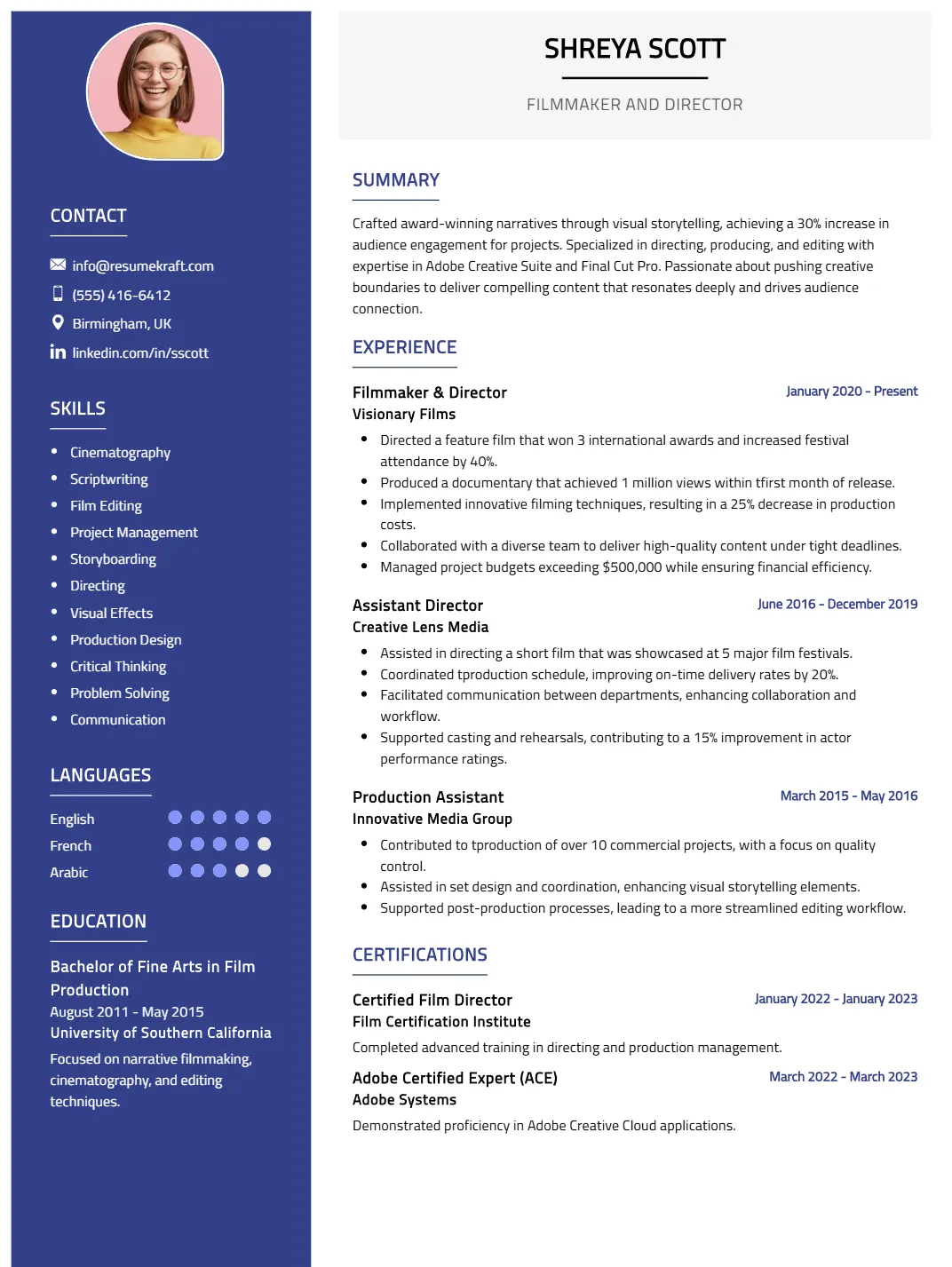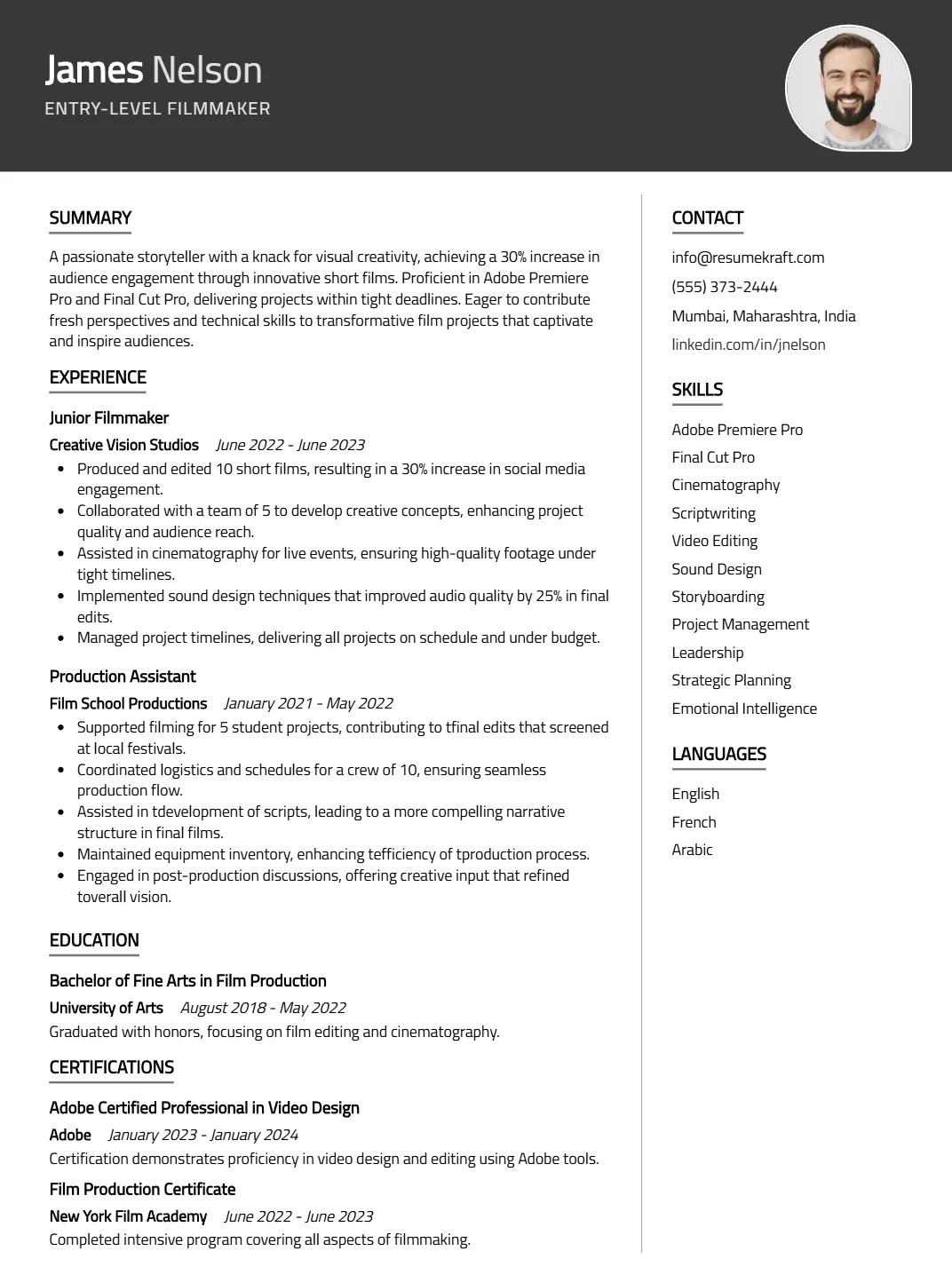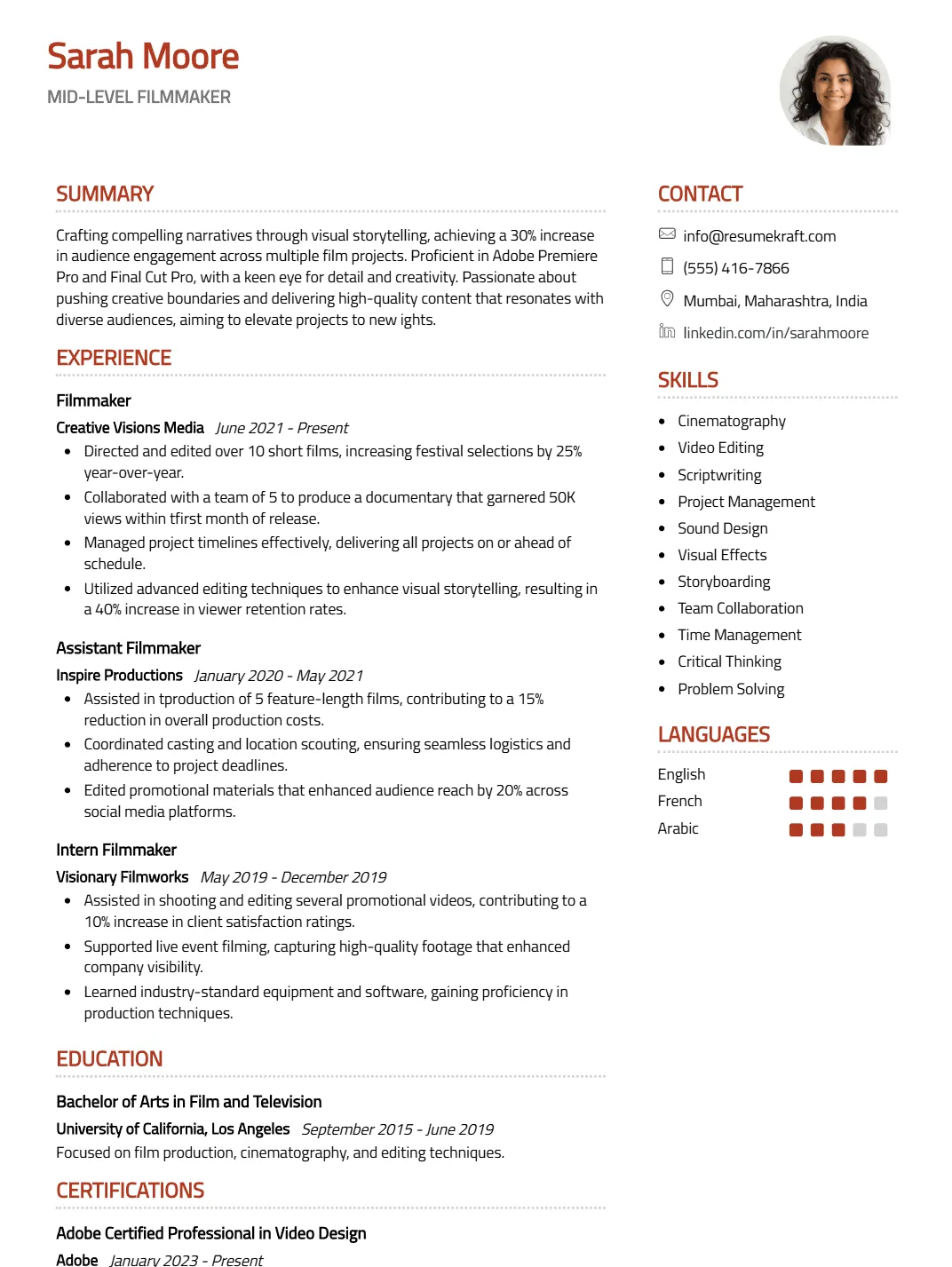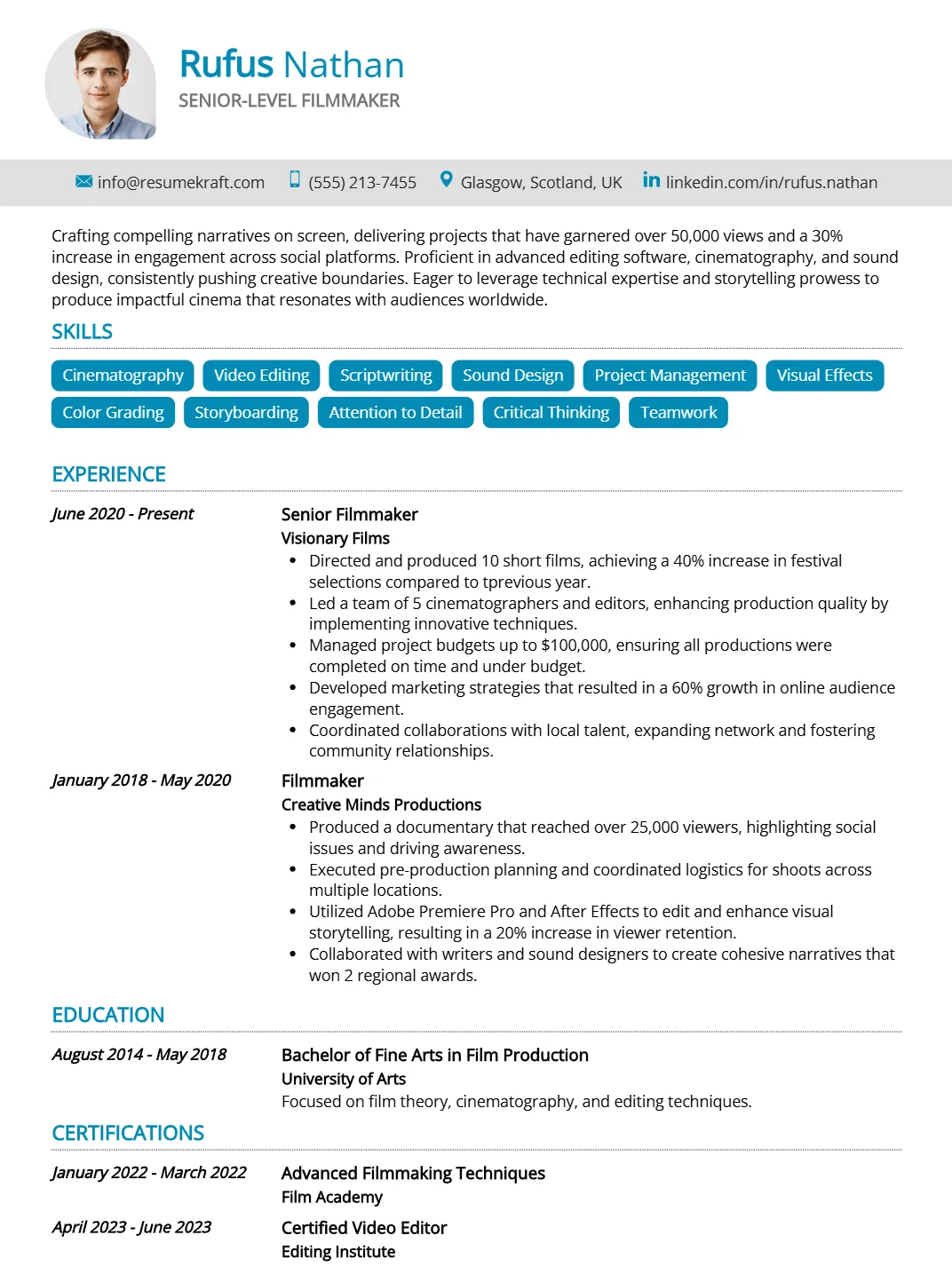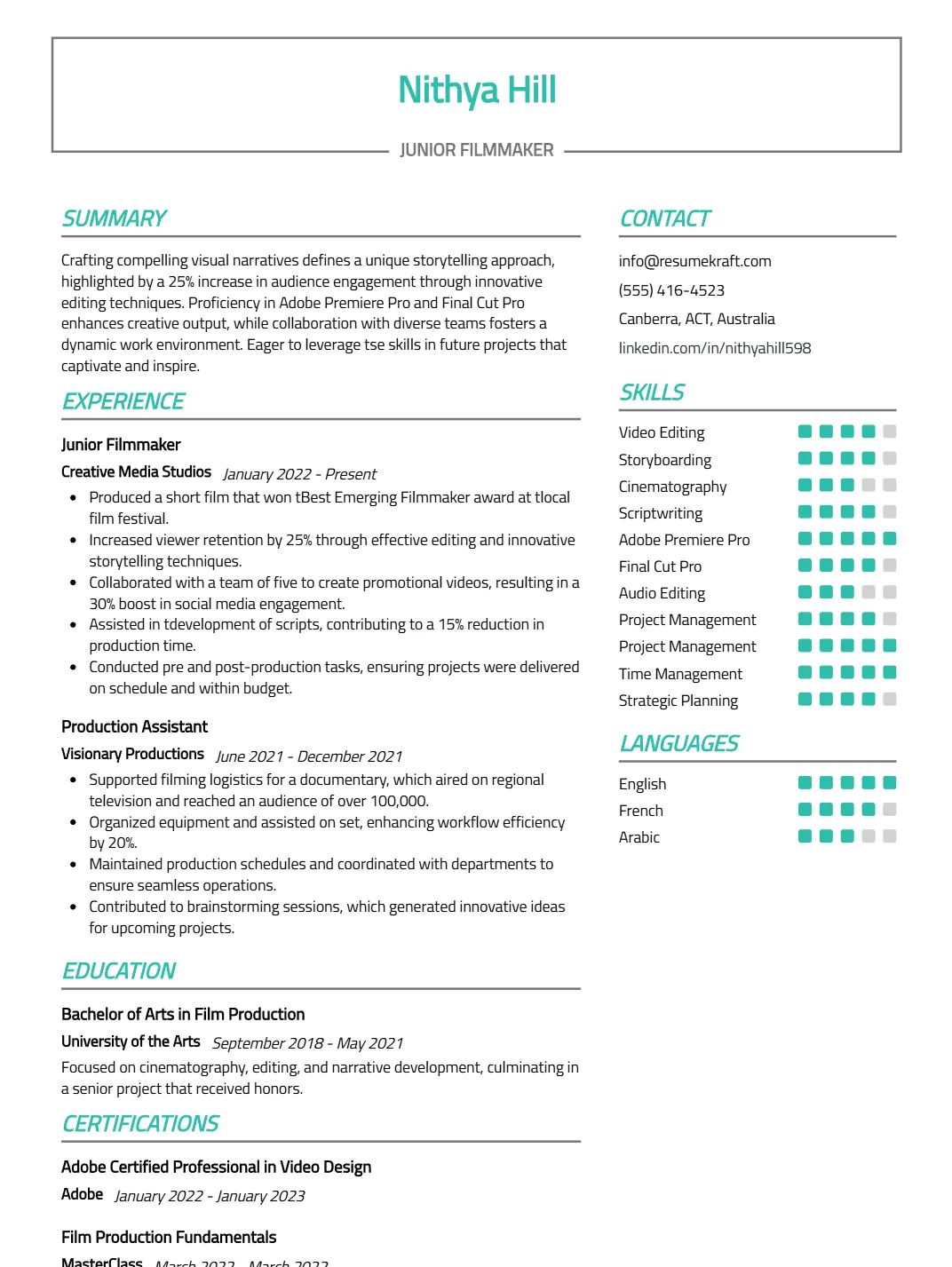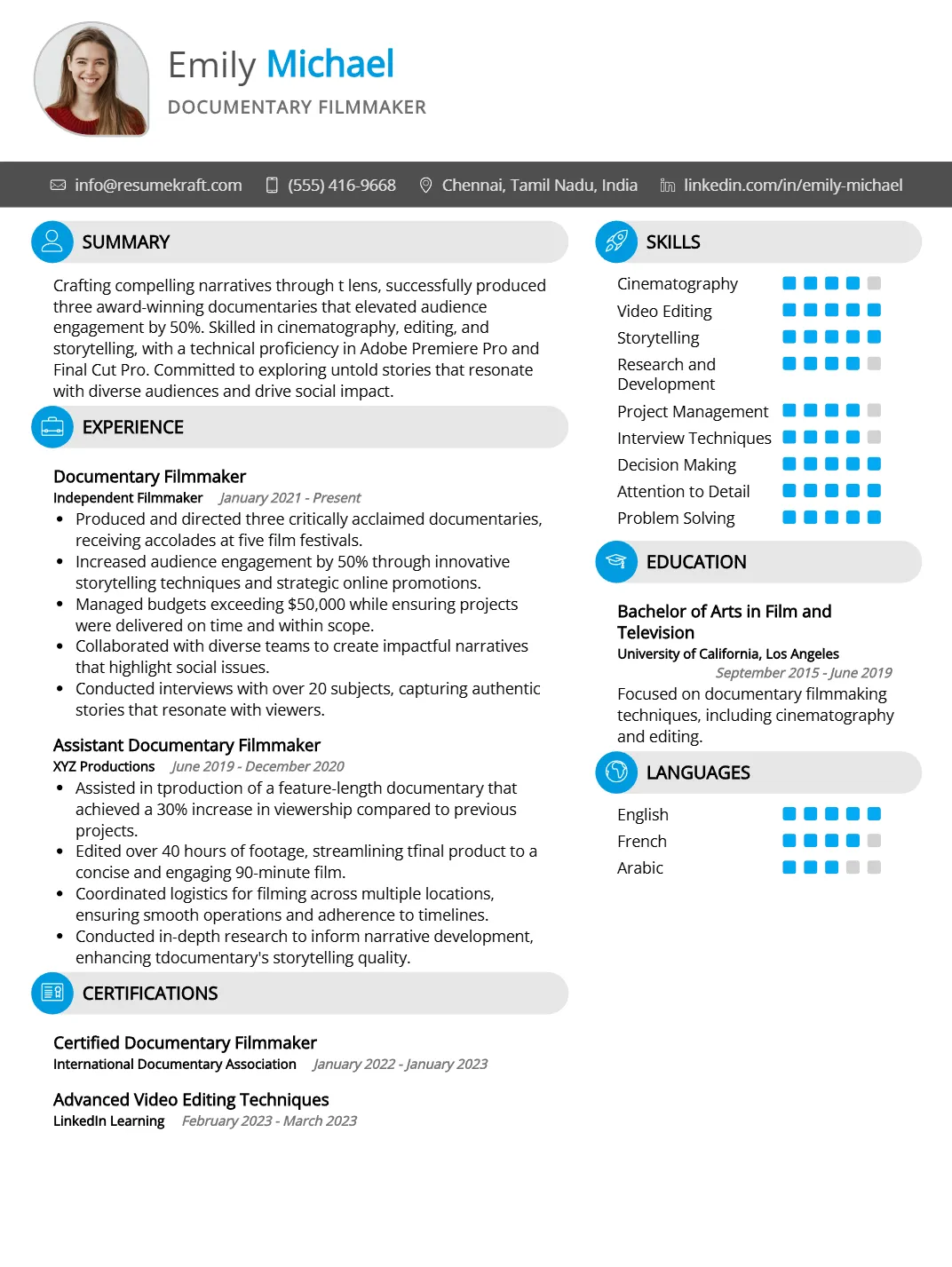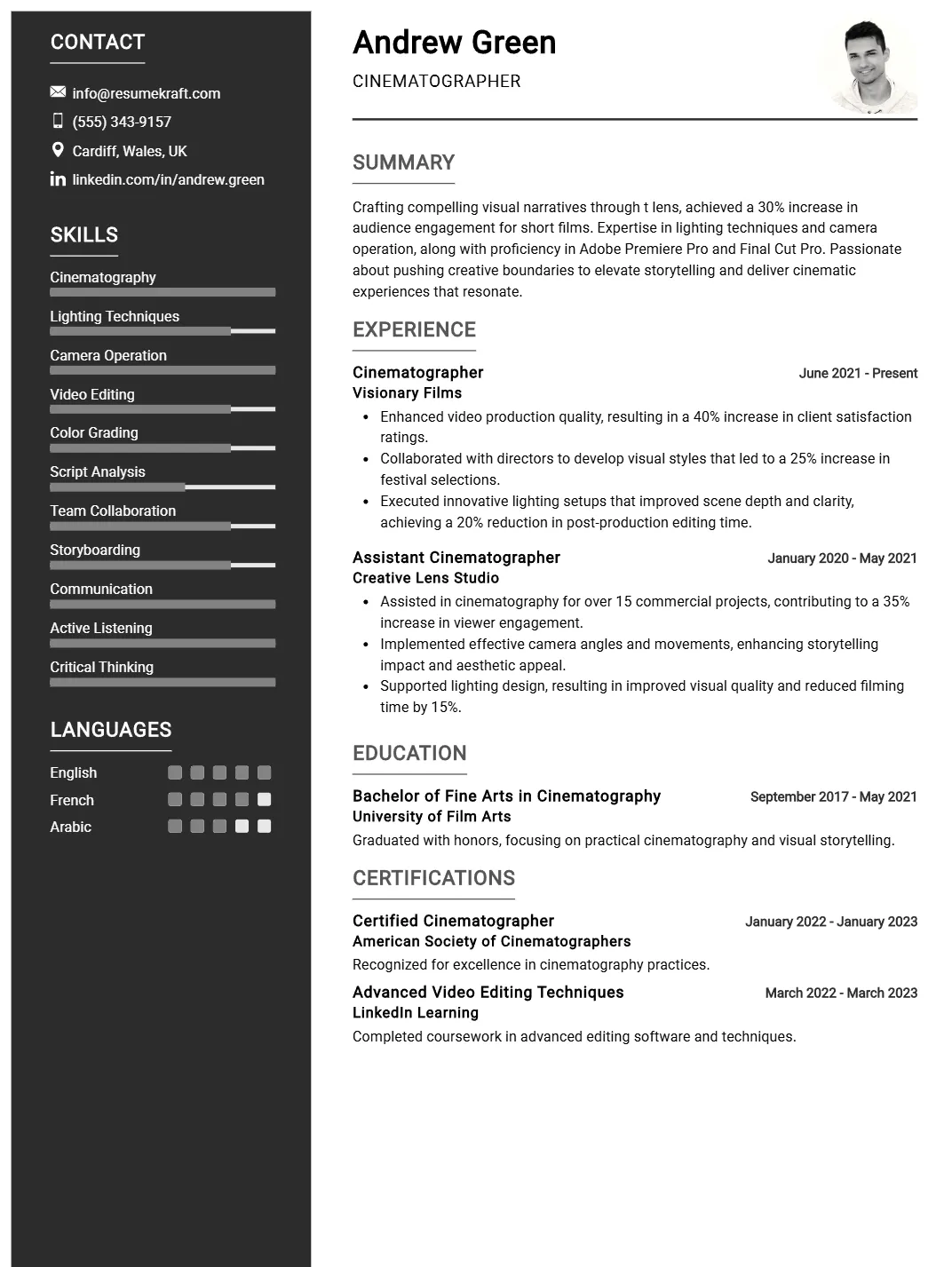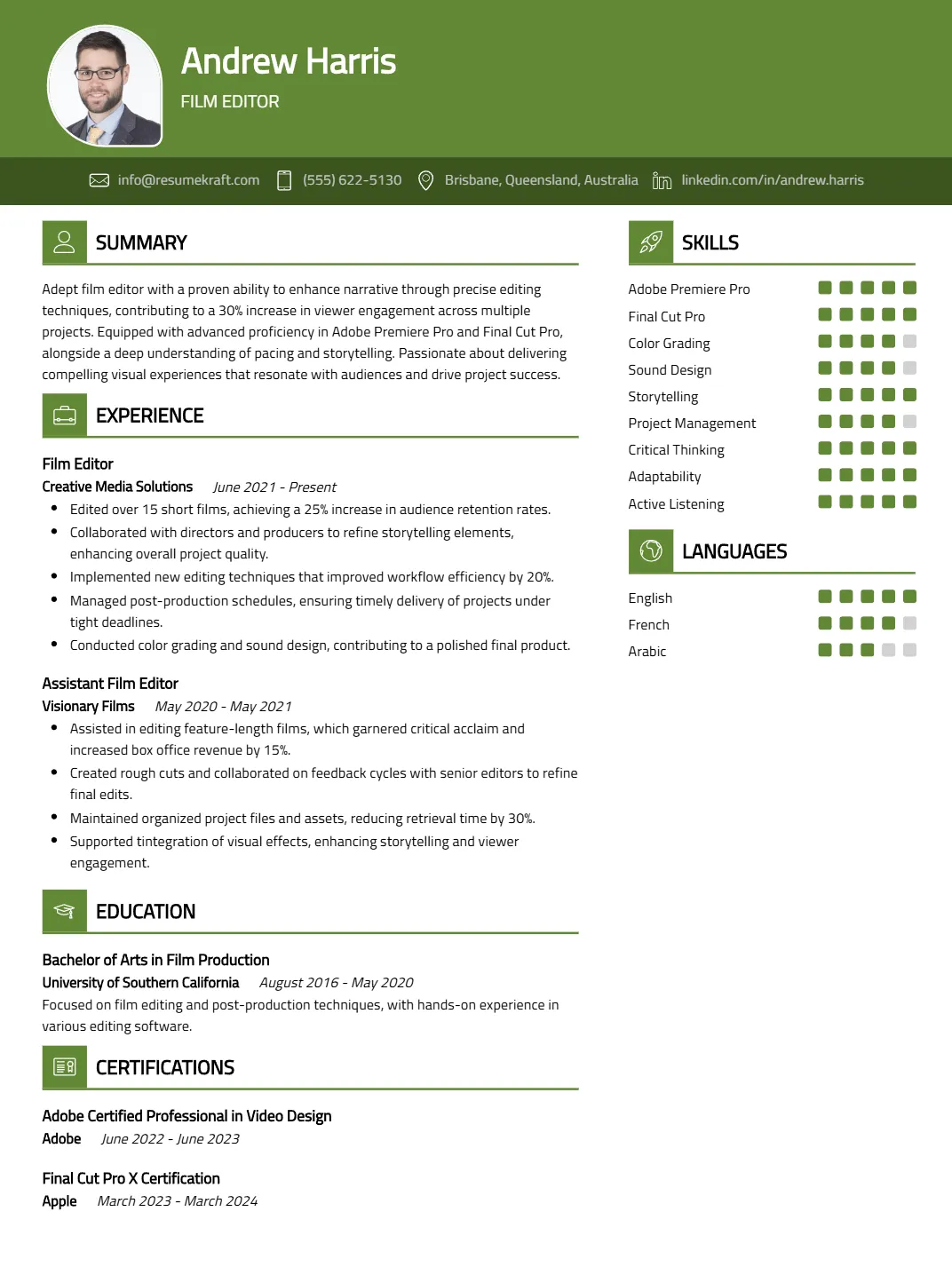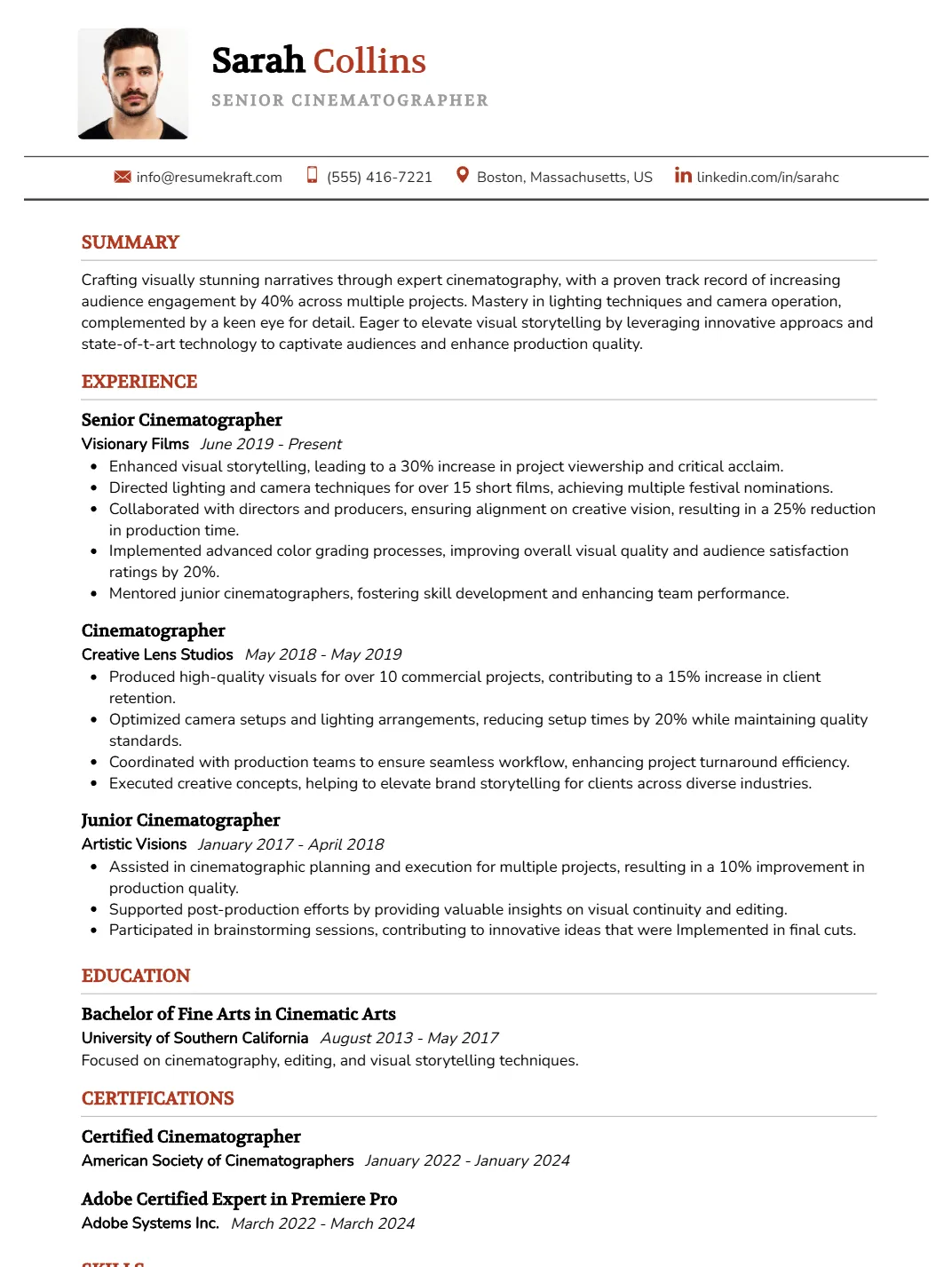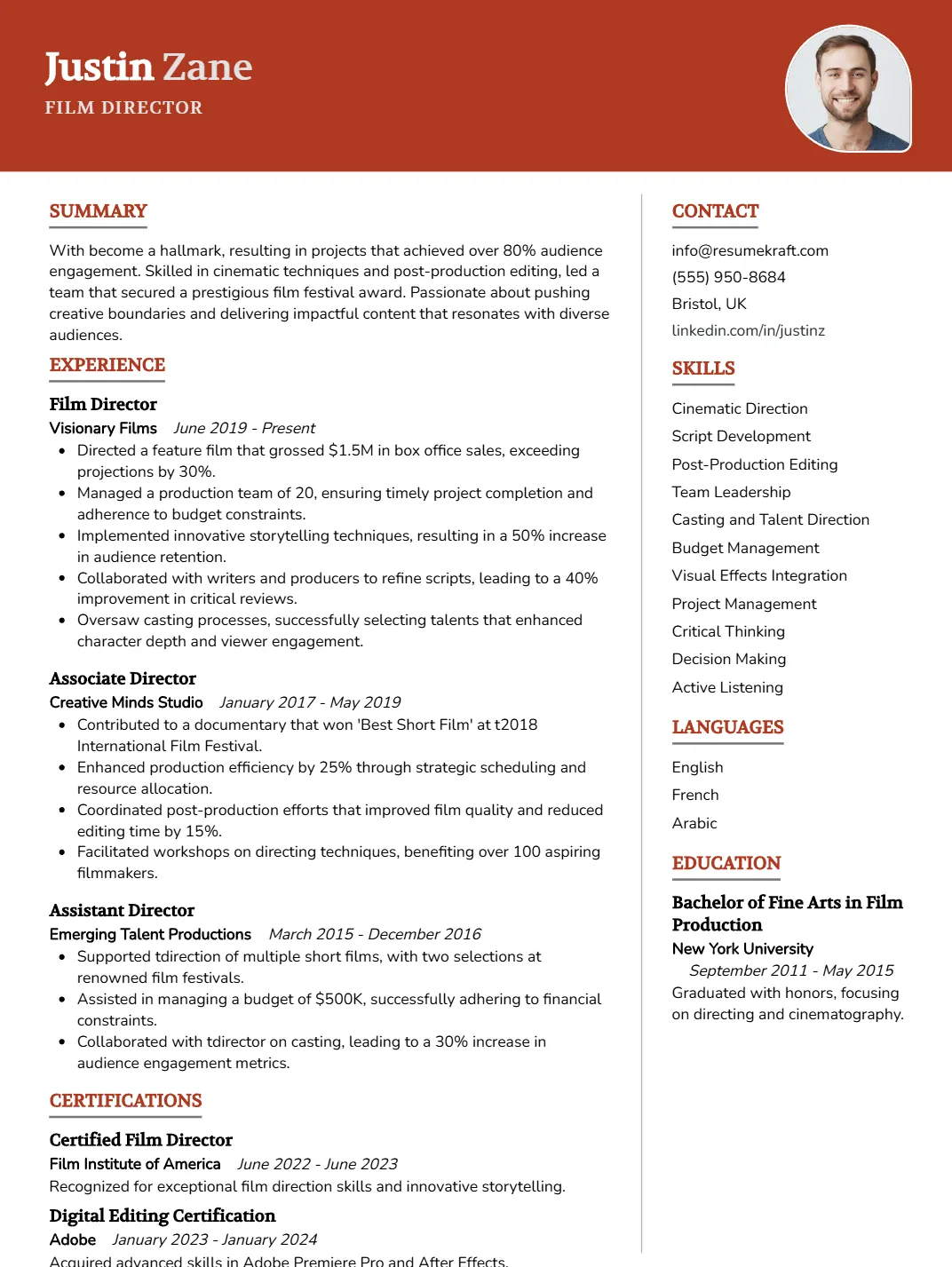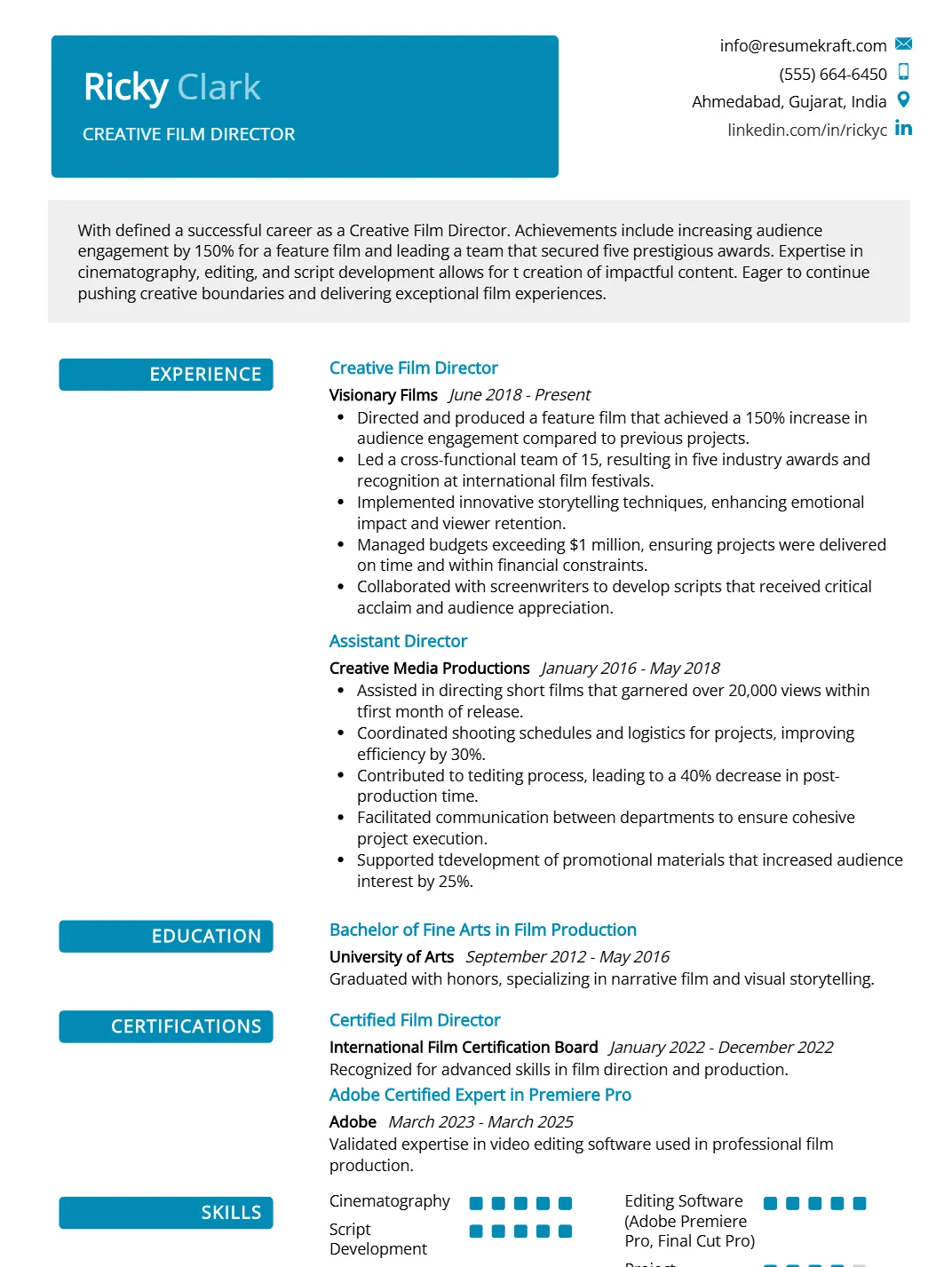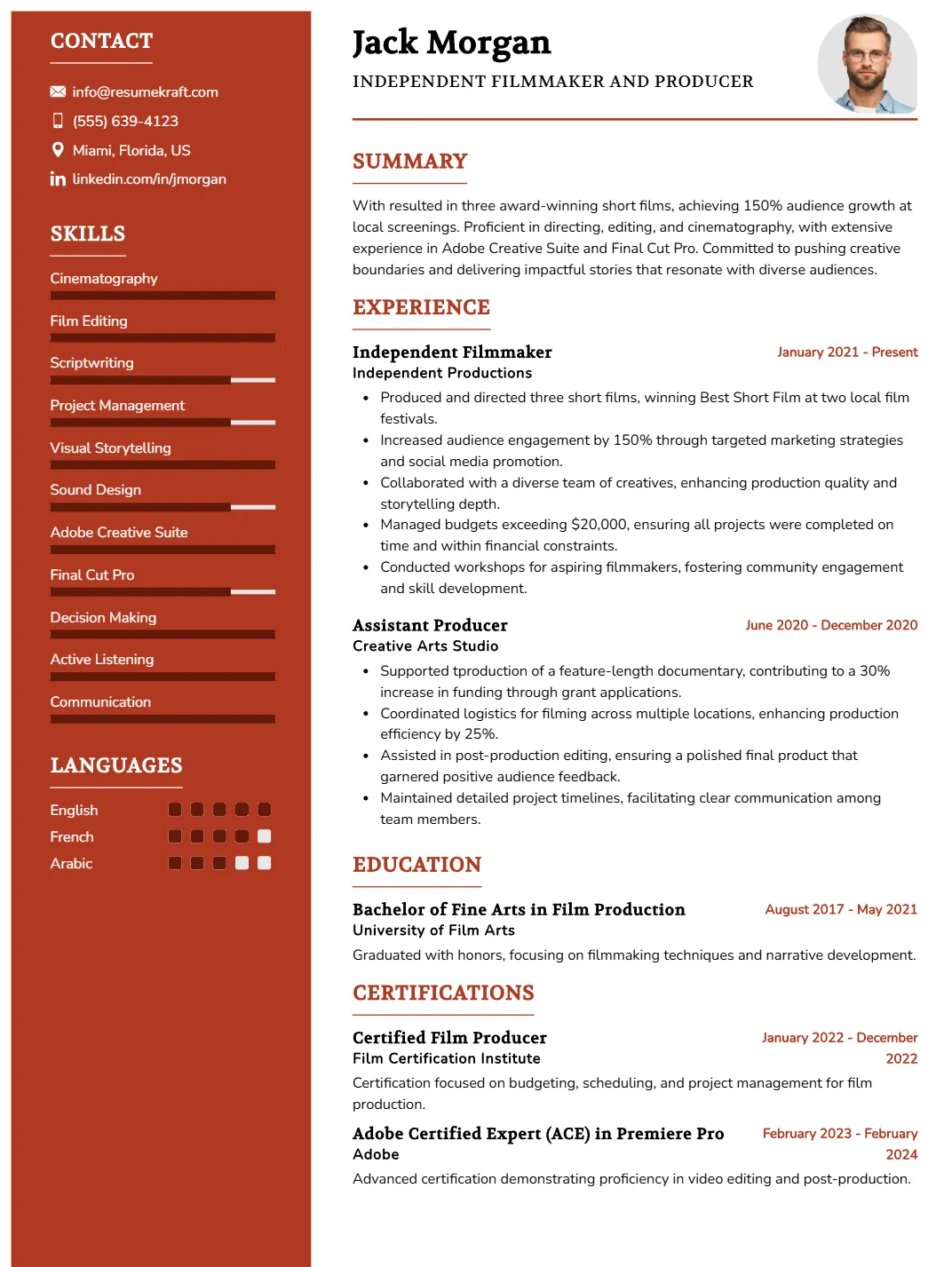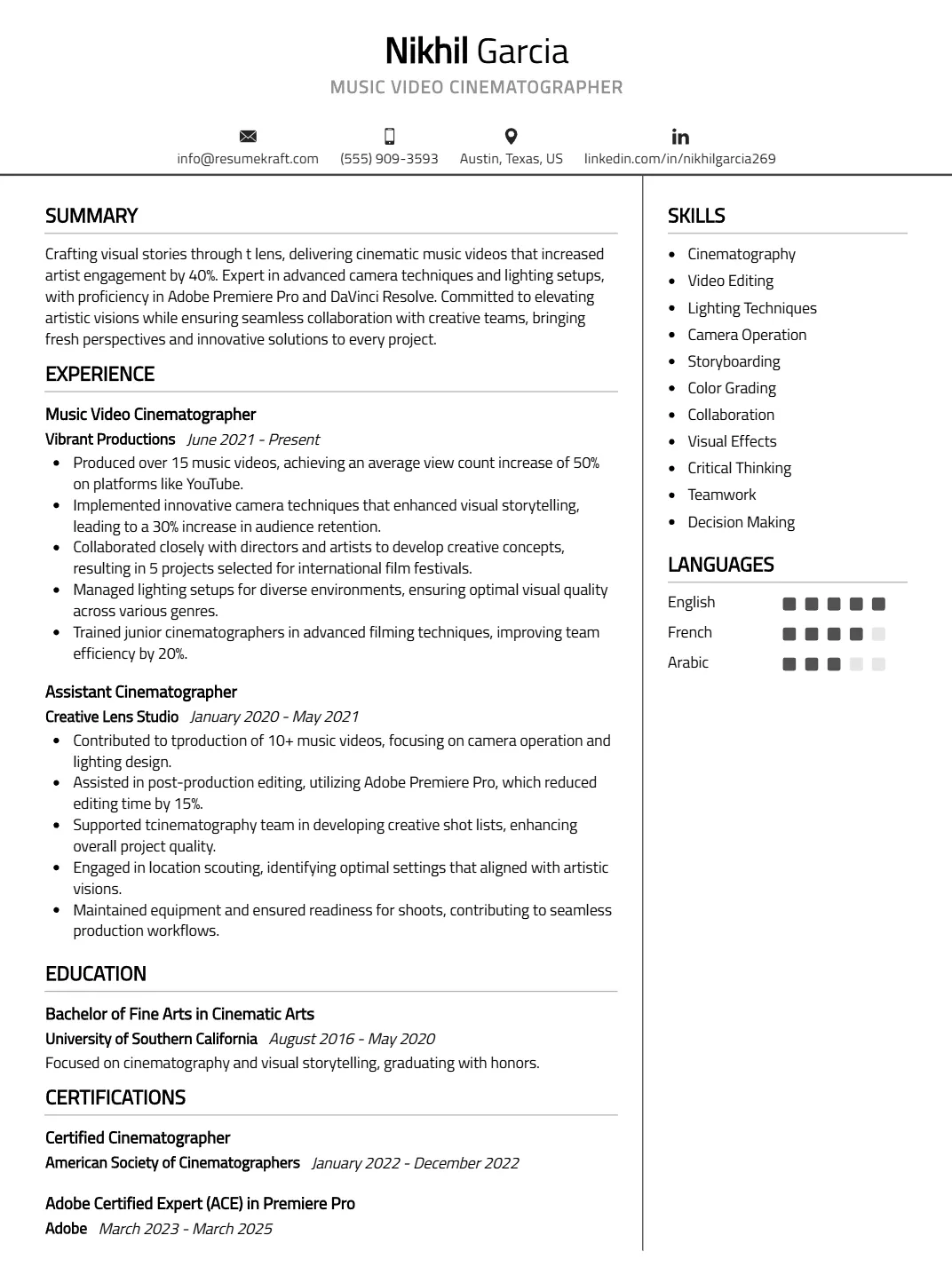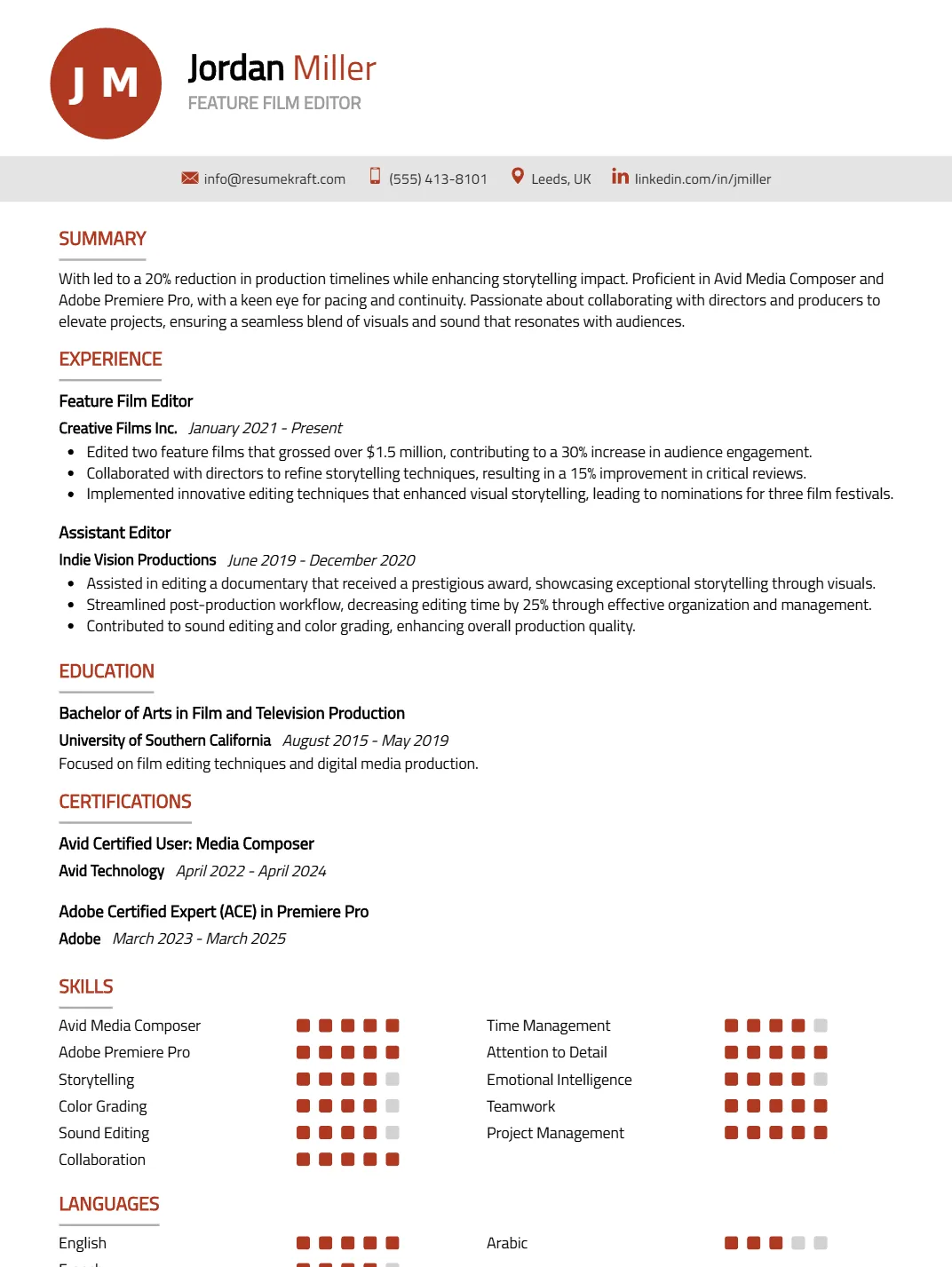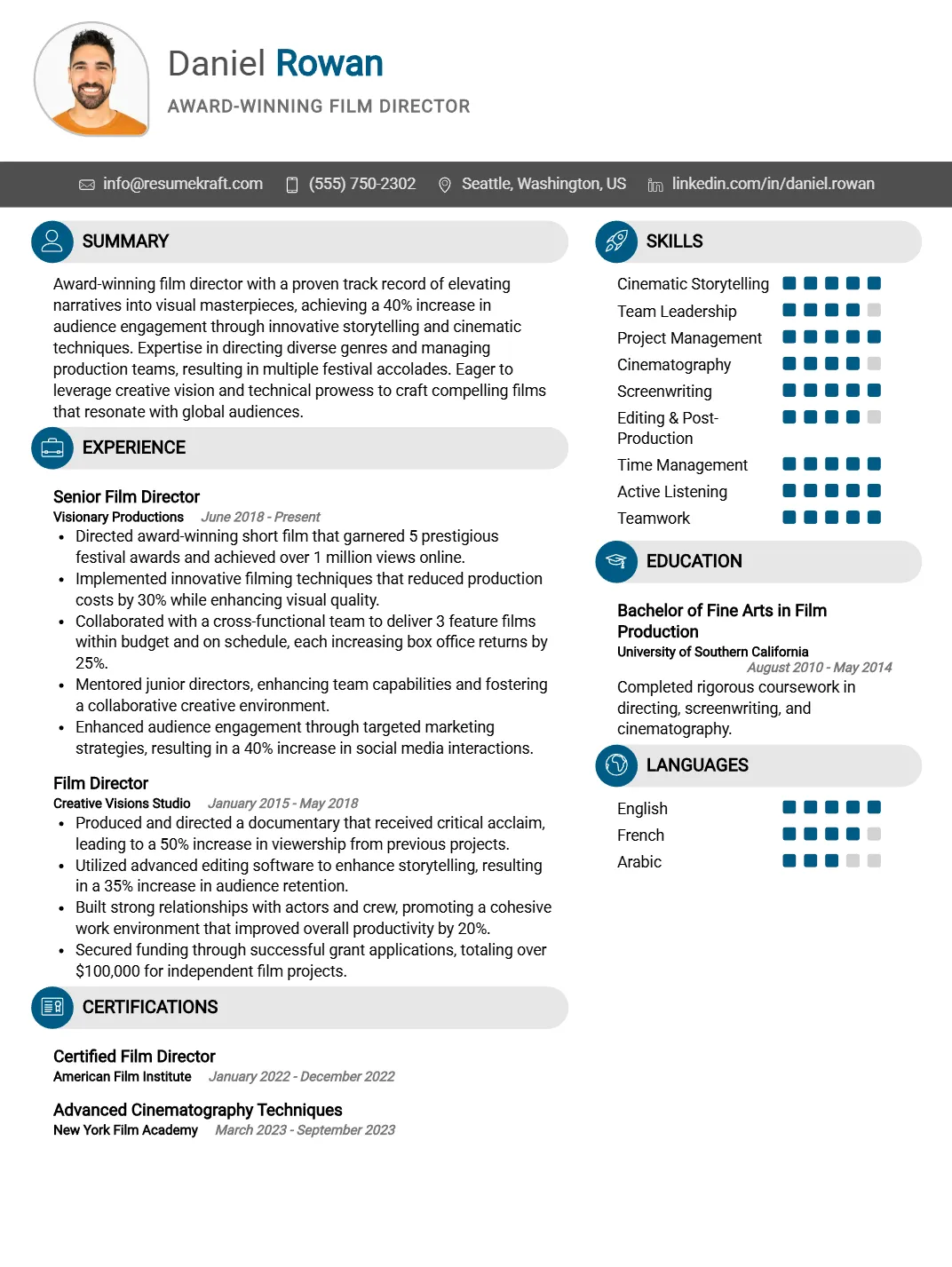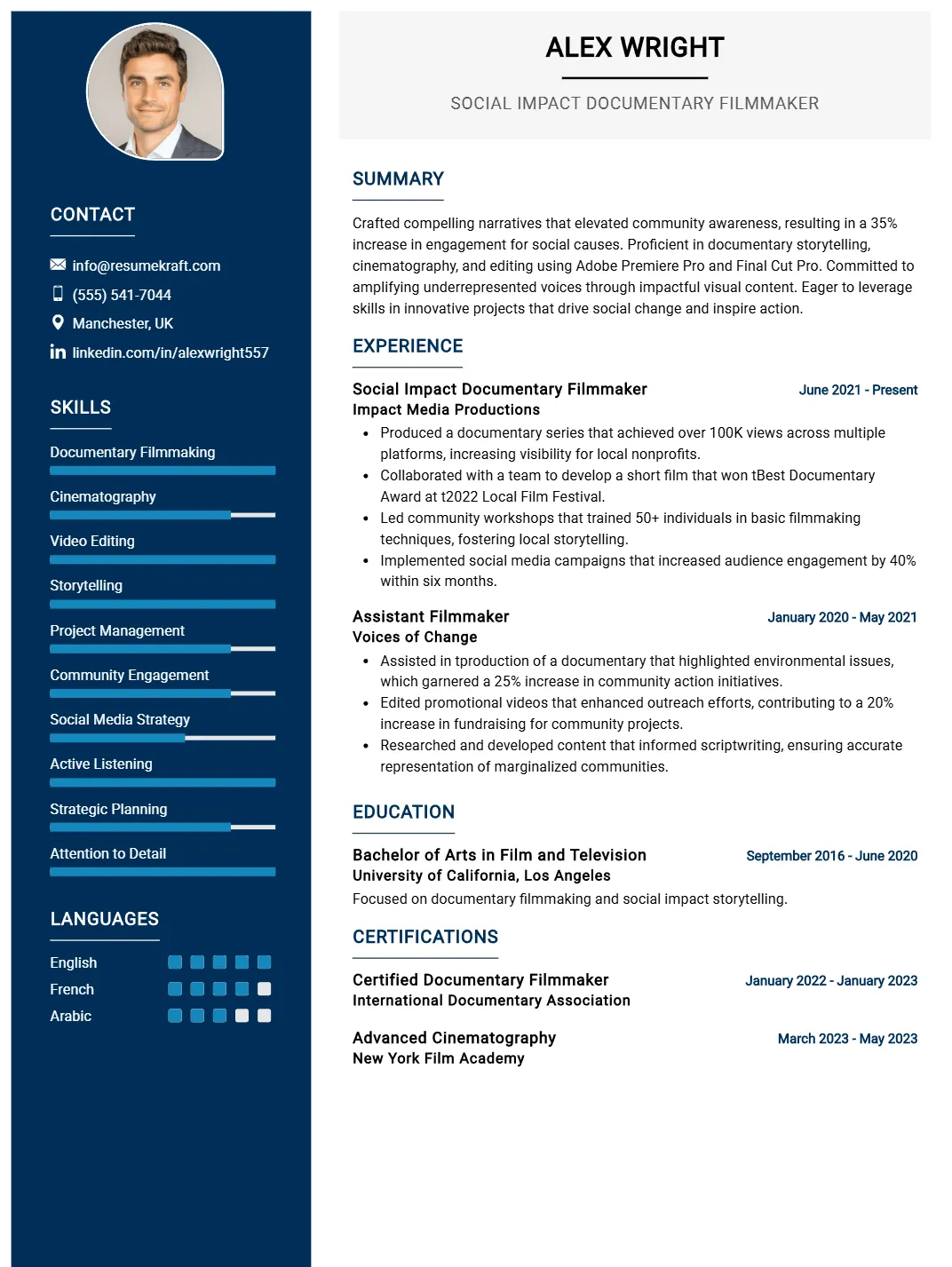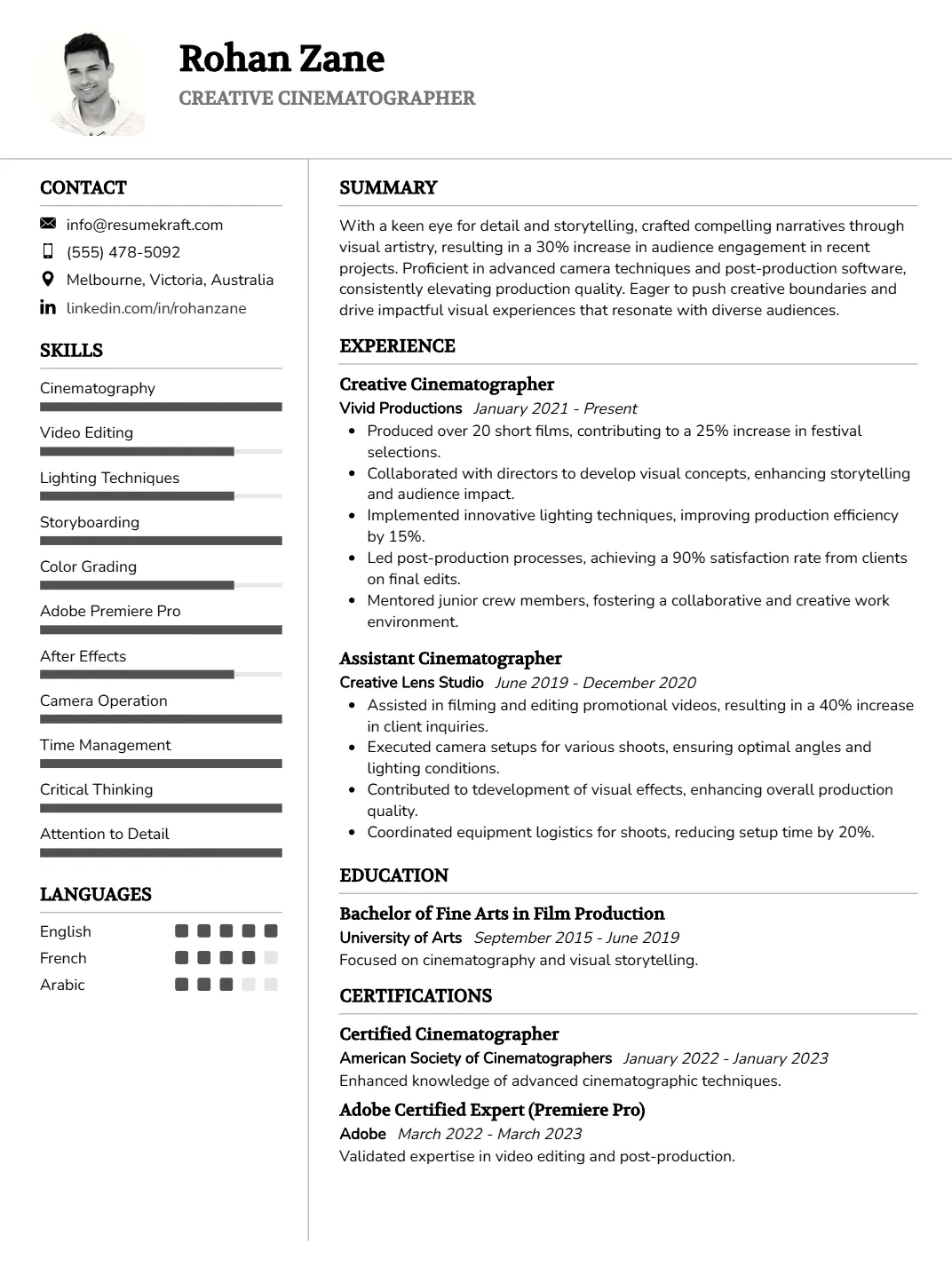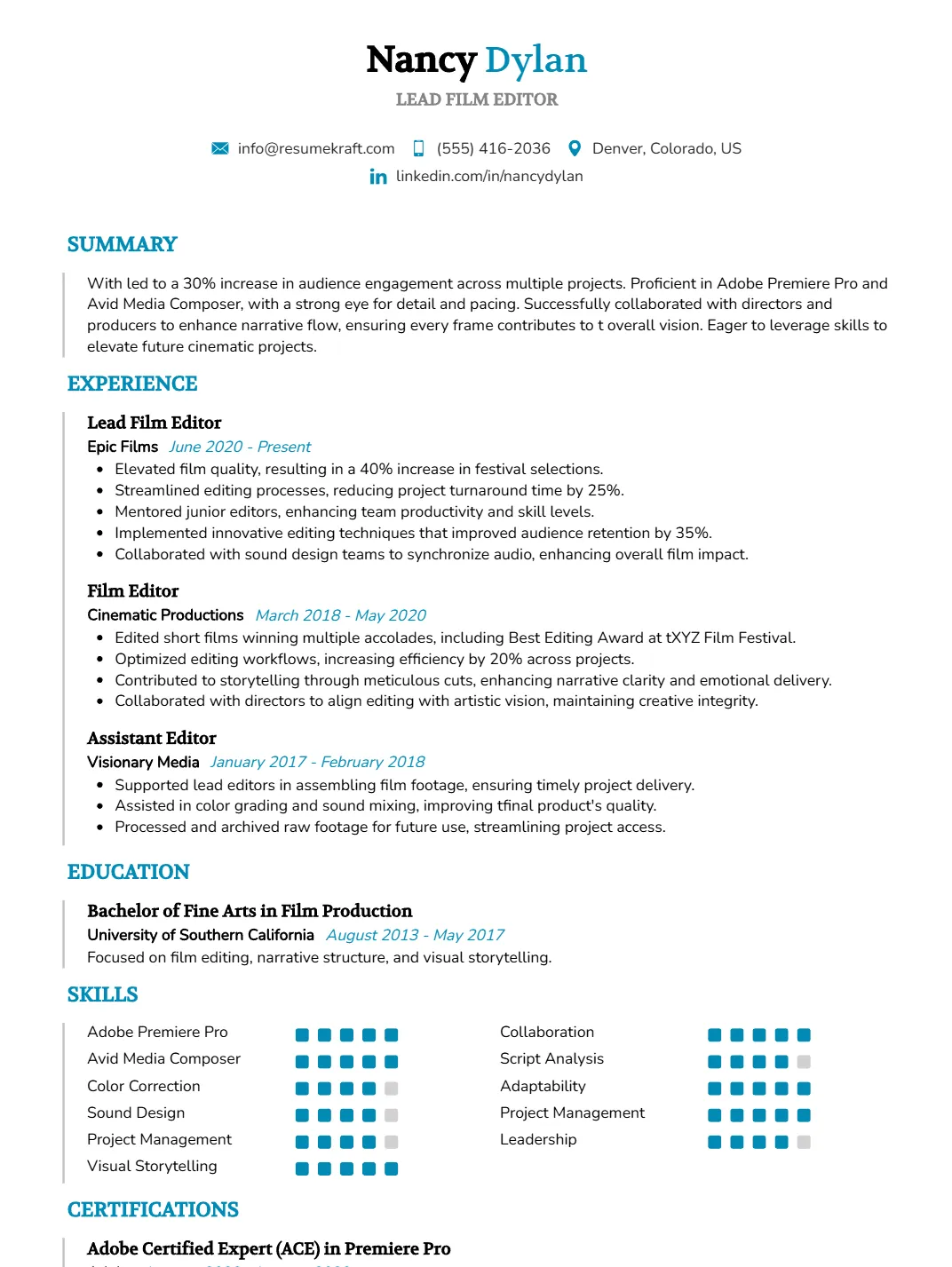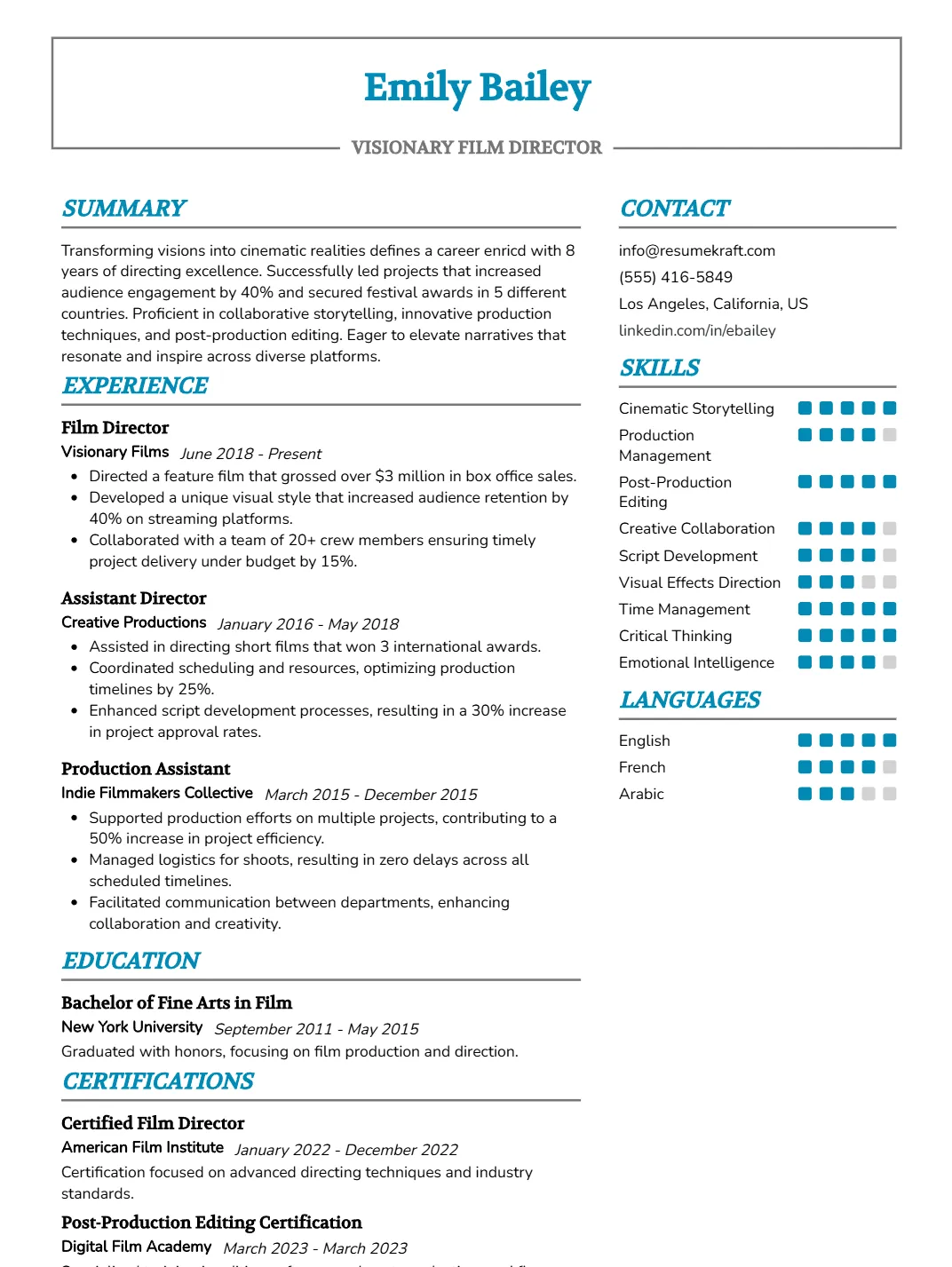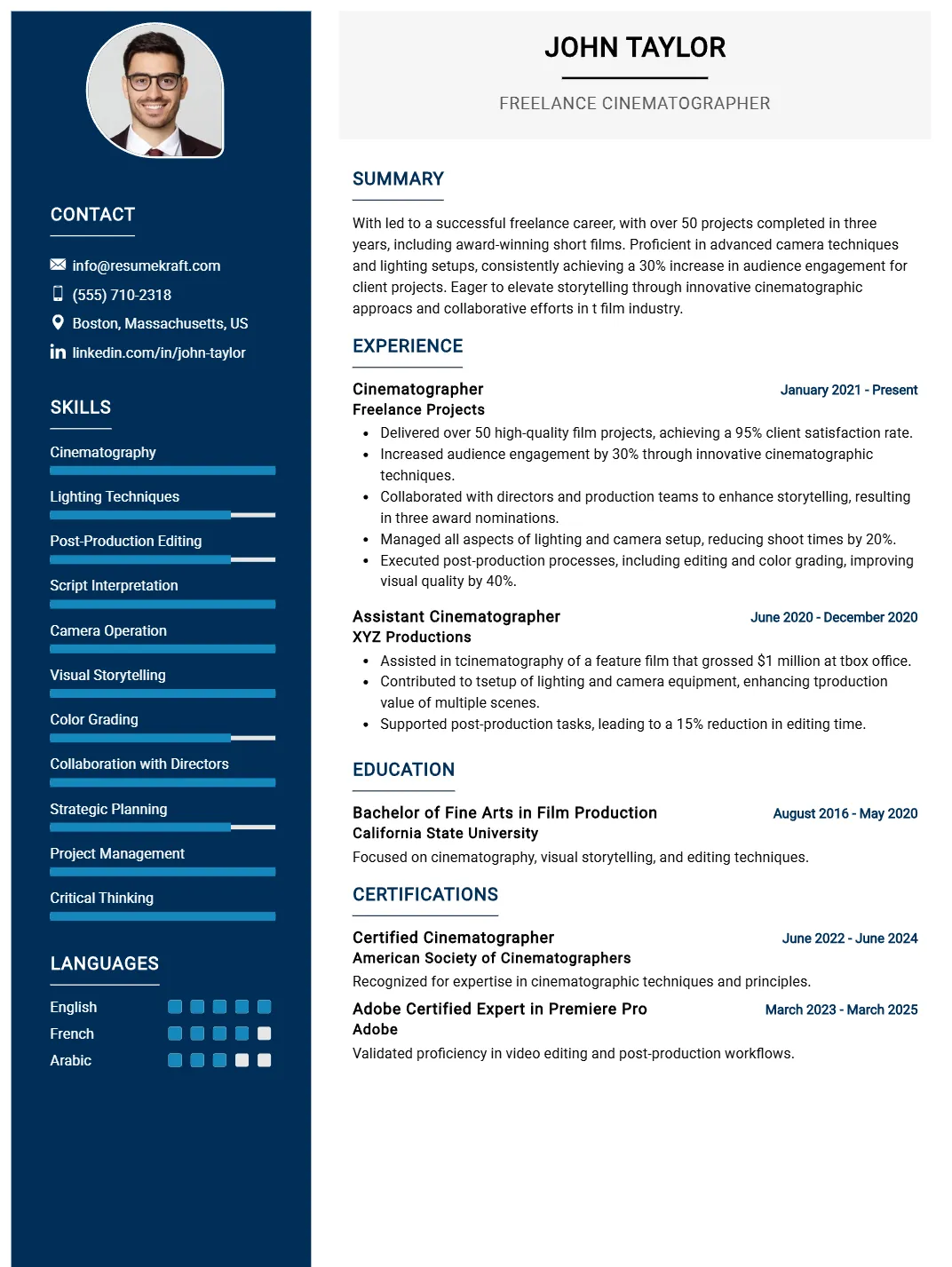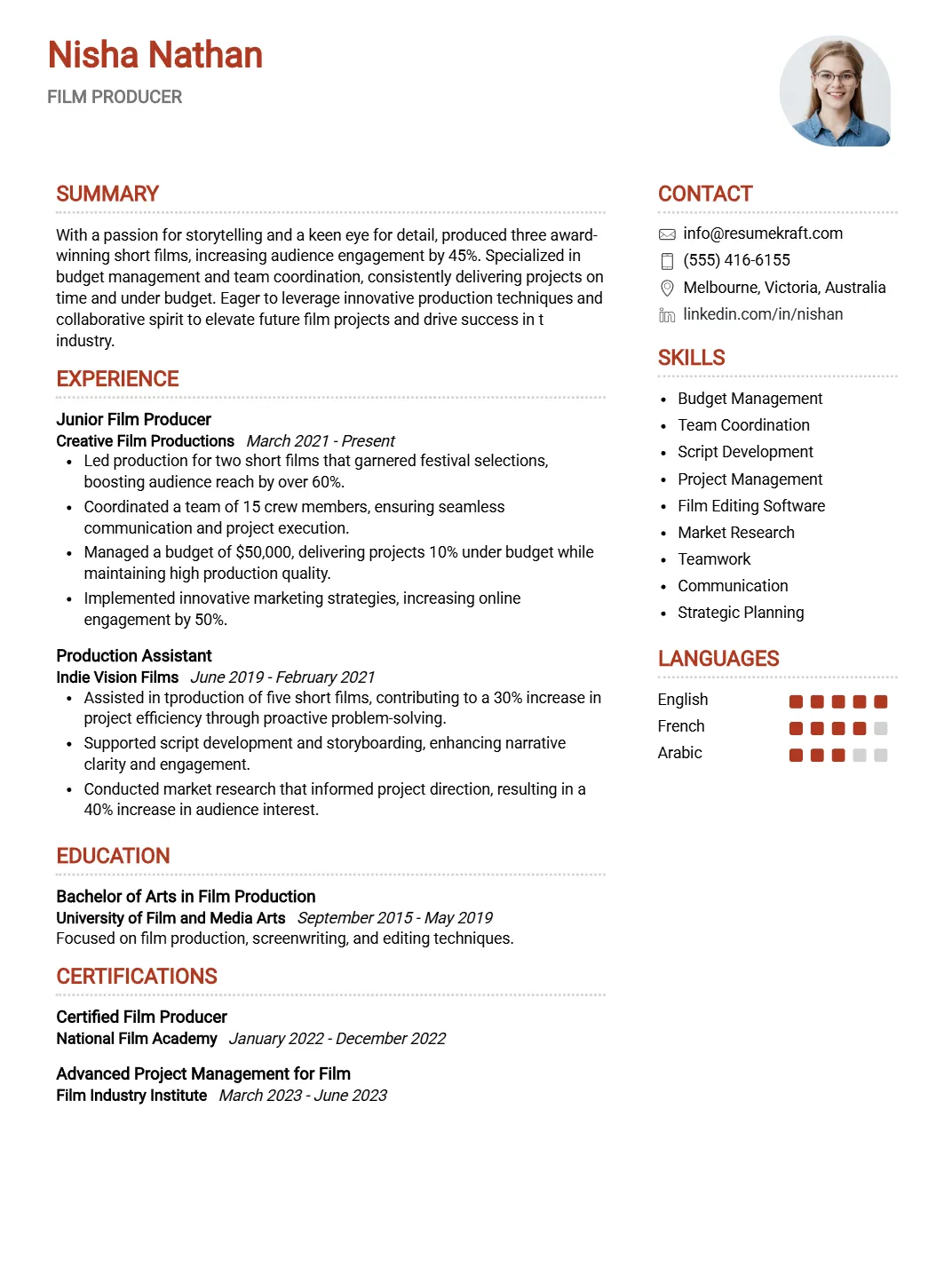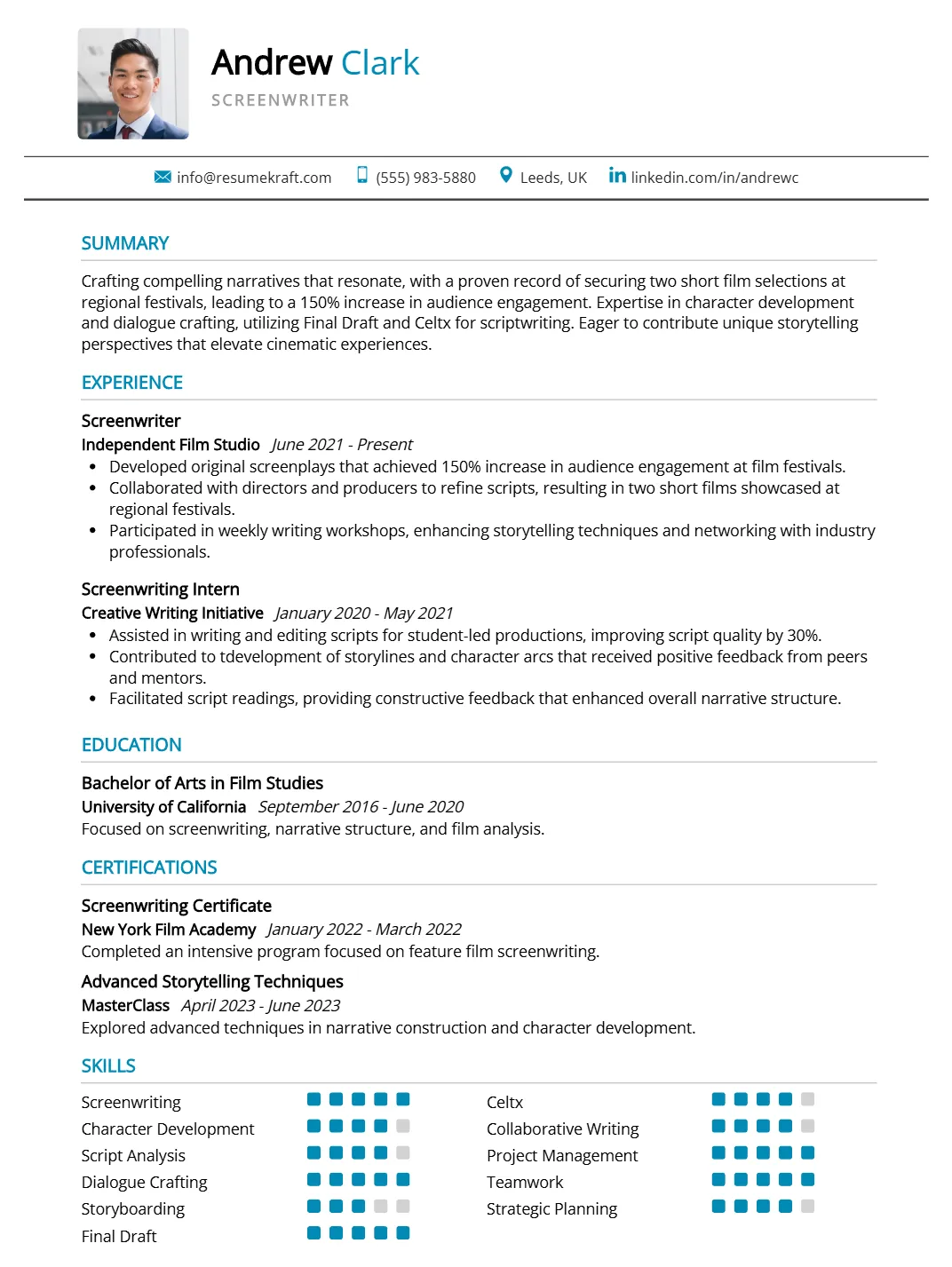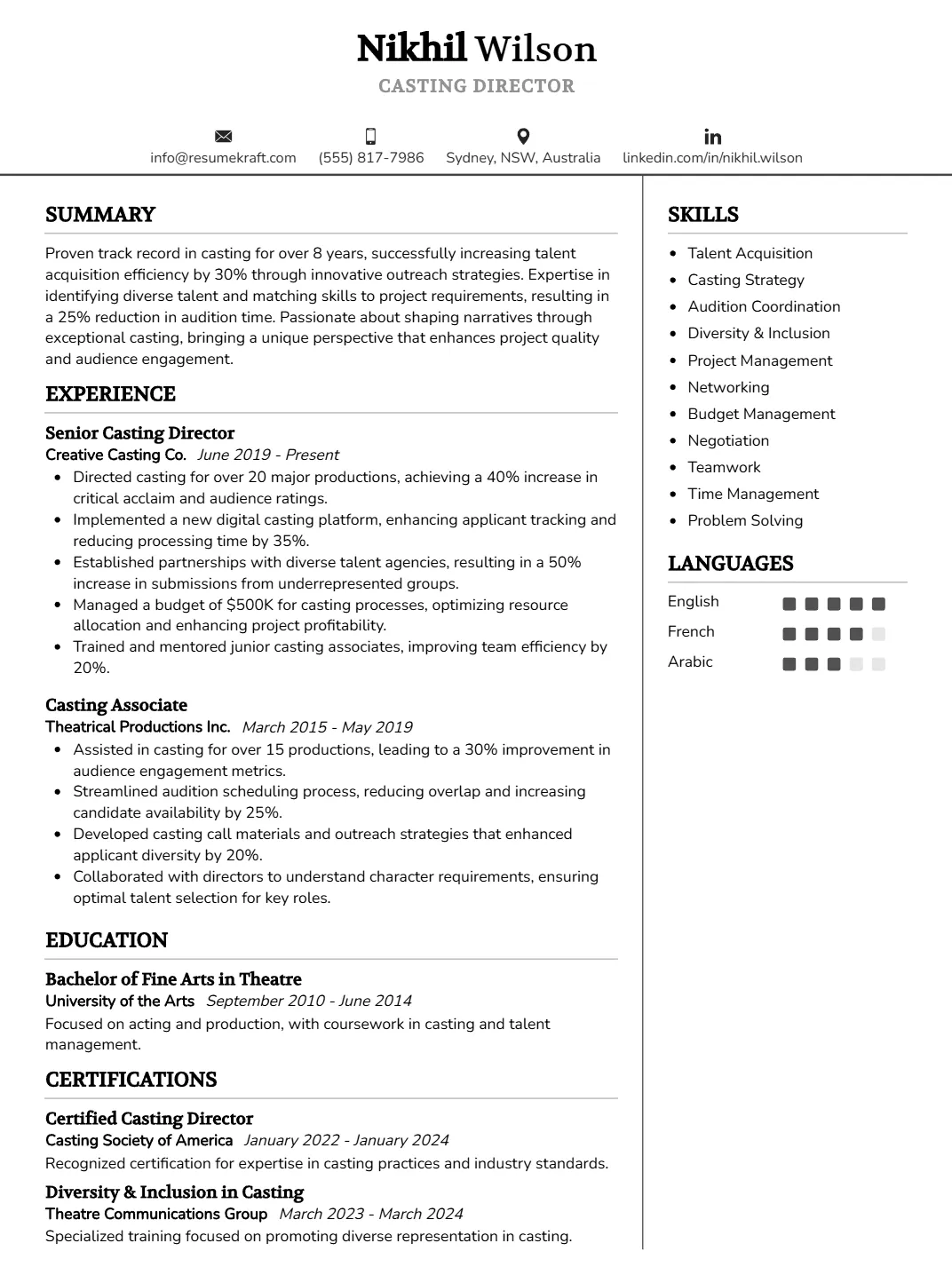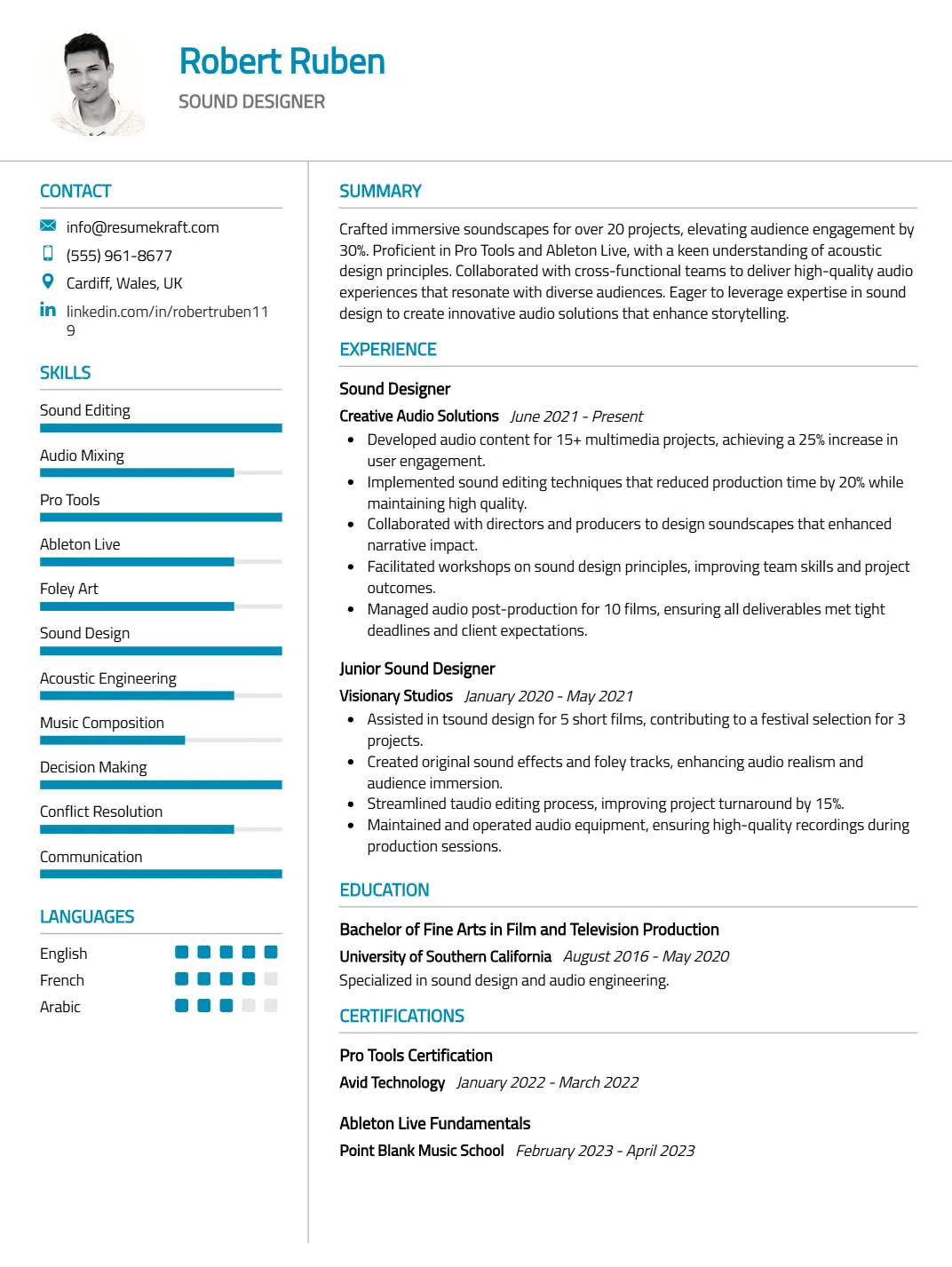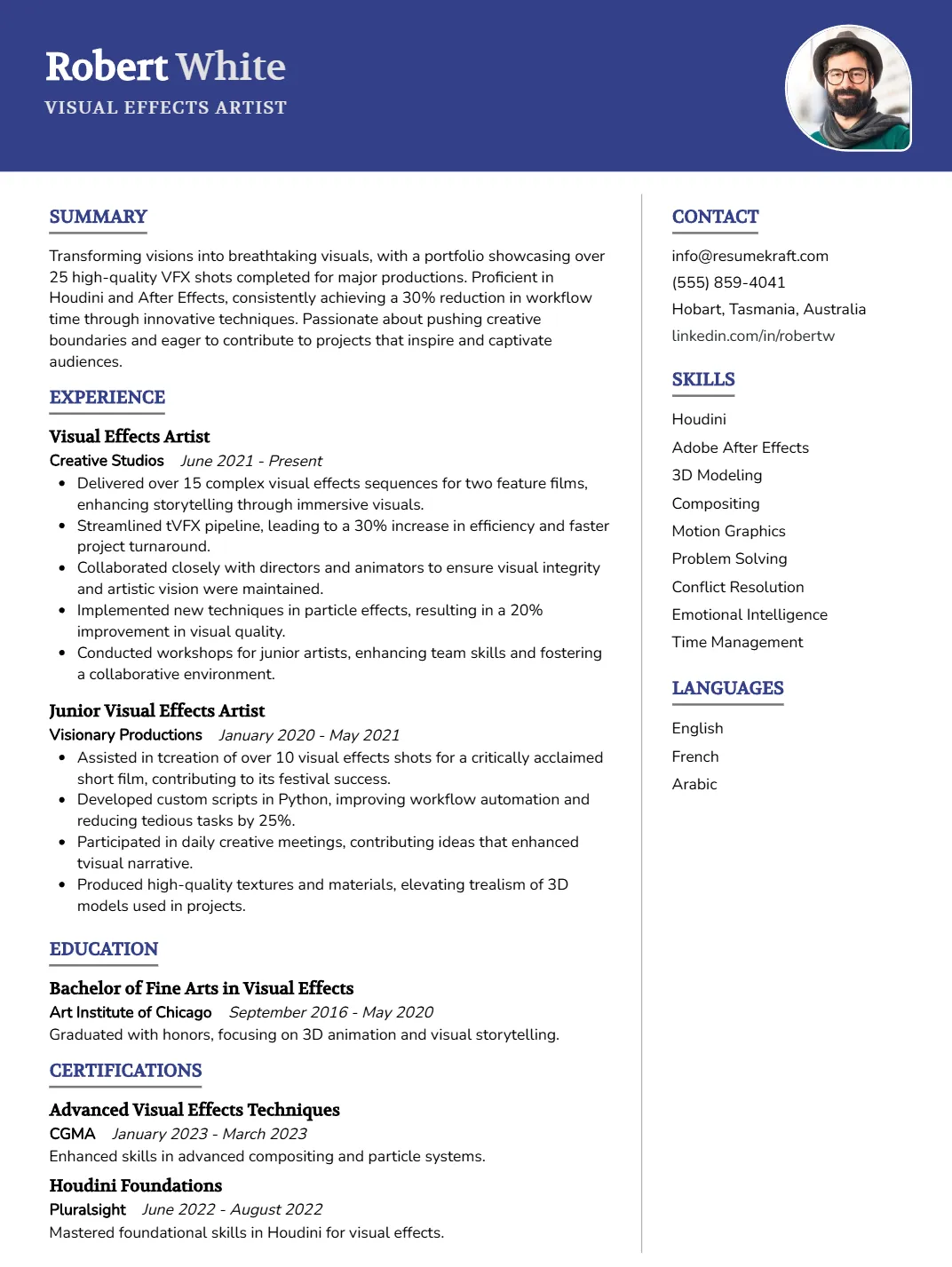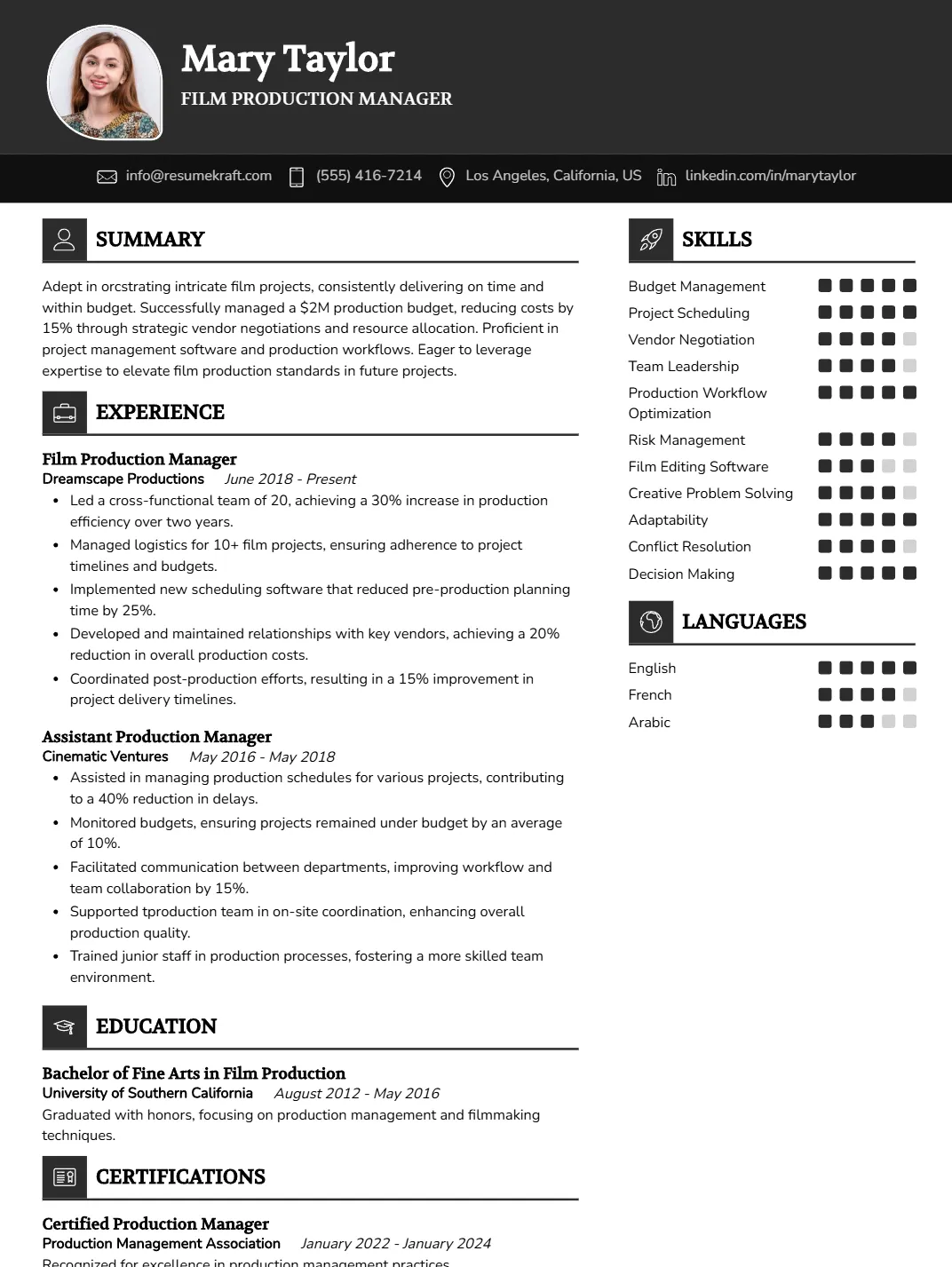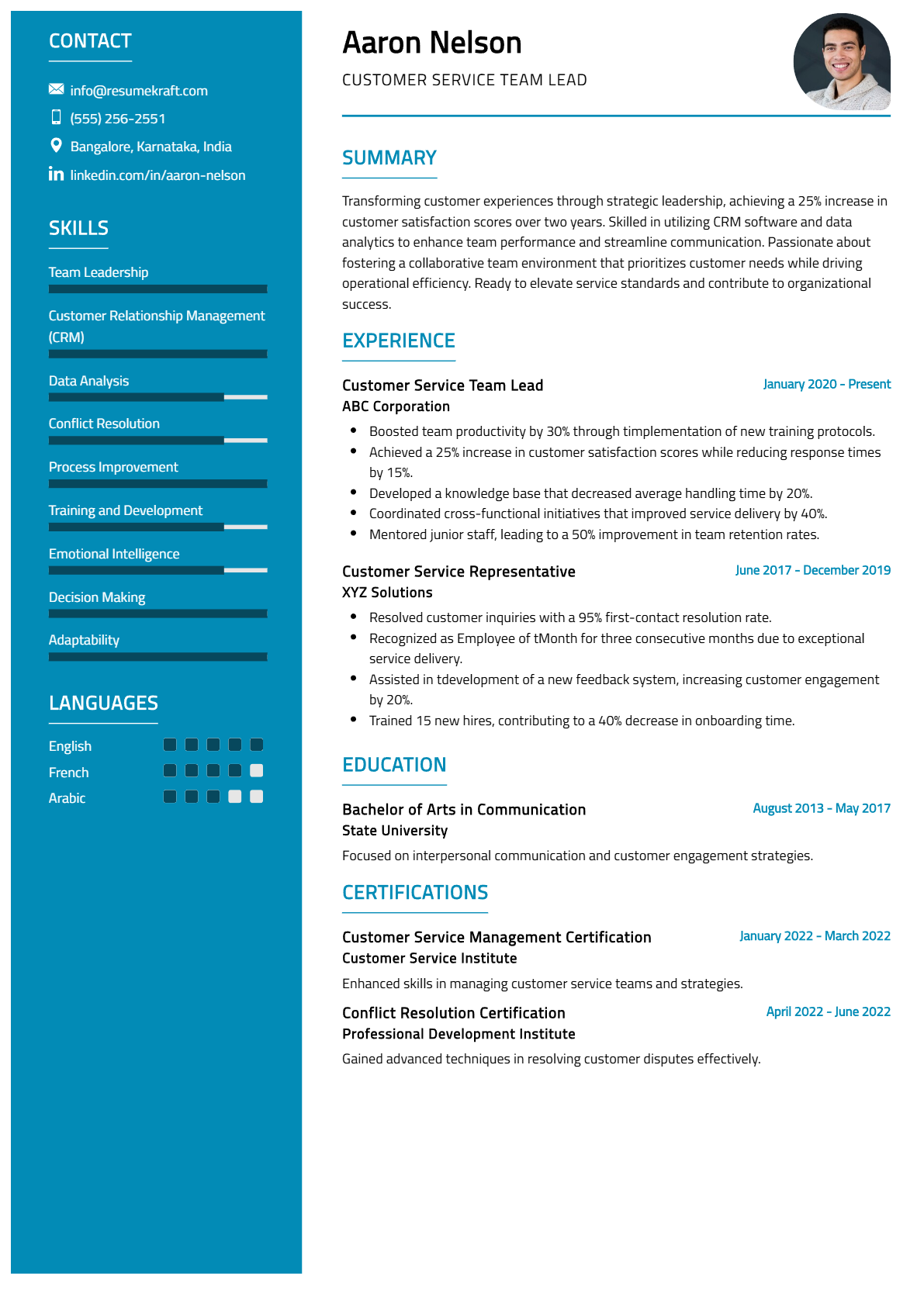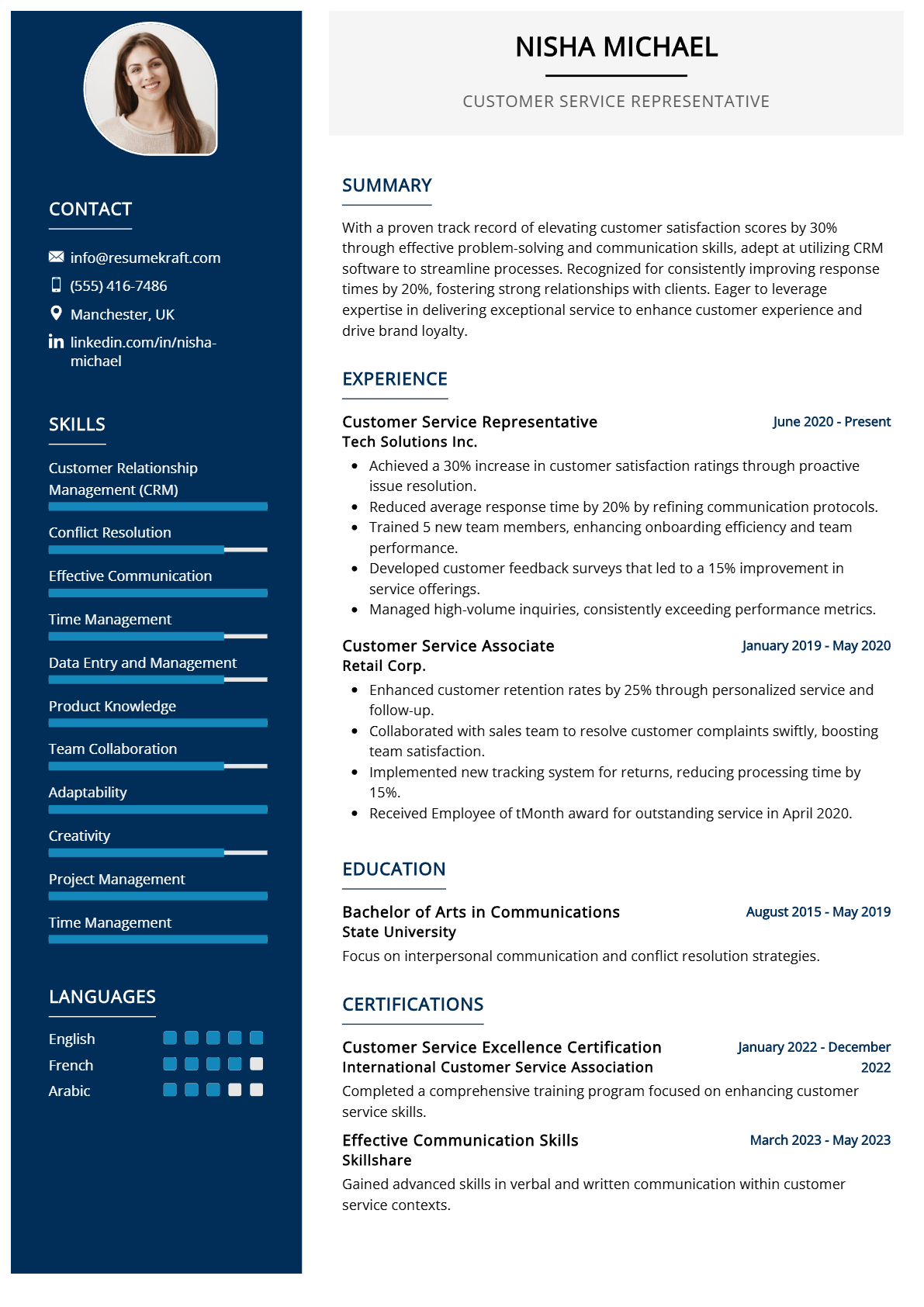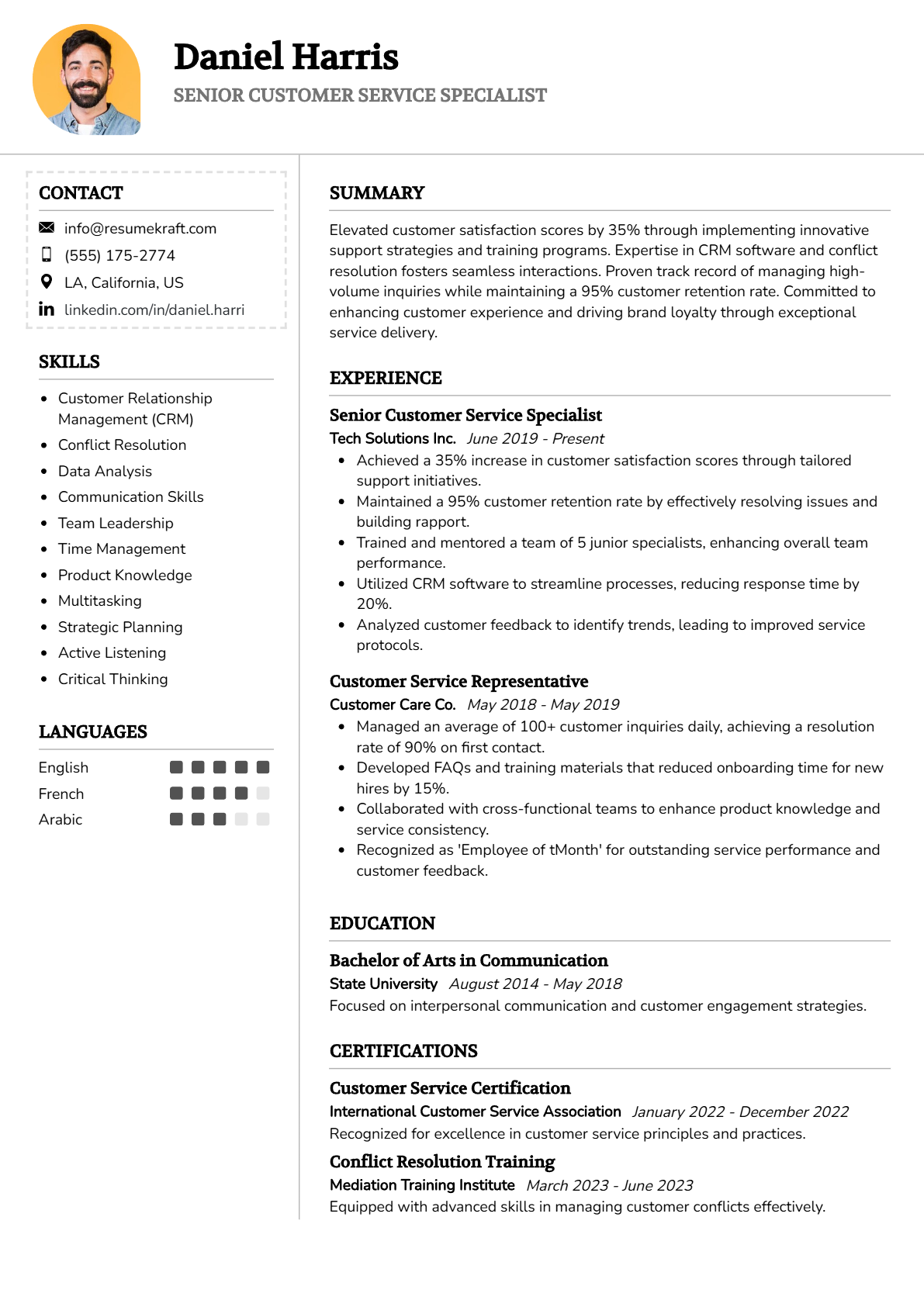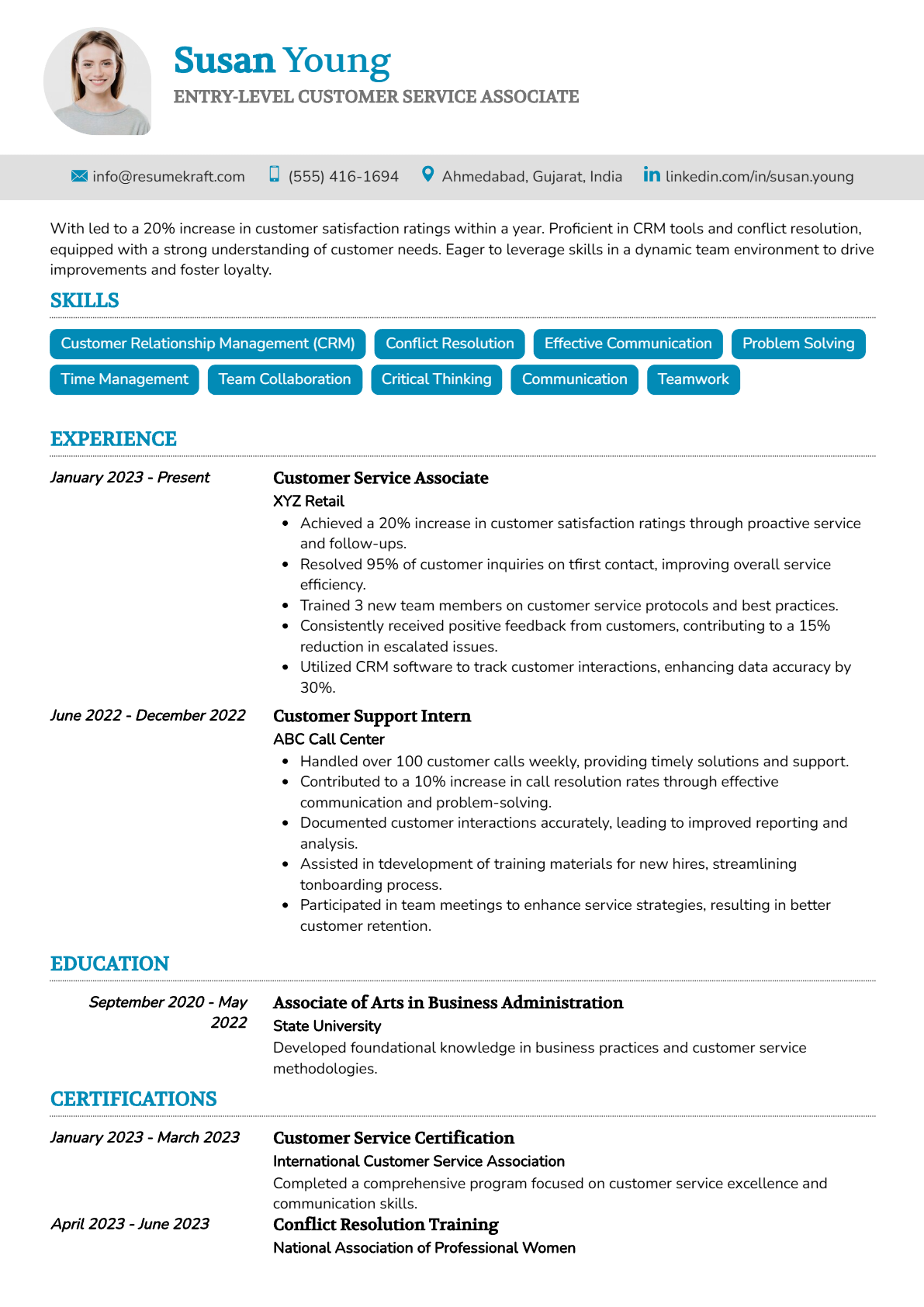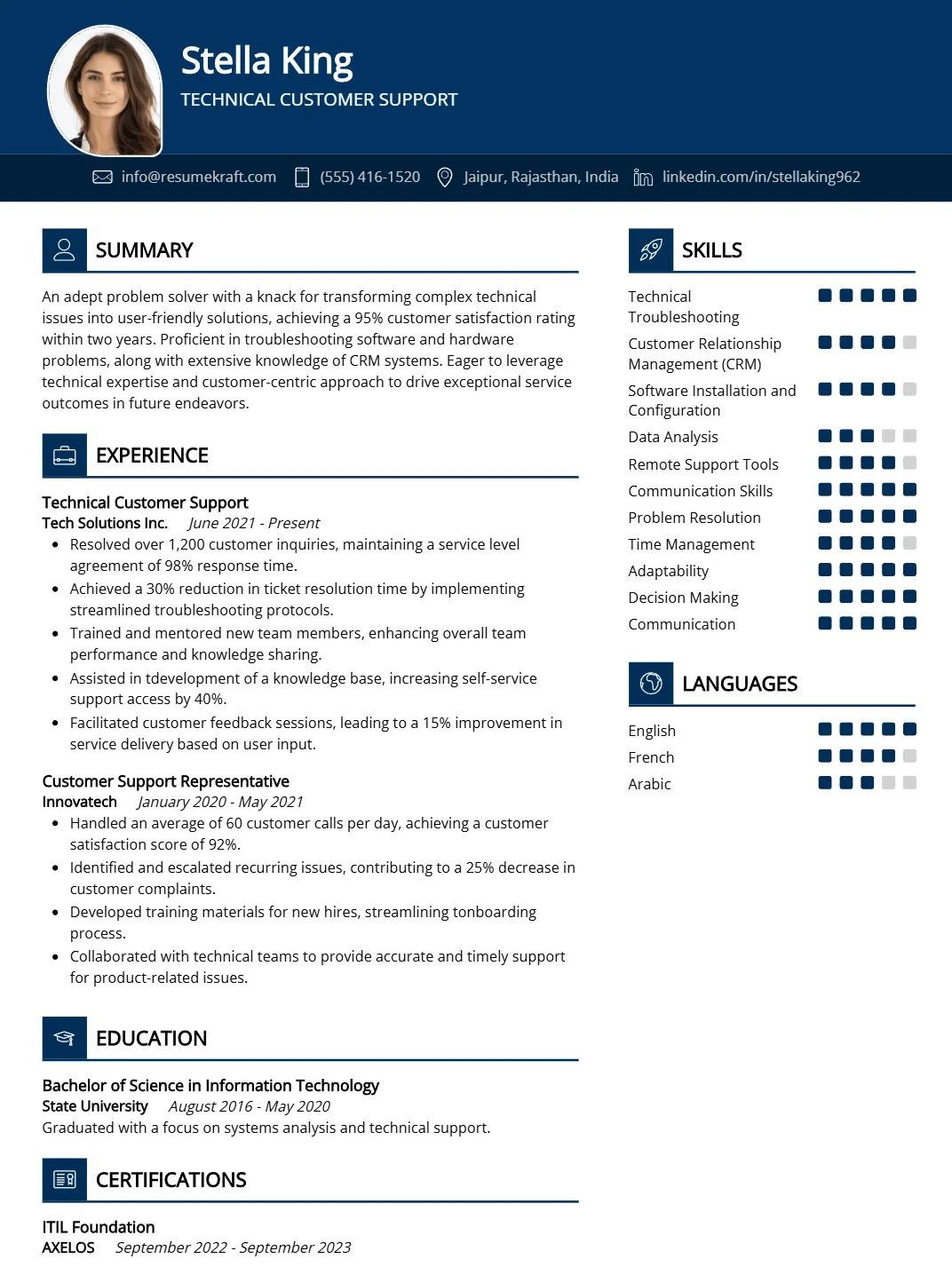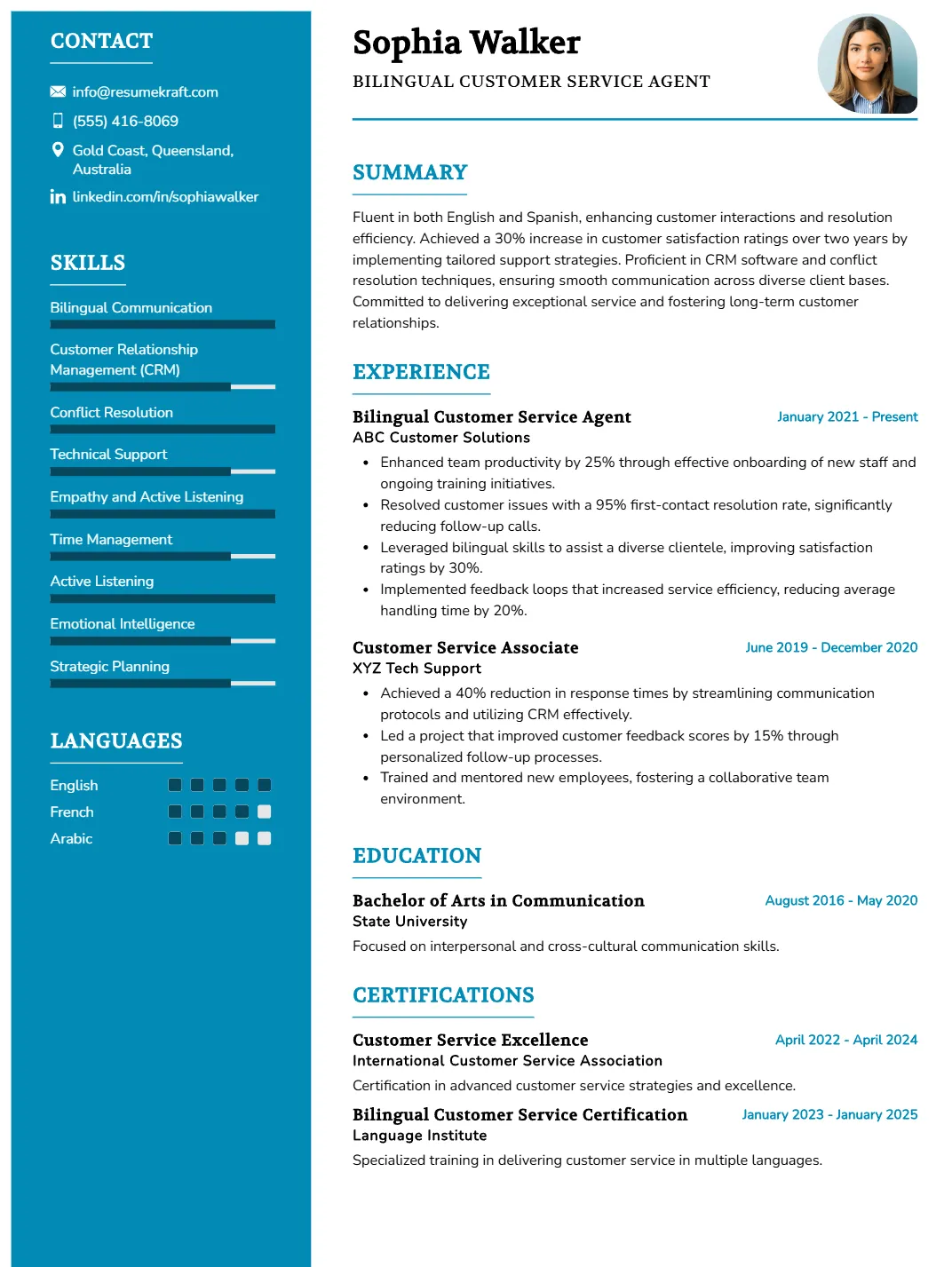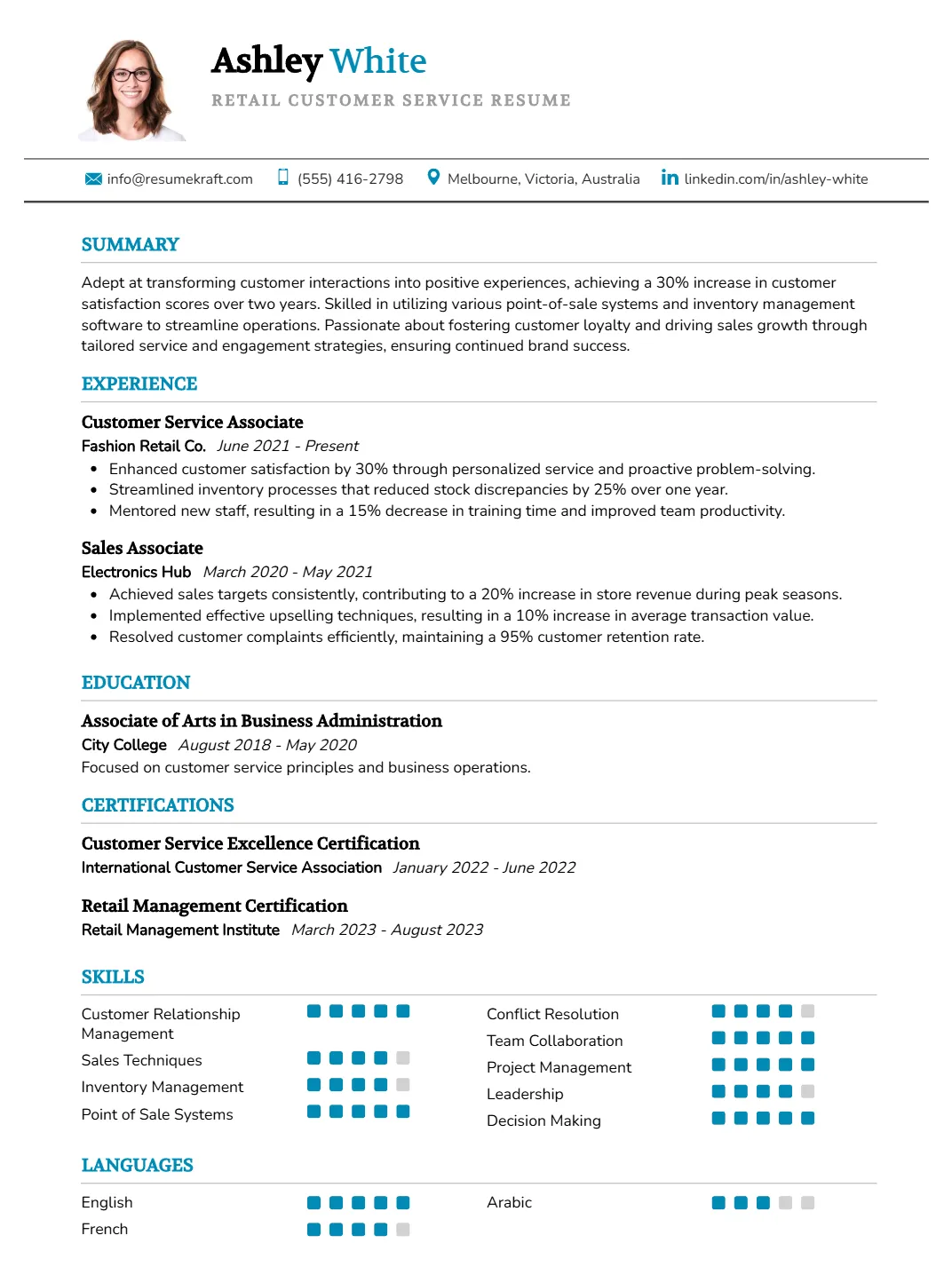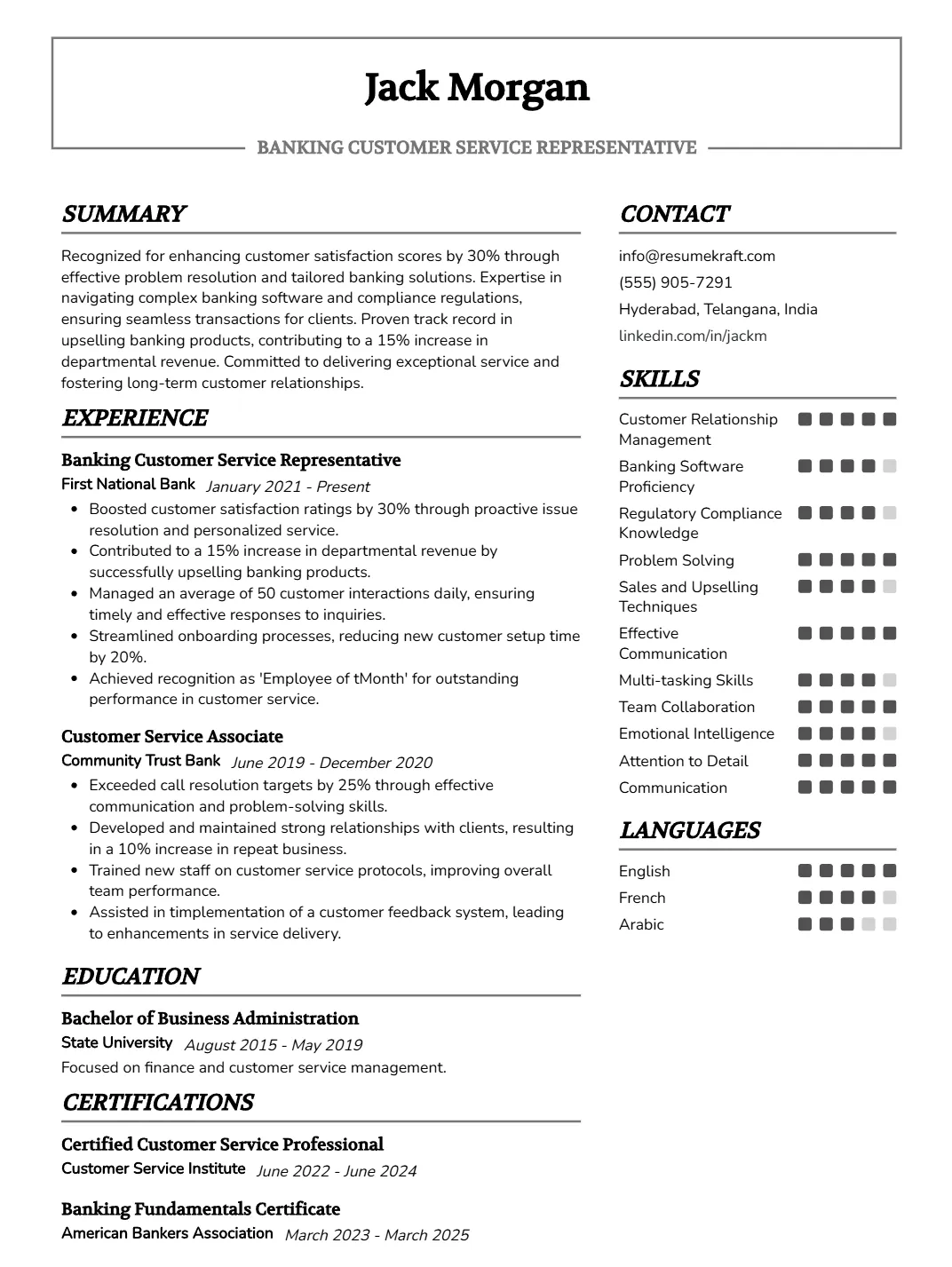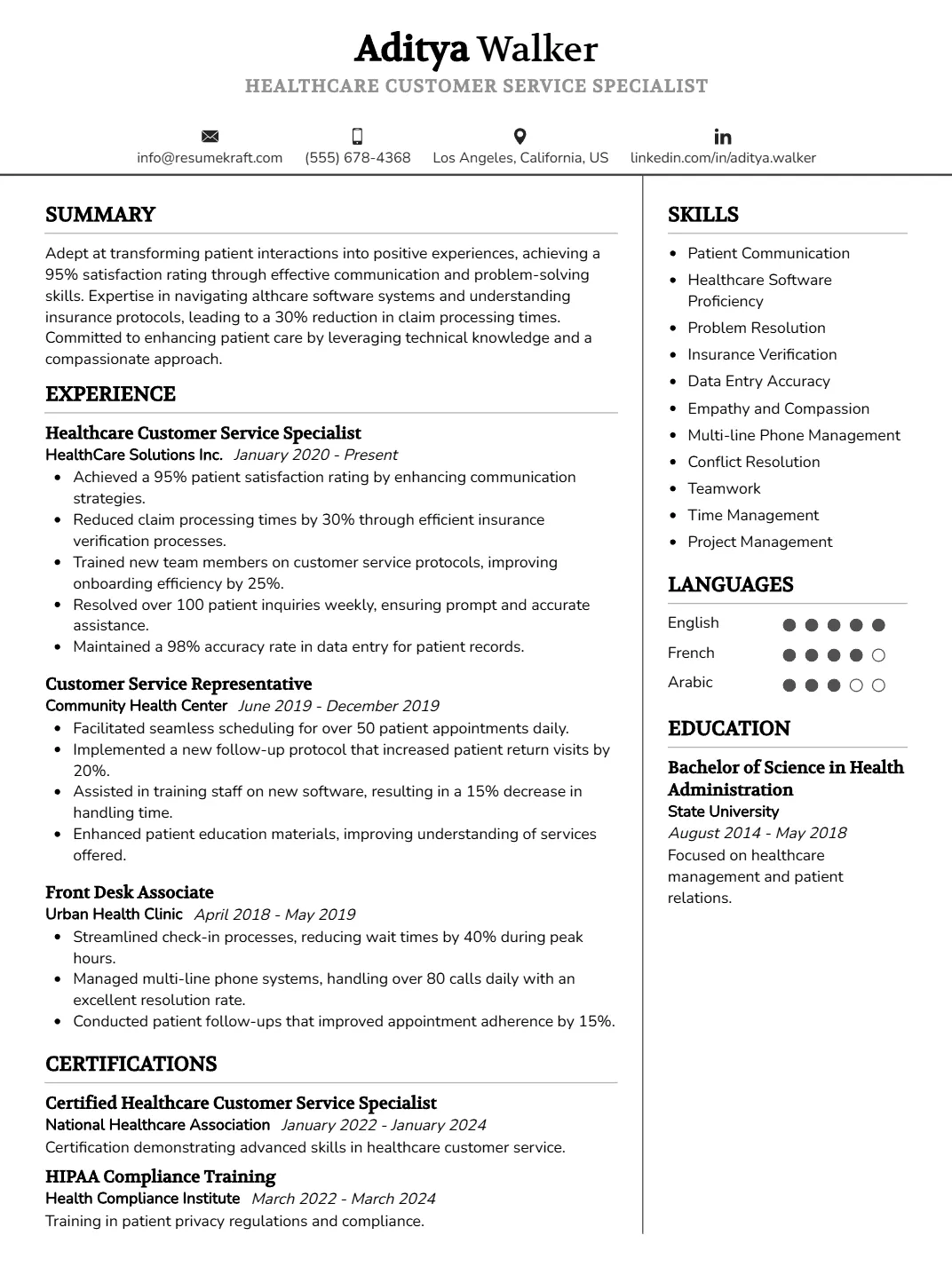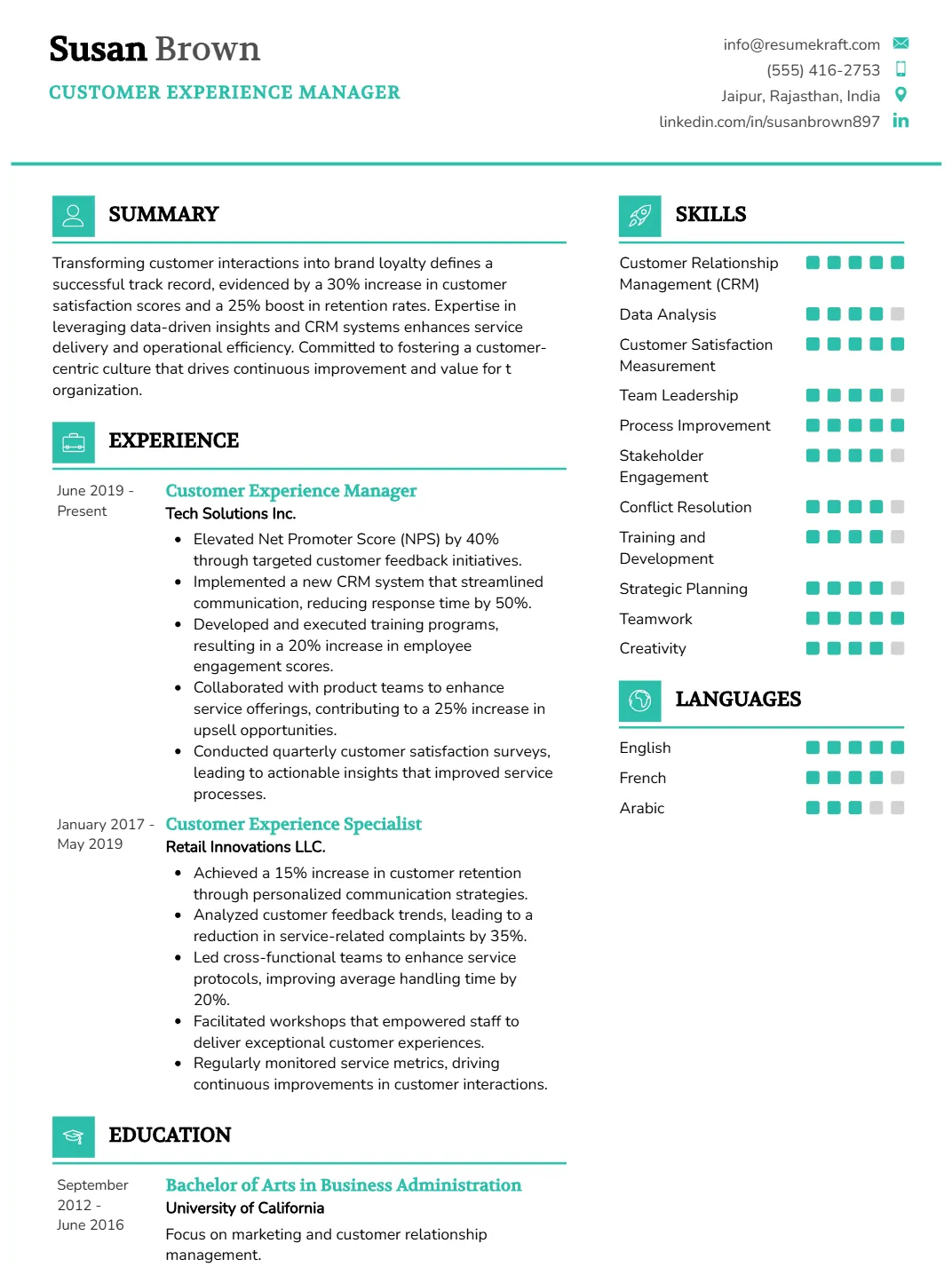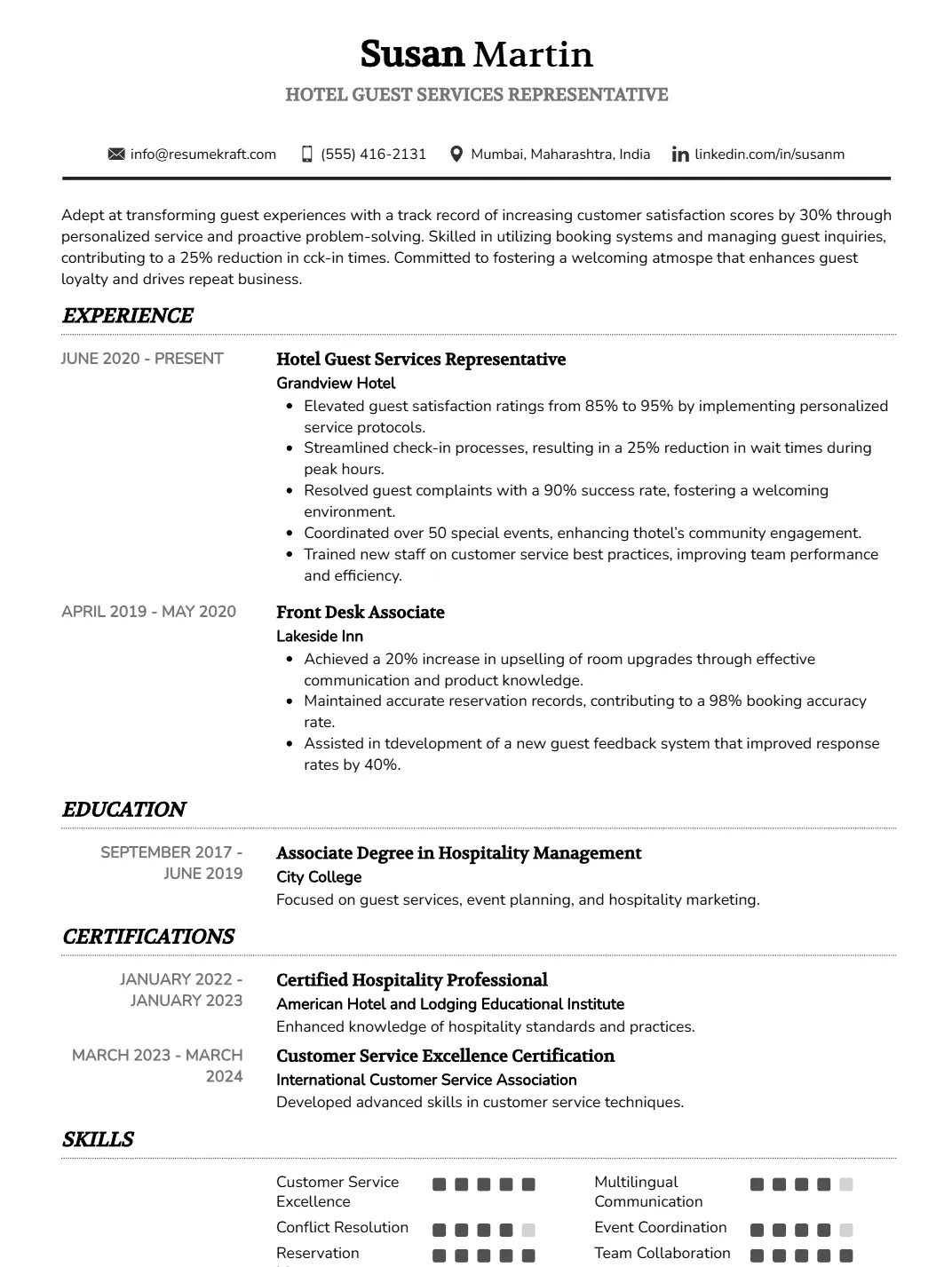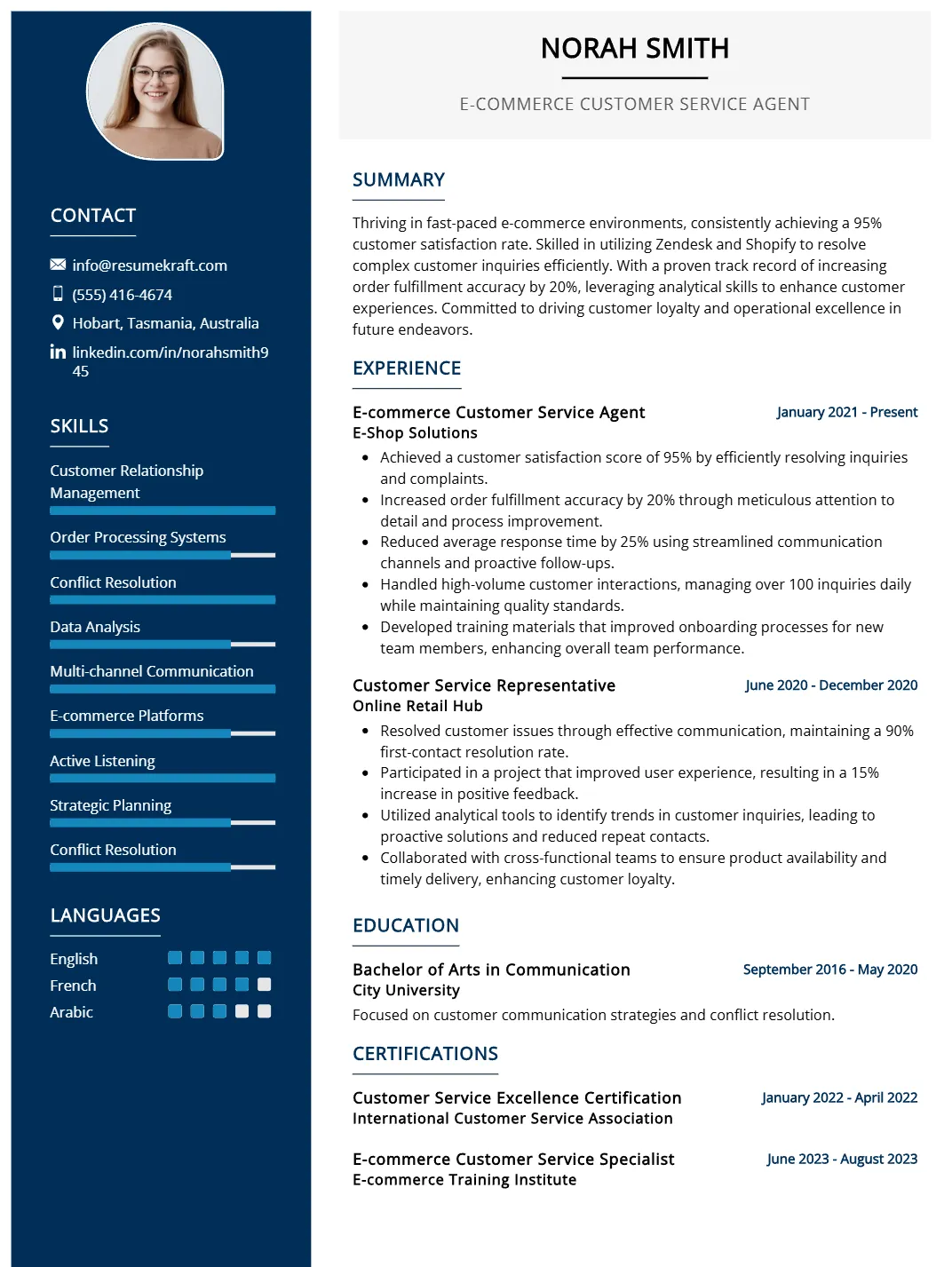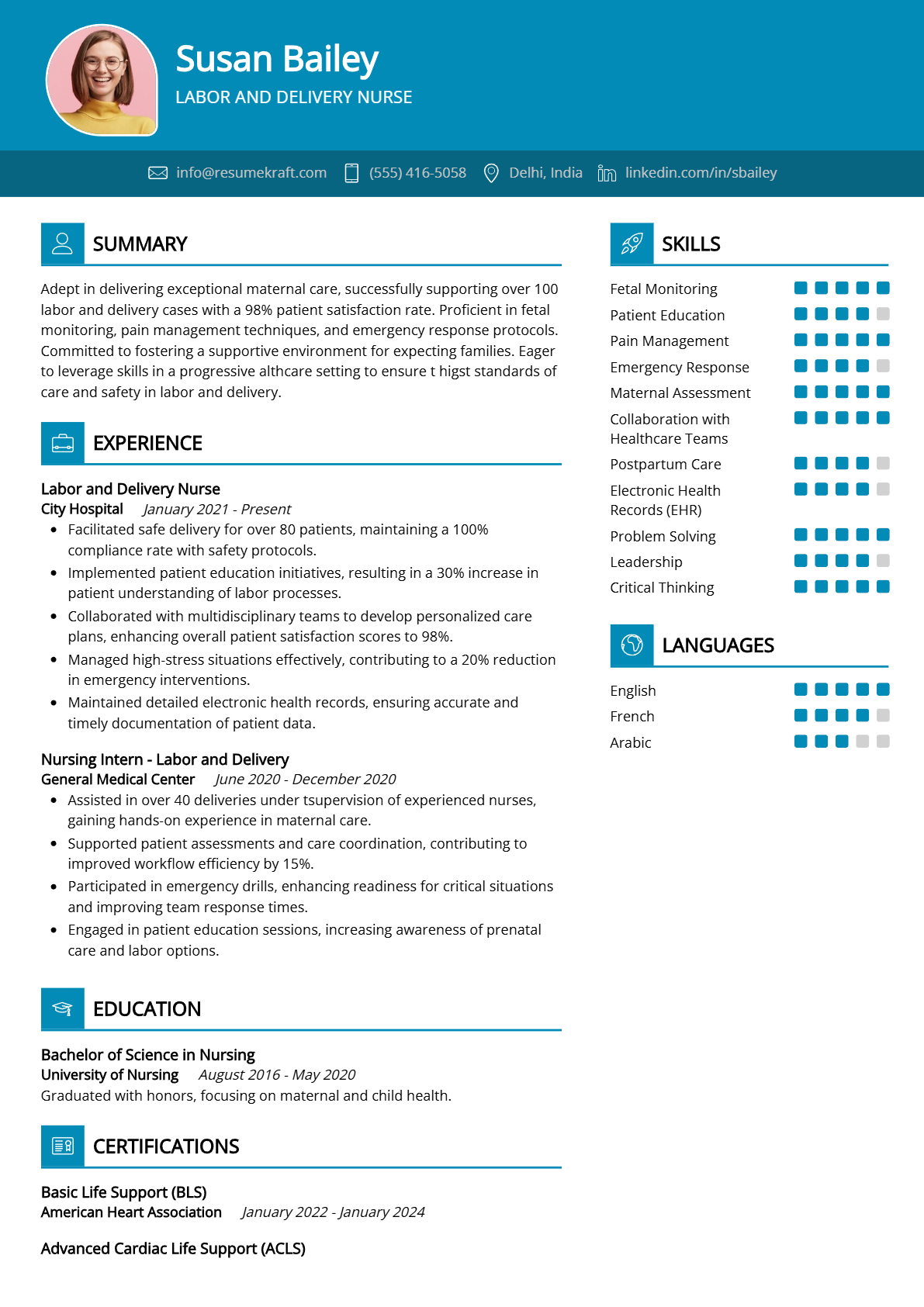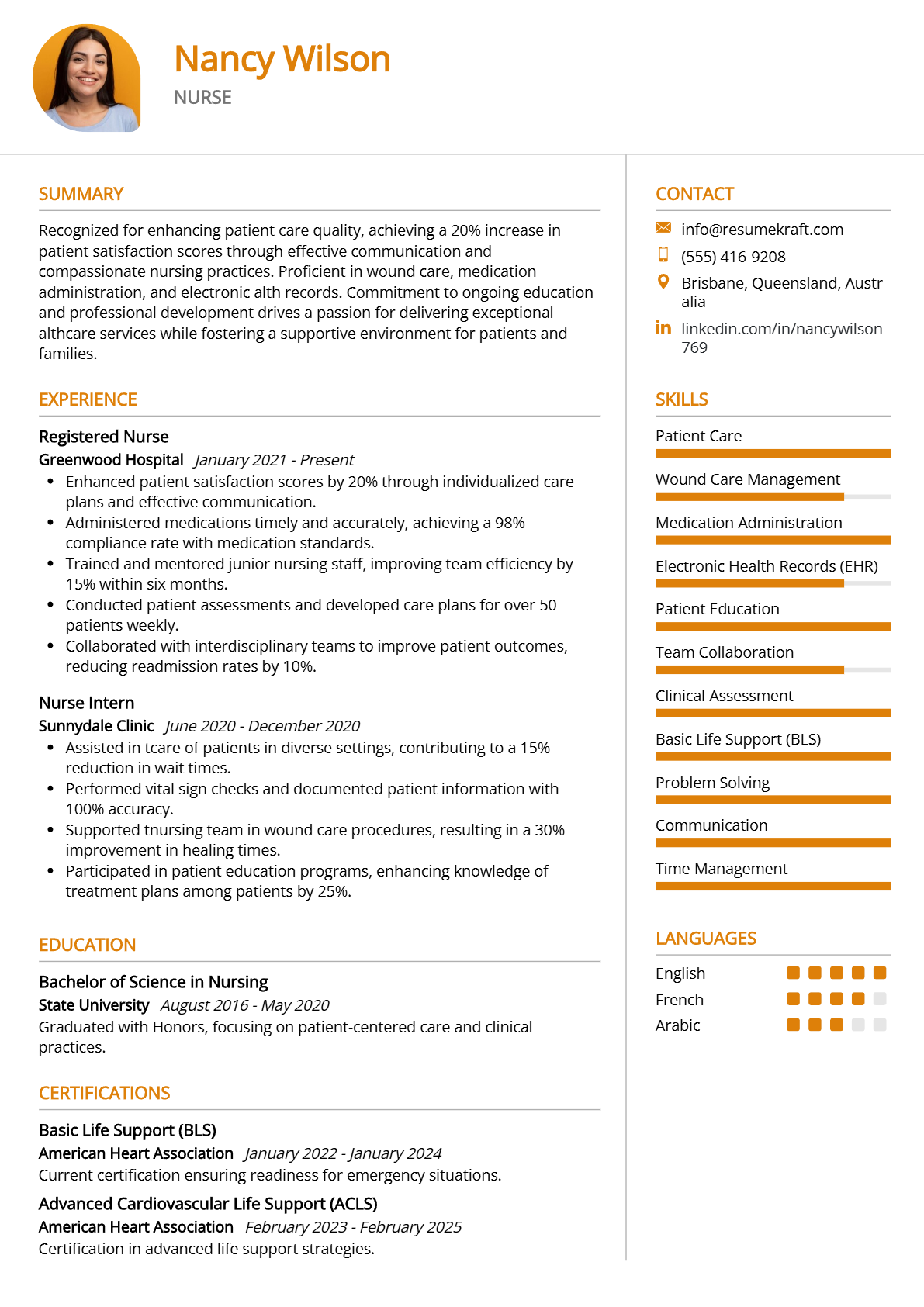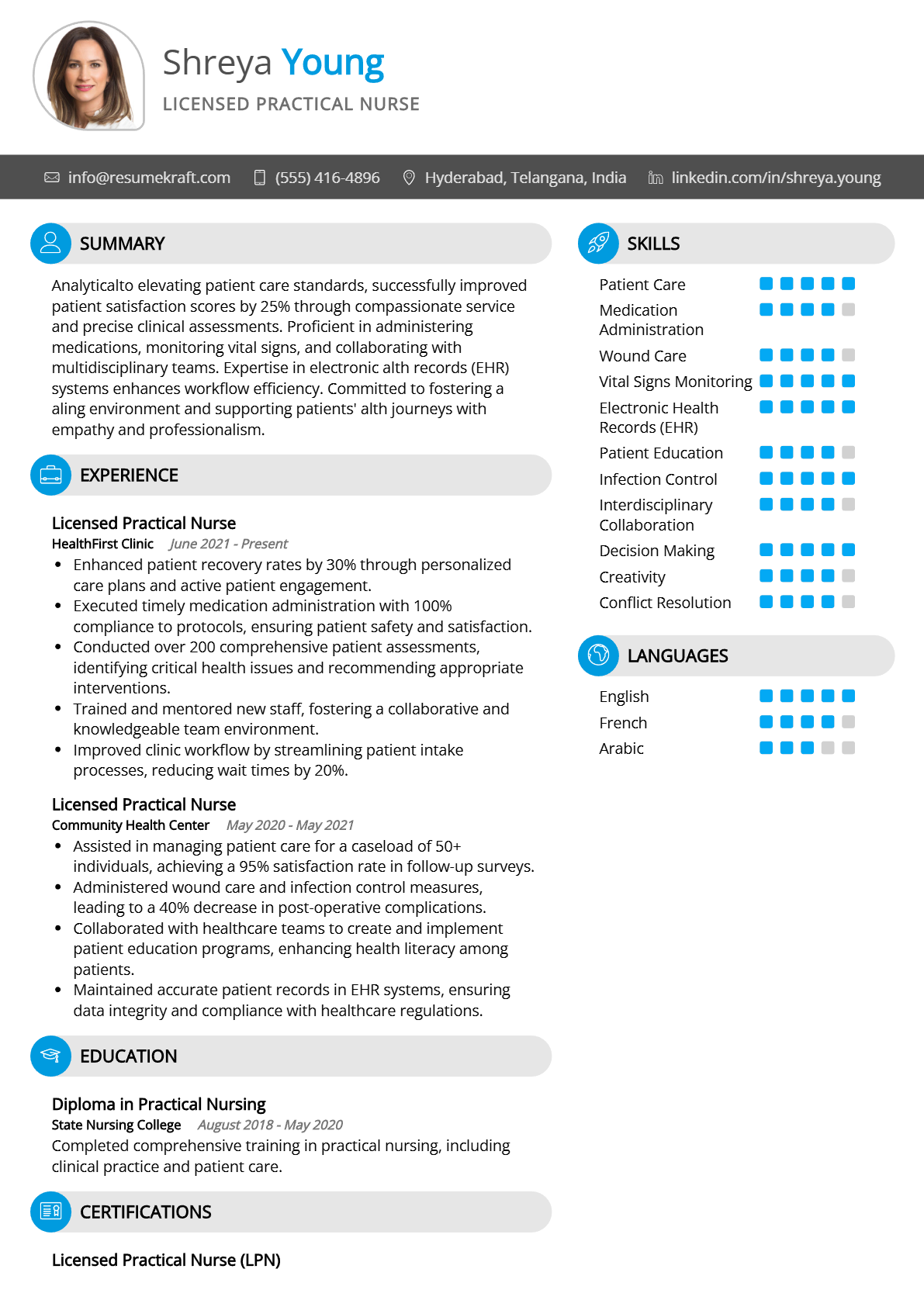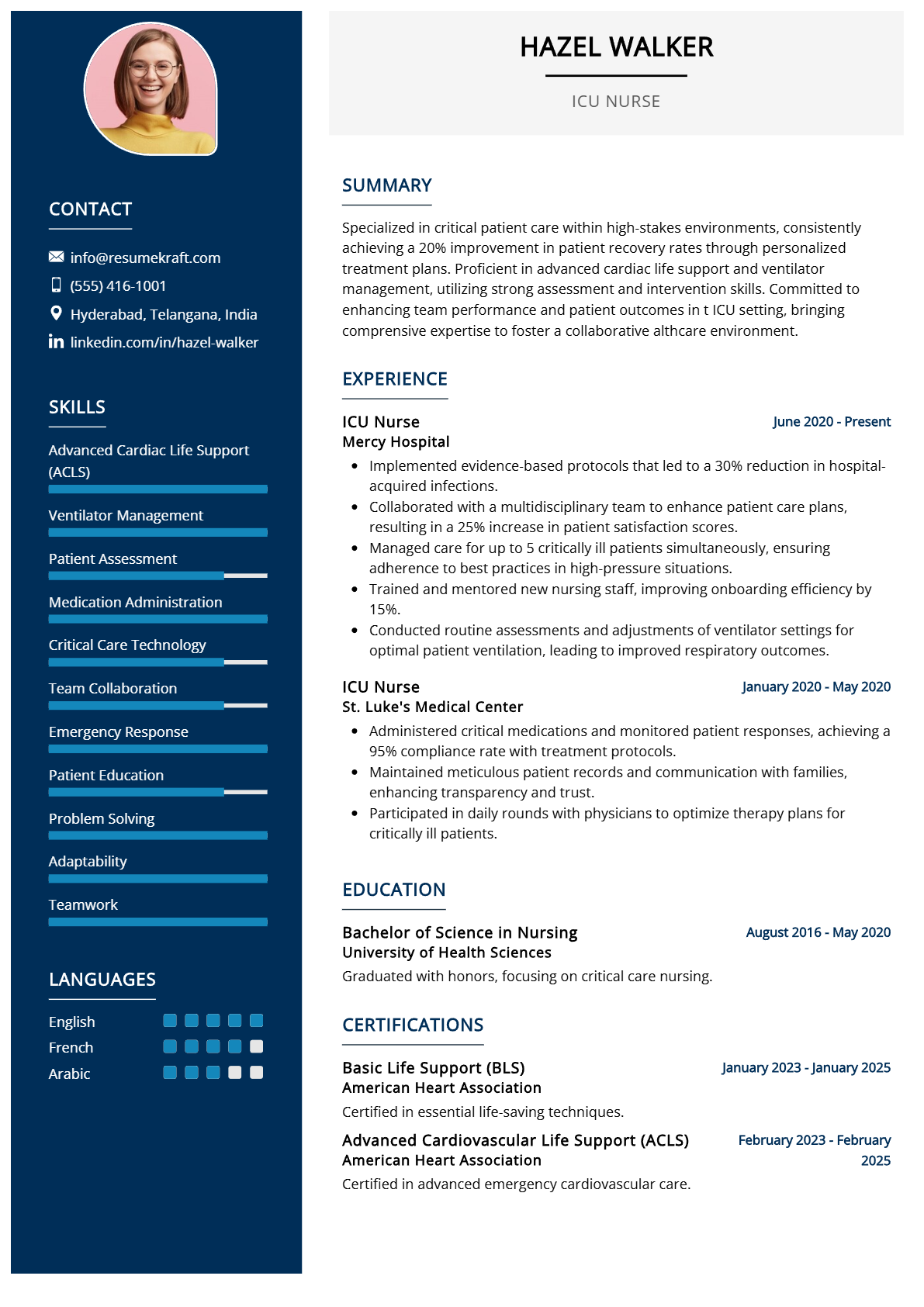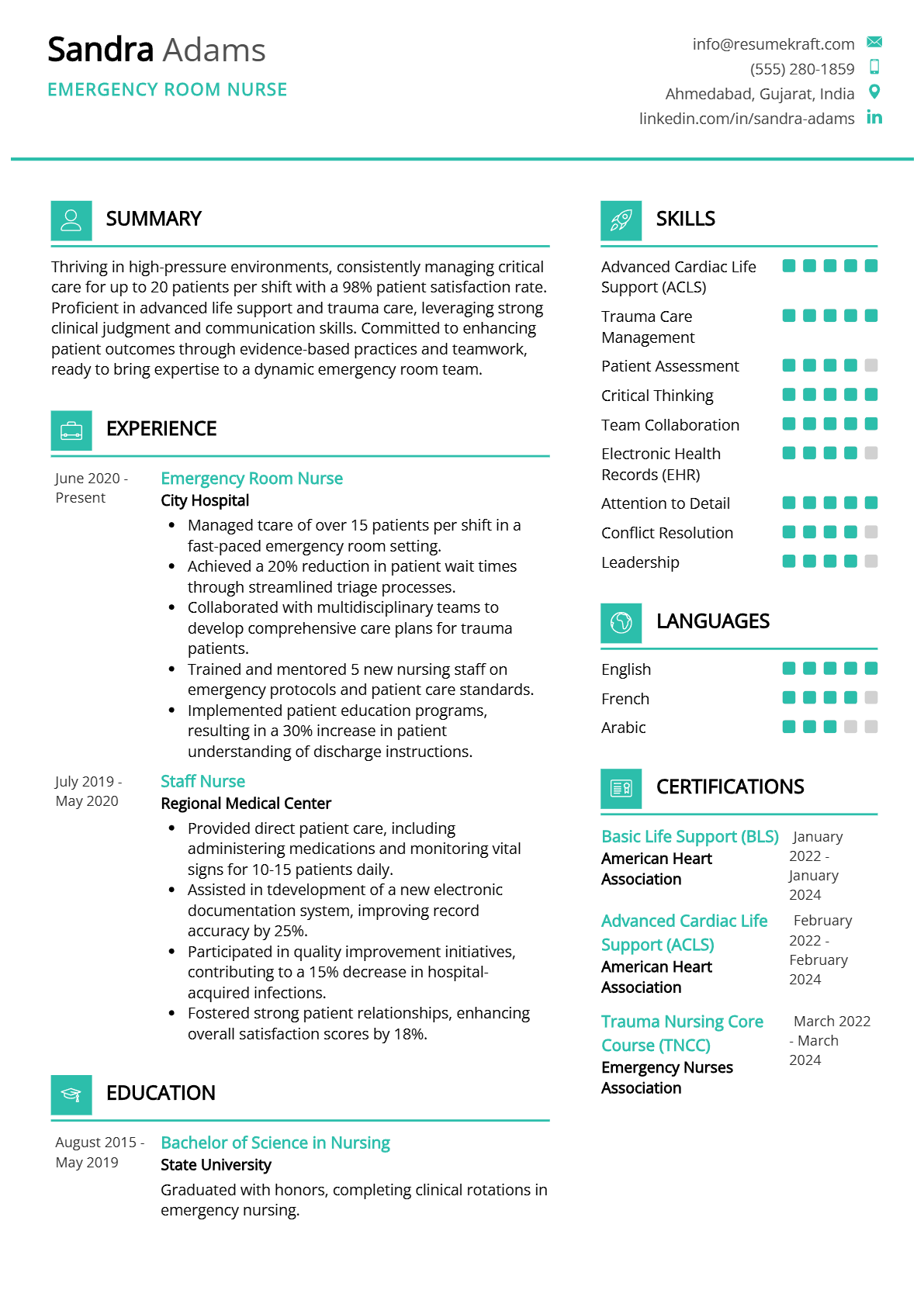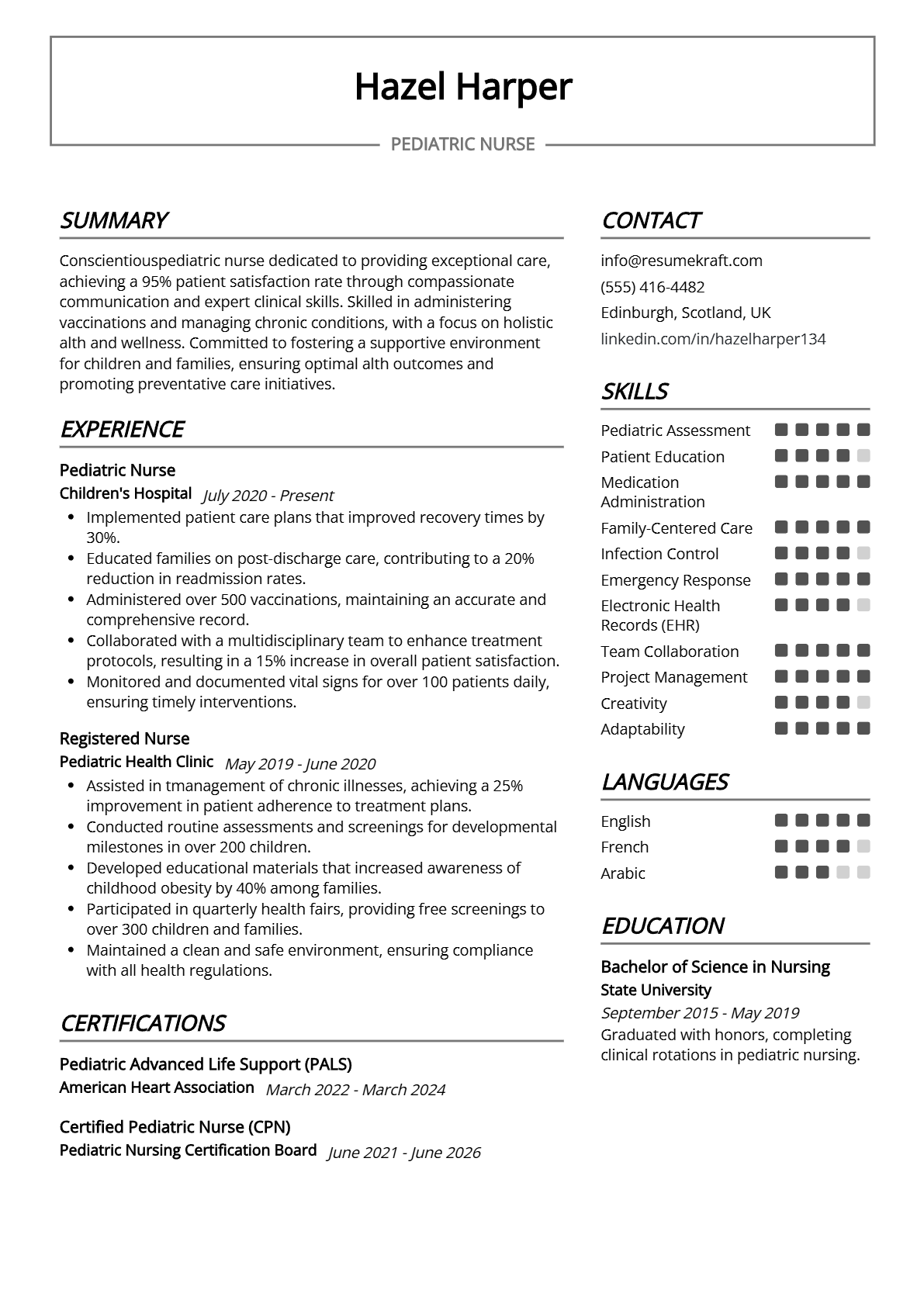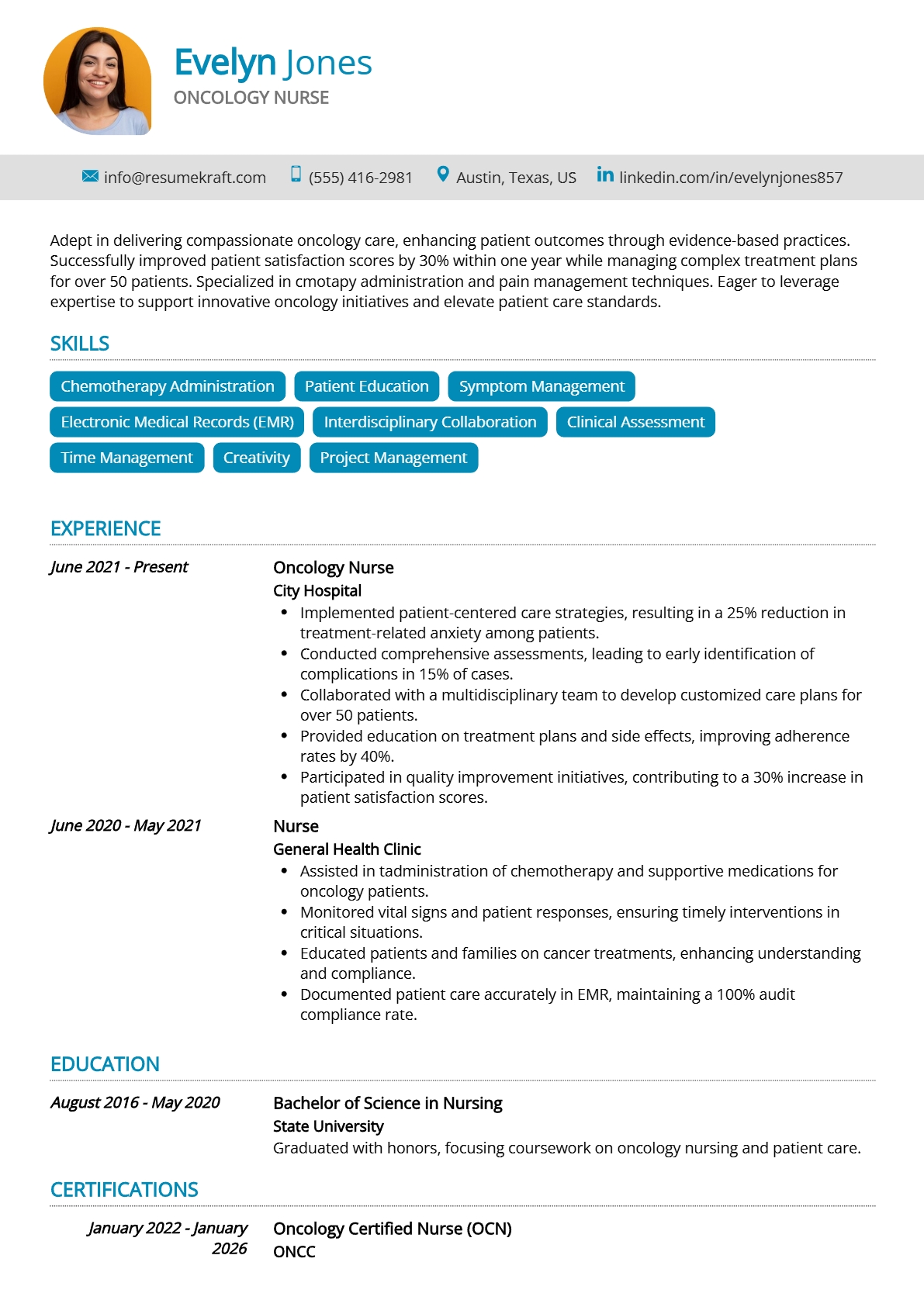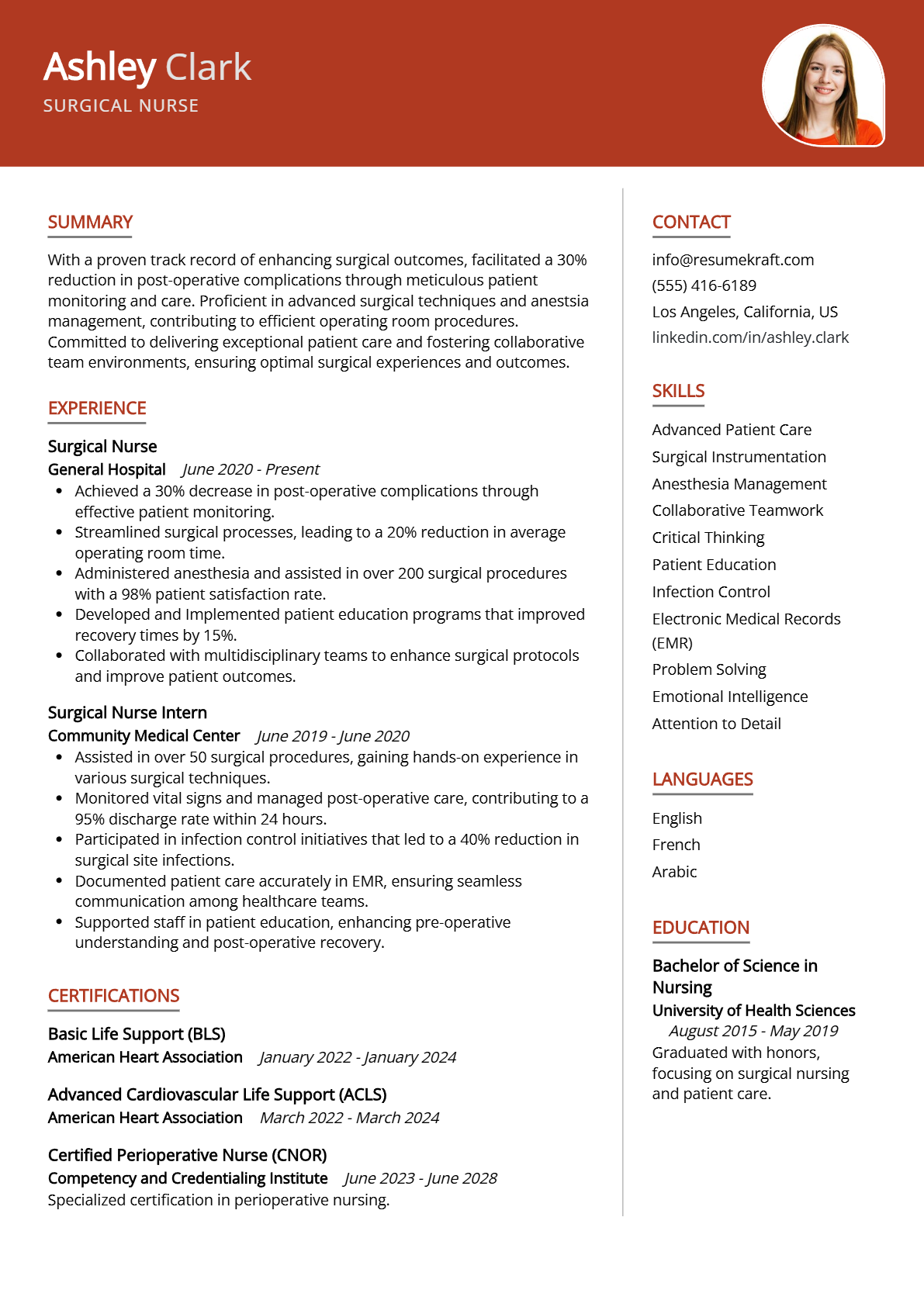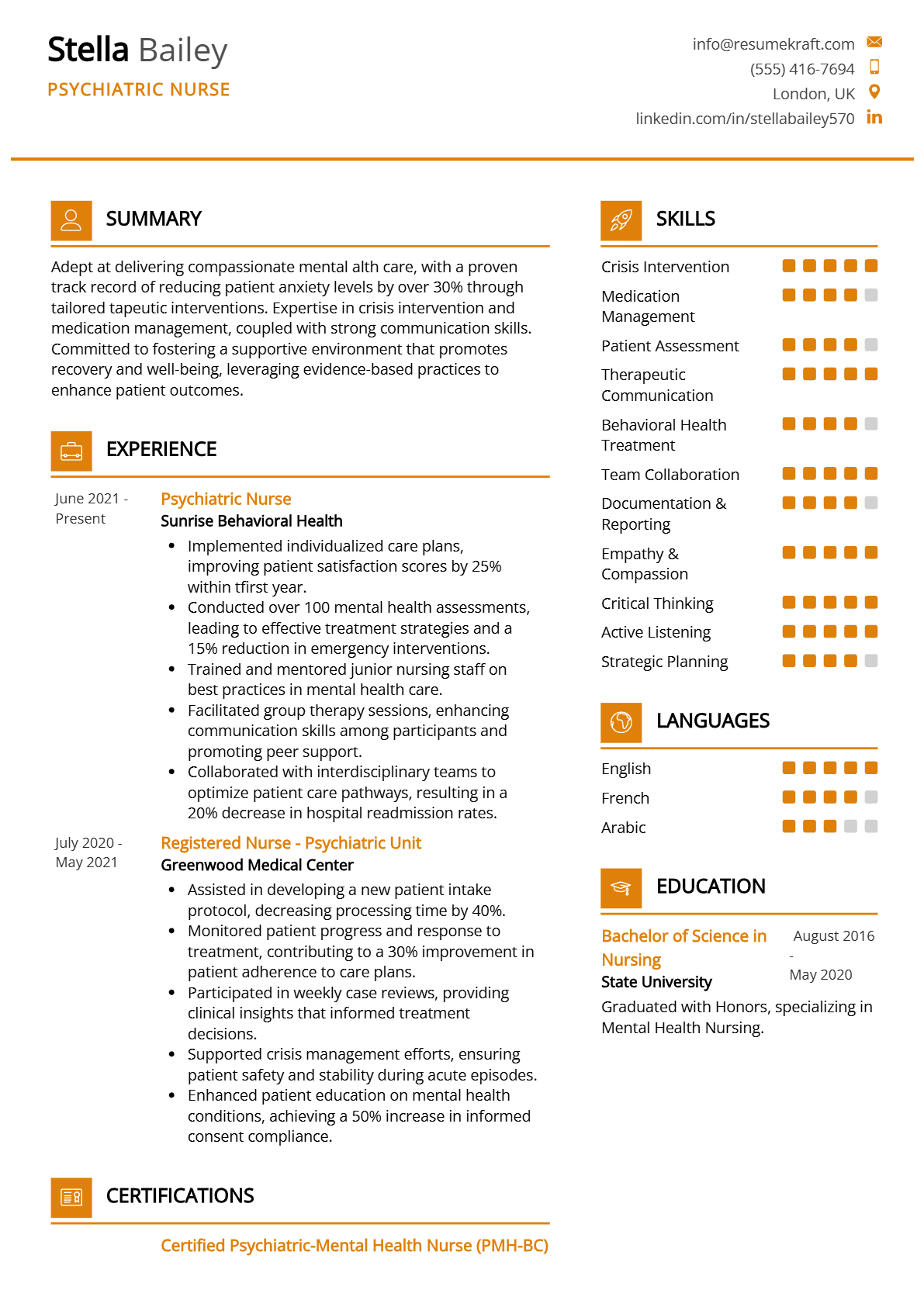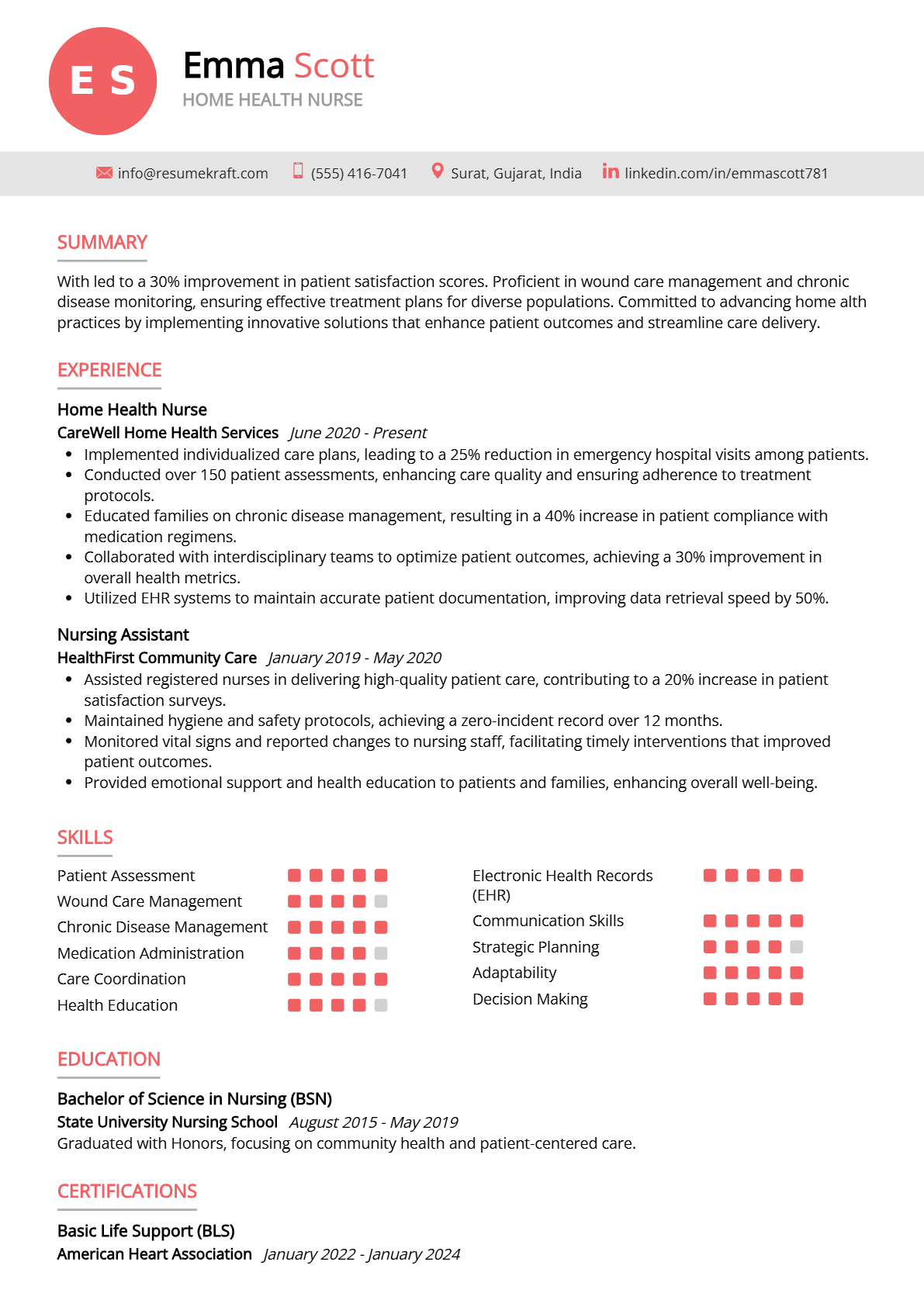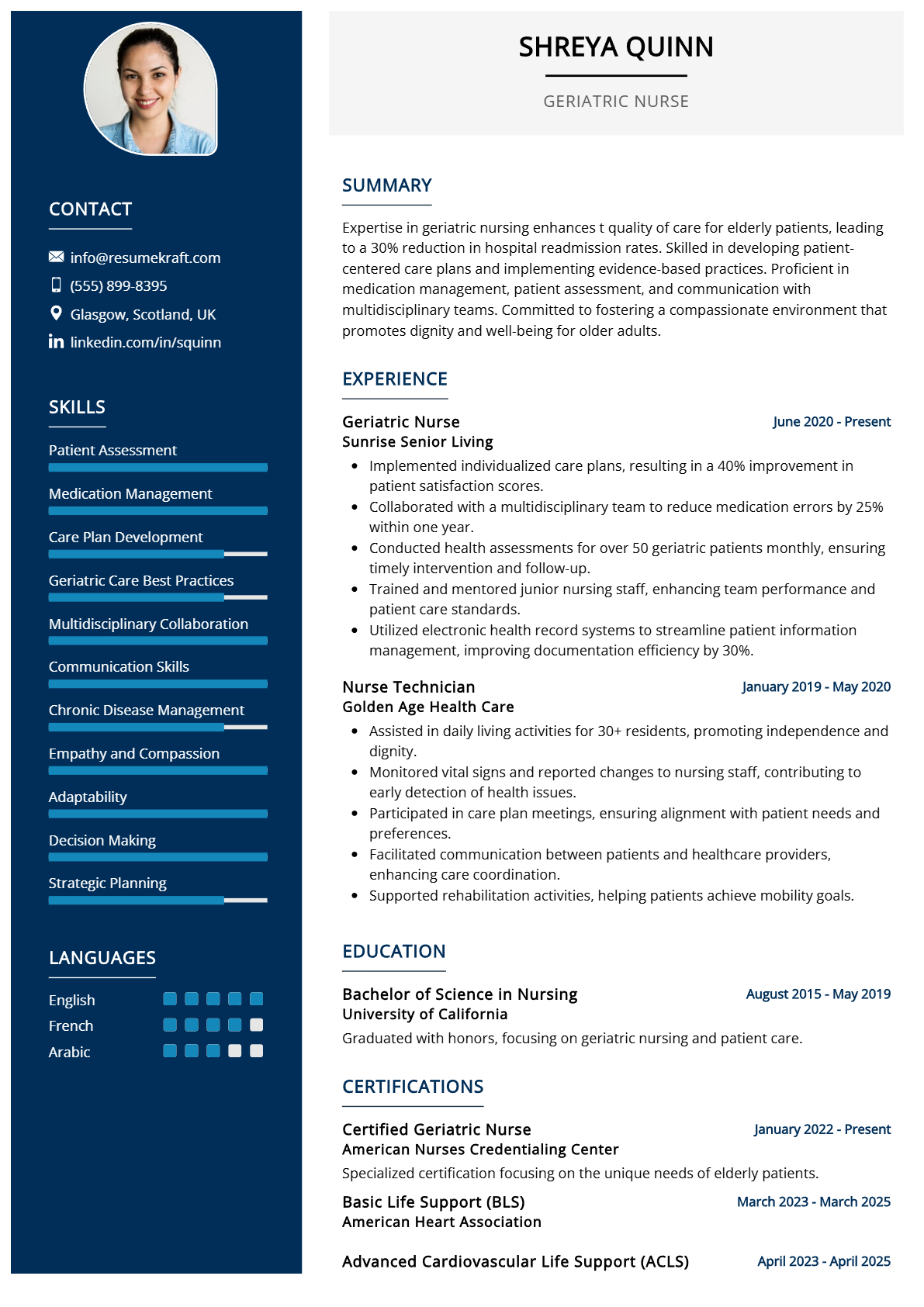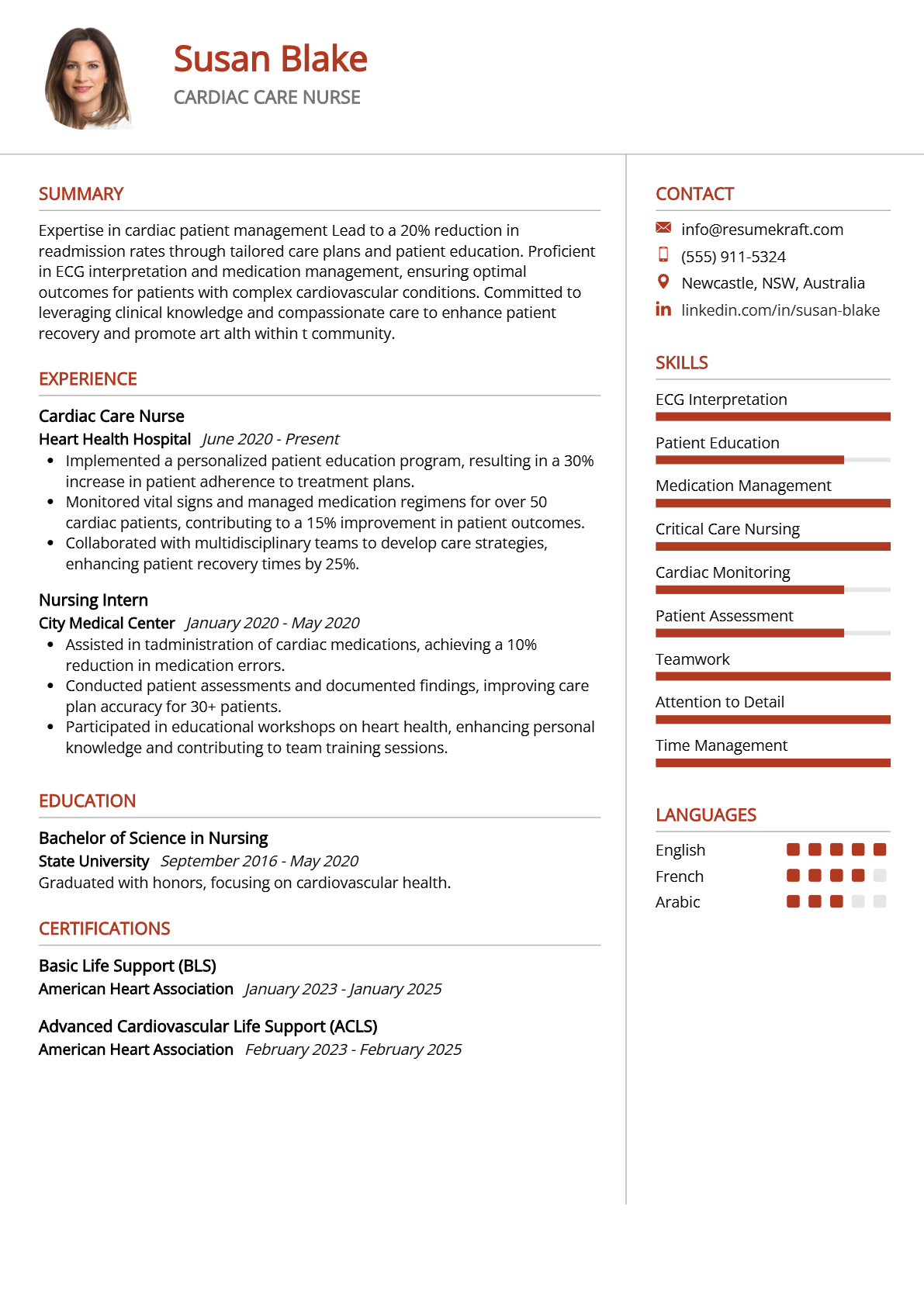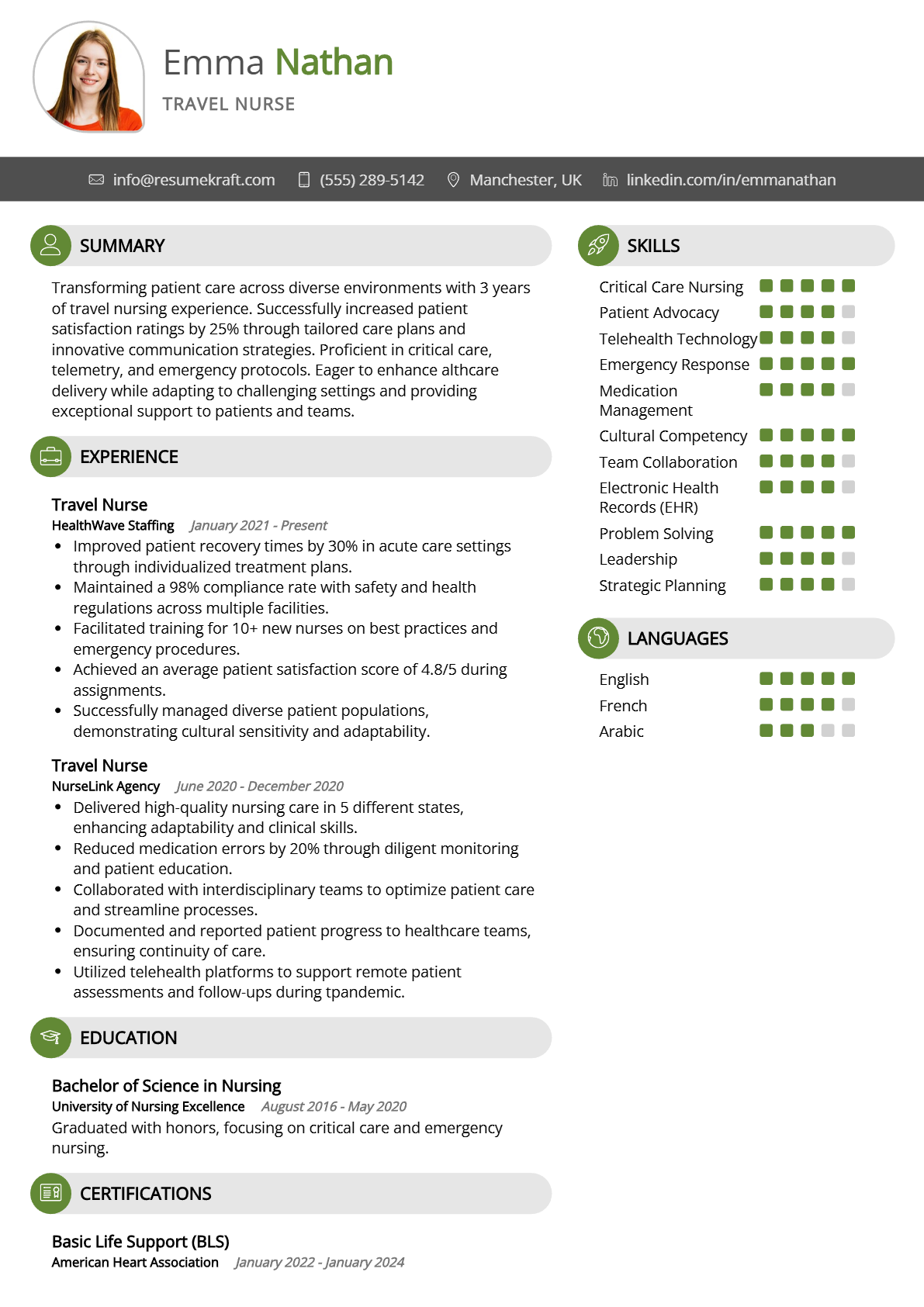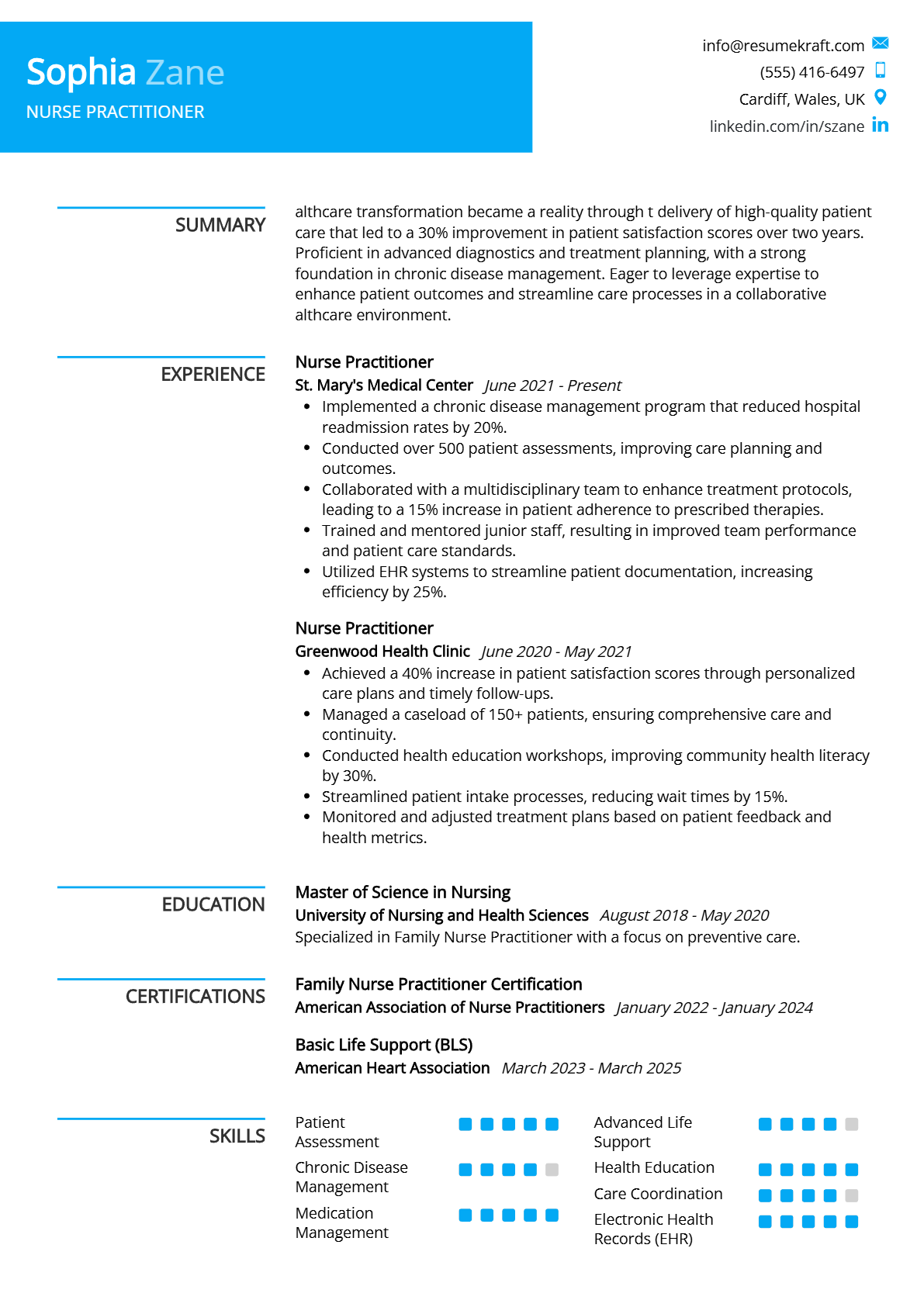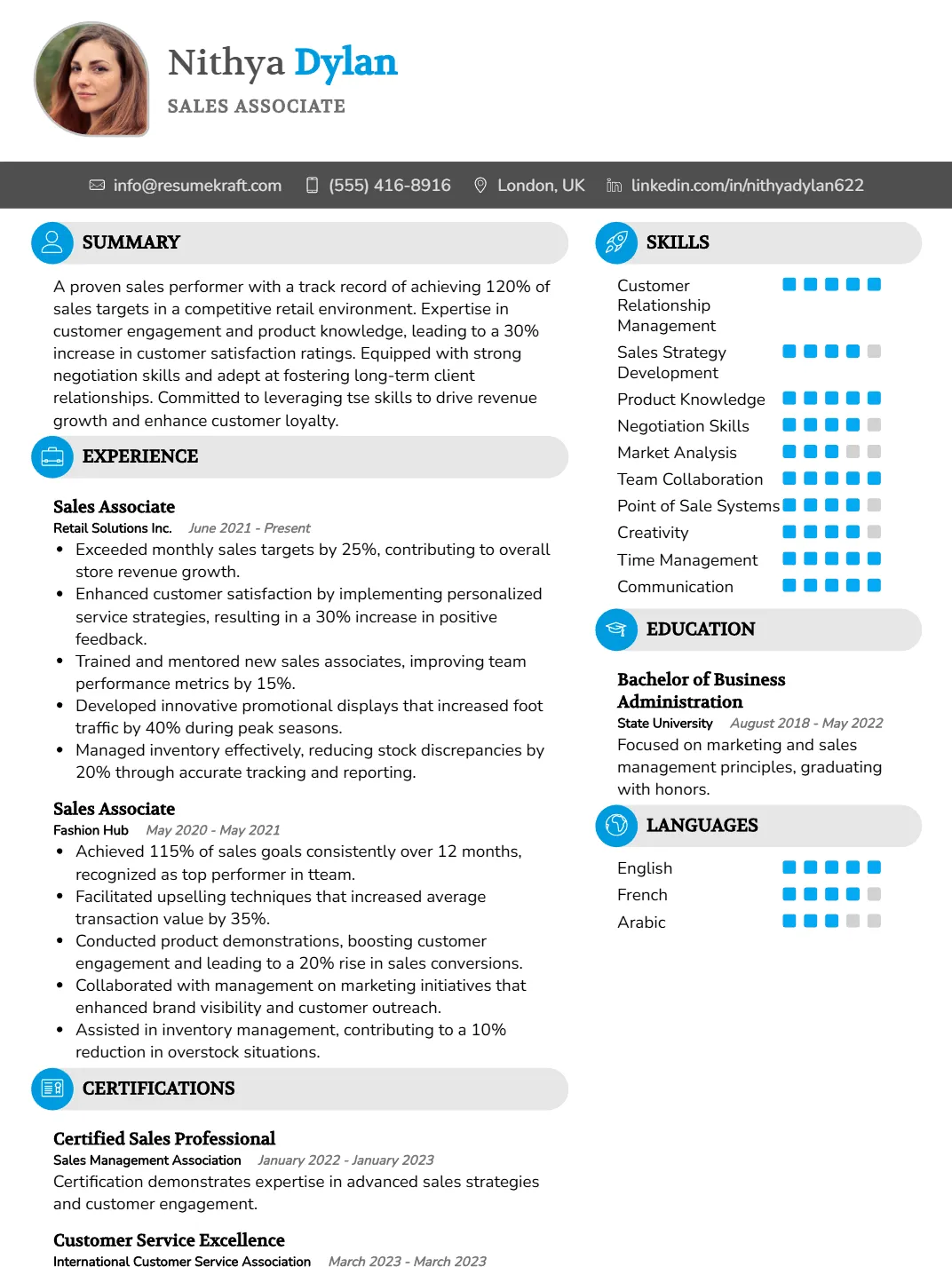
12 Sales Associate Resume Examples for 2025
The role of a Sales Associate is pivotal in driving business success and enhancing customer experience in today’s competitive market. Sales Associates are responsible for engaging with customers, understanding their needs, and providing tailored solutions that lead to sales. This profession not only requires strong interpersonal and communication skills but also a keen understanding of product knowledge and market trends. As consumer behavior evolves, the demand for skilled Sales Associates continues to grow, making it an essential role in various industries. This article will guide you on how to craft an impactful resume that highlights your strengths as a Sales Associate.
- Sales Associate resume examples
- How to format a Sales Associate resume
- How to write your Sales Associate resume experience
- How to list your hard skills and soft skills on your resume
- How to list your certifications and education on your resume
- How to write your Sales Associate resume summary or objective
- Additional sections for a Sales Associate resume
- Key takeaways for writing a professional Sales Associate resume
- Frequently Asked Questions
Sales Associate resume examples
Sales Associate resume examples serve as valuable tools for job seekers looking to tailor their applications for this competitive role. By reviewing these examples, candidates can gain insights into the essential skills, formats, and content that resonate with hiring managers. Understanding what constitutes an effective resume helps applicants highlight their relevant experience and achievements, ultimately increasing their chances of landing an interview and securing a position in sales.
Sales Associate Resume

Why This Resume Works
This resume effectively highlights the candidate’s relevant skills and extensive experience as a Sales Associate, showcasing expertise in Customer Relationship Management and Sales Strategy Development. Its clear structure and concise format enhance readability, appealing to hiring managers. The use of industry-specific keywords ensures ATS compatibility, increasing visibility during screenings. Additionally, the strategic presentation of achievements demonstrates a proven track record in driving sales and understanding market dynamics, making it an impactful choice for this Sales Associate position.
Mid-Career Sales Associate Resume
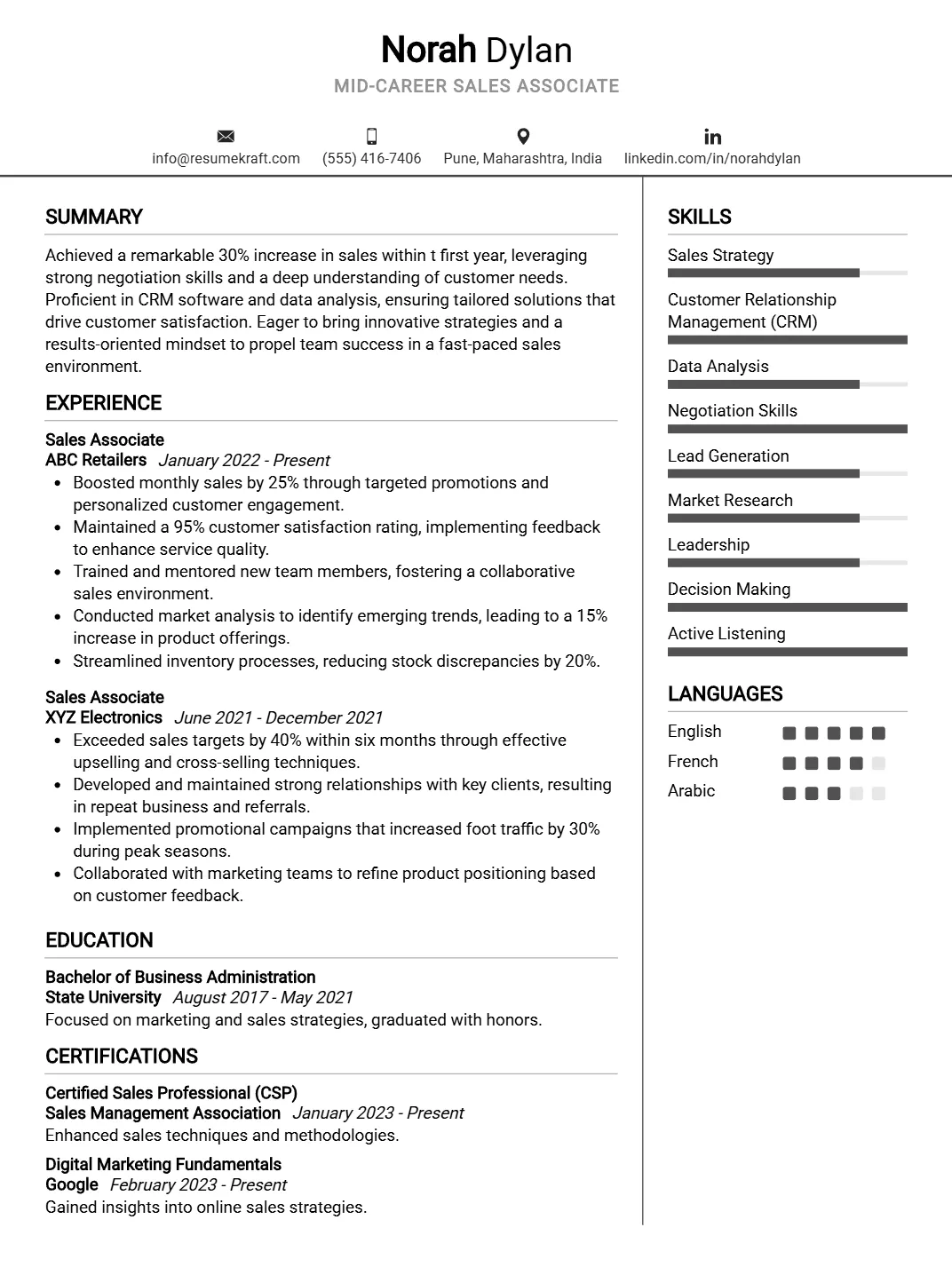
Why This Resume Works
This resume effectively positions the candidate for a Mid-Career Sales Associate role by highlighting key skills such as Sales Strategy and Customer Relationship Management, which are essential for driving sales growth. The clear format and structured layout enhance readability, ensuring crucial information stands out. It is ATS-compatible, utilizing relevant keywords that align with industry standards. Additionally, the strategic presentation of achievements related to lead generation and negotiation demonstrates the candidate’s ability to contribute meaningfully to sales goals, making it particularly compelling for hiring managers.
Experienced Sales Associate Resume
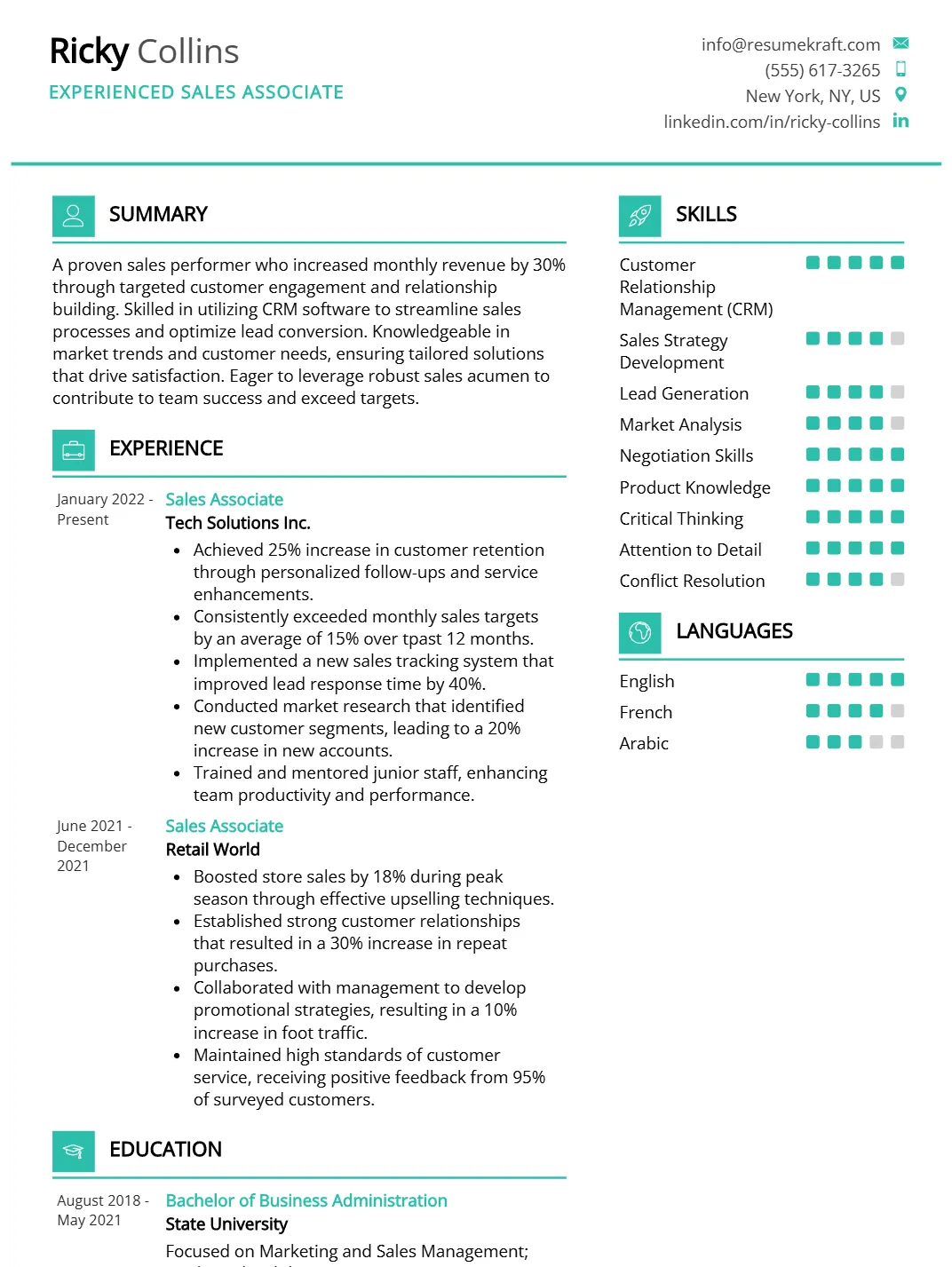
Why This Resume Works
This resume effectively showcases the candidate’s qualifications for an Experienced Sales Associate position by emphasizing key skills like CRM, sales strategy development, and negotiation. The structured format highlights relevant experience and achievements, making it easy for hiring managers to identify qualifications quickly. Additionally, it employs industry-specific keywords that enhance ATS compatibility, ensuring visibility in digital screenings. The strategic presentation of metrics-driven accomplishments demonstrates the candidate’s impact in previous roles, reinforcing their suitability for driving sales success in a competitive market.
Retail Sales Associate Resume
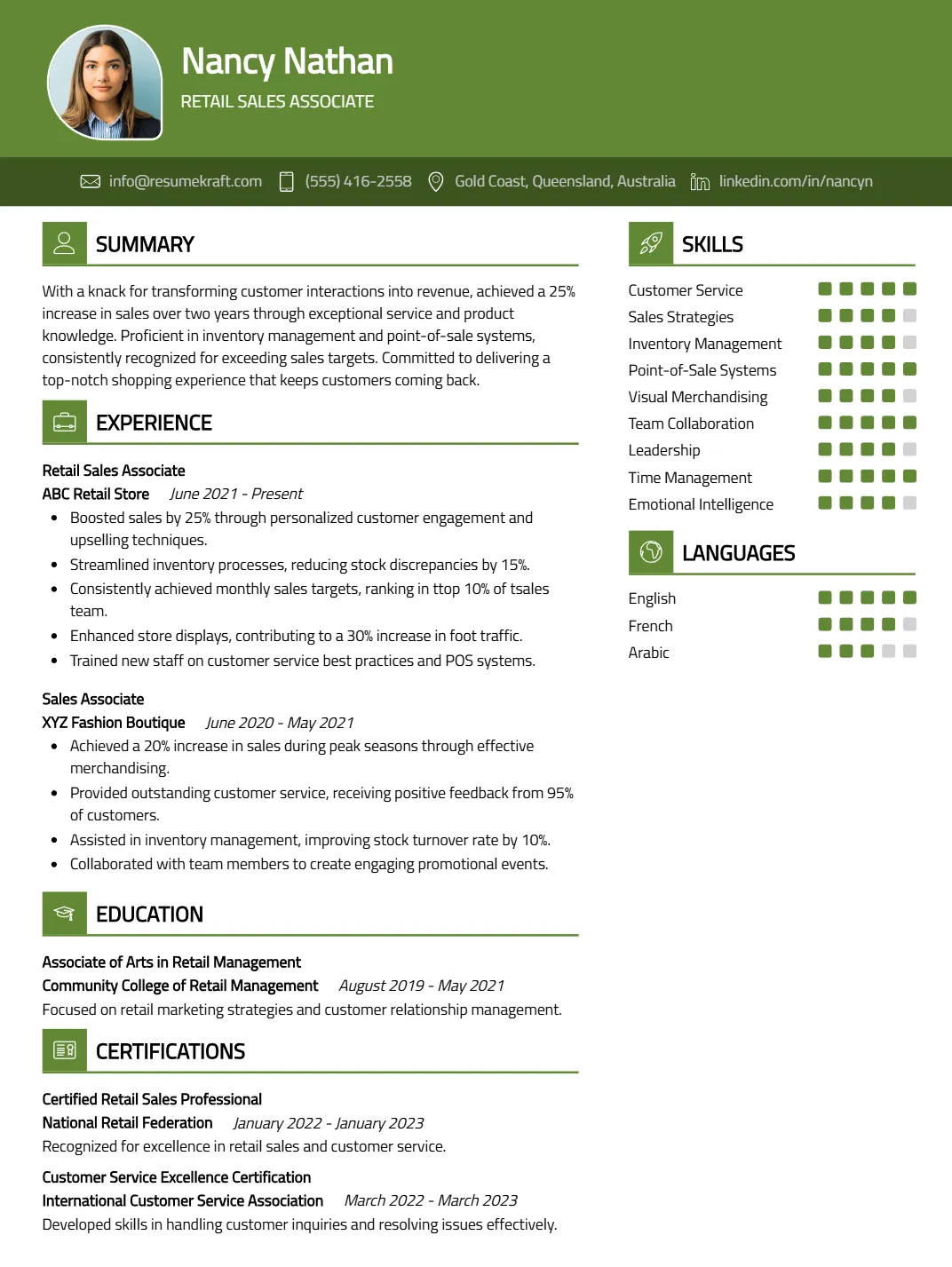
Why This Resume Works
This resume effectively highlights the candidate’s relevant skills and extensive experience, specifically tailored for the Retail Sales Associate position. By emphasizing key competencies like customer service and sales strategies, it aligns with industry demands. The clear format and structured layout enhance readability, making it easy for hiring managers to assess qualifications quickly. Additionally, the inclusion of industry-specific keywords ensures ATS compatibility, while strategically presented achievements demonstrate a proven track record in driving sales and managing inventory—crucial elements for success in retail.
Senior Sales Associate Resume
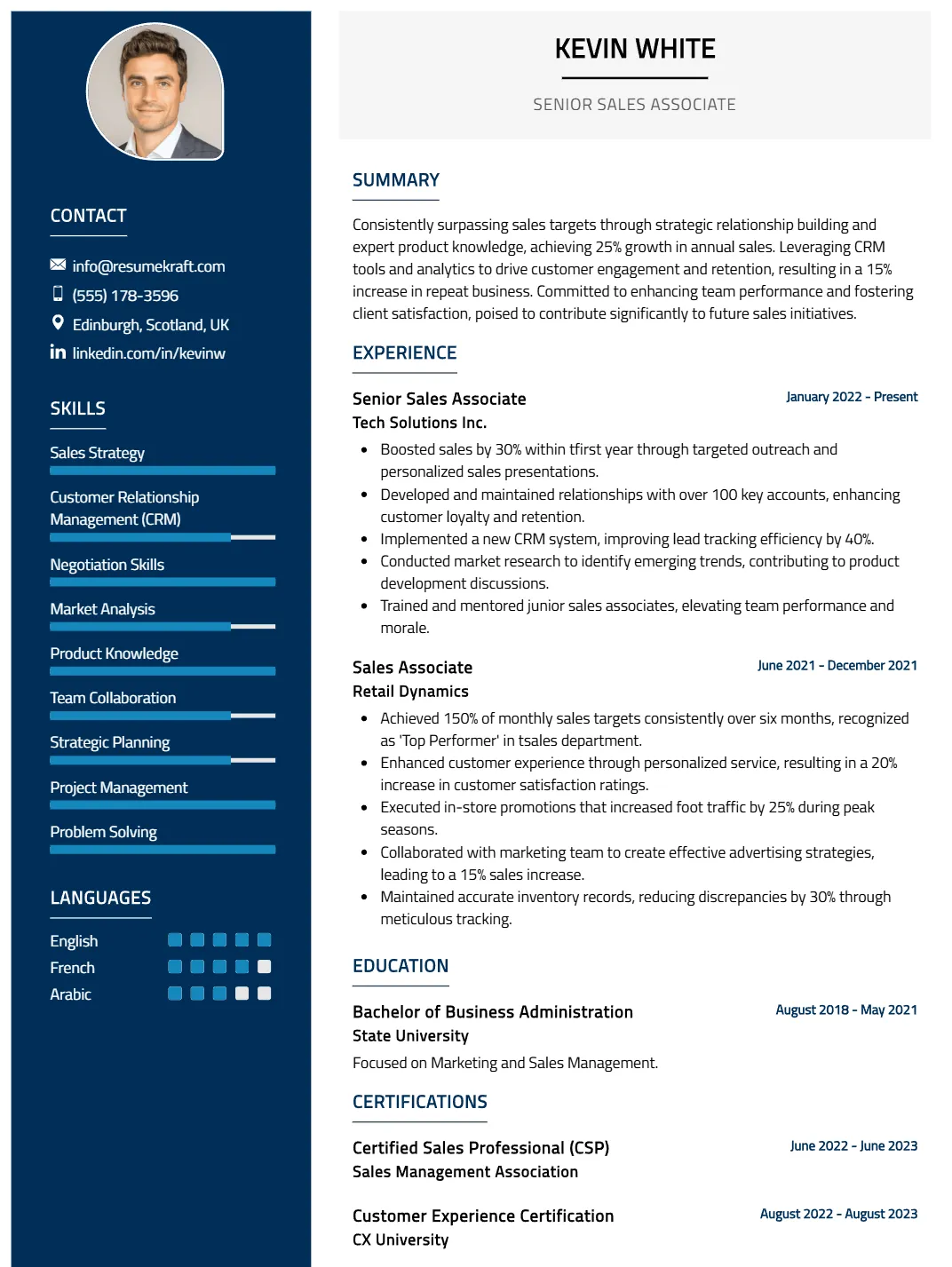
Why This Resume Works
This resume effectively highlights the candidate’s suitability for the Senior Sales Associate position through a targeted presentation of key skills such as Sales Strategy and CRM, essential for driving sales results. The structured format ensures clarity, making it easy for hiring managers to navigate relevant experience. Its ATS-friendly design incorporates industry-specific keywords, enhancing visibility in applicant tracking systems. Additionally, strategic emphasis on achievements showcases quantifiable success in previous roles, aligning perfectly with the expectations of this competitive field.
Customer Service Representative Resume
Why This Resume Works
This resume effectively highlights the candidate’s relevant experience as a Customer Service Representative and Customer Service Associate over five years, showcasing essential skills like CRM, conflict resolution, and effective communication. Its clear, structured format enhances readability, making it easy for hiring managers to identify key qualifications. Additionally, the use of industry-specific keywords ensures ATS compatibility, increasing visibility in applicant tracking systems. The strategic presentation of achievements emphasizes problem-solving and time management capabilities, making this resume stand out for the customer service role.
Luxury Retail Sales Associate Resume
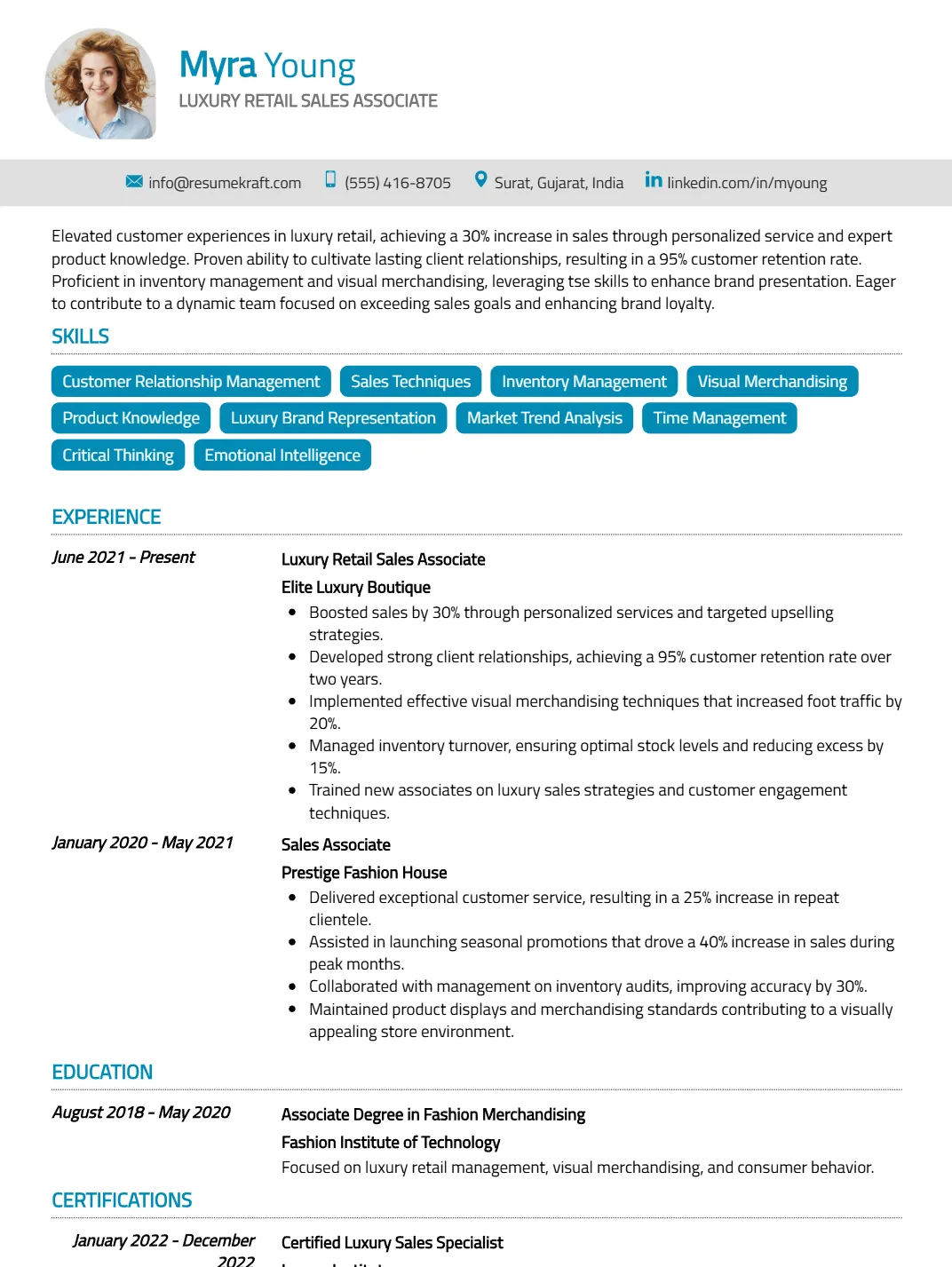
Why This Resume Works
This resume effectively positions the candidate for a Luxury Retail Sales Associate role by highlighting key skills such as Customer Relationship Management and Visual Merchandising, essential for enhancing customer experiences. The structured format clearly outlines relevant experience, showcasing approximately five years in luxury retail, which builds credibility. Its alignment with ATS standards ensures visibility to hiring managers. Furthermore, strategic presentation of achievements related to sales performance and inventory management directly addresses industry expectations, making this resume compelling for luxury retail opportunities.
E-commerce Sales Associate Resume

Why This Resume Works
This resume effectively highlights the candidate’s qualifications for the E-commerce Sales Associate position by showcasing relevant skills such as Sales Strategy and Digital Marketing, essential for driving online sales. The clear format and structured layout enhance readability, making it easy for hiring managers to identify key information. It is tailored for ATS compatibility through the use of industry-specific keywords. Additionally, strategic presentation of achievements in data analysis and customer relationship management underscores the candidate’s ability to boost sales and foster client loyalty in a competitive.
Technology Sales Associate Resume
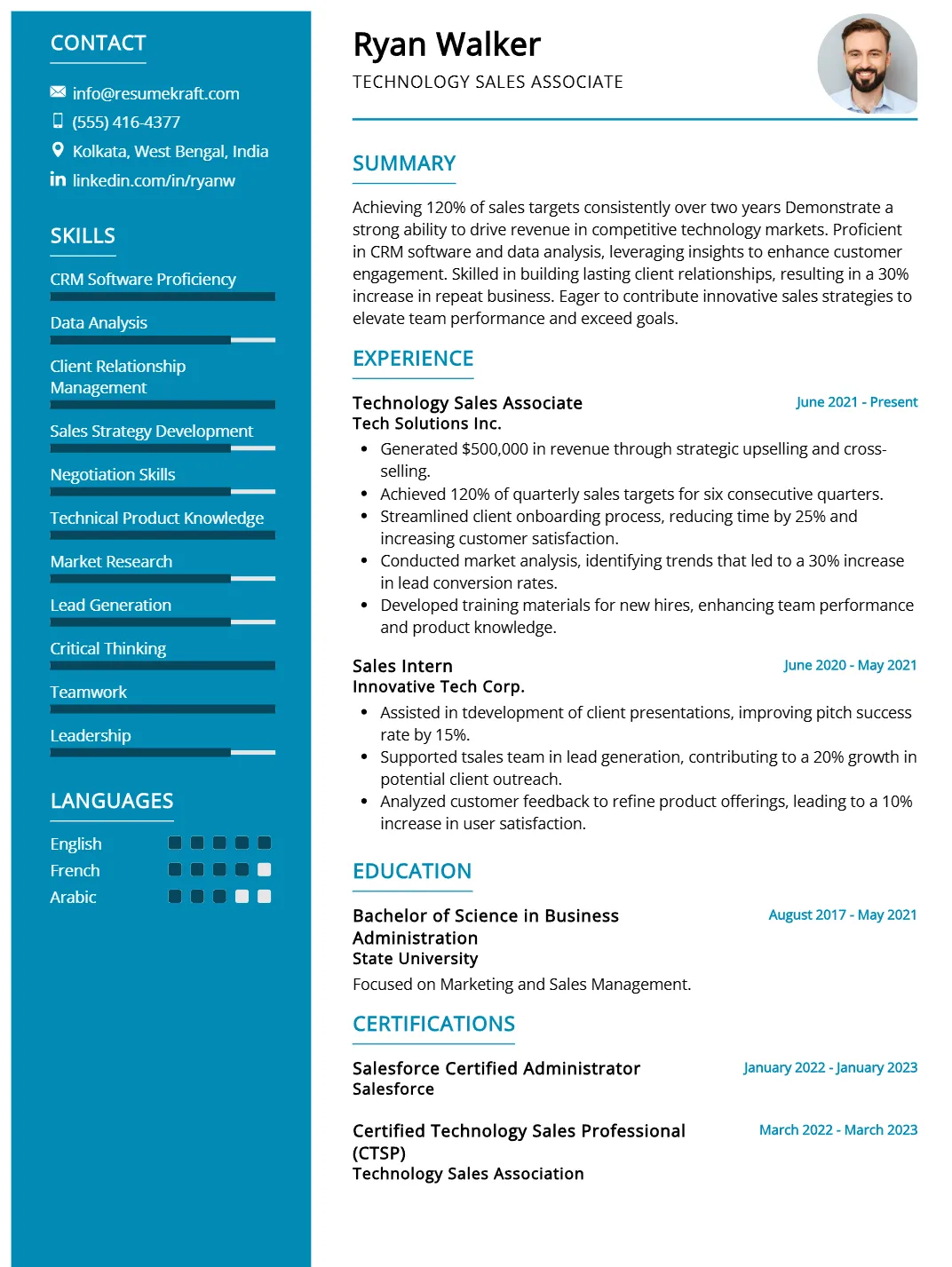
Why This Resume Works
This resume effectively showcases the candidate’s qualifications for a Technology Sales Associate position by emphasizing key skills such as CRM proficiency and negotiation abilities, which are essential in tech sales. The structured format highlights relevant experience, including five years in related roles, making it easy for hiring managers to assess fit. Additionally, the use of industry-specific keywords enhances ATS compatibility, ensuring visibility during screenings. Strategic presentation of achievements underscores the candidate’s impact on sales performance, aligning perfectly with industry expectations.
Automotive Sales Associate Resume
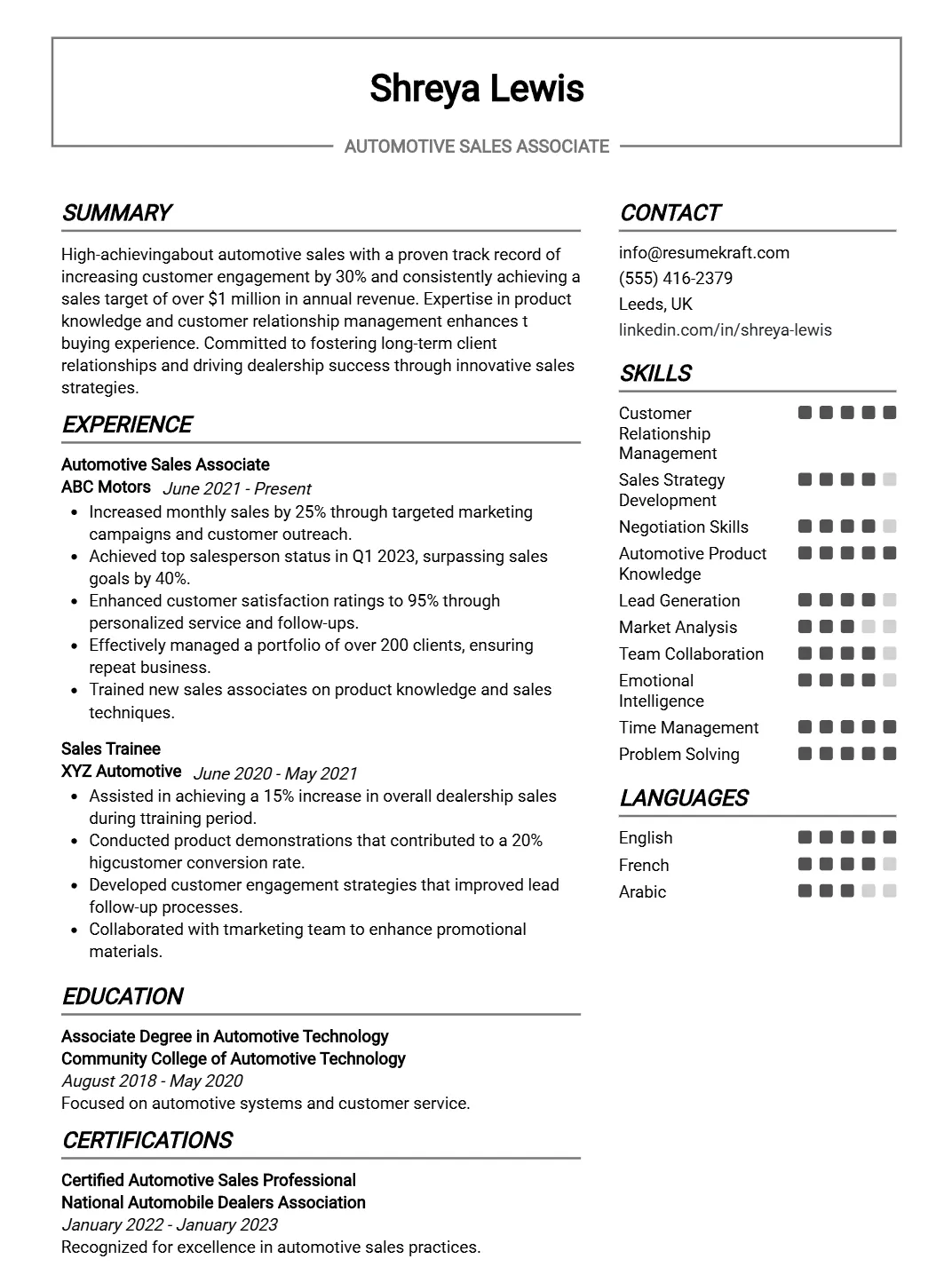
Why This Resume Works
This resume effectively showcases the candidate’s relevant skills and experience for the Automotive Sales Associate position. Highlighting customer relationship management and negotiation skills aligns with the demands of sales roles in the automotive industry. The structured format emphasizes key competencies, ensuring clarity for hiring managers. Additionally, it incorporates industry-specific keywords, enhancing ATS compatibility. By strategically presenting achievements related to lead generation and sales strategy development, this resume demonstrates the candidate’s potential to drive sales and foster customer loyalty in a competitive market.se This Template
Phone Sales Associate Resume
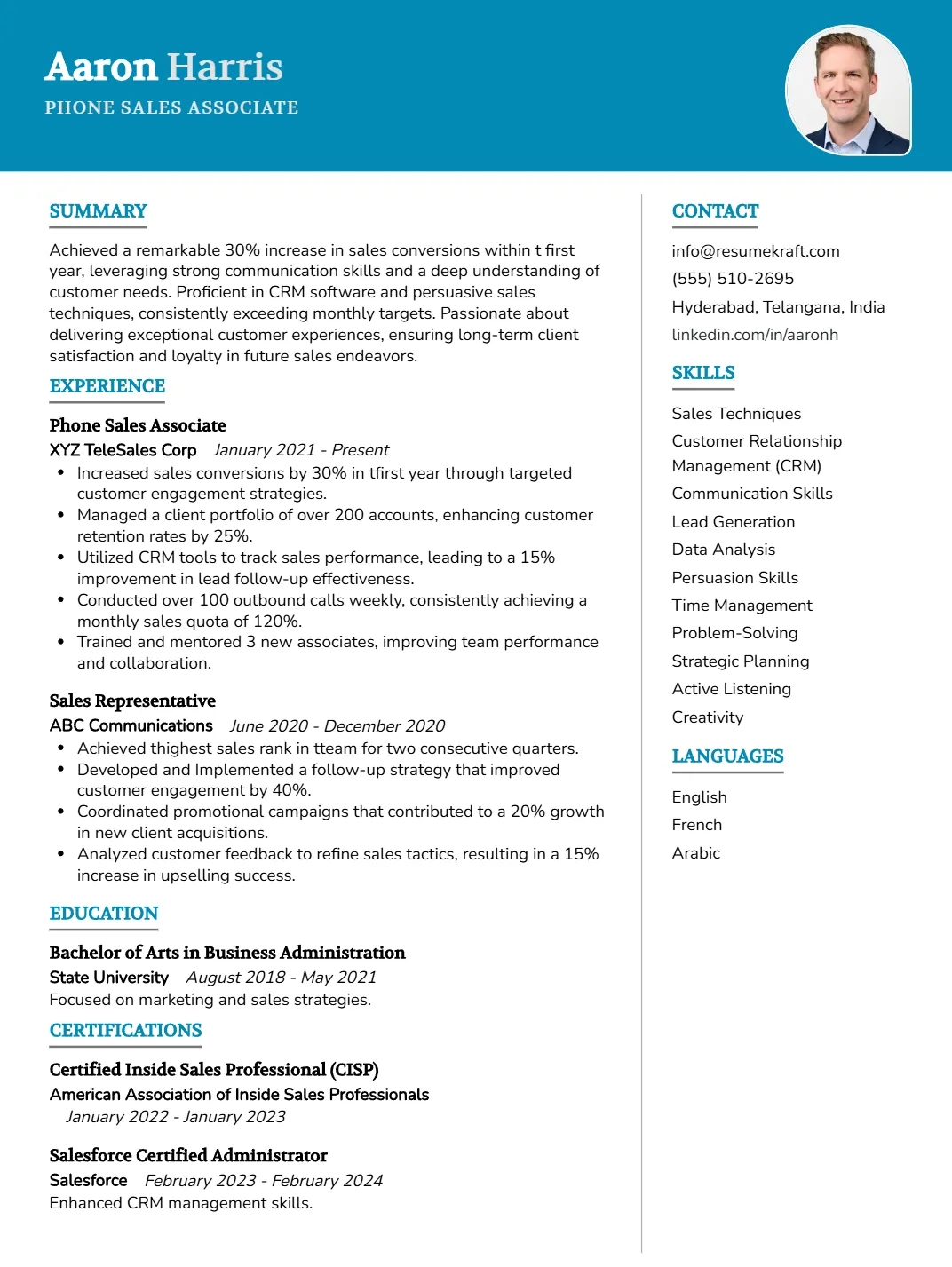
Why This Resume Works
This resume effectively highlights key skills such as Sales Techniques and CRM, directly aligning with the Phone Sales Associate position. With four years of relevant experience, it demonstrates a solid background in phone sales and customer interaction. The structured format emphasizes achievements that matter in driving sales, showcasing lead generation and data analysis capabilities. Additionally, the use of industry-specific keywords ensures ATS compatibility, increasing visibility to recruiters. Overall, it presents a compelling case for the candidate’s fit in the phone sales domain.
Fashion Sales Associate Resume
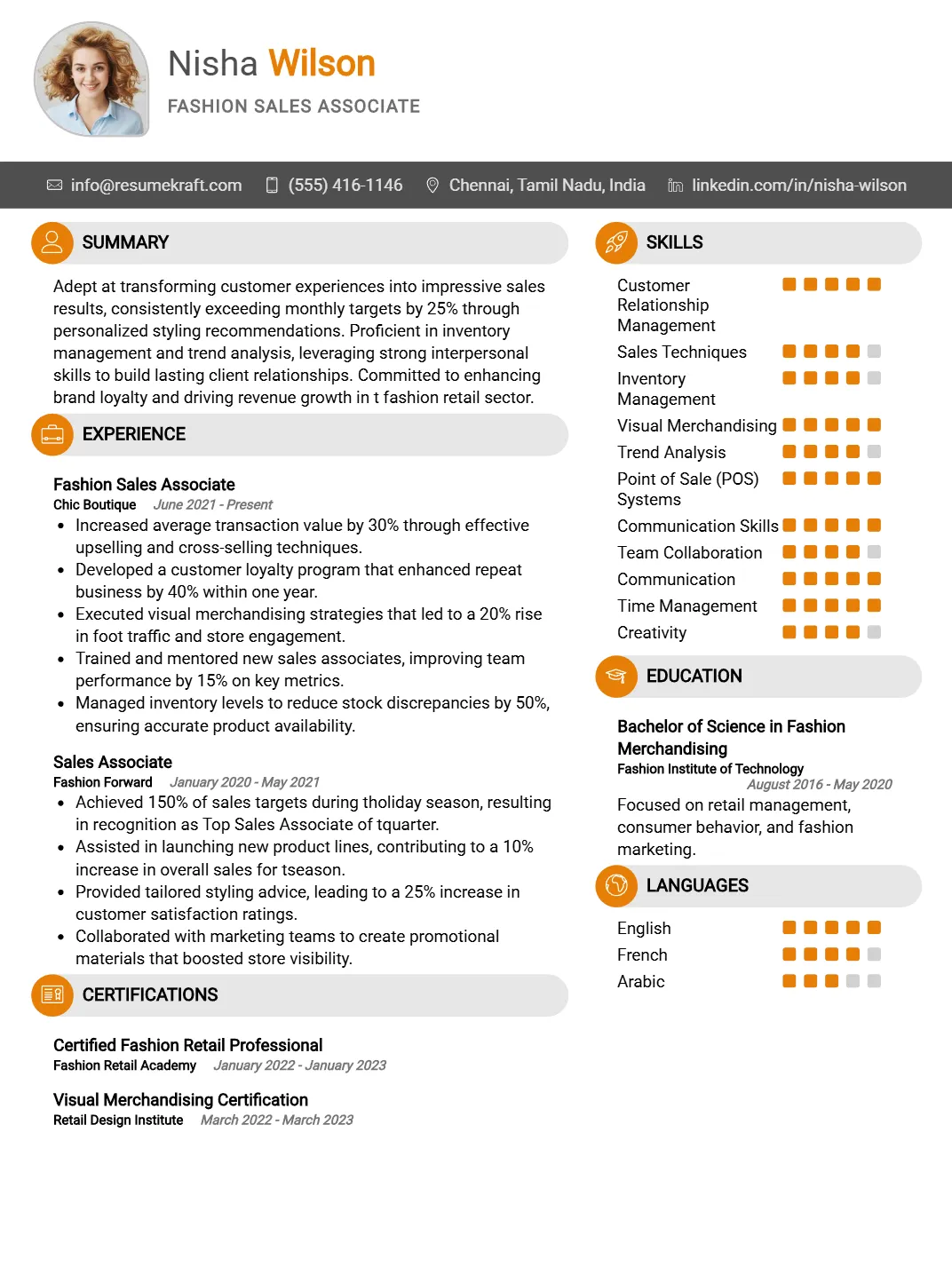
Why This Resume Works
This resume effectively positions the candidate for a Fashion Sales Associate role through its emphasis on relevant skills such as Customer Relationship Management and Trend Analysis, which are vital in retail fashion. The structured format highlights five years of experience, showcasing a clear progression in sales roles. Its compatibility with ATS is ensured by incorporating industry-specific keywords. Additionally, the strategic presentation of achievements related to sales growth and visual merchandising further demonstrates the candidate’s ability to drive results in this competitive field.
How to format a Sales Associate resume
Proper formatting is crucial for a Sales Associate resume, as it enhances readability and highlights your skills effectively. A well-structured resume format can make a significant difference in capturing the attention of hiring managers.
- Use a clean, professional font such as Arial or Calibri, sized between 10-12 points. This ensures readability and maintains a polished appearance throughout your resume.
- Organize your resume into clear sections: Contact Information, Objective, Skills, Experience, and Education. This structure helps employers quickly locate the information they need.
- Utilize bullet points to break down job responsibilities and achievements. This format allows hiring managers to scan your accomplishments easily and understand your impact at previous positions.
- Limit your resume to one page, particularly if you have less than 10 years of experience. A concise format helps maintain focus on your most relevant qualifications without overwhelming the reader.
- Include white space to enhance visual appeal and readability. Proper spacing between sections and bullet points can make your resume appear less cluttered and more inviting to review.
How to write your Sales Associate resume experience
Effectively presenting work experience on a Sales Associate resume is crucial, as this section showcases your relevant skills and achievements to potential employers. Hiring managers look for specific accomplishments, responsibilities, and metrics that demonstrate your ability to drive sales, engage customers, and contribute to team success.
Highlighting your experience with quantifiable results not only sets you apart but also establishes your credibility in a competitive job market. By articulating your past roles with concrete examples, you provide evidence of your capacity to meet and exceed sales targets.
Worked as a Sales Associate and helped customers. Responsible for sales and keeping the store clean.
Achieved 120% of sales targets by effectively upselling products and enhancing customer experience, resulting in a 30% increase in repeat customers.
How to list your hard skills and soft skills on your resume
In the competitive landscape of retail, both hard and soft skills are crucial for a Sales Associate resume. Hard skills demonstrate the technical knowledge and competencies required to perform specific tasks, while soft skills illustrate the interpersonal abilities that facilitate effective communication and relationship-building with customers. Together, these skill sets showcase a candidate’s well-rounded capabilities, making them more appealing to potential employers.
Hard Skills:
- Product Knowledge: Understanding features and benefits of products to assist customers effectively.
- Point of Sale (POS) Systems: Proficiency in using register systems for transactions and inventory management.
- Inventory Management: Knowledge of stock control practices to ensure product availability.
- Sales Techniques: Familiarity with various selling strategies to increase sales and customer satisfaction.
- Visual Merchandising: Ability to design attractive product displays to enhance store appeal.
- Customer Relationship Management (CRM) Software: Experience with tools to track customer interactions and sales.
- Market Research: Skills in analyzing customer data and trends to improve sales strategies.
- Basic Math Skills: Competency in calculations for pricing, discounts, and transactions.
- Order Processing: Knowledge of handling customer orders efficiently from start to finish.
- Product Returns Handling: Understanding the procedures for managing product returns and exchanges.
- Sales Reporting: Ability to compile and analyze sales data for performance evaluation.
- Promotions Knowledge: Familiarity with current promotions and discounts to inform customers.
- Technical Proficiency: Skills in using digital tools and software relevant to sales operations.
- Networking: Ability to build connections within the industry for potential sales opportunities.
- Customer Feedback Analysis: Skills in gathering and interpreting customer feedback to enhance service quality.
Soft Skills:
- Communication: Strong verbal and written skills to engage with customers effectively.
- Empathy: Ability to understand and relate to customer needs and emotions.
- Problem-Solving: Capable of addressing customer issues and finding effective solutions.
- Teamwork: Ability to collaborate with colleagues to achieve store goals.
- Adaptability: Flexibility to adjust to changing sales environments and customer demands.
- Time Management: Skills in prioritizing tasks to maximize productivity during busy hours.
- Persuasion: Ability to convince customers to make purchases through compelling arguments.
- Conflict Resolution: Skills in handling disputes or complaints with professionalism and tact.
- Positive Attitude: Maintaining a cheerful and enthusiastic demeanor to enhance customer experience.
- Attention to Detail: Careful focus on product presentation and customer interactions.
- Active Listening: Skills in truly hearing and understanding customer inquiries and feedback.
- Negotiation: Ability to find mutually agreeable solutions during sales discussions.
- Self-Motivation: Initiative to pursue sales goals independently without constant supervision.
- Customer Service Orientation: A strong focus on providing excellent service to ensure satisfaction.
- Interpersonal Skills: Ability to build rapport and trust with customers and team members.
How to list your certifications and education on your resume
When presenting certifications and education on a Sales Associate resume, it is important to highlight relevant qualifications that demonstrate your ability to excel in sales. Include any certifications related to sales techniques, customer service, or specific products you’ve sold. Additionally, list your highest educational attainment, such as a high school diploma or a degree, especially if it pertains to business or marketing.
Make sure to format this section clearly and concisely, using bullet points or a simple list to enhance readability. Include the institution’s name, the degree or certification earned, and the date of completion. This allows potential employers to quickly assess your qualifications and relevant training.
Graduated from school. I have some certifications but I can’t remember the details.
Associate Degree in Business Administration, XYZ Community College, May 2022. Certified Sales Professional (CSP), National Association of Sales Professionals, June 2023.
How to write your Sales Associate resume summary or objective
A strong resume summary or objective is crucial for a Sales Associate position as it provides a quick snapshot of your qualifications and career goals. A summary is beneficial for experienced candidates who want to highlight their key achievements and skills, while an objective is ideal for entry-level applicants aiming to convey their enthusiasm and career aspirations in the sales industry.
I am looking for a sales job where I can use my skills. I have some experience and want to learn more about sales.
Dedicated Sales Associate with over 3 years of experience in retail sales, consistently exceeding sales targets by 20%. Seeking to leverage strong communication skills and customer-centric approach to enhance client relationships at XYZ Company.
Additional sections for a Sales Associate resume
Including additional sections in your Sales Associate resume can significantly enhance your candidacy by showcasing relevant skills and experiences that may not fit within the standard format. These sections can provide deeper insights into your qualifications and help you stand out in a competitive job market.
- Certifications: Highlighting certifications such as Sales Training or Customer Service Excellence can demonstrate your commitment to professional development and your ability to handle various sales scenarios effectively.
- Achievements: A dedicated achievements section allows you to quantify your success, such as sales targets met or exceeded, which provides tangible evidence of your effectiveness in driving revenue.
- Volunteer Work: Including volunteer experiences, especially in customer-facing roles, can illustrate your interpersonal skills and dedication to service, which are essential traits for a successful Sales Associate.
- Technical Skills: Listing relevant technical skills, such as proficiency in Point of Sale (POS) systems or CRM software, shows your ability to adapt to the technological aspects of sales operations.
- Languages: If you are multilingual, mentioning additional languages can be a significant asset, especially in diverse retail environments, as it enables you to connect with a broader customer base.
Key takeaways for writing a professional Sales Associate resume
- Highlight your sales achievements by quantifying results, such as meeting or exceeding sales targets, to demonstrate your impact in previous roles.
- Use relevant resume templates that align with retail or sales formats to create a professional and visually appealing presentation of your skills.
- Showcase strong interpersonal skills and customer service experience, as these are critical for success in a sales associate position.
- Incorporate keywords from the job description to optimize your resume for applicant tracking systems and increase your chances of being noticed.
- Consider utilizing an ai resume builder to streamline the writing process and ensure your resume is polished and tailored to the sales industry.
Frequently Asked Questions
How long should my Sales Associate resume be?
Your Sales Associate resume should ideally be one page long, particularly if you have less than 10 years of experience. This length allows you to succinctly present your skills, accomplishments, and relevant experience without overwhelming hiring managers. If you have substantial experience or achievements, you may extend it to two pages, but ensure that every detail is pertinent to the role you’re applying for, emphasizing clarity and conciseness.
What is the best format for a Sales Associate resume?
The best format for a Sales Associate resume is the chronological format, which emphasizes your work experience in reverse chronological order. This layout allows hiring managers to see your career progression and relevant experience at a glance. Combine this with a clean, professional design that highlights your skills, achievements, and key responsibilities. Include sections for your contact information, a summary statement, work experience, education, and relevant skills to create a comprehensive overview.
What should I highlight on my Sales Associate resume to stand out?
To stand out, highlight your sales achievements, customer service skills, and any relevant certifications. Include quantifiable metrics, such as exceeding sales targets, improving customer satisfaction ratings, or successfully managing inventory. Additionally, showcase your interpersonal skills, adaptability, and teamwork abilities, as these are critical in a sales environment. A summary statement at the top that emphasizes your unique strengths and experiences can also capture attention and set the tone for your resume.
What are some ways to quantify my experience on my Sales Associate resume?
Quantifying your experience can significantly enhance your resume’s impact. Use specific numbers to illustrate your accomplishments, such as “increased sales by 25% over six months” or “managed a customer database of over 1,000 clients.” You can also mention the average transaction value you handled, the number of customers served daily, or the percentage of customer retention achieved. These metrics provide concrete evidence of your contributions and demonstrate your effectiveness as a Sales Associate.


